
Chipmunk WZ865 – History and restoration
A lifetime in the sky
Chipmunk WZ865 was built for the Royal Air Force and has the manufacturer’s serial number C1-0895. After leaving the factory in 1953 it served at RAF Cranwell and formed part of Queen Elizabeth’s review of the RAF later that year. WZ865 spent a couple of years at RAF Laarbruch in Germany, before moving to Scotland to join Glasgow University Air Squadron (GUAS). The squadron’s purpose was to give university students a taste of RAF flying while studying, and the unit still operates today.
In 1962, WZ865 formed part of GUAS’s aerobatic display pair. At about that time it was also flown by well-known RAF instructor and author Mike Brooke, appearing on the rear cover of his book “Follow me through.”
WZ865 left the RAF in 1975, one of the first aircraft to be sold as the force was downsized towards the end of the cold war. This meant it had relatively low airframe hours compared to those sold later. Its buyer operated it in the USA until 2011, when it was sold to an Australian owner who stored it unassembled and unflown.
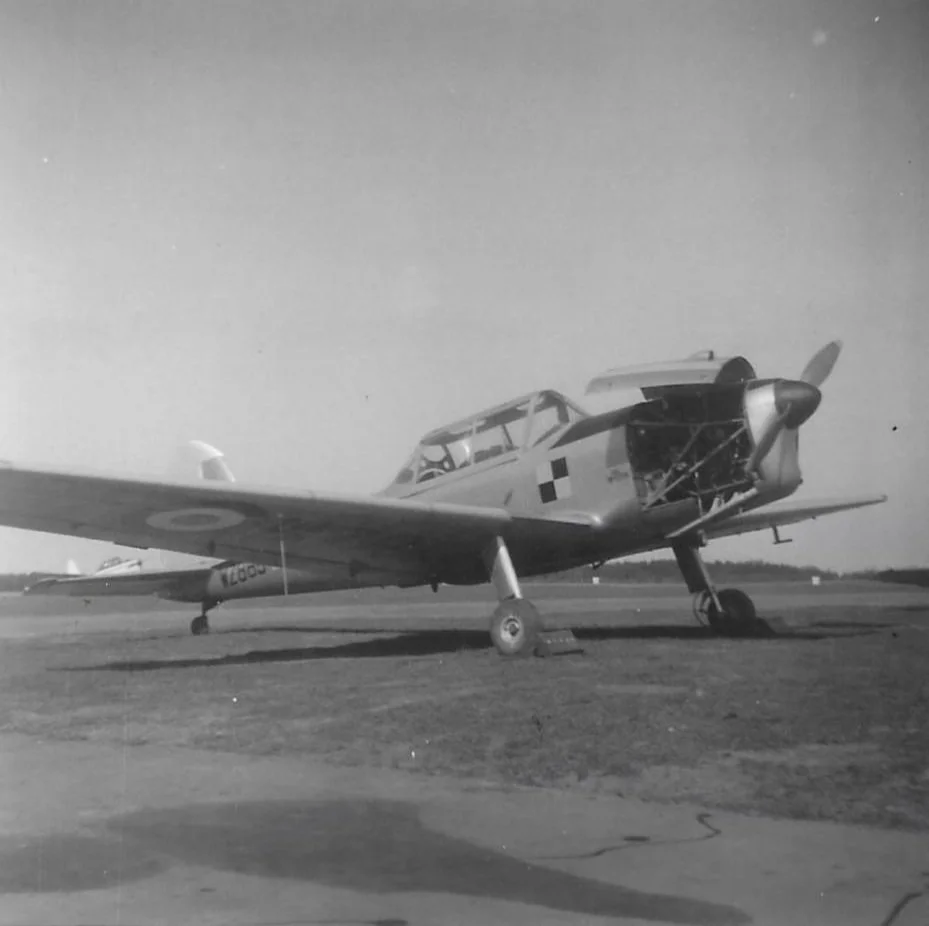
Chipmunk WZ865 at Glasgow University Air Squadron (GUAS).
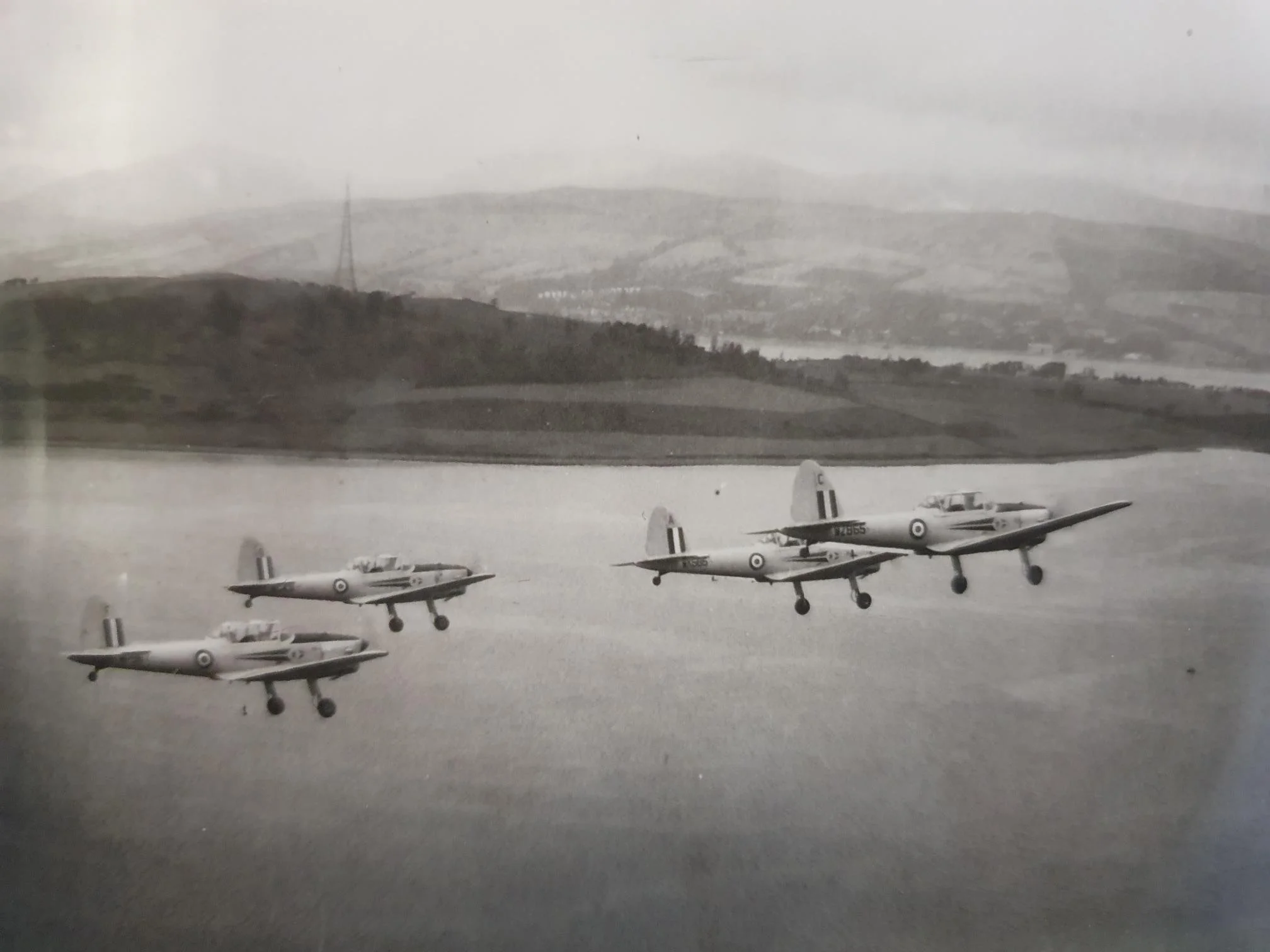
Chipmunk WZ865 and GUAS sister aircraft in formation.
Chipmunk WZ865 history in pictures
Do you have a photo from WZ865’s past not shown here? Email us via the contact page and receive a free Chipmunk 65 gift when we publish it.

Chipmunk WZ865 at RAF Odiham for the Queen's review, around 15 July 1953.

A Chipmunk (not WZ865) as operated by a station flight in RAF Germany. WZ865 was at RAF Laarbruch from 1956 to 1959.

Chipmunk WZ865 GUAS orange and silver with flaps in about 1960. Other than the flaps, this is the scheme worn today.

WZ865 in silver and orange. The fuselage chequerboard was yellow and black.

WZ865 in formation near Glasgow. This photo appears to show the aircraft in the silver and dayglo orange scheme it's wearing today.
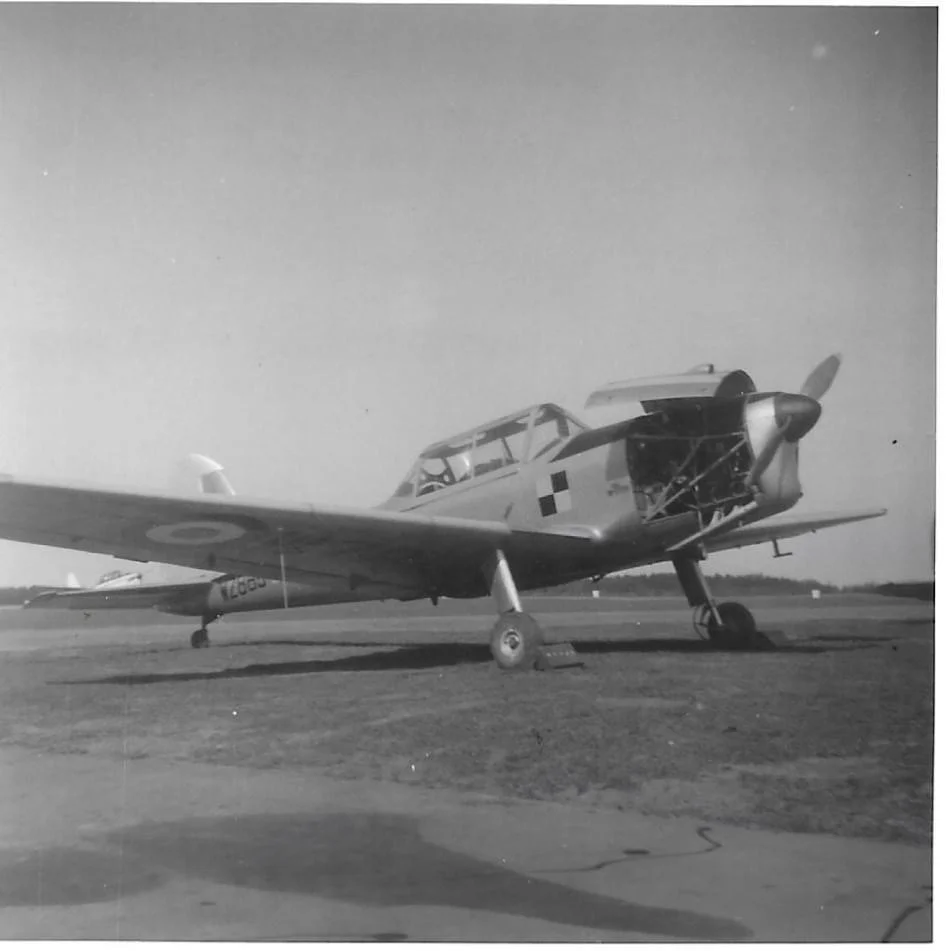
WZ865 in its Glasgow days. Wide opening cowls make for easy engine access.

Chipmunk WZ865 at Glasgow UAS in 1966.

Chipmunk WZ865 in the hangar at Scone, Scotland.
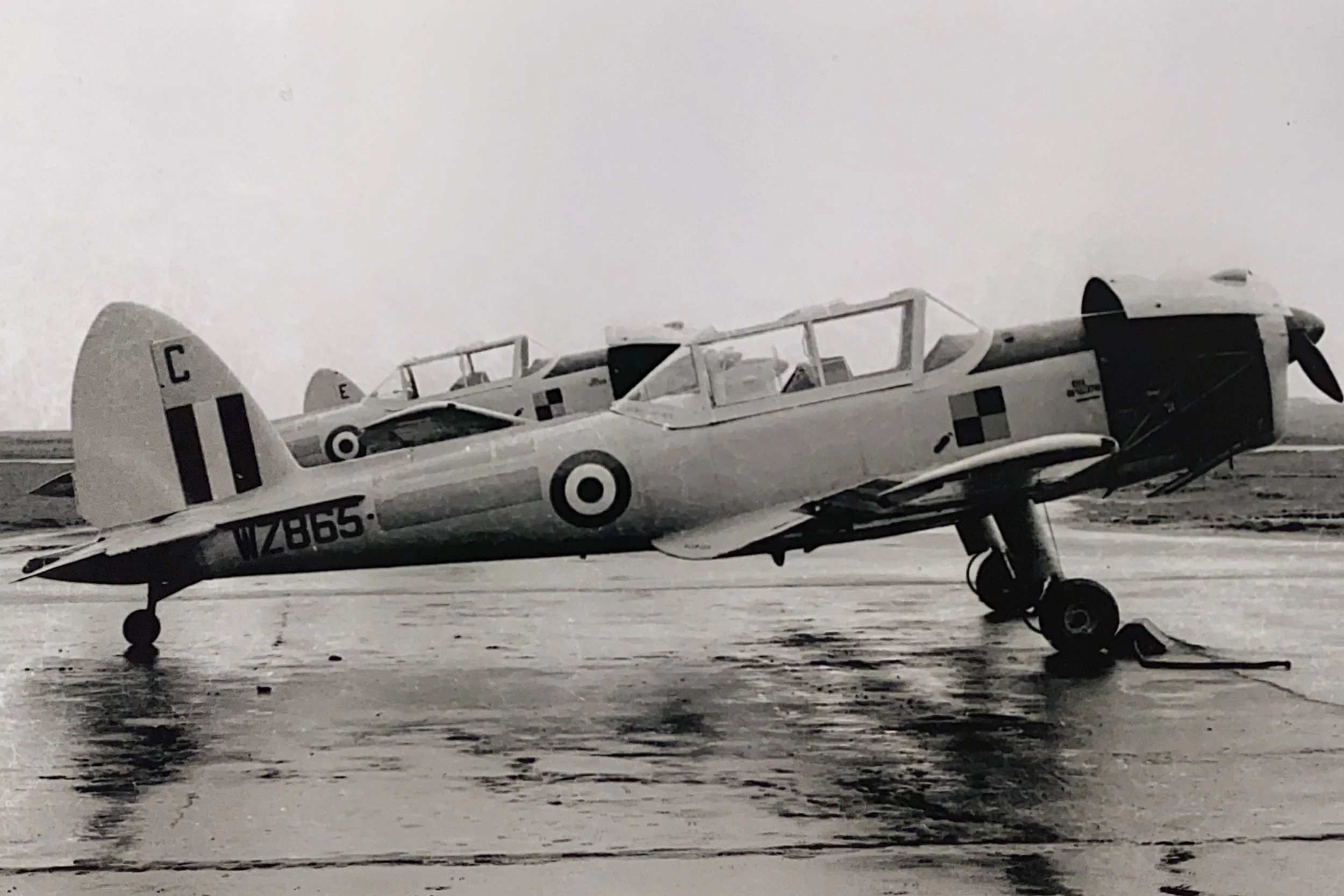
Chipmunk WZ865 in a typical Scottish setting.

Chipmunk WZ865 in servicing.

Glasgow formation - WZ865 closest to camera ship

Glasgow formation - WZ865 in foreground

Glasgow formation - WZ865 on right wing

Glasgow University Air Squadron pilots about to fly their Chipmunks. The Mk 1 helmet was made up of an inner cloth helmet with headphones and a fibreglass outer with tinted visor. The microphone was built into the oxygen mask, which early Chipmunk pilots needed to wear even though the aircraft didn't carry oxygen.
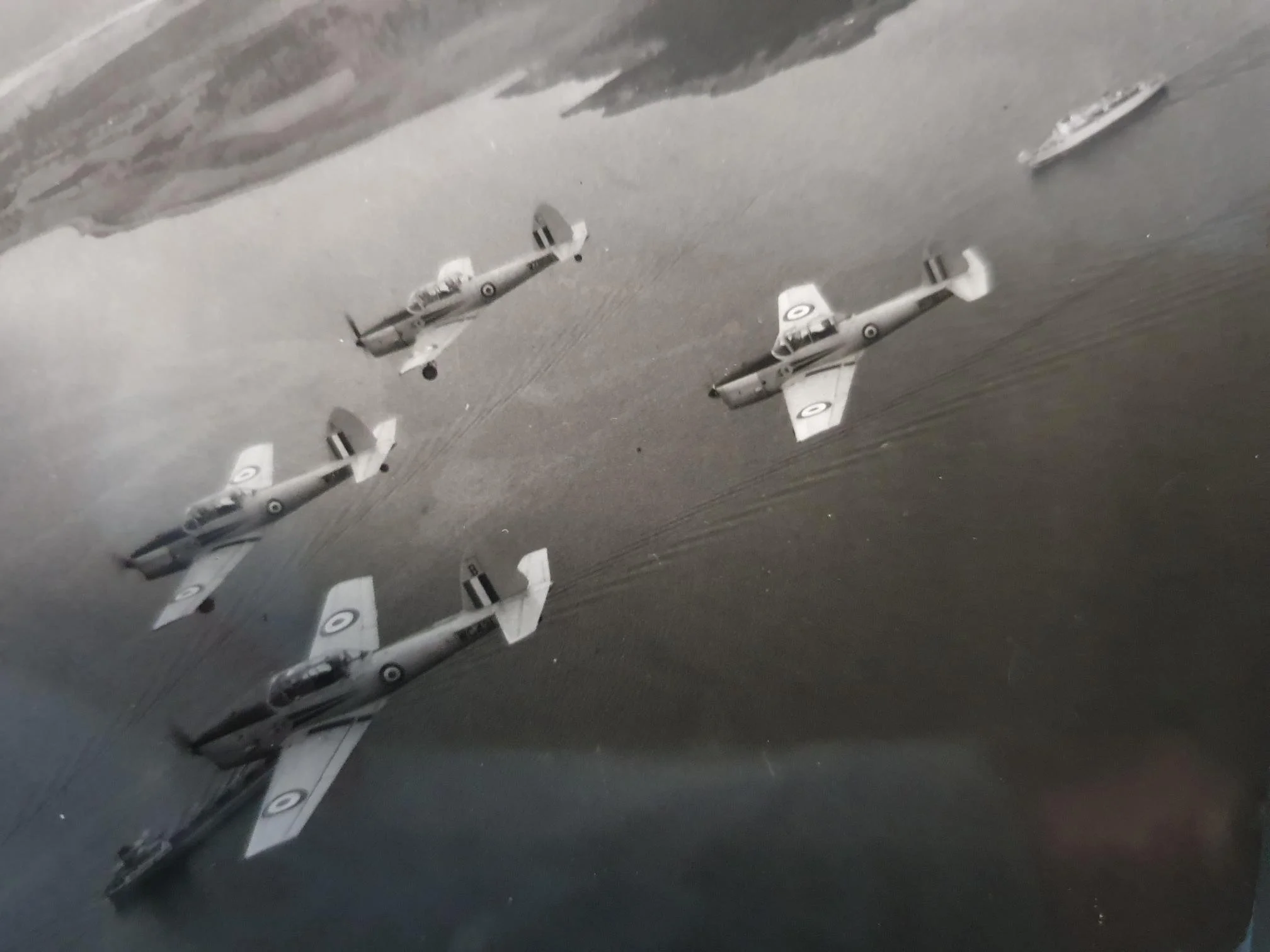
Glasgow formation - WZ865 on right wing

Glasgow formation - WZ865 closest to camera

Glasgow formation - WZ865 closest to camera

Glasgow formation - WZ865 closest to camera

Chipmunk WK585 "A" from WZ865 "C" by Bill Macleod. Bill later visited us in New Zealand and flew a sortie from Whanganui – see pic in the in-action gallery.

Chipmunk WZ865 silver with dayglo stickers.
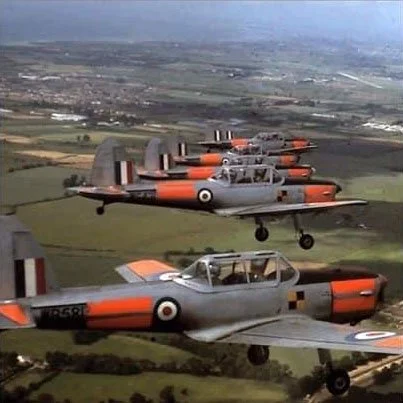
Chipmunk WZ865 GUAS formation.

Mike Brook (left) with WZ865, from the back cover of his book "Follow me through".

WZ865 over Scone Airport, Scotland. From Mike Brook's book, "Follow me through."

GUAS lineup

WZ865 ready for sale in 1975.

Chipmunk WZ865 as N895WP in the US. The aircraft was owned by Charles Pease and was based in California. The US-applied colour scheme was not original and the aircraft was completely stripped before repainting in silver and orange.

For sale listing

Chipmunk 65 aka N865WP for sale in 2021. The aircraft had been stored in this condition for 11 years and had sustained some minor damage while in the hangar.
A new chapter
In 2021 we purchased WZ865 and shipped it to New Zealand for restoration.
The three year overhaul saw almost every part stripped, repainted or replaced before its issue of a Certificate of Airworthiness in March 2024. Stan Smith of Smith’s Tech Air NZ led the restoration, along with Scott Hunter, Tim Vroegop, Hannah and a long list of helpers and subcontractors and suppliers. The De Havilland Chipmunk Appreciation Society on Facebook was invaluable in providing advice and support.

Chipmunk WZ865 in pre-restored condition in Australia.
Chipmunk WZ865 restoration

Master engineer Stan Smith repairing minor damage to a tailplane panel received while the aircraft was in Australian storage.
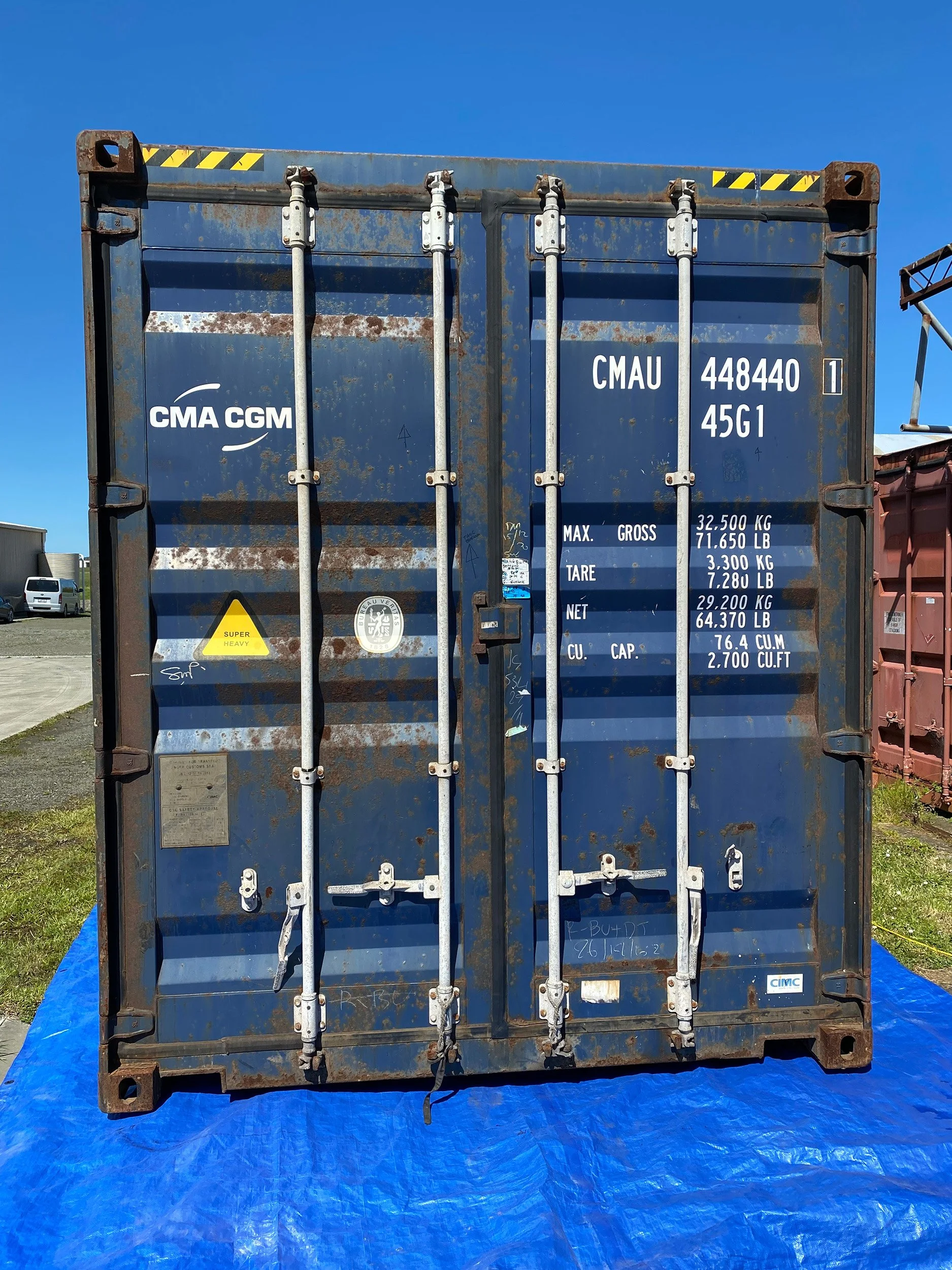
Our container after its arrival from Australia.

A disassembled Chipmunk fits neatly into a 40 foot shipping container.
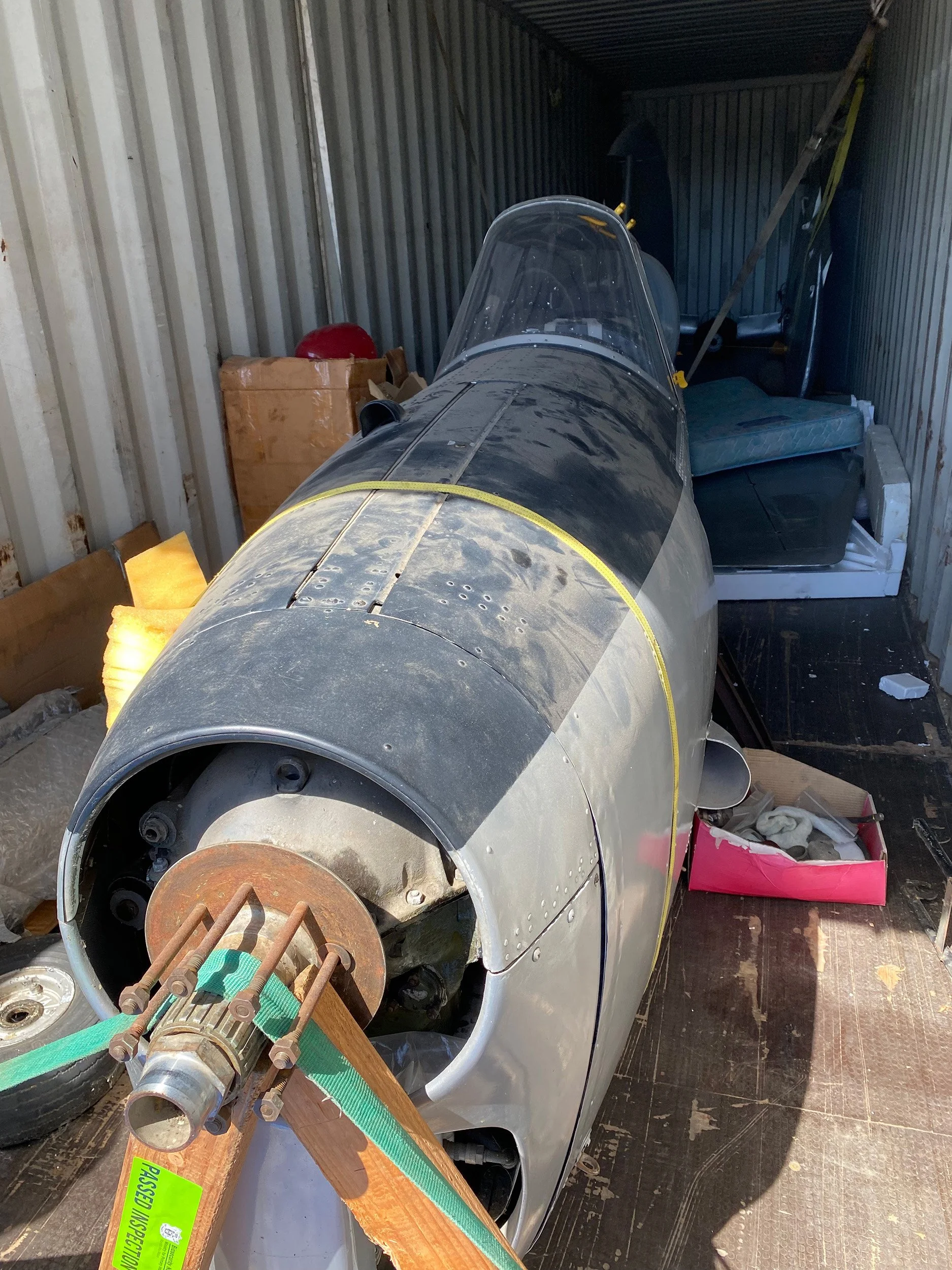
Seeing New Zealand sunshine for the first time.

The engine featured a couple of unique modifications, including an alternator from. a Mazda 626.

Edging carefully out of the container into a brilliant Auckland morning.
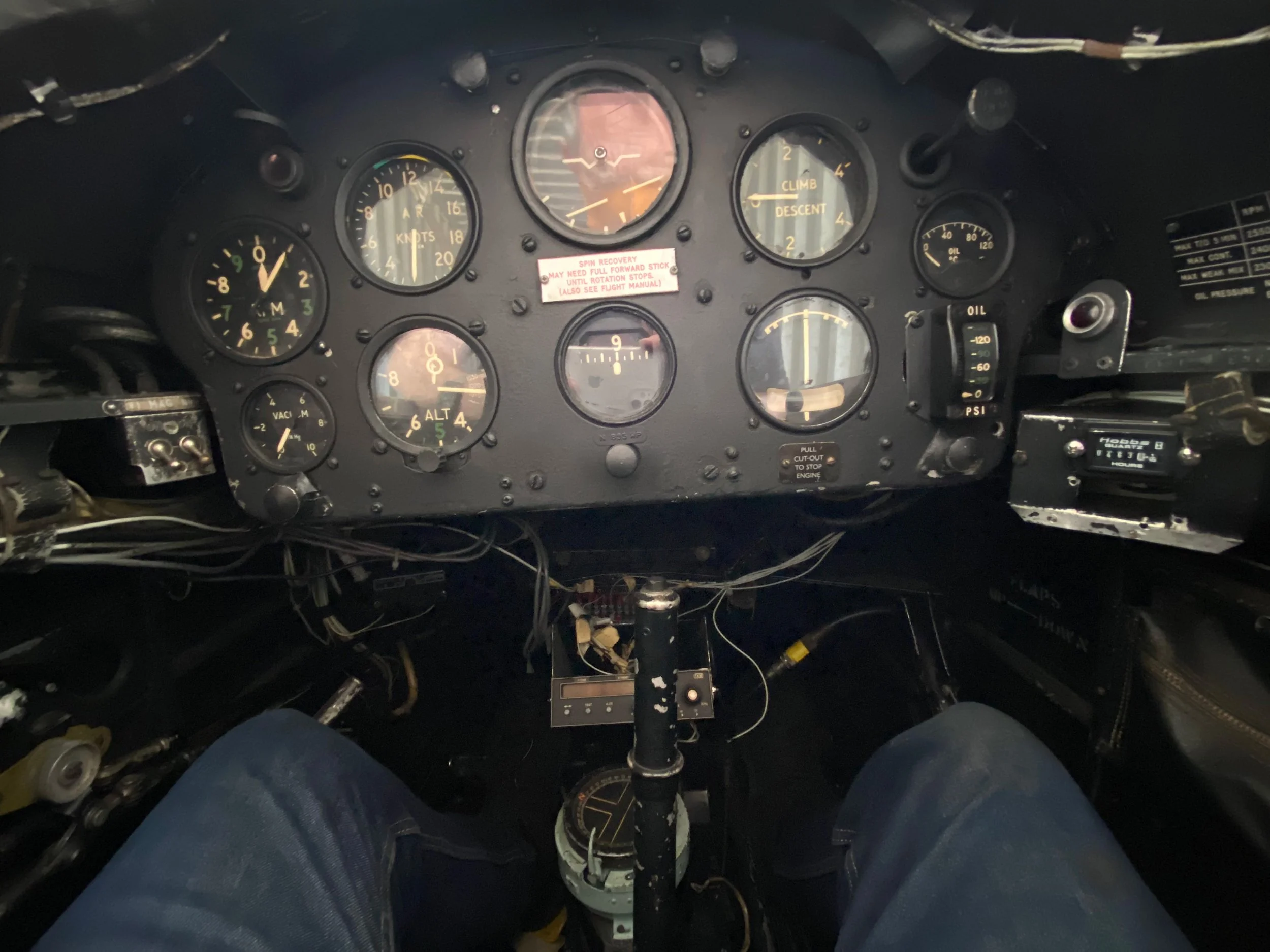
Couldn't resist... sitting in the cockpit before we'd even removed the aircraft from its container.

Rear cockpit. The seats had been hand painted during RAF service to indicate which cockpit each one came from. The vinyl "bumpers" above the instrument panel were replaced in both cockpits.

Empty!

WZ865 gathering dust in Australia.
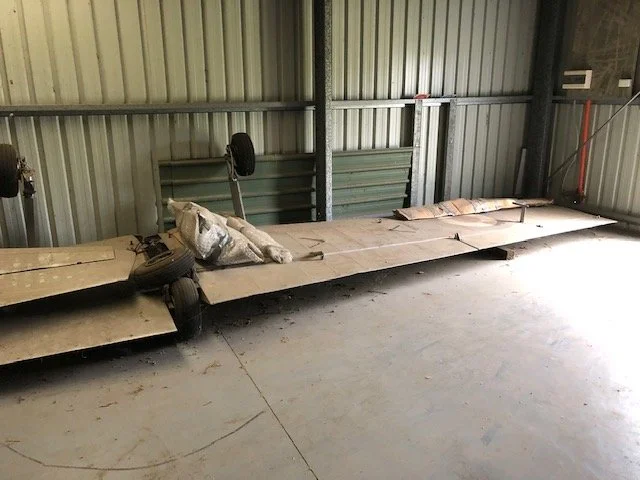
Wings in storage, Australia. Those undercarriage legs would need removal for metal-testing and replacement of the rubber suspension blocks.
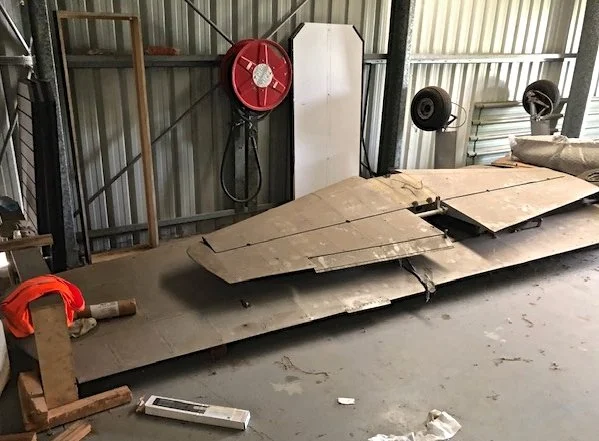
11 years on the hangar floor meant there were a few minor dents and dings to repair.
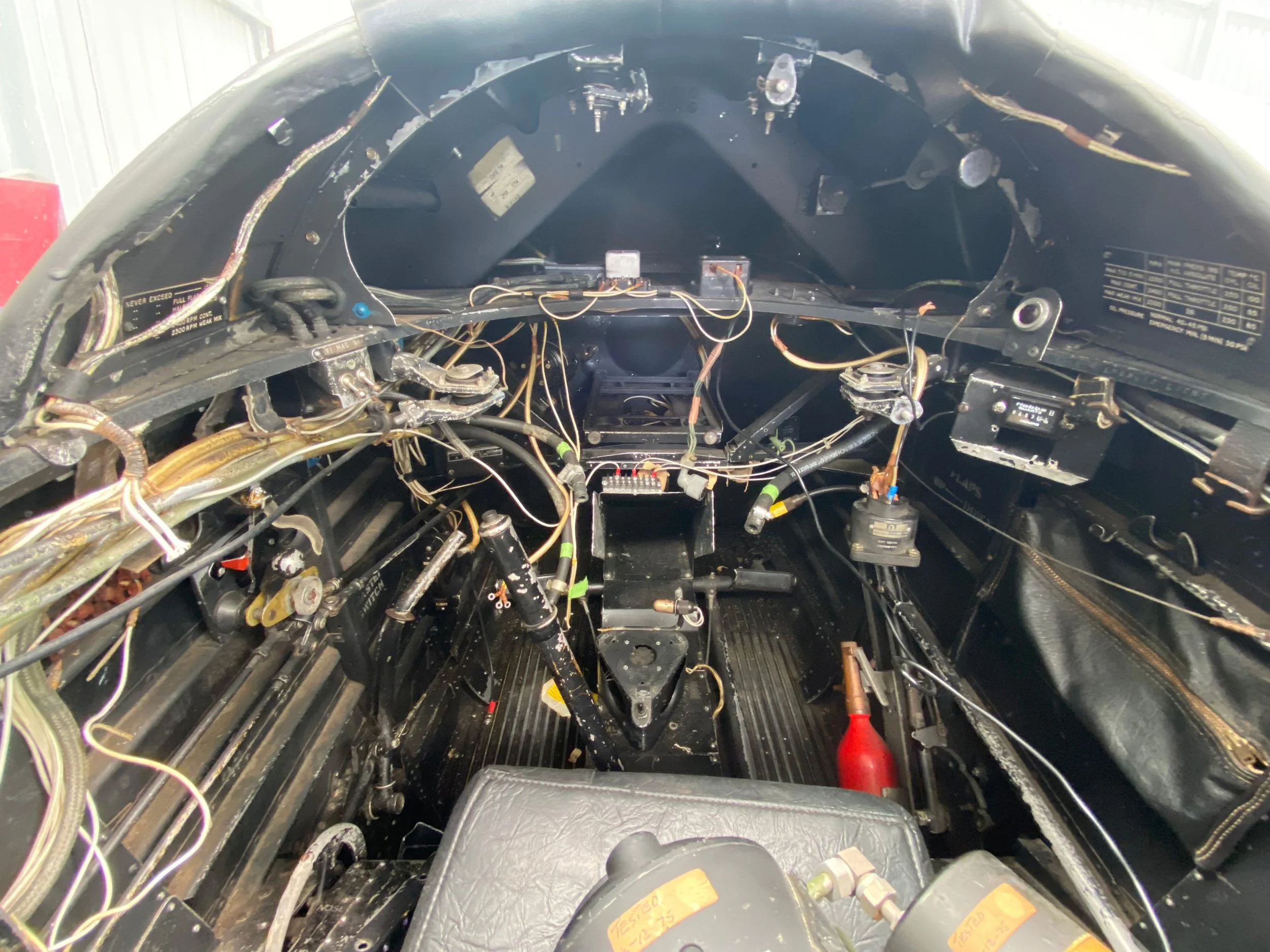
A view towards the firewall with the front instrument panel removed. The panels remove easily for access to instruments and associated plumbing.

Front cockpit from the For Sale listing. The fire extinguisher is original.
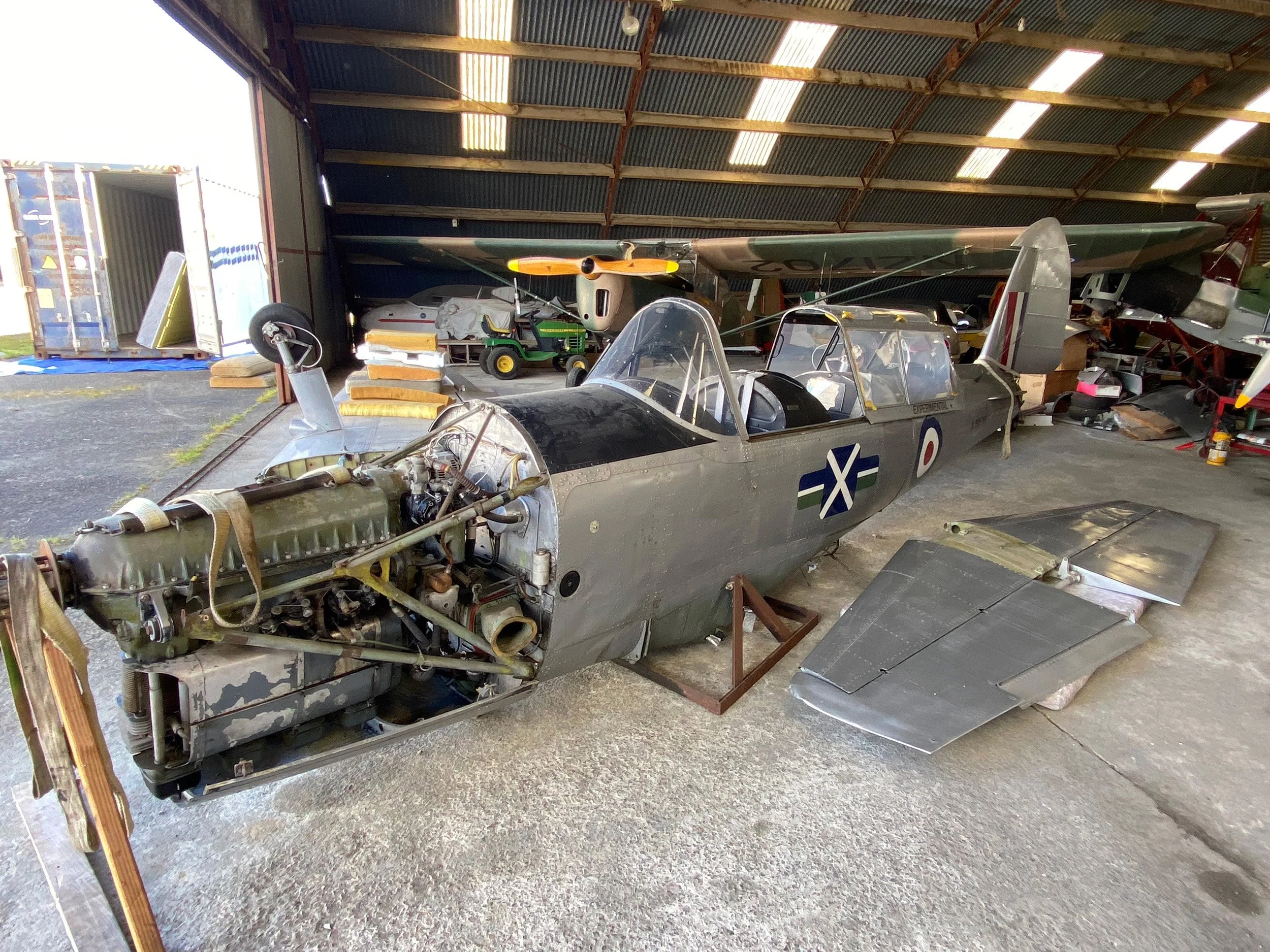
Fuselage soon after unboxing. The engine that came with the aircraft failed internal crack testing so the case had to be replaced.
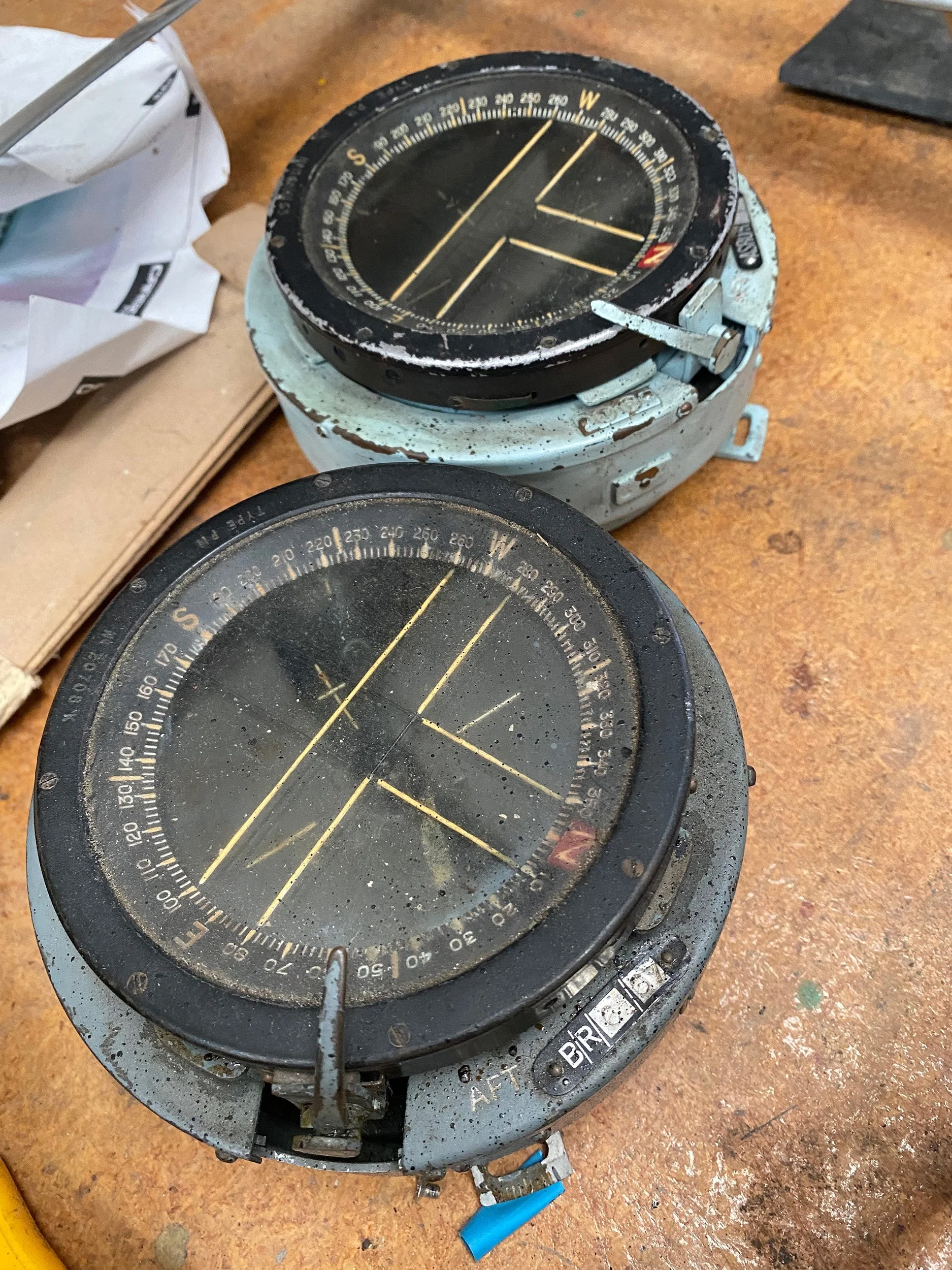
Our two floor mounted compasses before restoration. Very accurate, very cool, but very hard to read down there by your ankles.
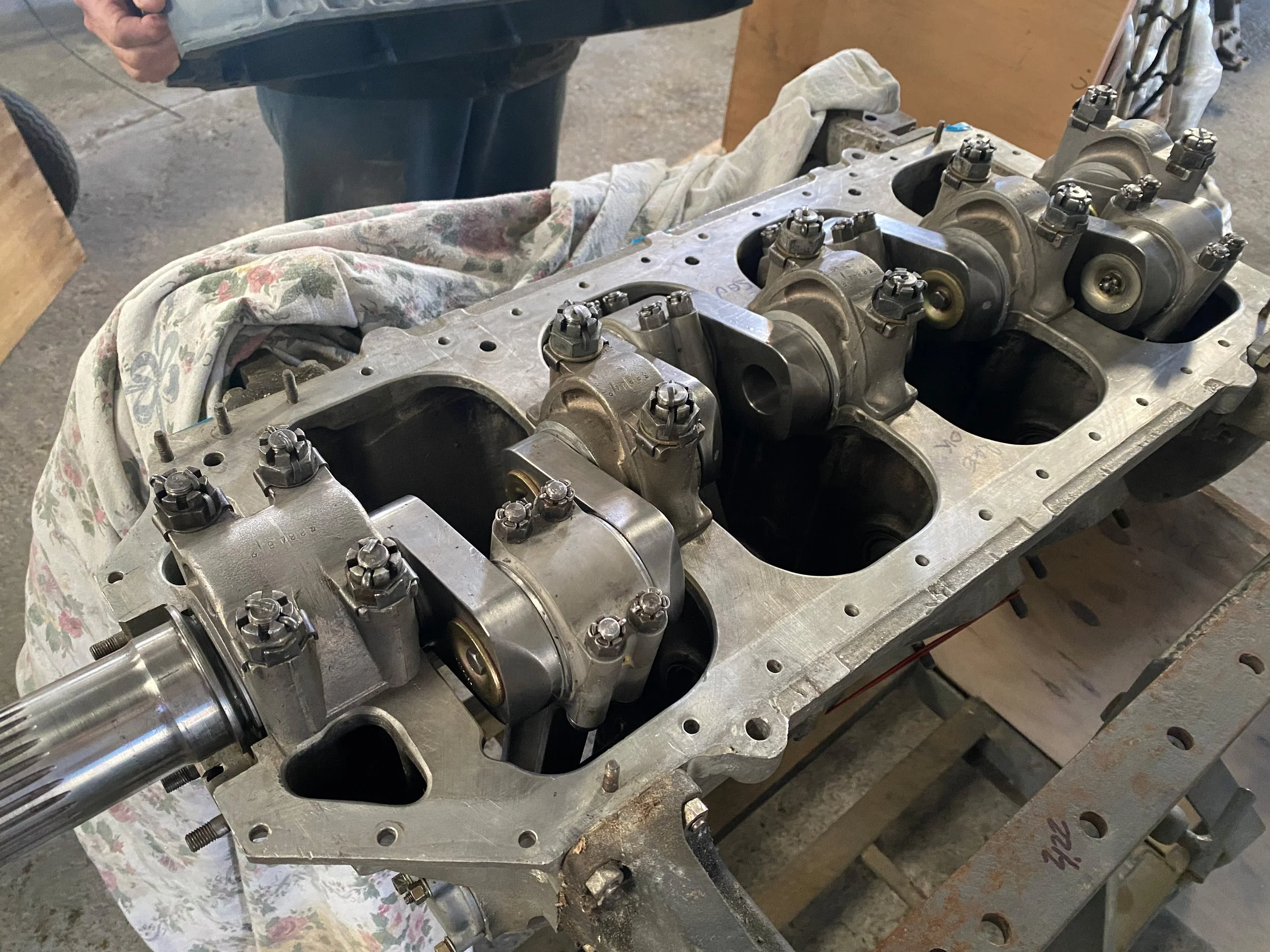
Gipsy Major 10 Mk2 engine with the top cover removed, showing the crankshaft. The propeller attaches at left.

Fin and tailplane with rudder removed to install a fin stiffening mod. Several hundred modifications needed to be checked to confirm they had been completed, and done if required.
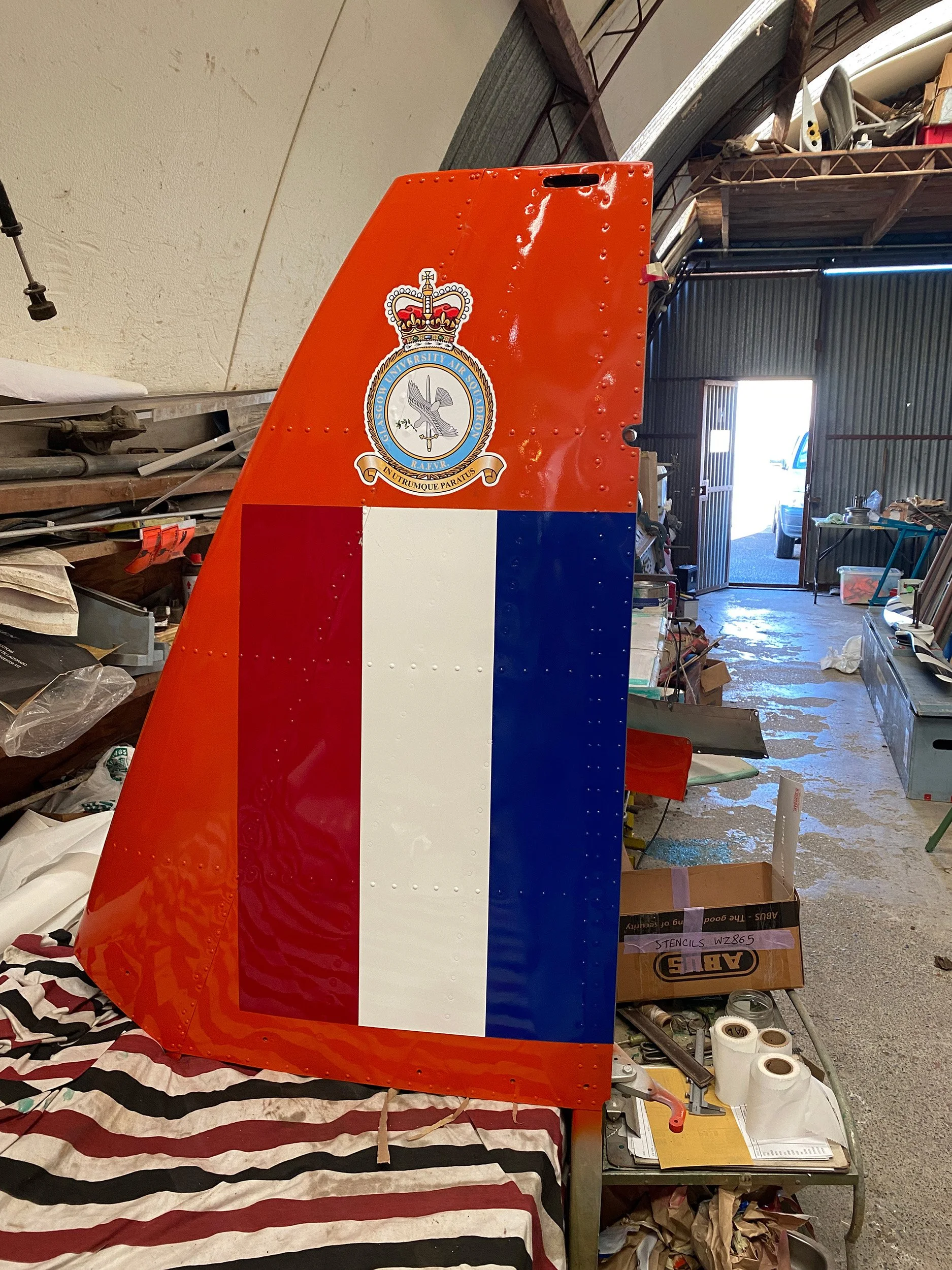
The fin after painting.
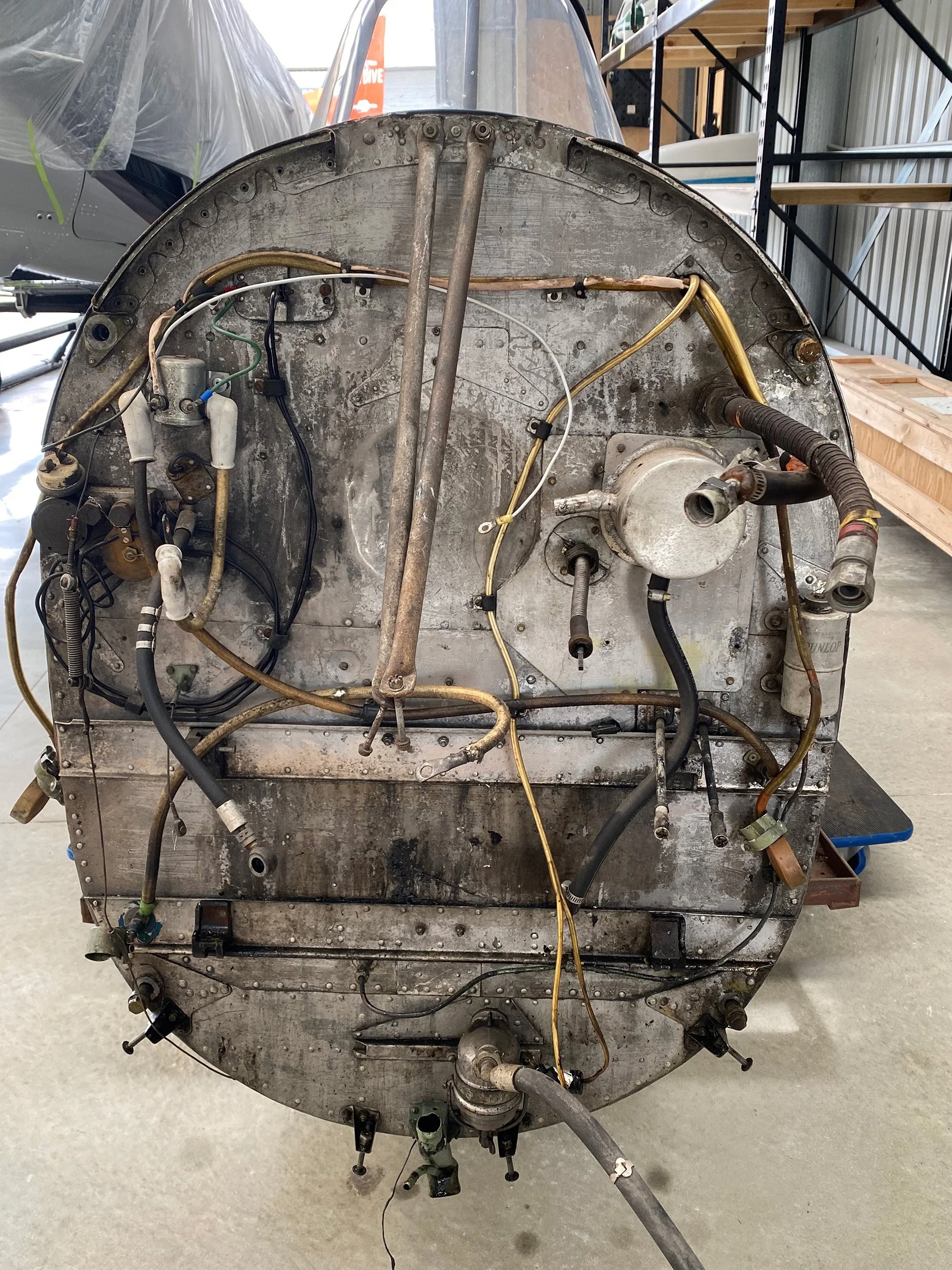
Forward firewall before restoration. The circular silver component wasn't original so was removed and an ignition suppressor installed in its place.

A moody shot in the hangar with lower cowlings removed for engine access.

Engine from the left side with cowlings removed.
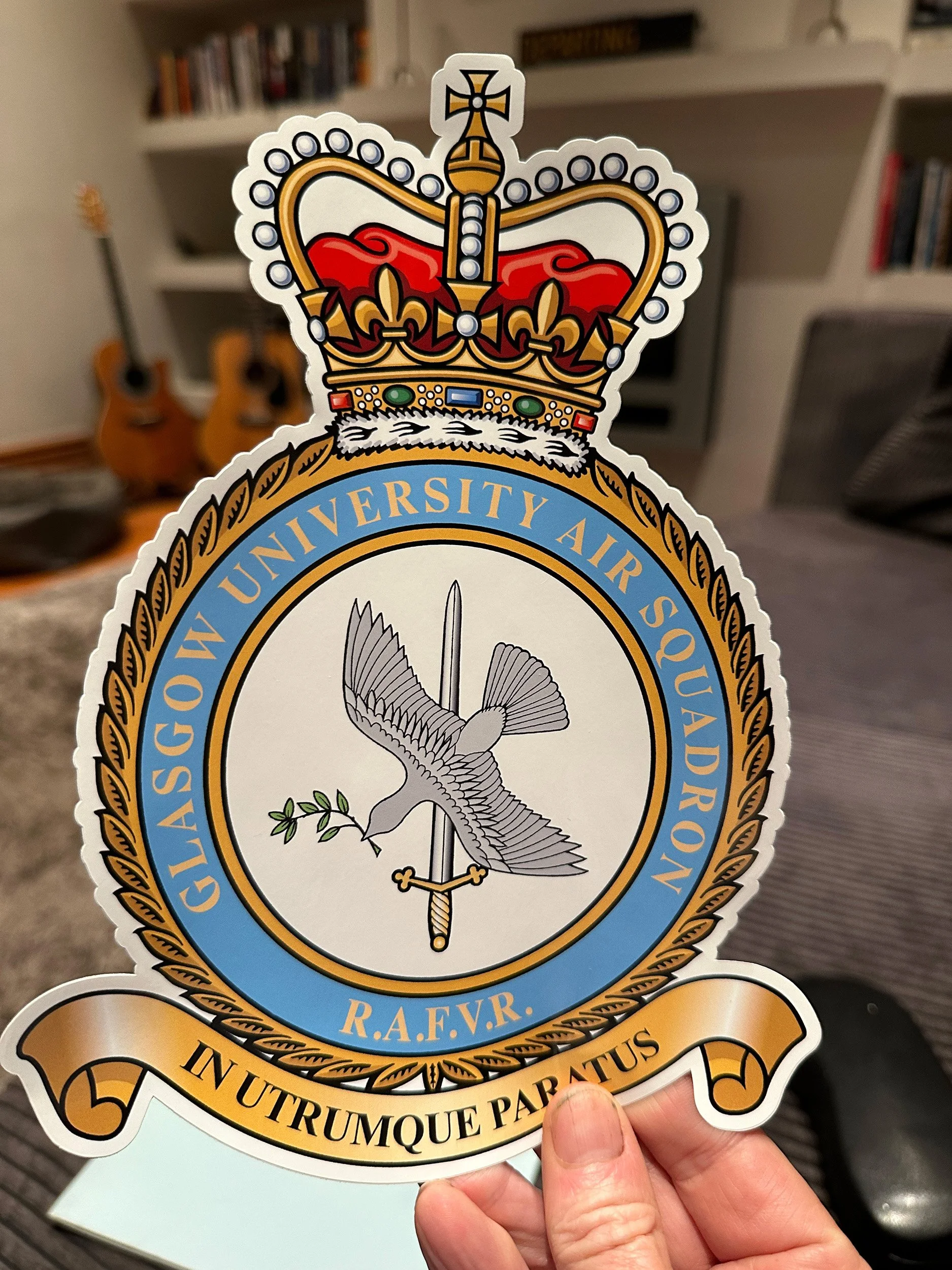
We recreated the art for Glasgow University Air Squadron and had stickers made for the fin. The unit emblem is colloquially known as the "Dove Kebab."

RH side of engine after restoration, showing carburettor, inlet and exhaust manifold.

Stan and Scott at work in the hangar.

Getting ready for the first flight.

Hannah and Scott at work on the engine.
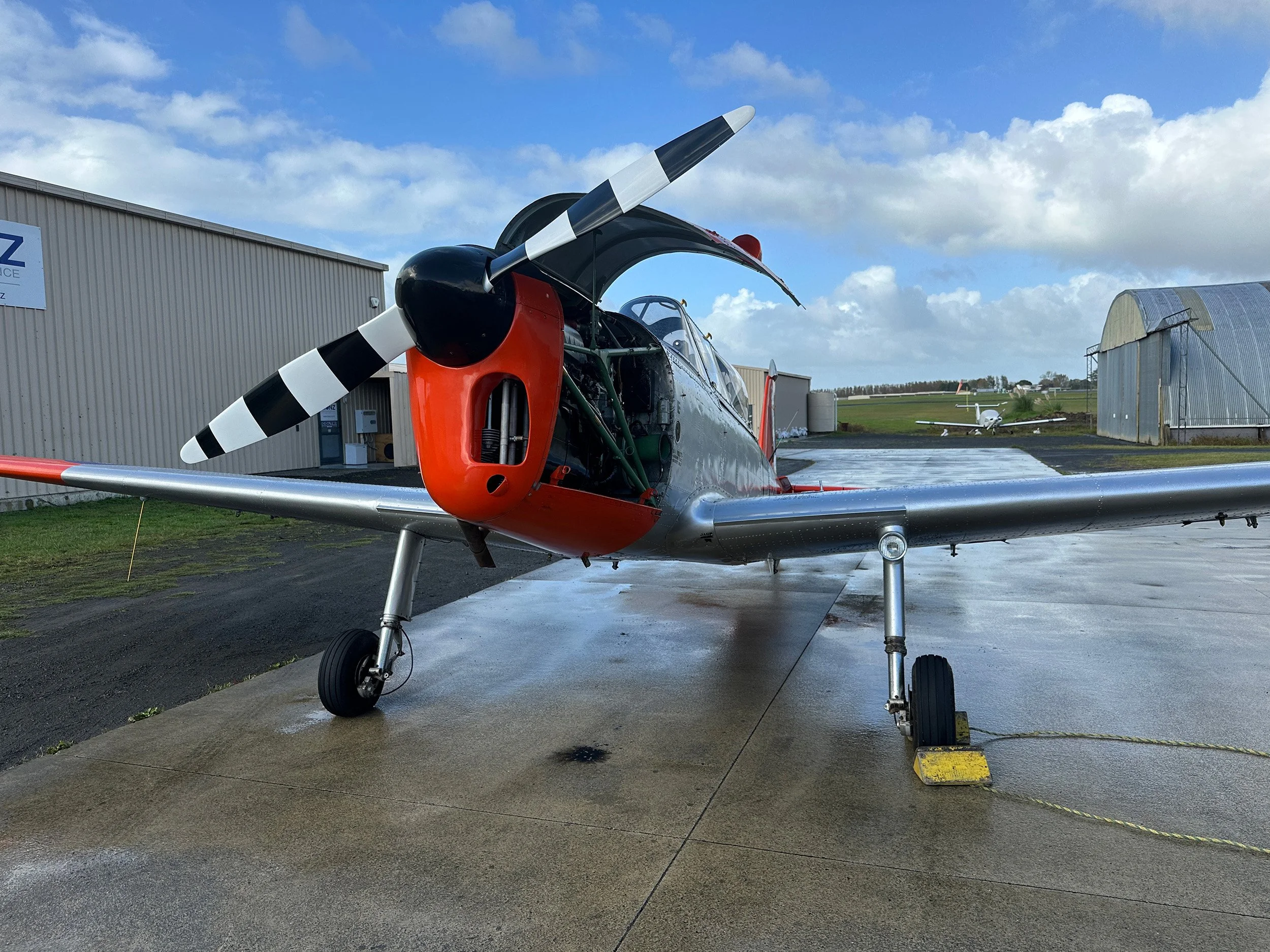

Ready for engine running.

Scott and Stan inspecting the engine.

Exhaust manifold removed for engine work.
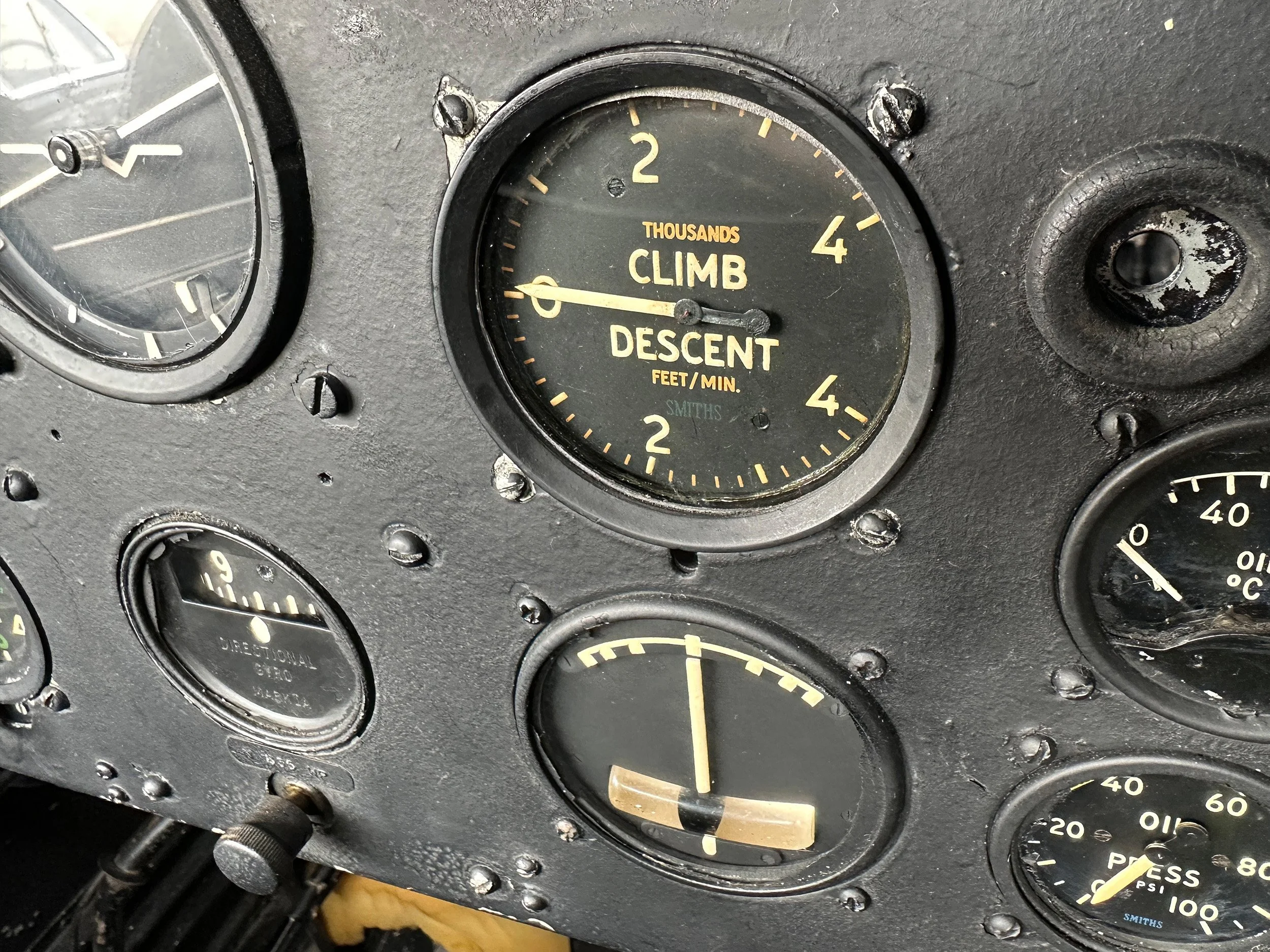
Rear cockpit instrument panel on the bench. All of the instruments were tested and adjusted if necessary before return to service - most were still perfect.

In the paintshop. Stan gives the tail cone a coat of "Chippy Orange" while I look on.

Stan removes masking from the data plate on the rear fuselage. The fuselage is in a rotary rig to allow easy access for painting.

Fairing panels stripped and ready for paint.
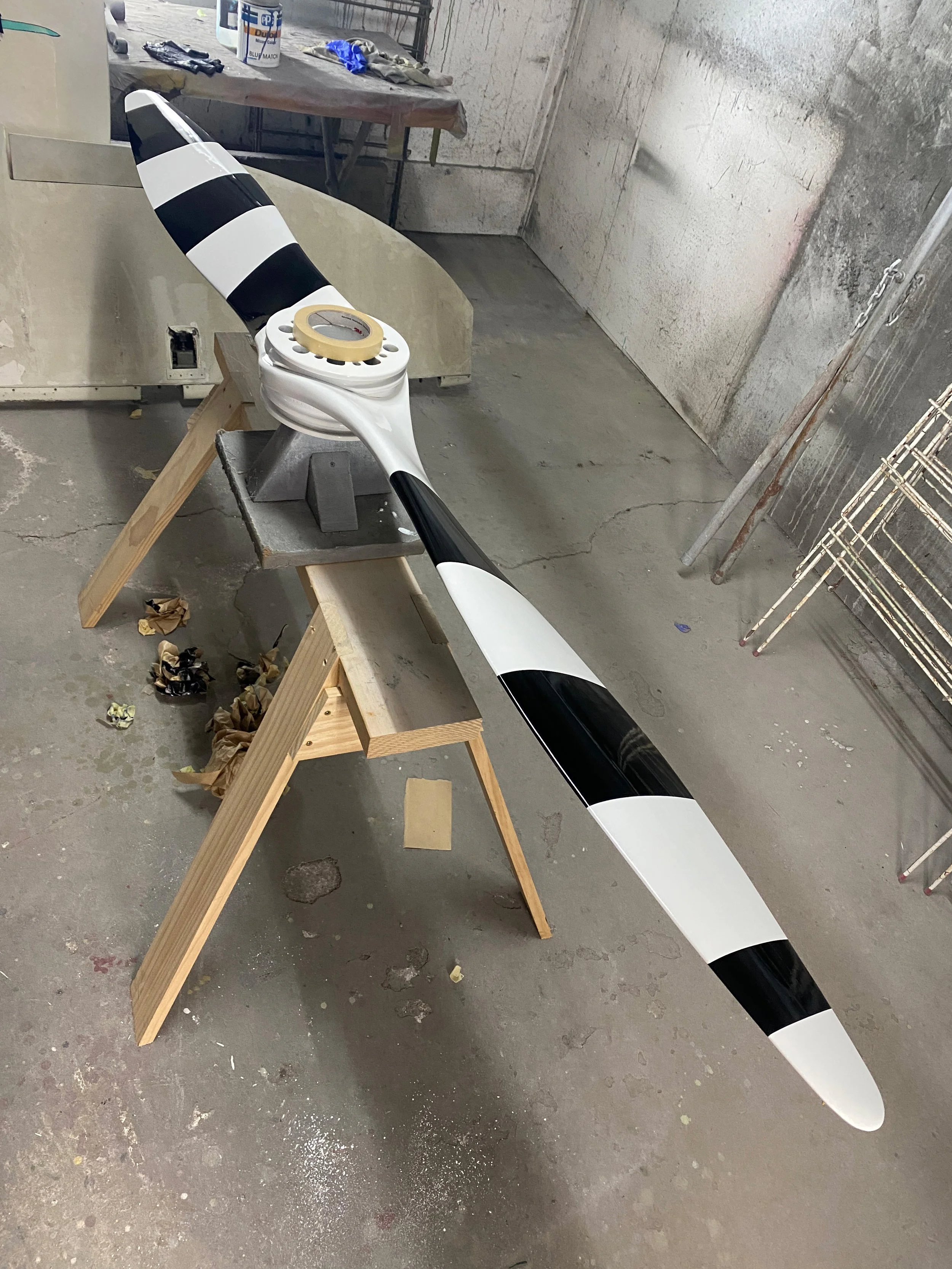
Fairey Reed fixed pitched propeller back from inspection and painted. The striped propeller was only used on RAF Chipmunks from the 1980s but helps with visibility and gives a certain Beetlejuice vibe.

Scott machining a part at the lathe while Stan looks on.

Stan with the engine cover, crankcase in the foreground. The engine cover is a magnesium alloy and needs to be corrosion-proofed immediately after bead blasting.
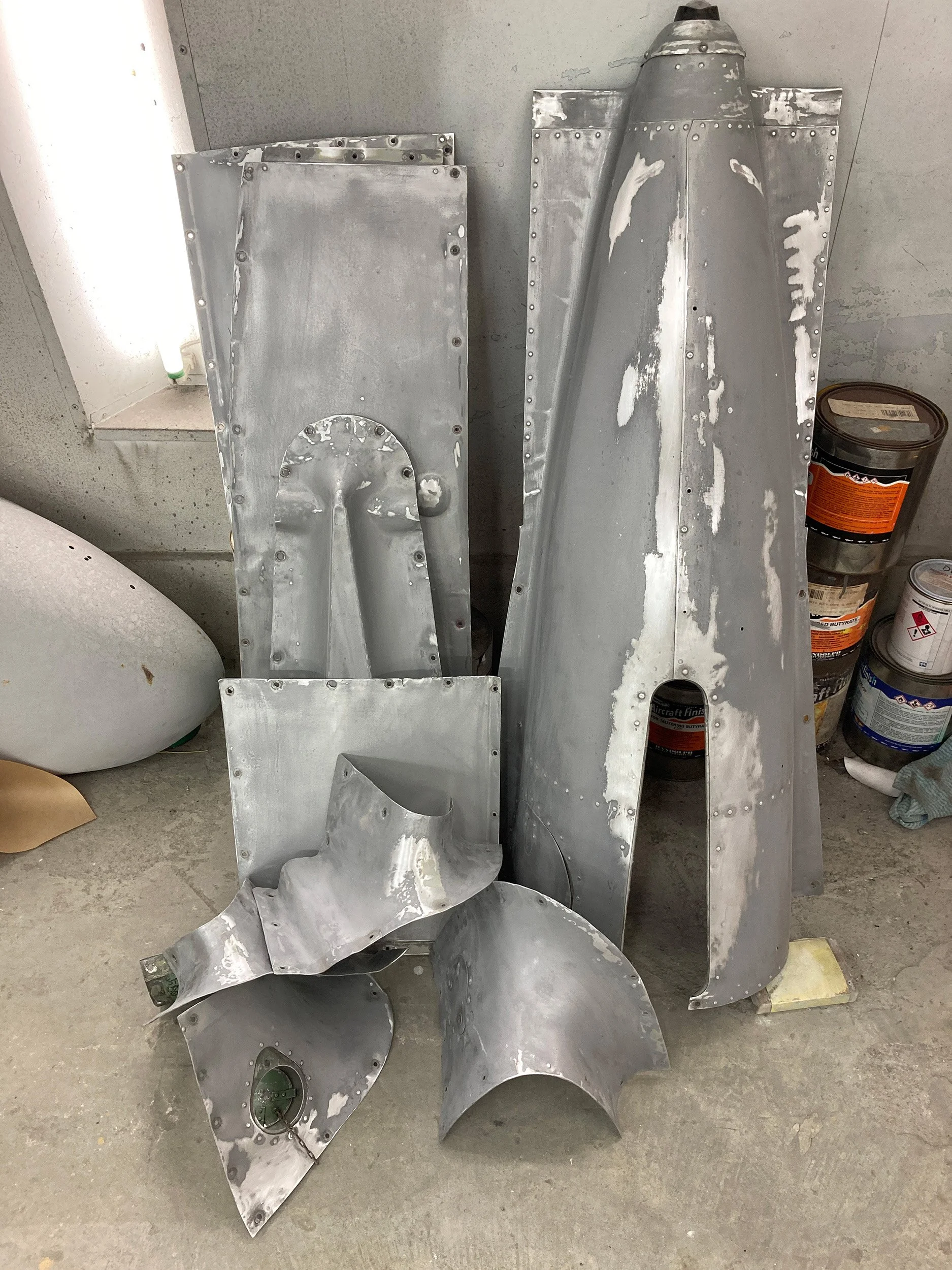
Fairing panels as removed, before stripping and painting. Some of the fairings have extremely complex shapes.

The Perspex canopy panels were serviceable but not perfect, so all but the two top panels were replaced with new or new old stock parts.

Contact breakers removed, inspected and adjusted – an example of the many small steps involved in preparing the engine for flight.

The aircraft's original engine was airworthy when the aircraft was disassembled but not in good cosmetic condition. The crankcase also turned out to have cracks and needed to be replaced.

The four-point seatbelts were serviceable but badly weathered so were re-webbed by Generation Global in Nelson.

Front cockpit shoulder straps showing sun fading. These were replaced using original hardware.
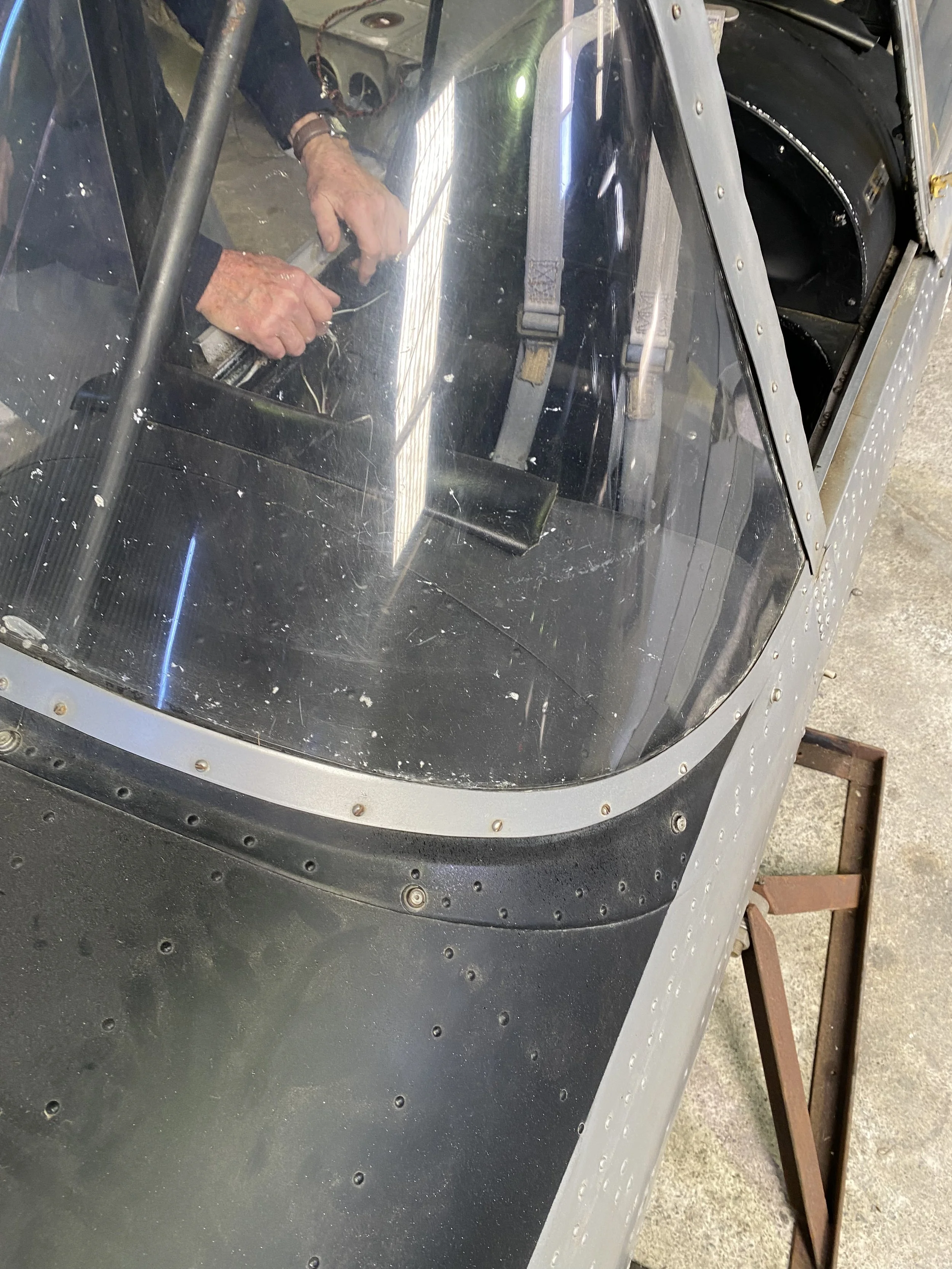
The windscreen had some scratching as well as some paint overspray. Luckily, Chipmunk windscreens are available new to order from the USA.

The stripped fuselage in the "rotisserie" ready for paint.
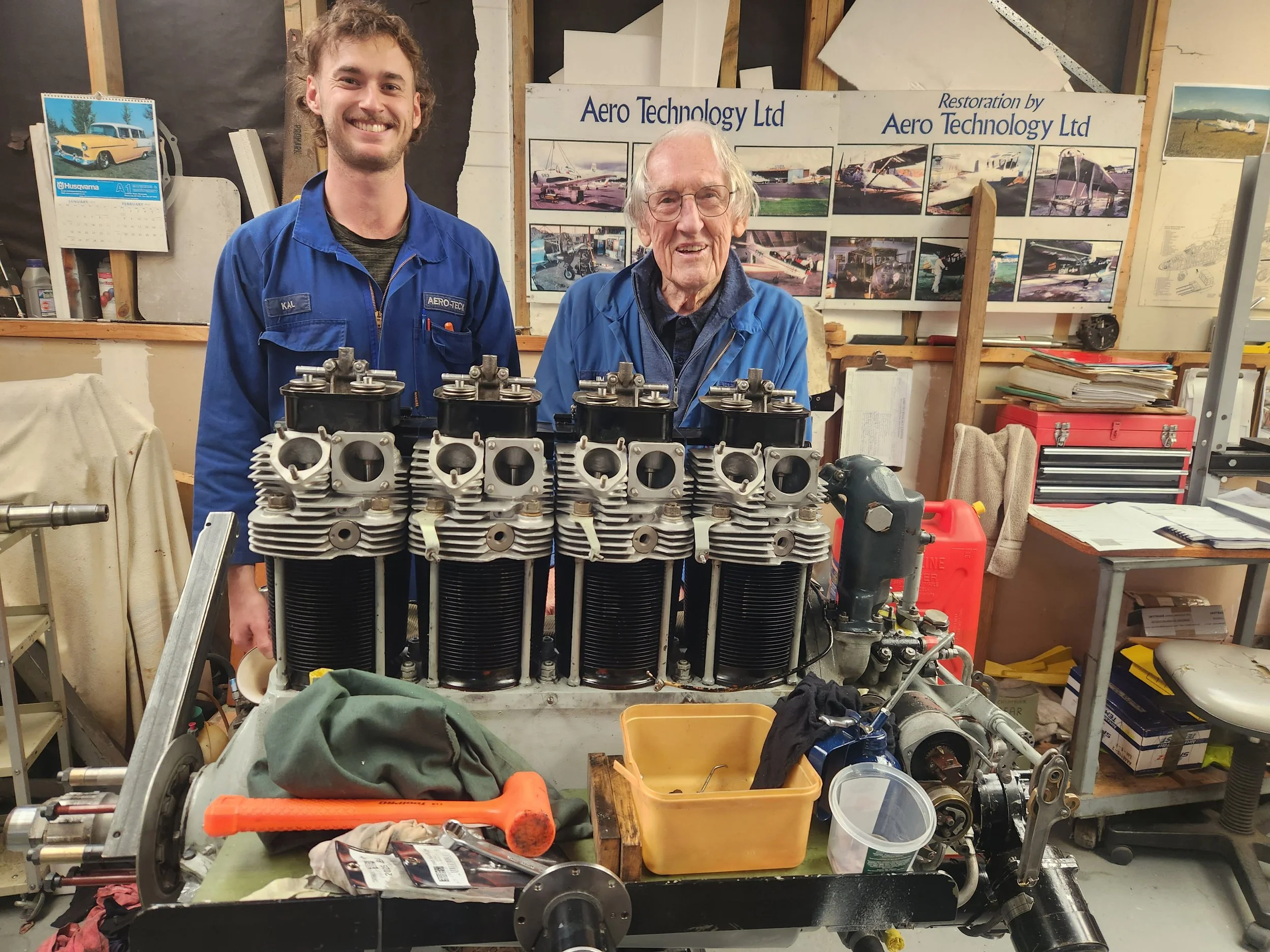
Cal and Jim at Aero Tech after engine maintenance in mid 2025.
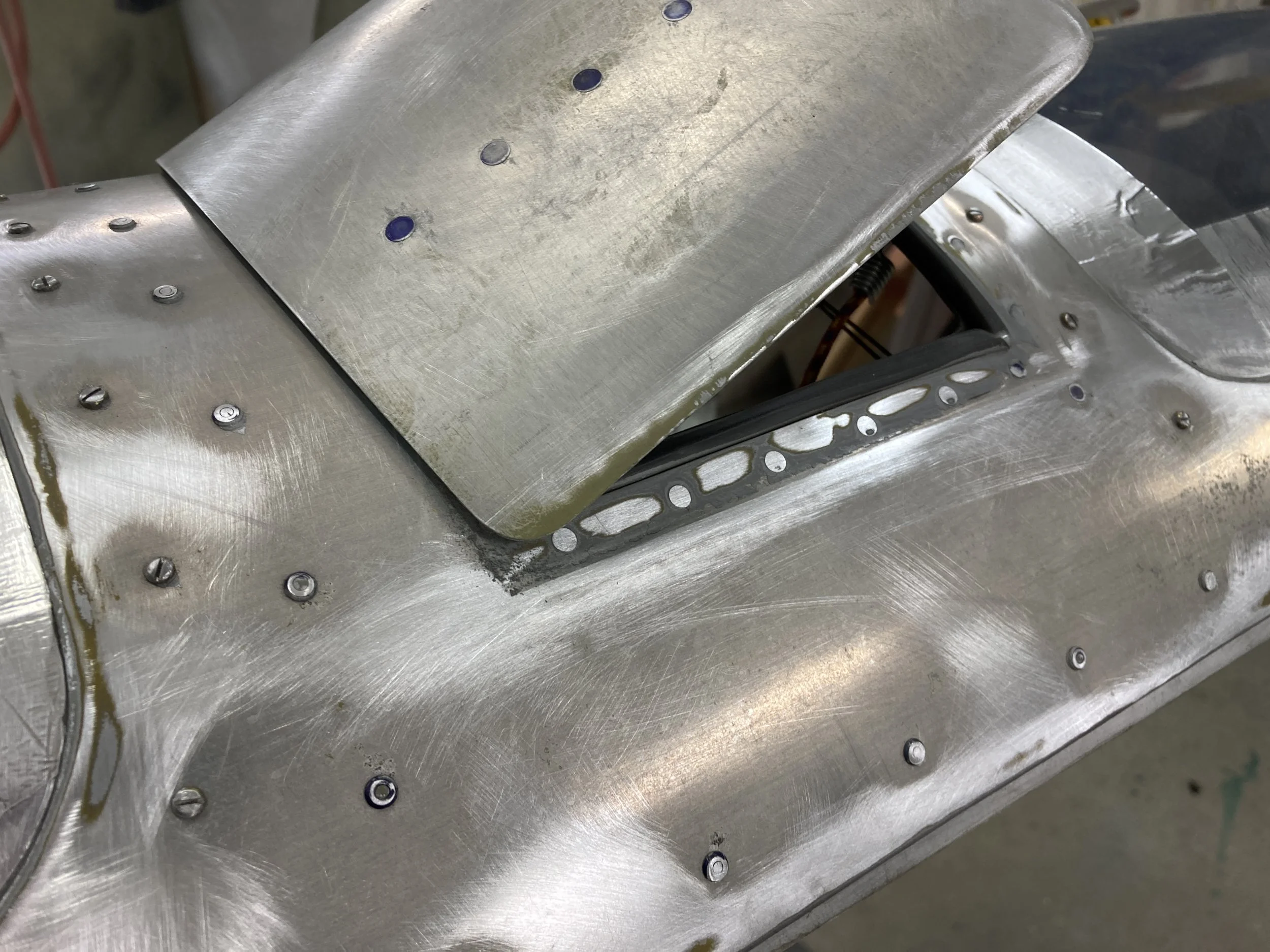
Stripped canopy with emergency canopy assist panel in the open position.
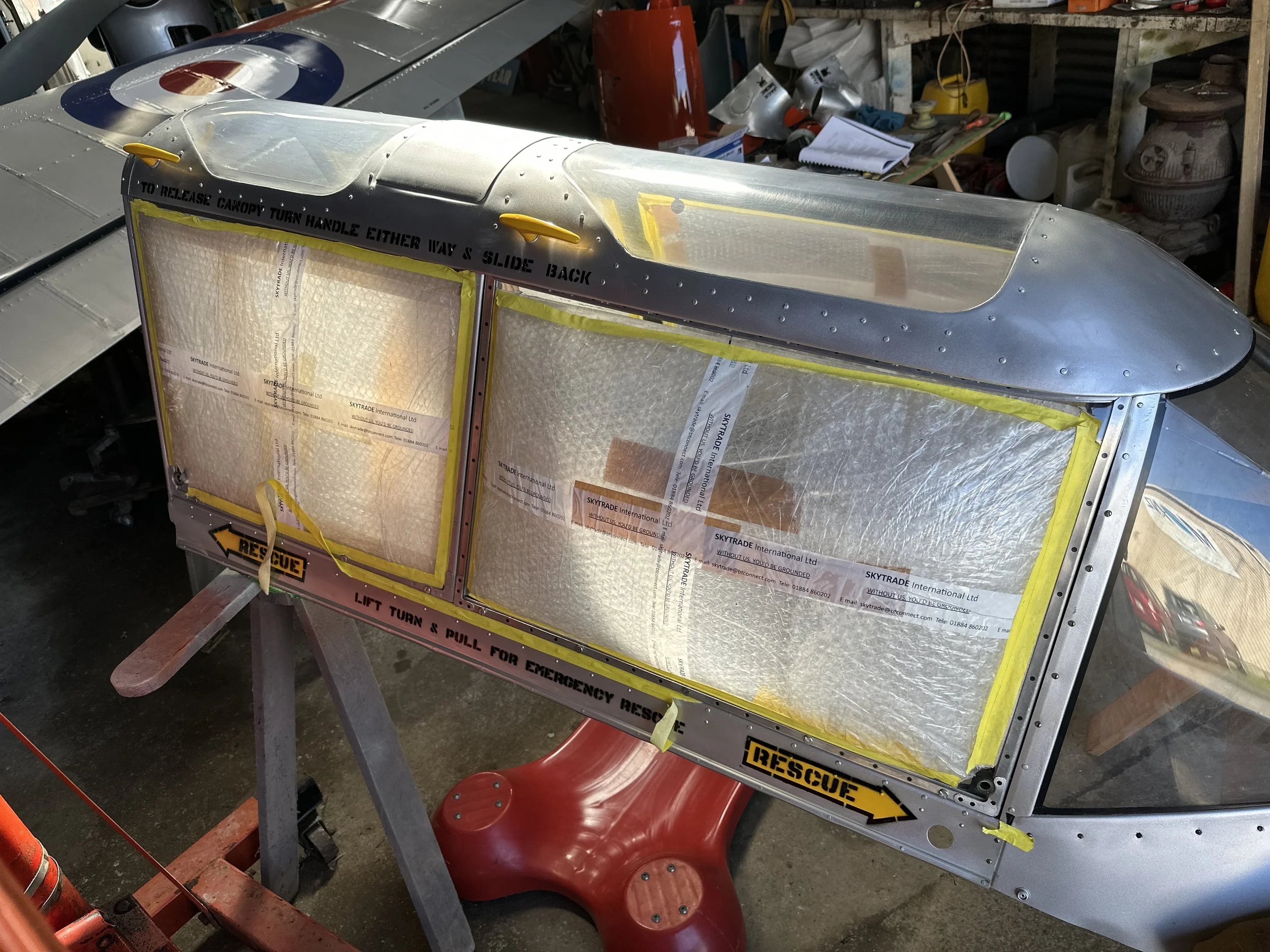
New canopy glazing installed. The bubble wrap was removed at the last minute.
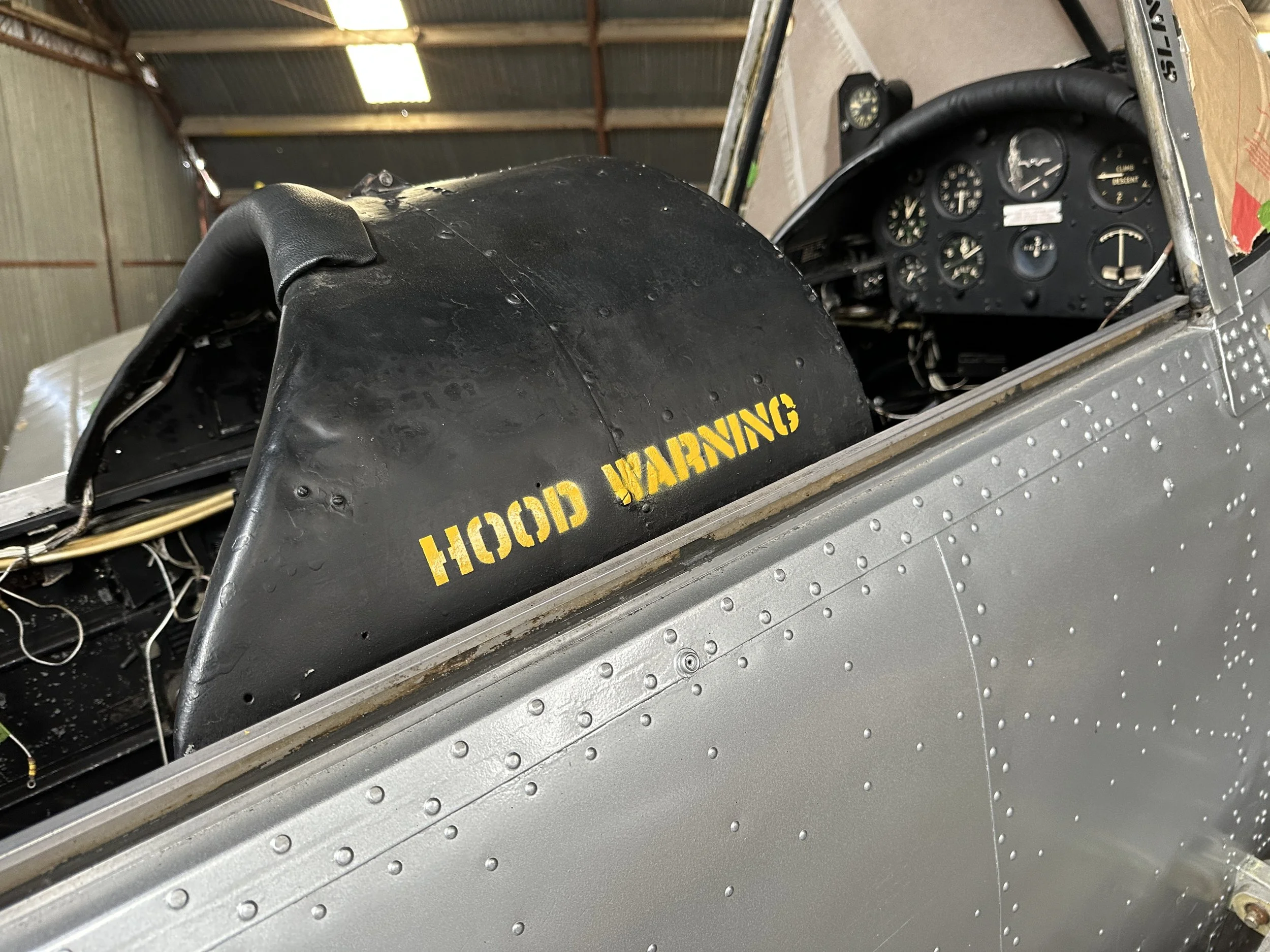
The "HOOD WARNING" reminds pilots when flying solo to close the hood to half way before engine start, as it's hard to reach from the front cockpit when fully open. This is just a theory though, as "WARNING" in a flight manual or placard usually refers to something that could cause death or aircraft loss if not followed.
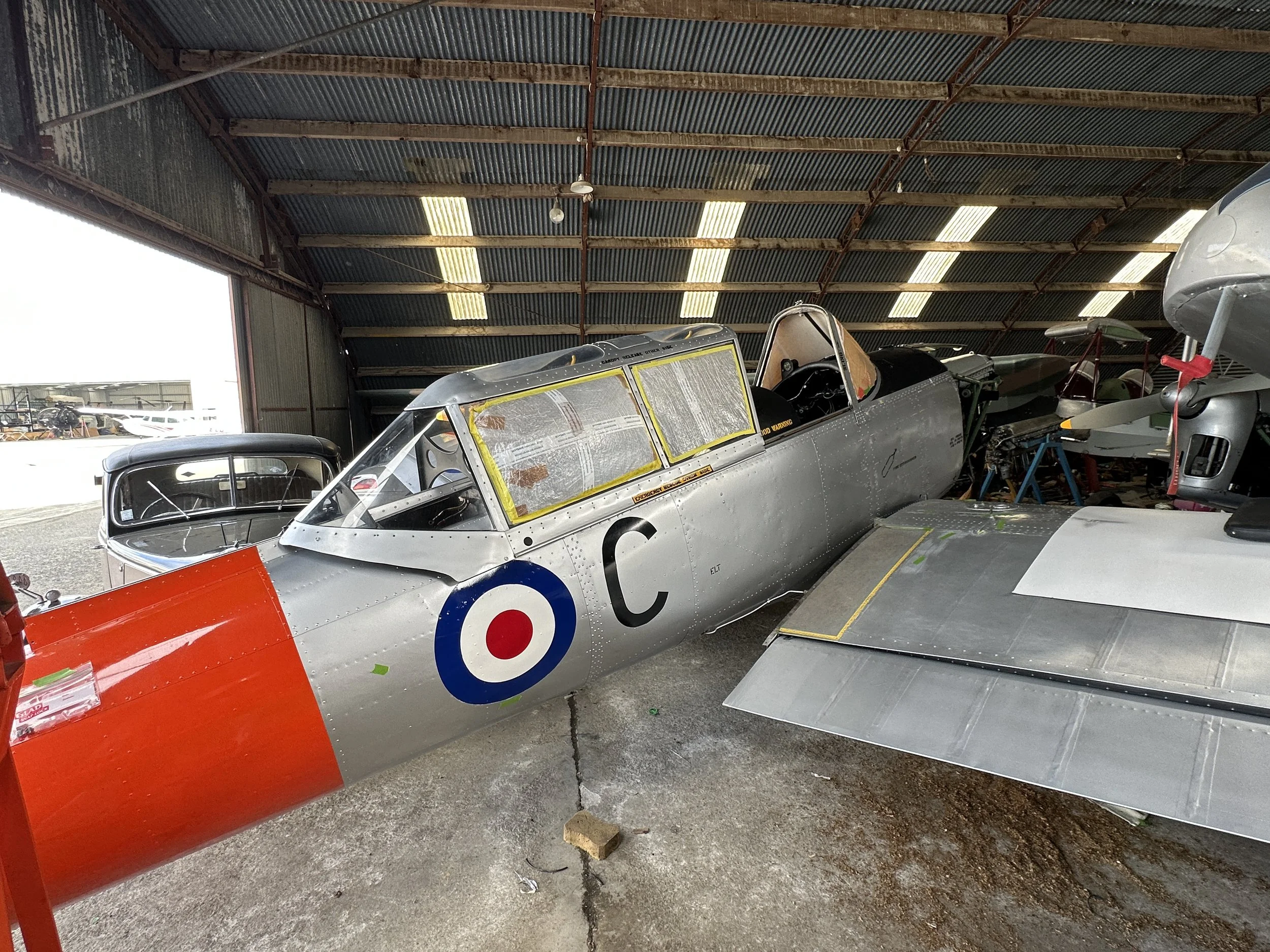
Wings on, waiting for wing-fuselage fairings to be fitted.
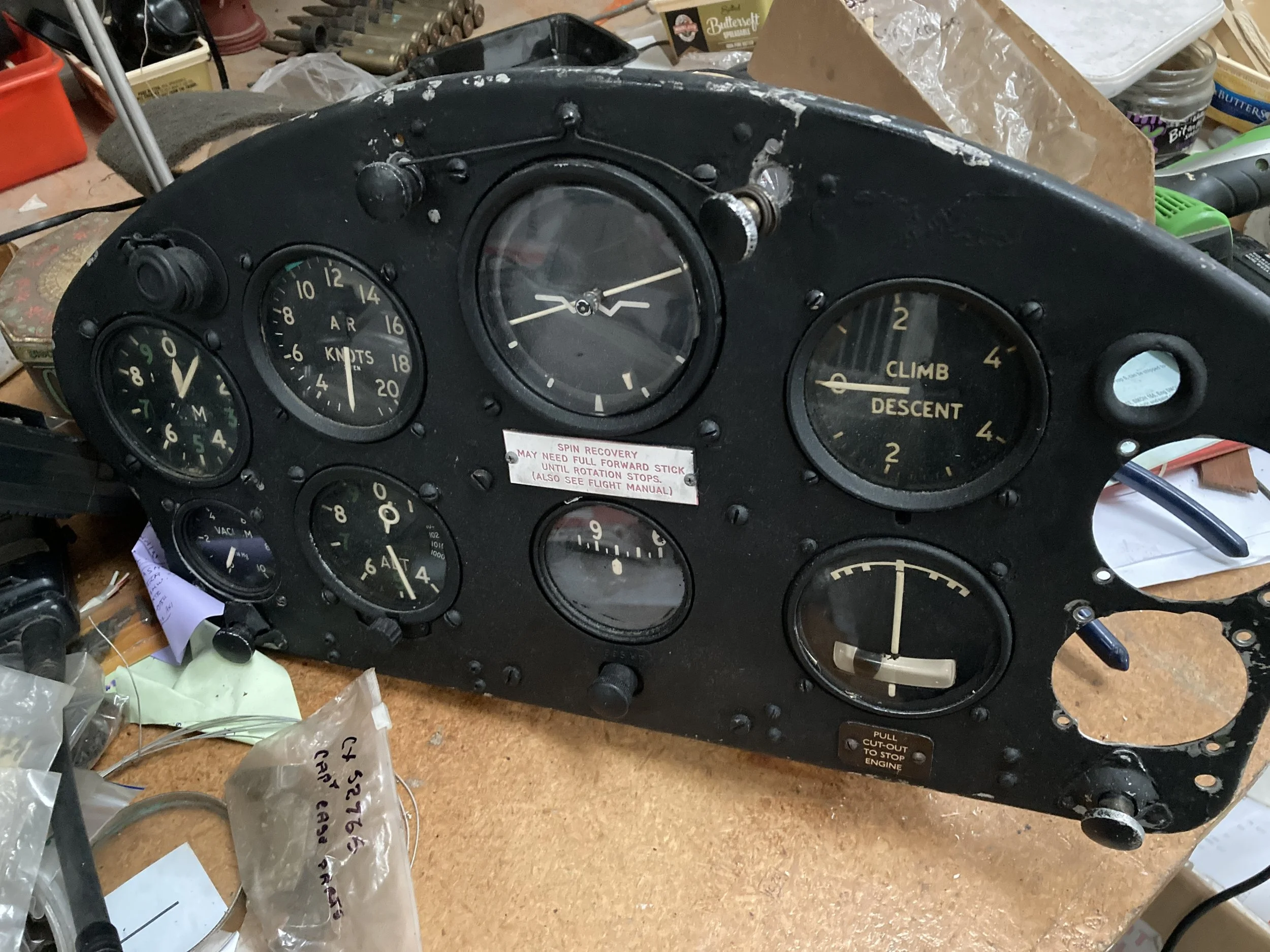
Front instrument panel on the bench. Oil temperature and pressure gauges removed at right.
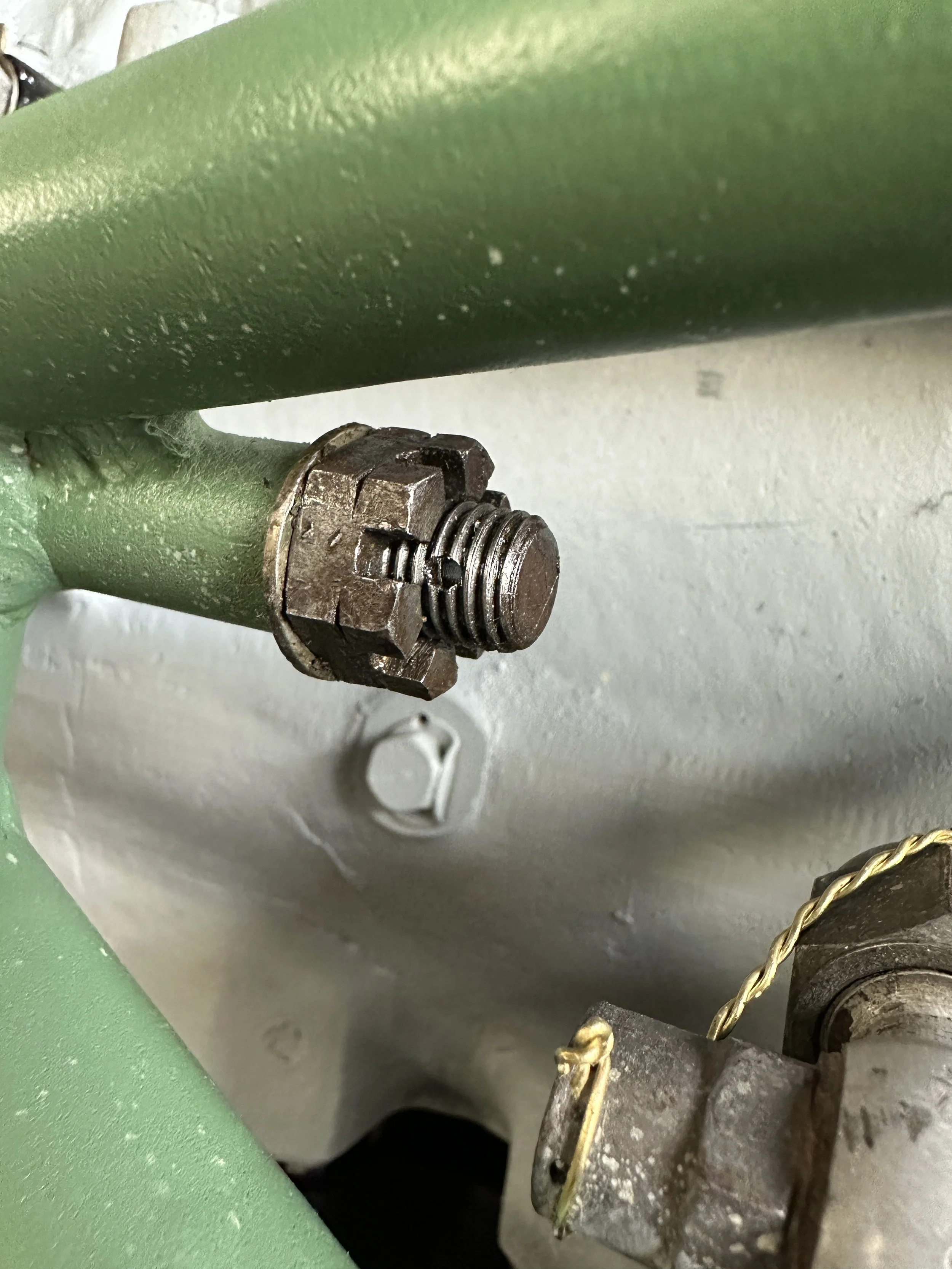
Engine bearer detail showing castellated nut - designed to take a split pin through a drilling in the bolt end.
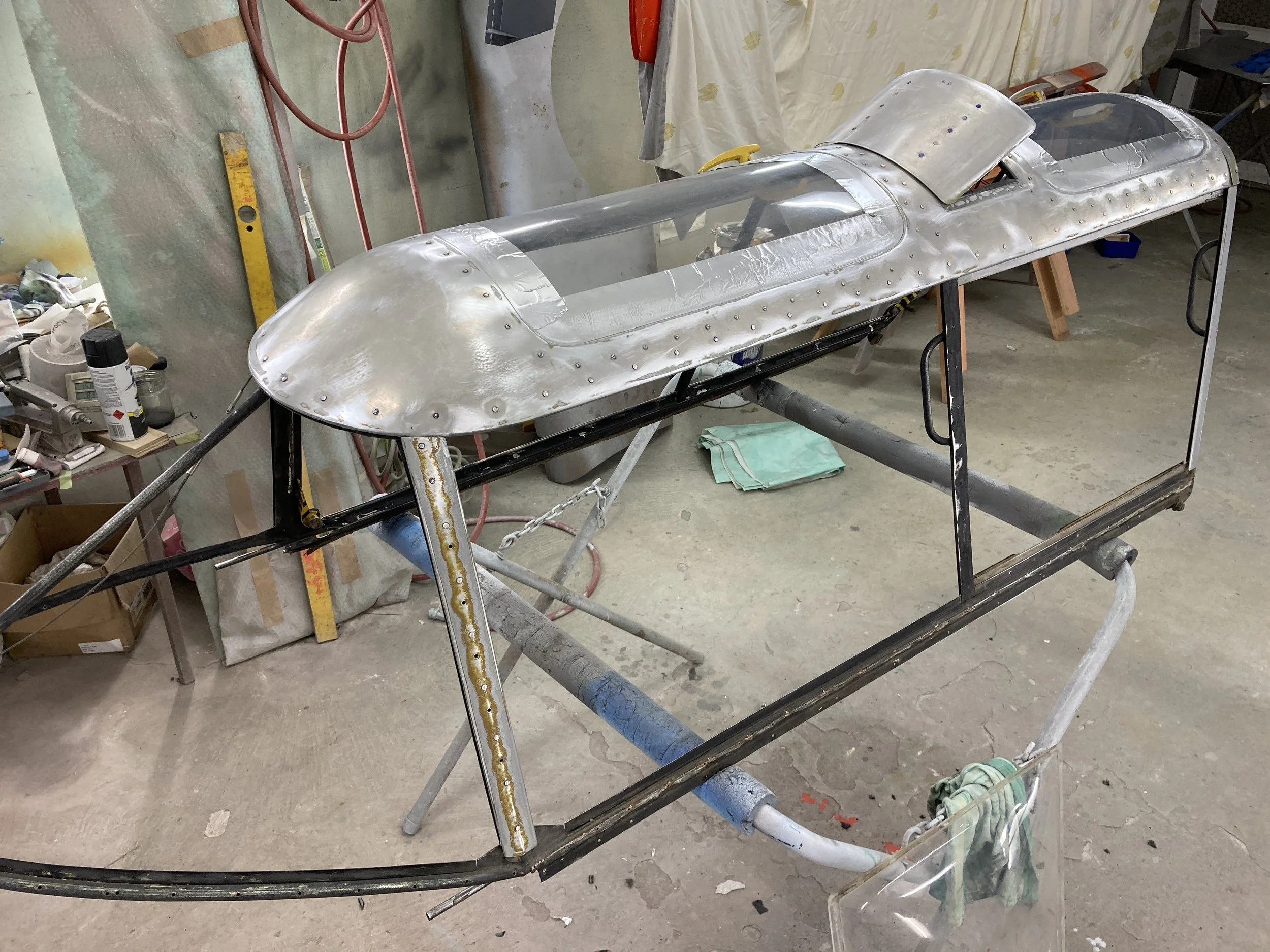
Canopy frame with all glazing removed other than the roof panels.
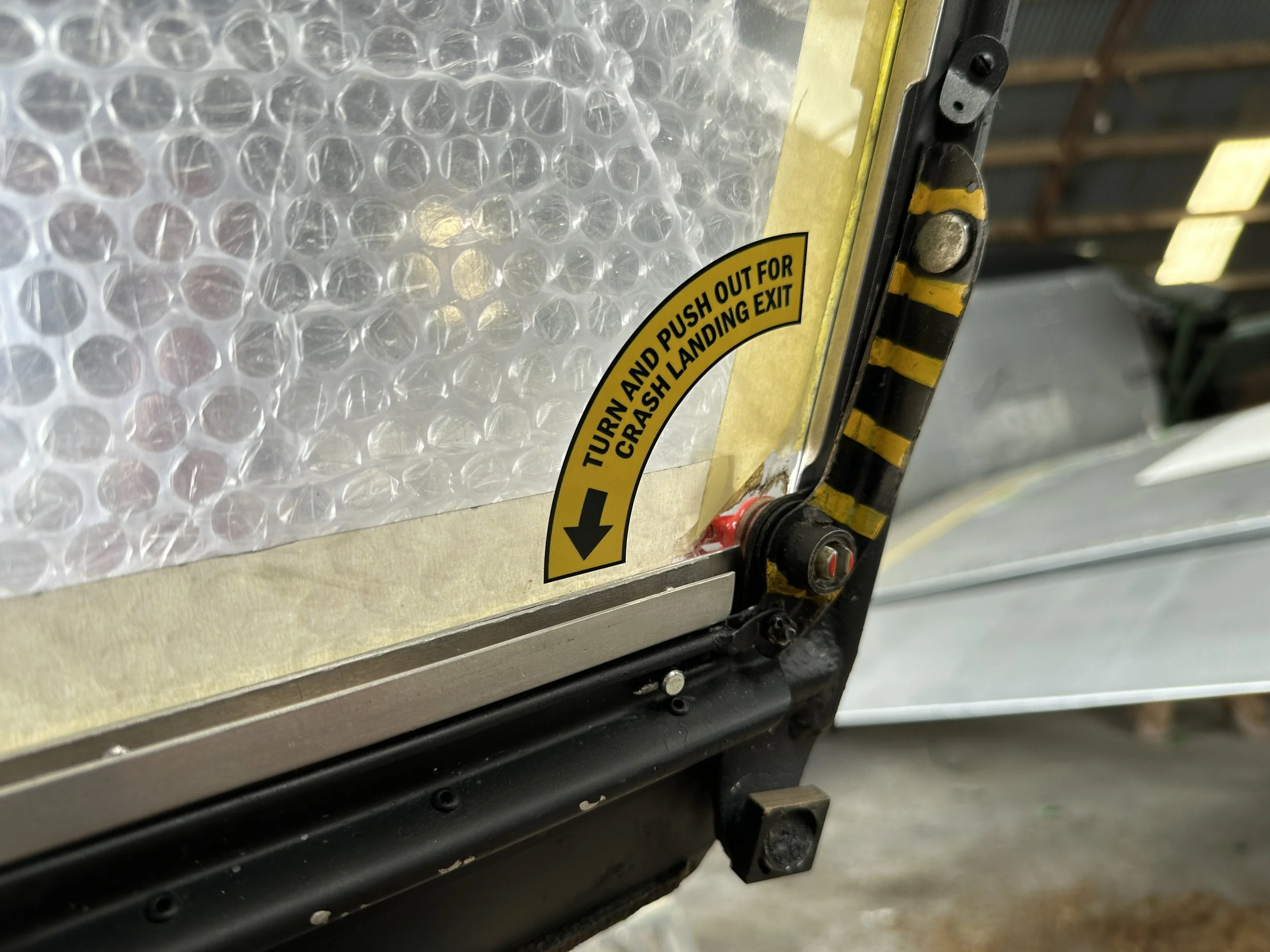
Emergency exit detail.
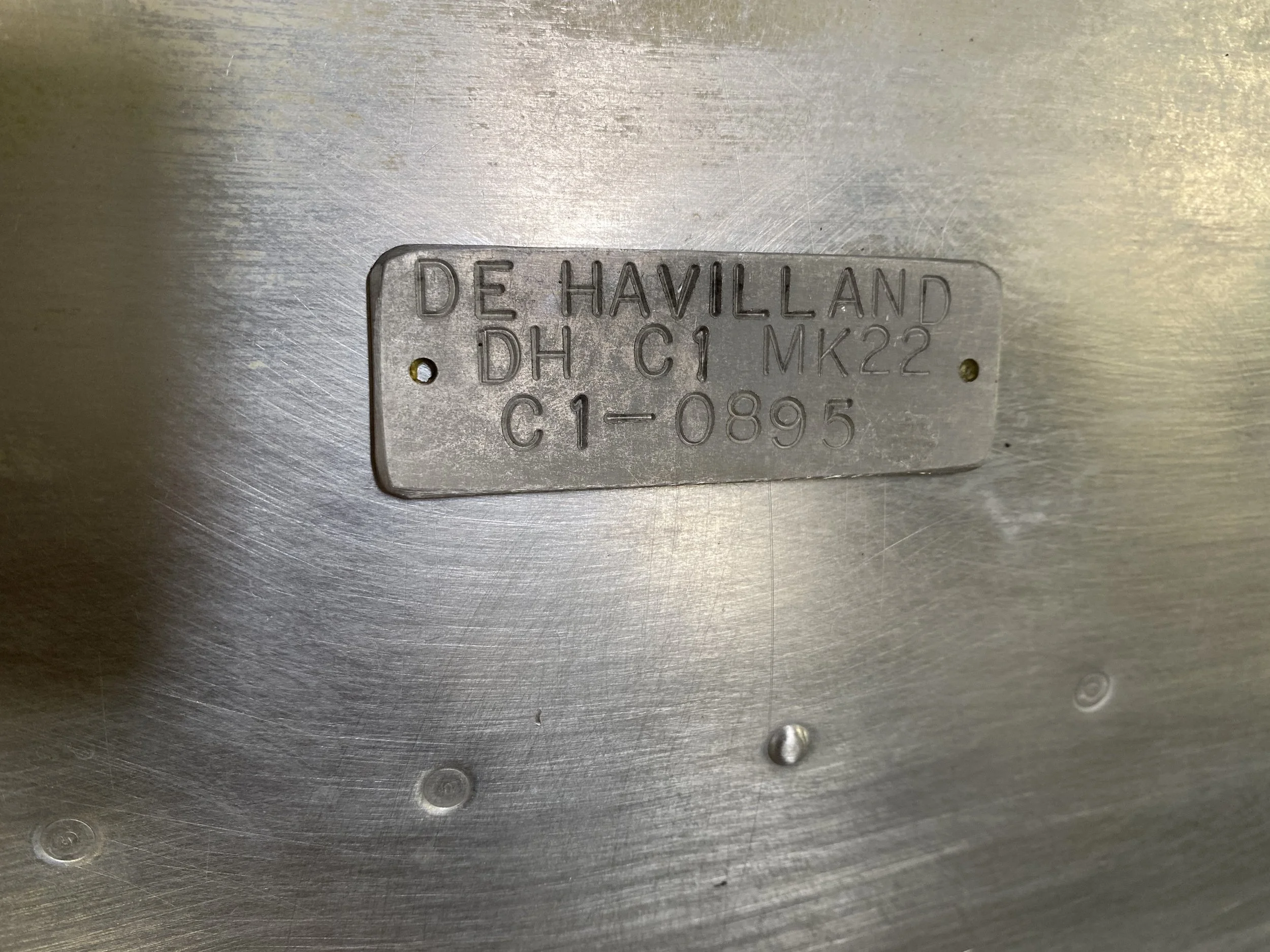
This data plate will have been fitted after WZ865's RAF service – the Mk22 is its civilian designation, while in RAF service it was a Chipmunk T.10.

Original canopy. "Experimental" is the US registration category the aircraft operated under.
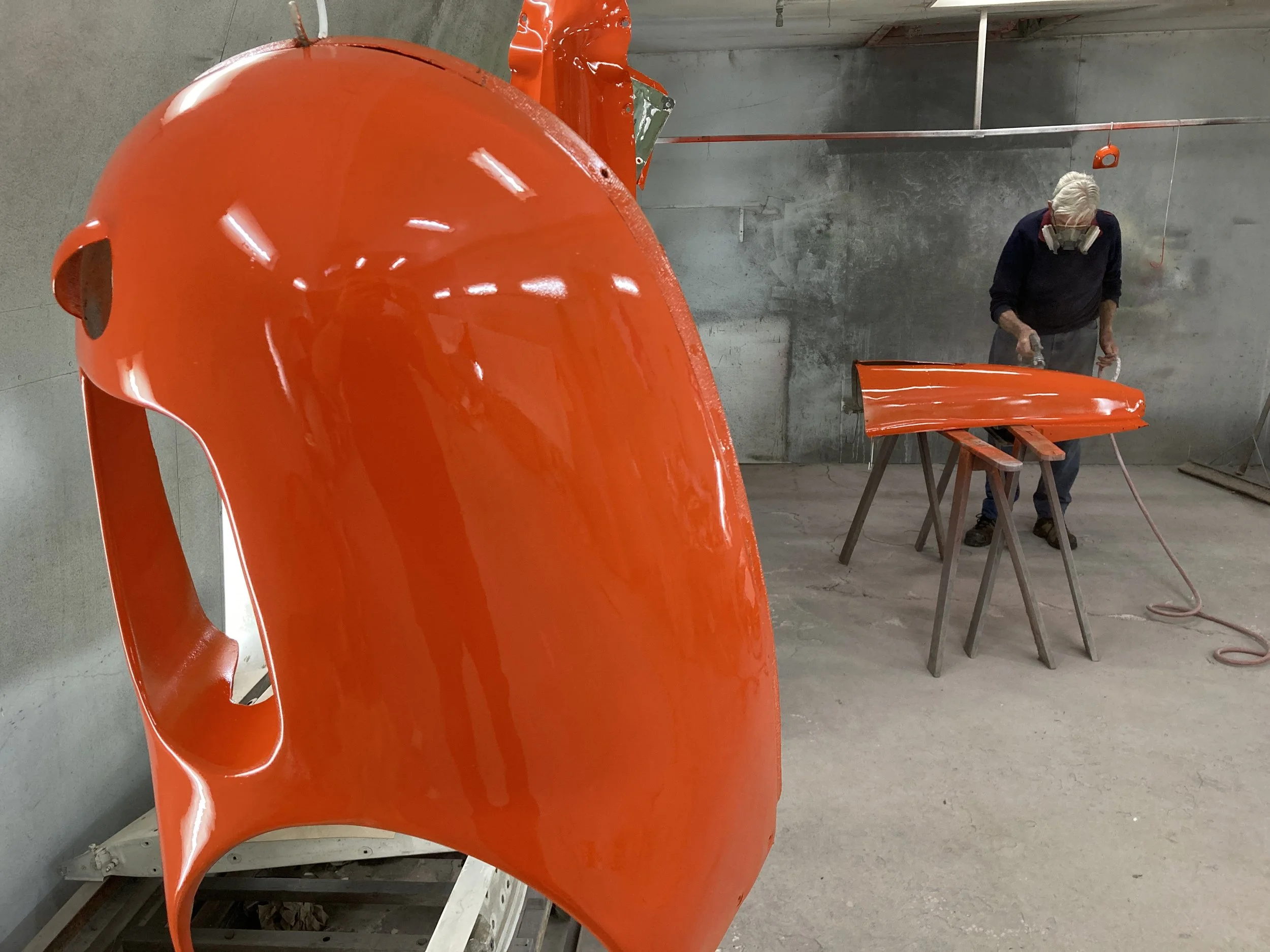
The nose cowling bowl is the only fibreglass component on the aircraft. Here it is just after receiving its gloss orange paint.
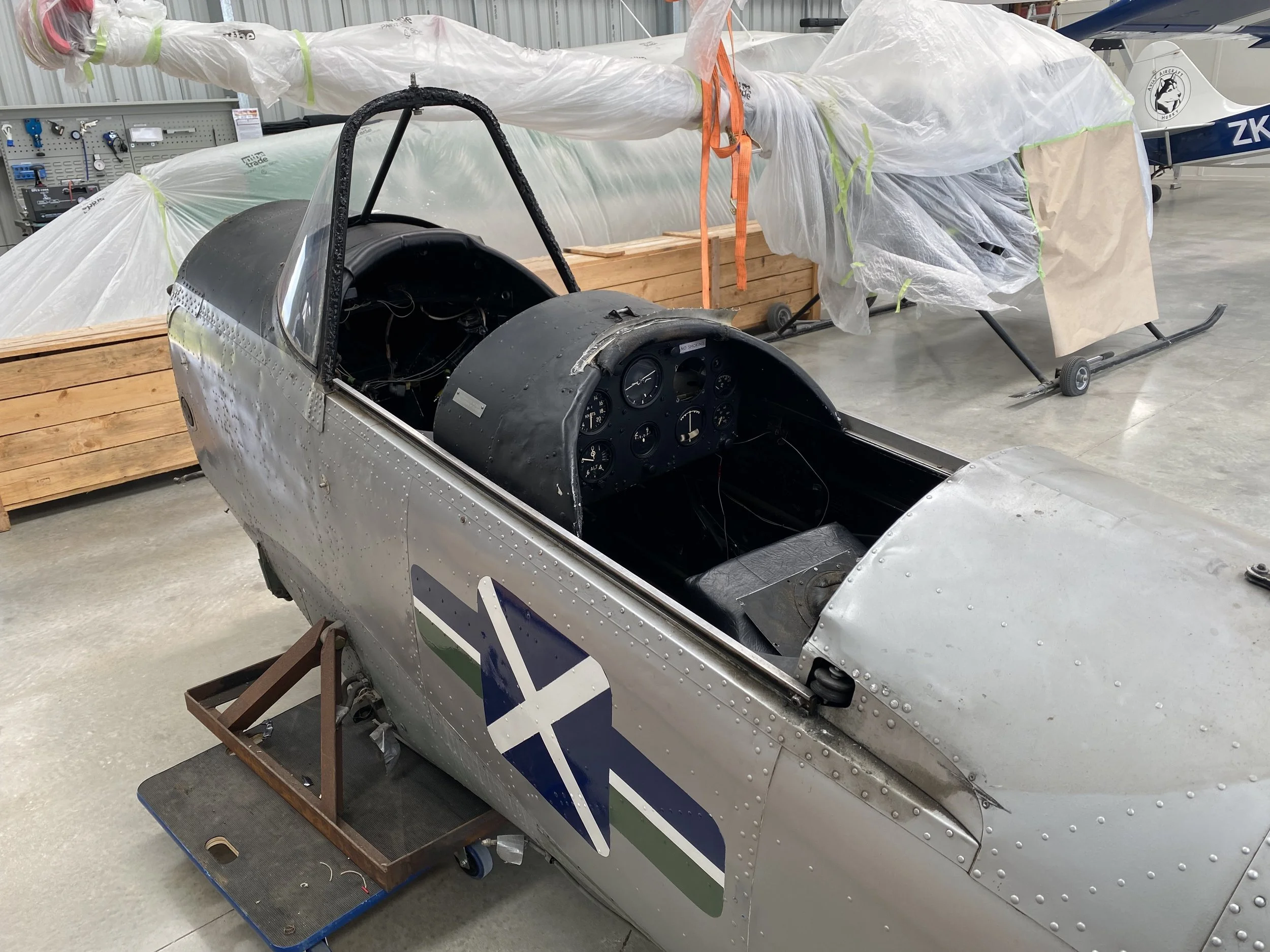
The stripped out fuselage. The restoration process can be measured by the parts count: first it gets bigger and bigger, then starts reducing. When the total gets down to one, it's time to go flying.
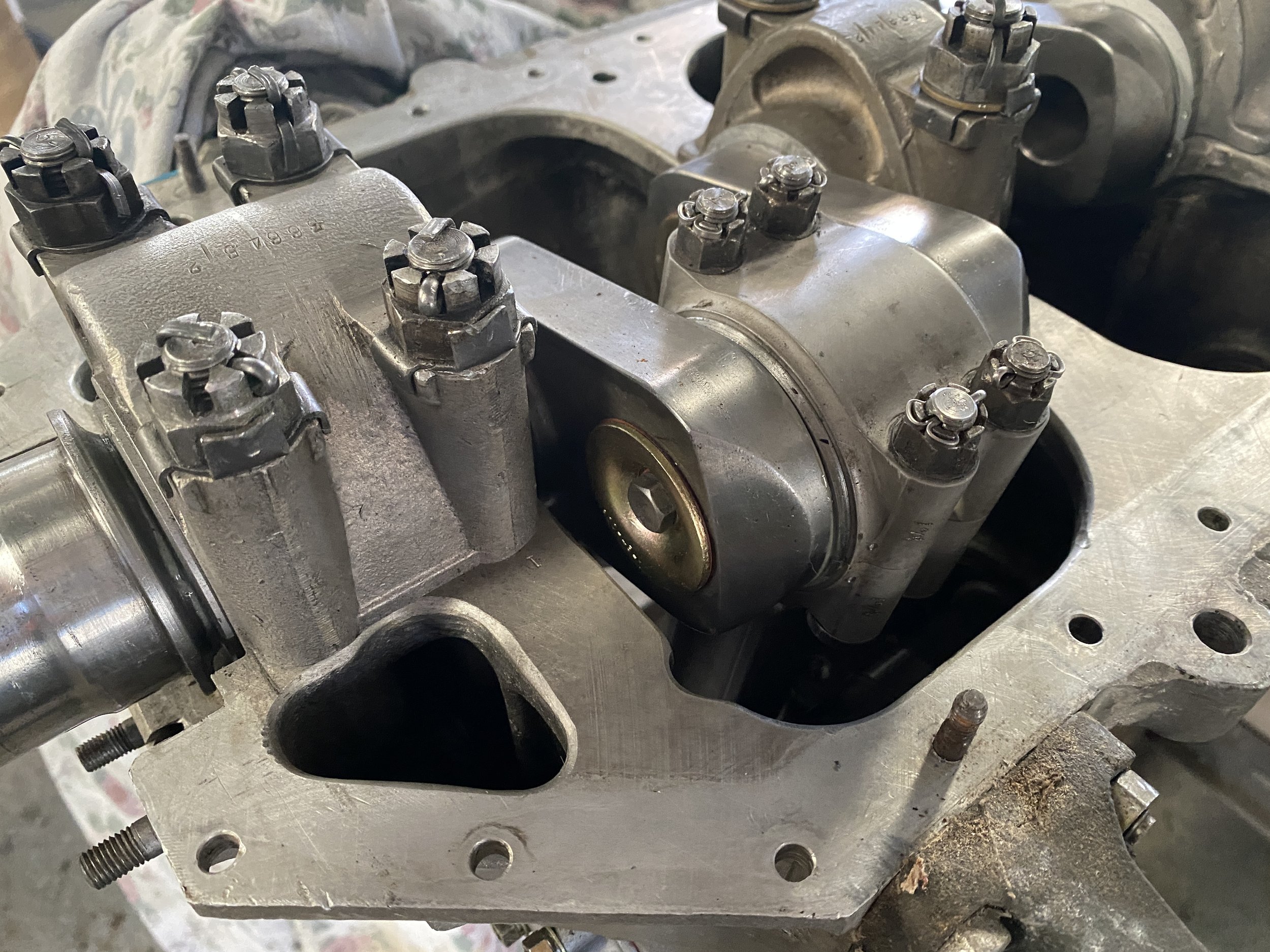
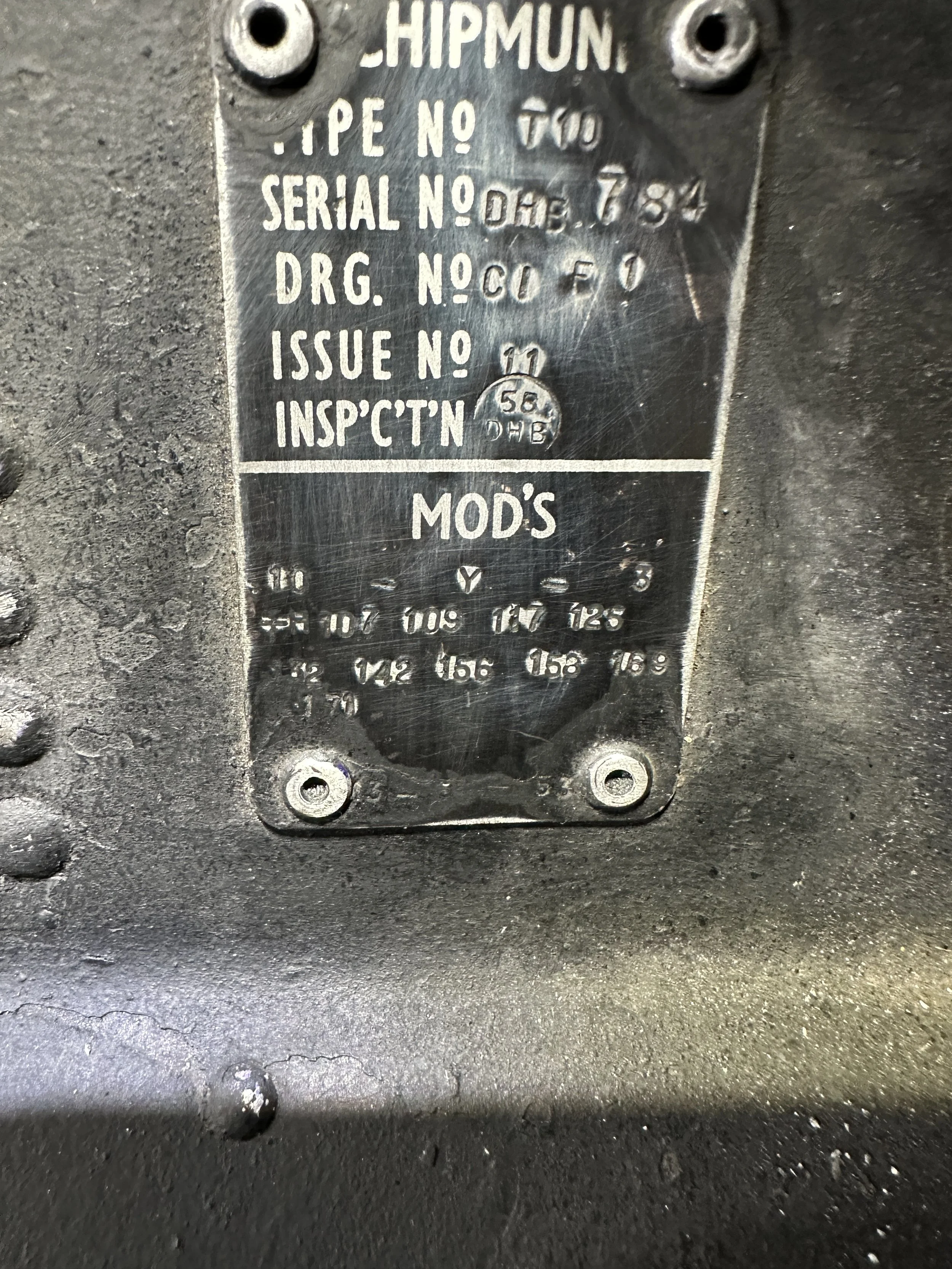
Each major airframe component has a data plate showing its part number, serial number and which of the type's many required modifications had been carried out.

The stripped fuselage in its painting rig.
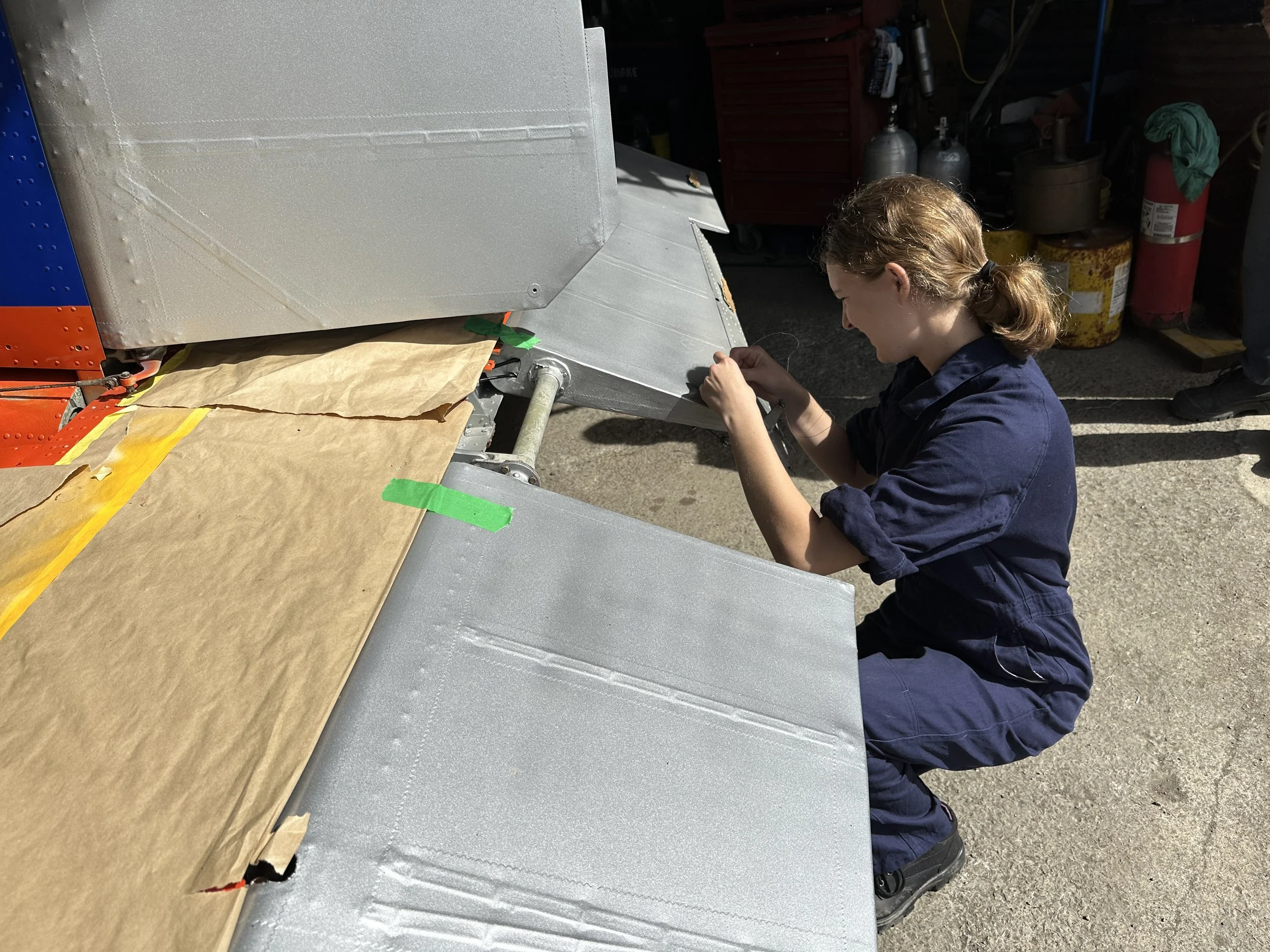
Hannah works on rigging the elevator trim tab.
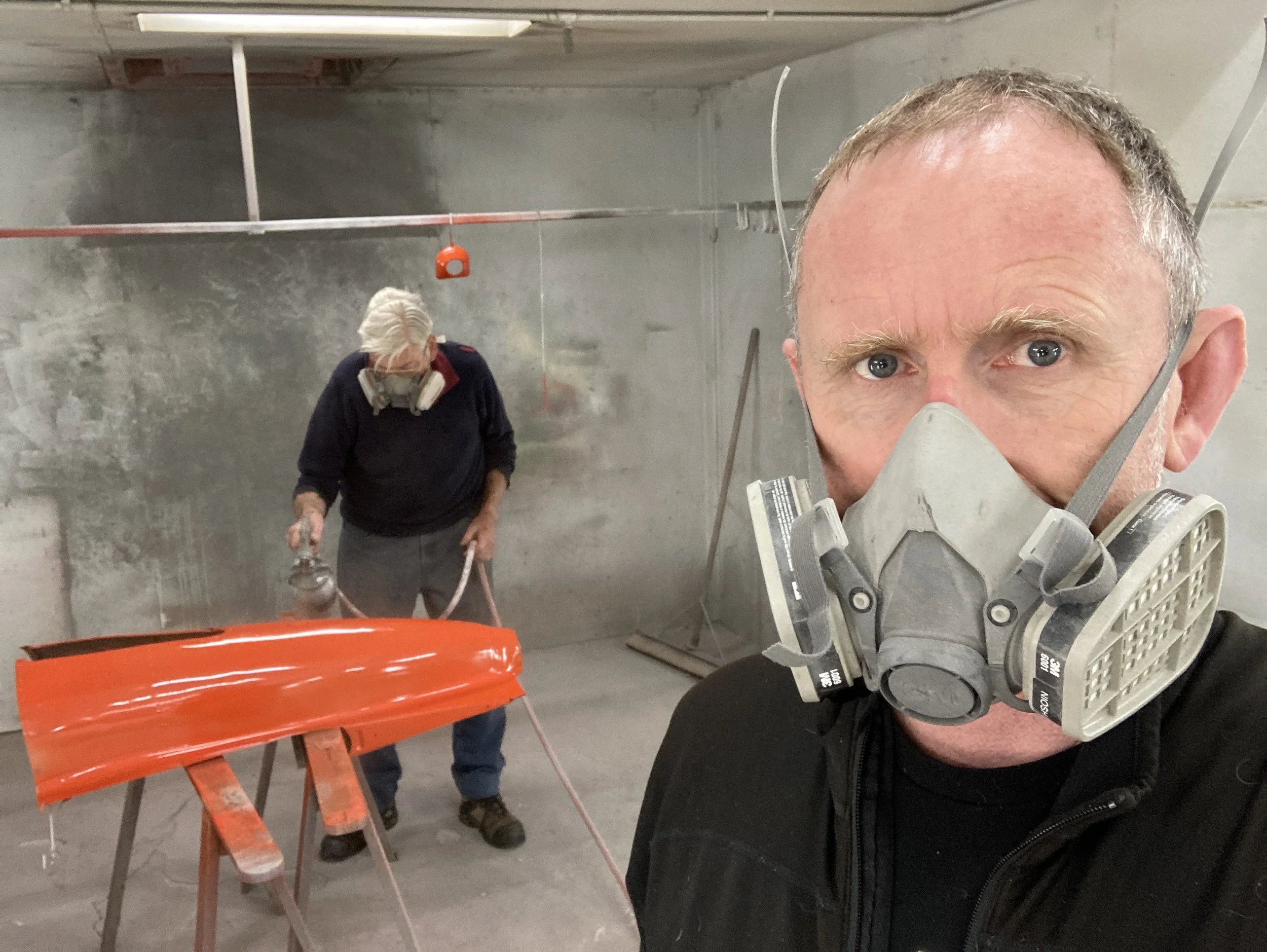
Stan painting the tail cone.

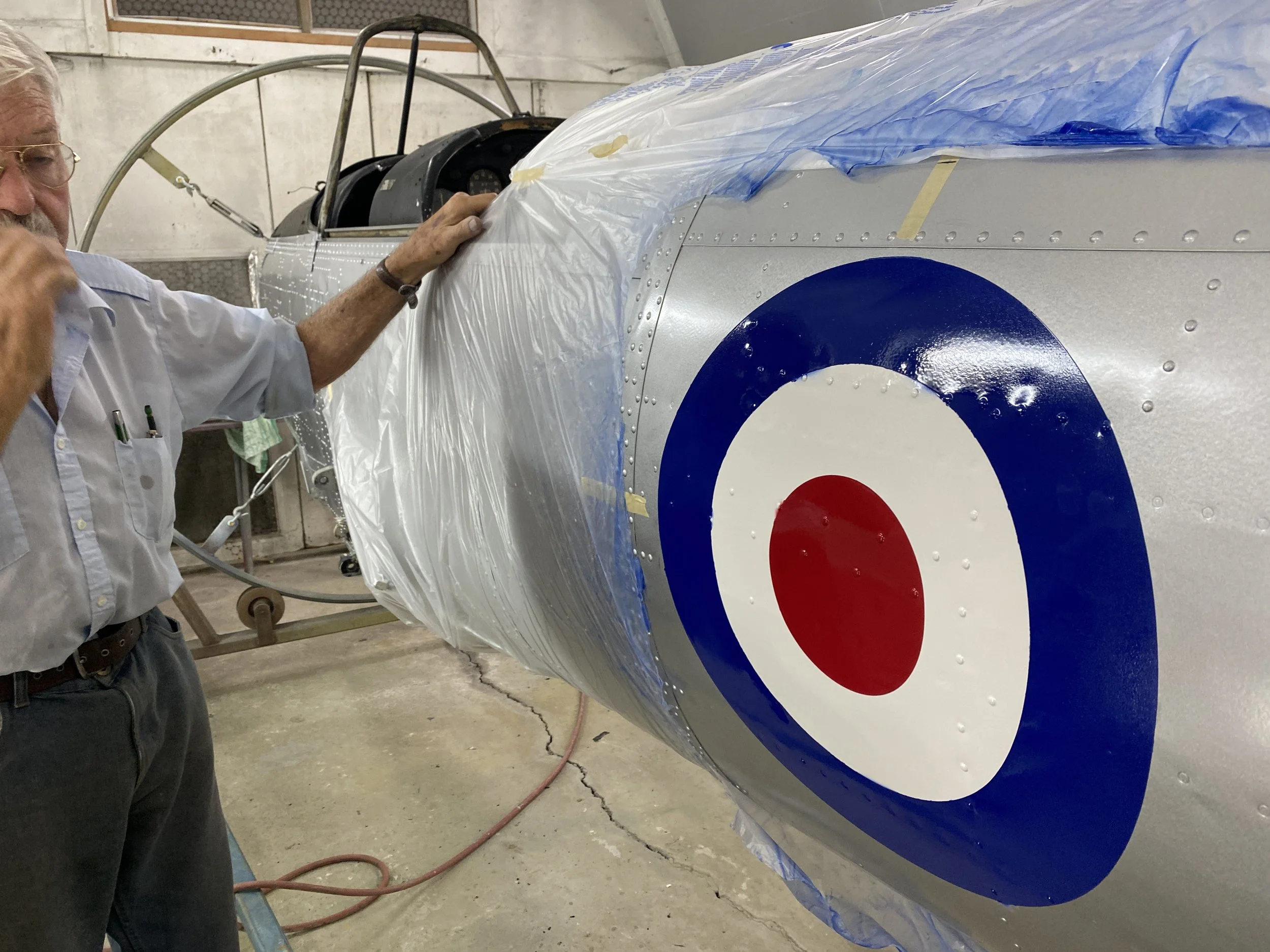
All roundels were masked and painted, one colour at a time – quite a time-consuming but worthwhile process. Original RAF documentation guided proportions and placement.
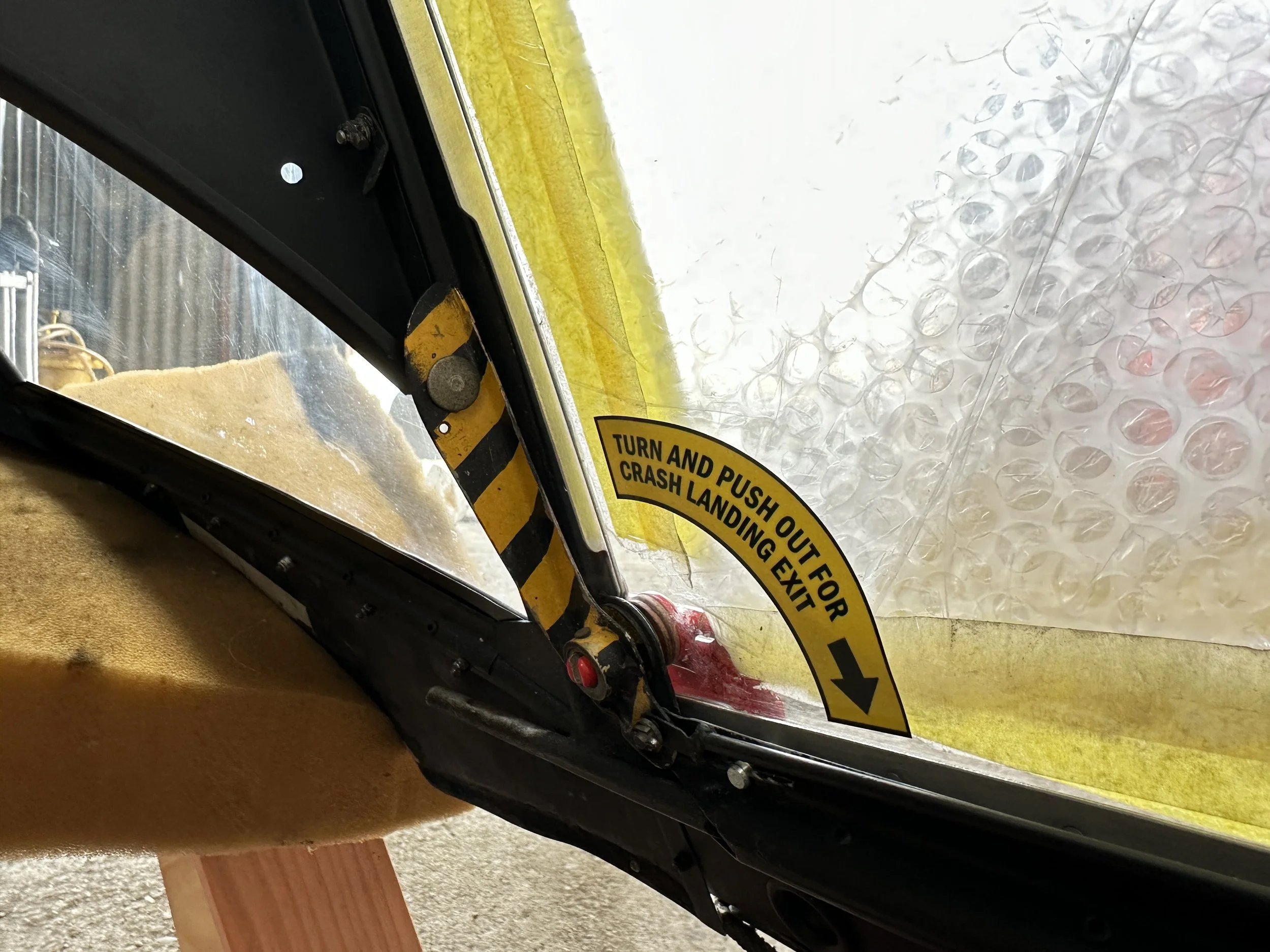
We created custom emergency exit decals for both cockpits. Rotating. the striped lever 90 degrees allows 6 pins holding the window panel in place to fall out.

The original spinner was cracked and dented so we decided to replace it with one in better condition.
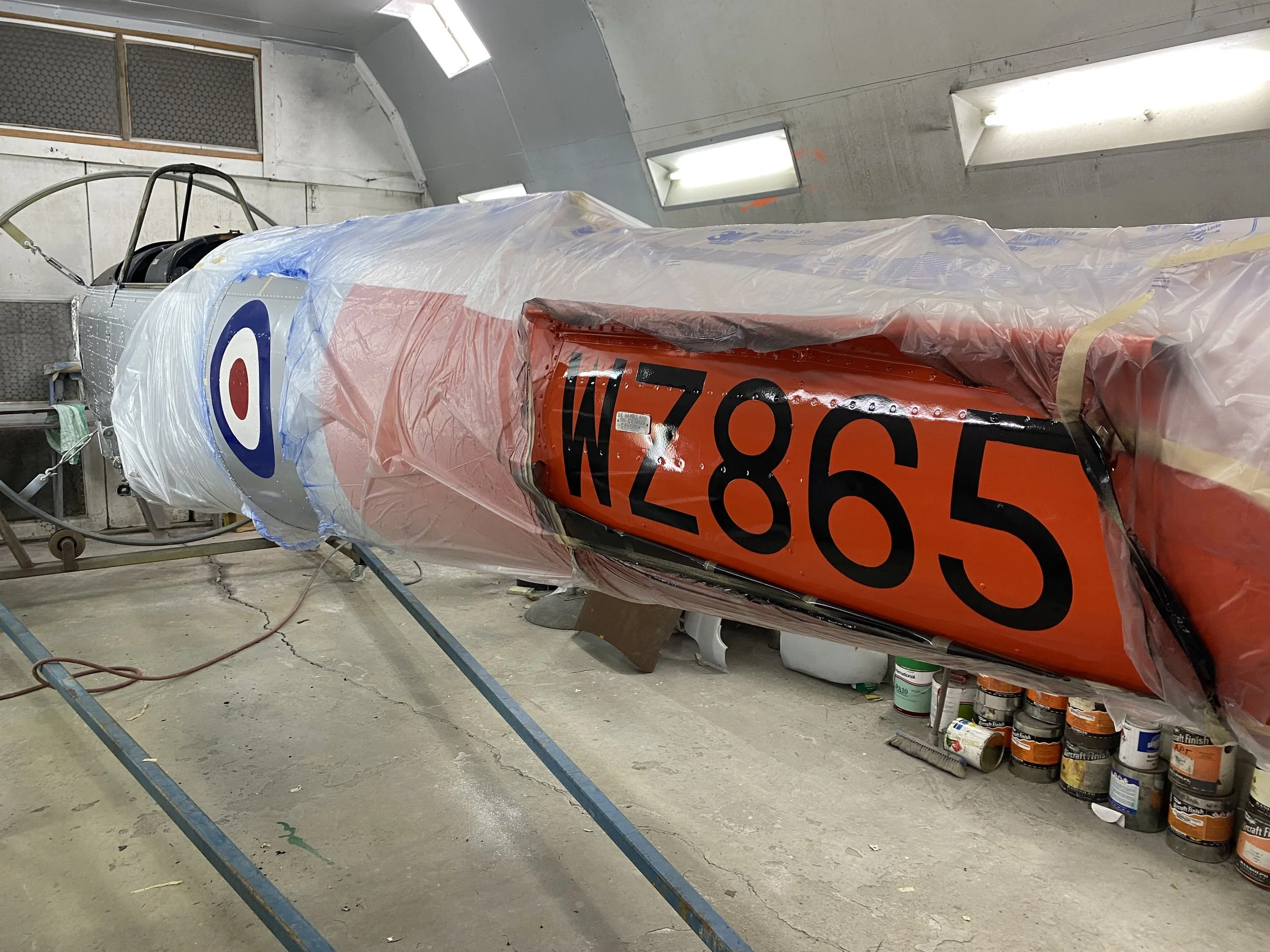
Fuselage serial number. We paid close attention to font, size and placement of all markings, and painted them on rather than using vinyl lettering.
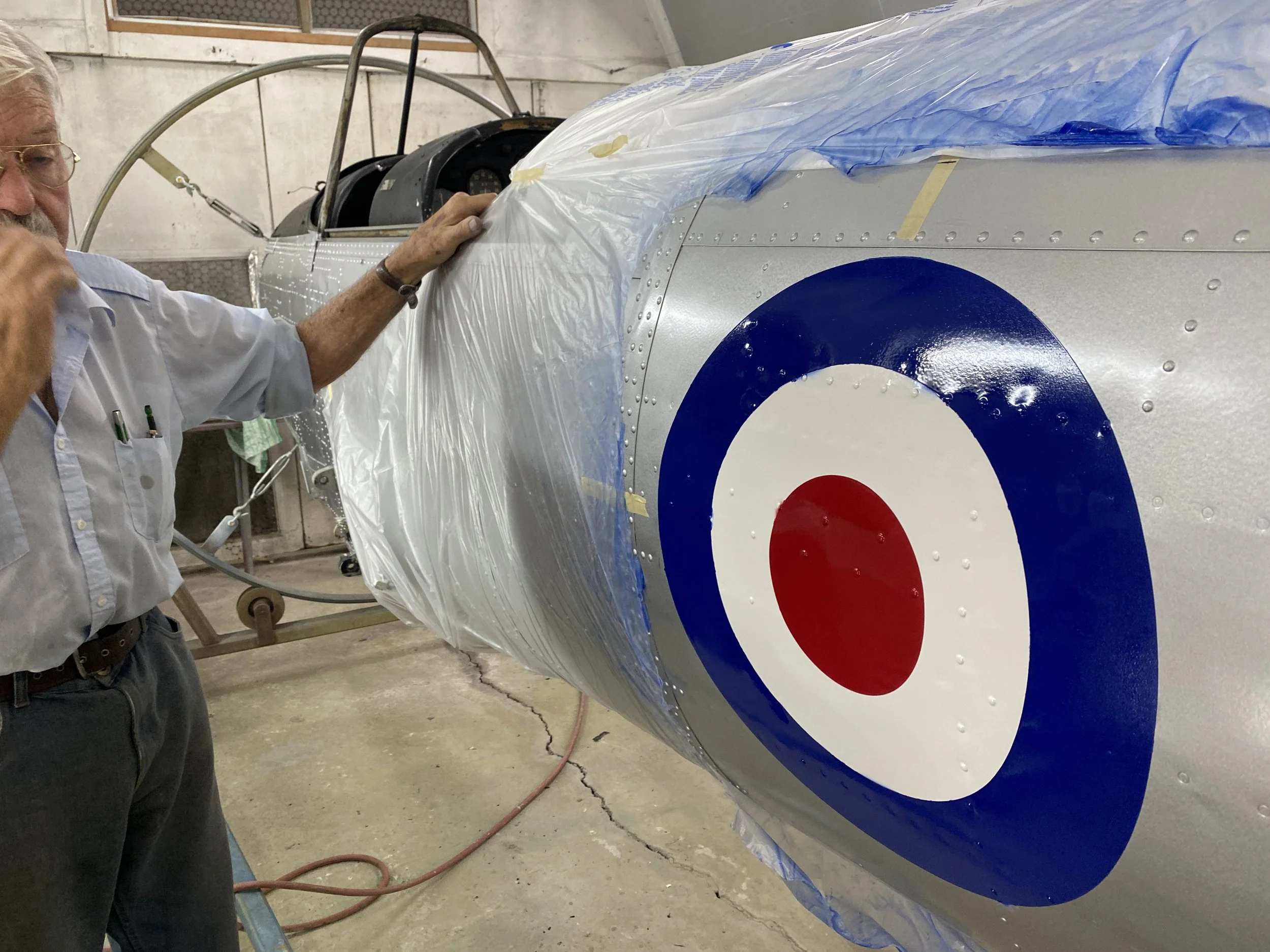
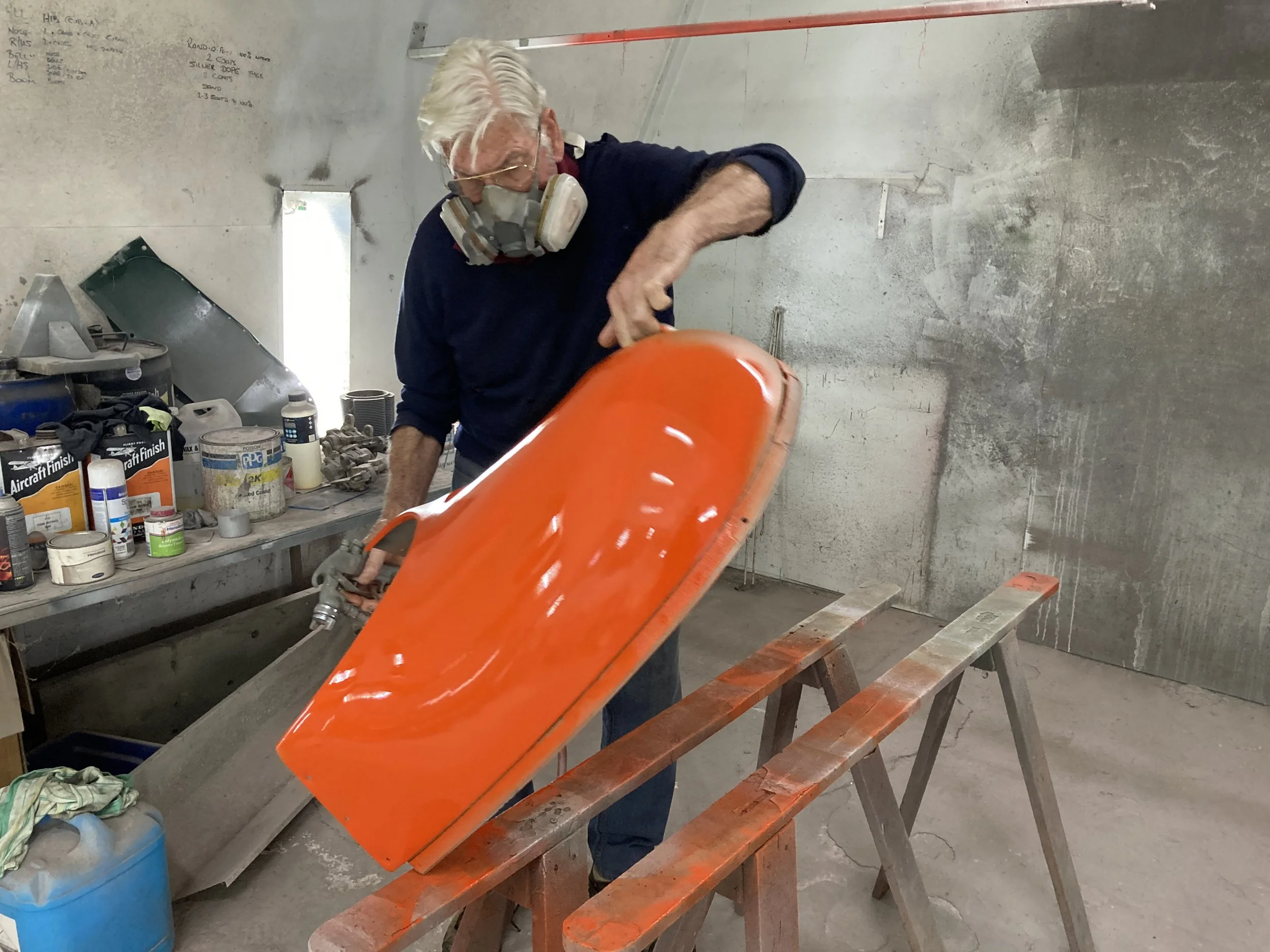
Stan painting the nose cowling bowl.

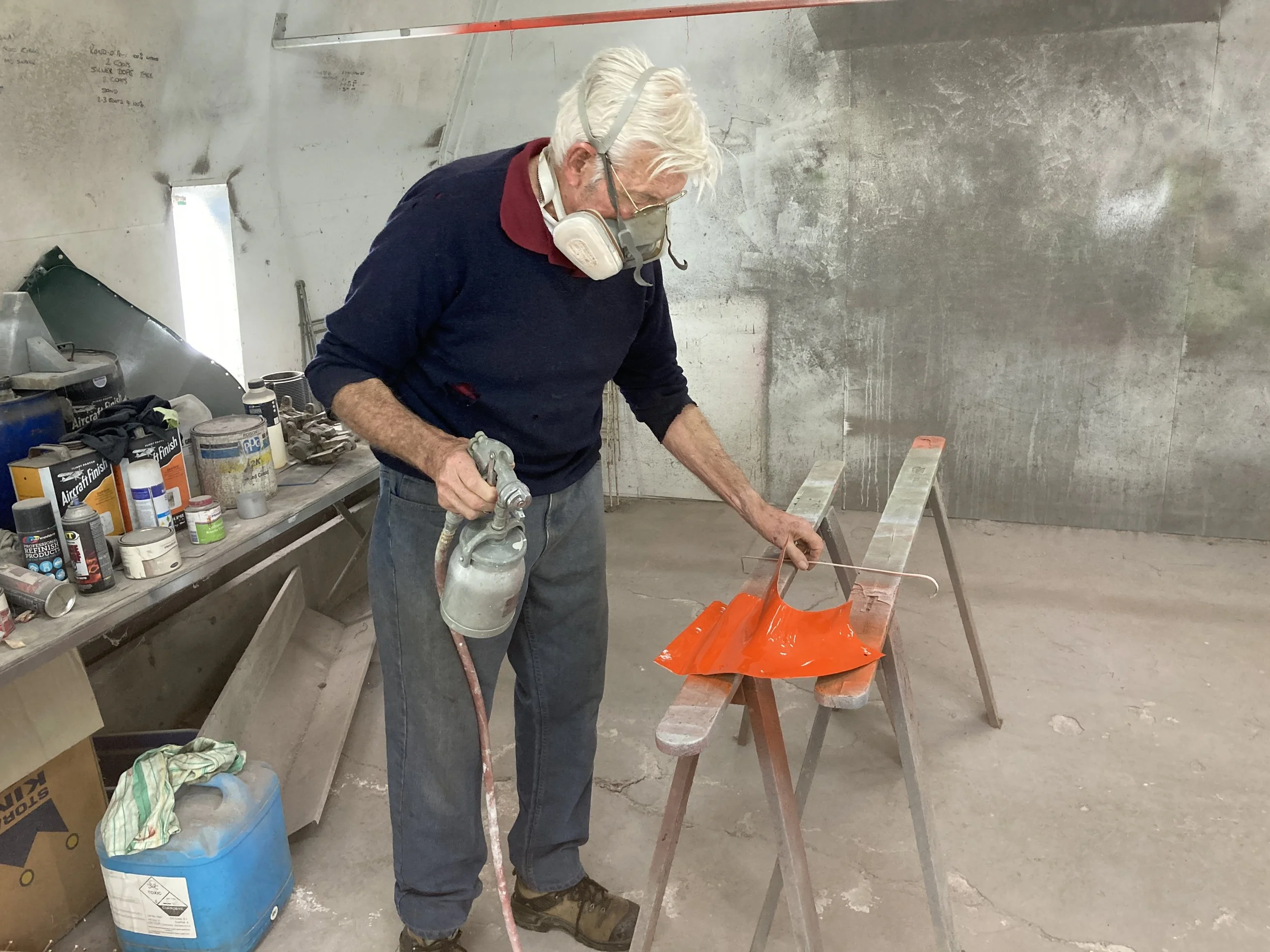
Stan at work in the paint shop.
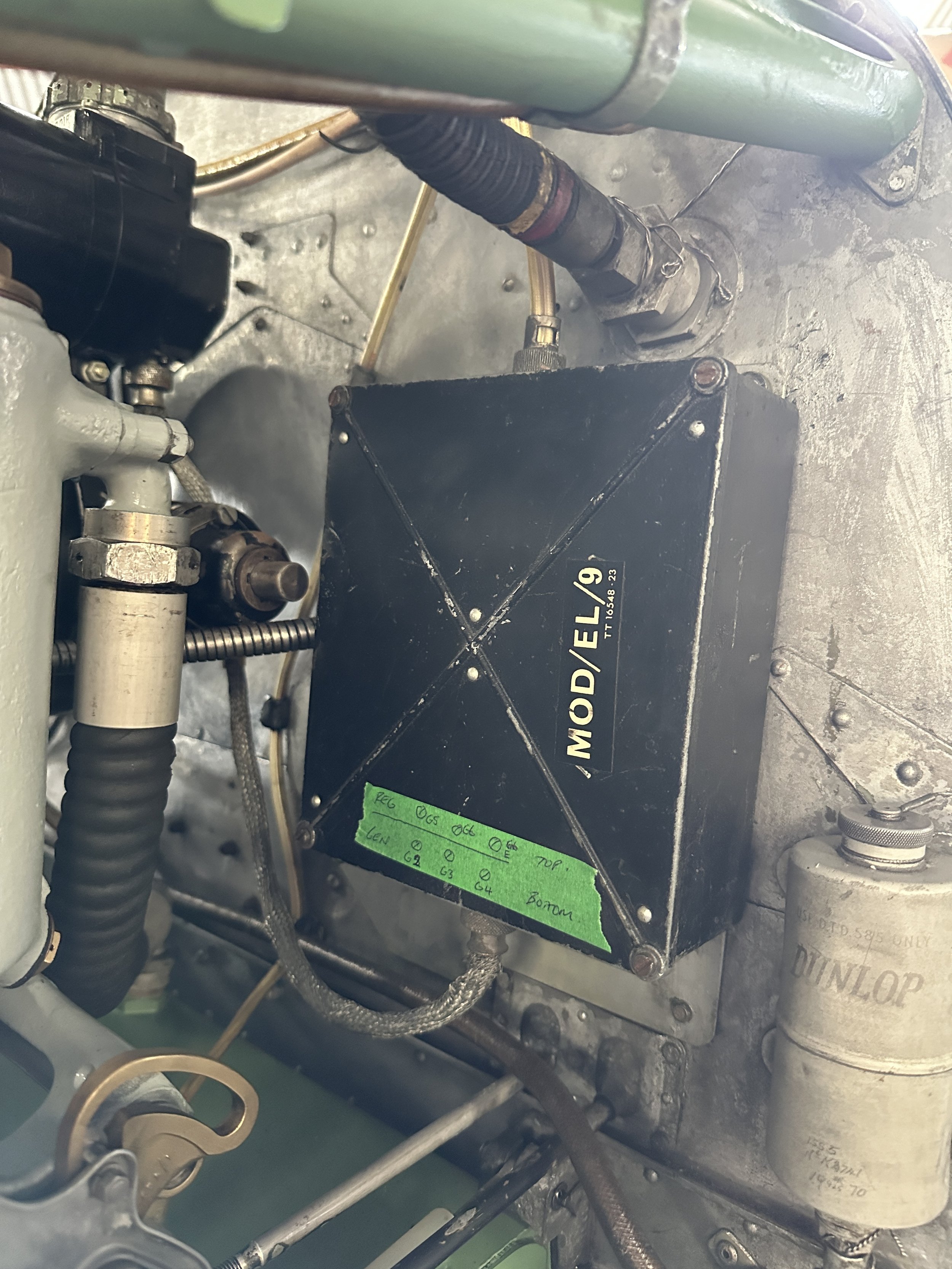
The ignition suppressor in place.
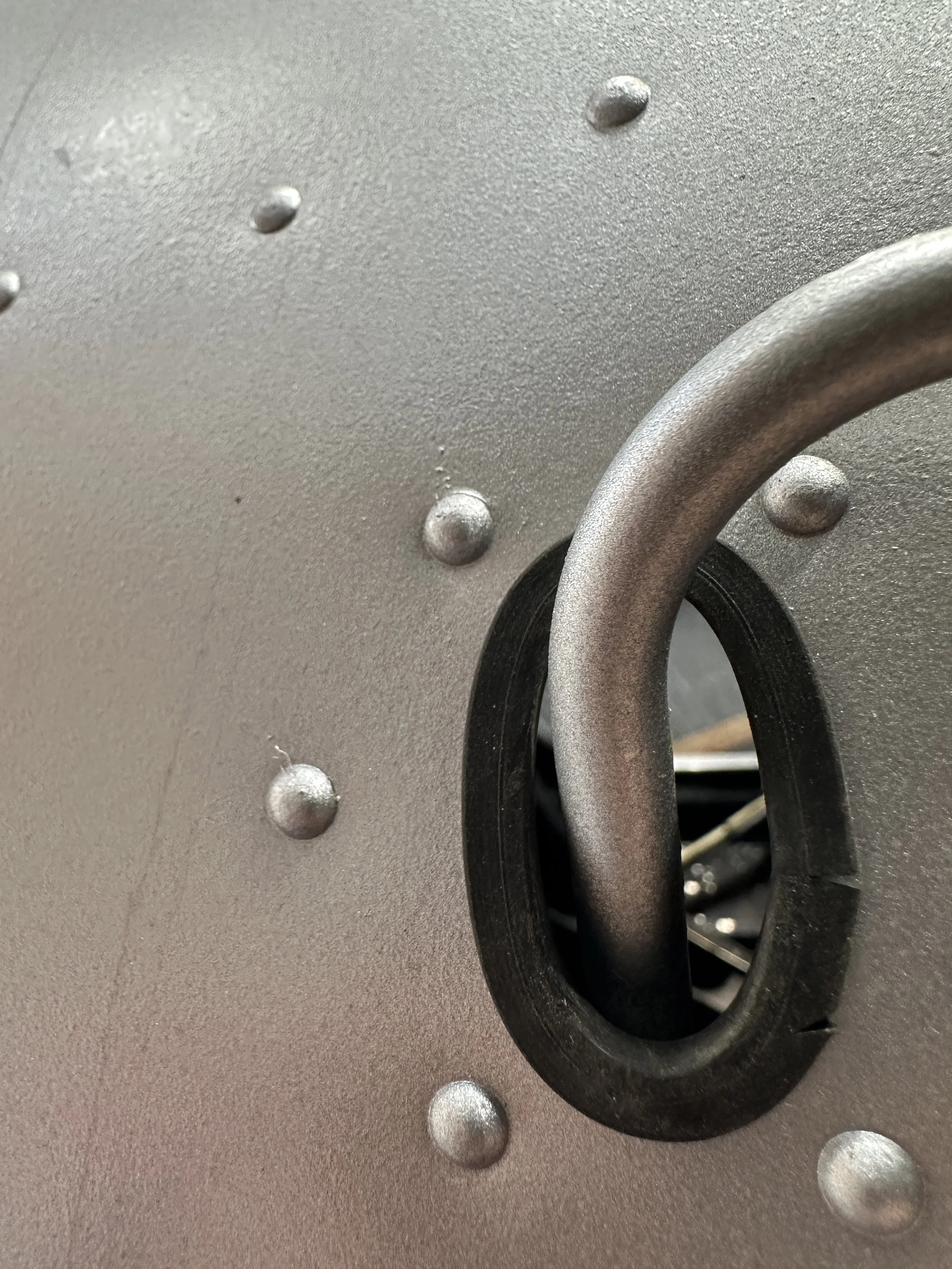
Tiny details... fitting a custom rubber grommet to protect a pitot line as it enters. thefuselage.

Stripped fairing panels waiting for paint.

The splined propeller shaft waiting for its prop.
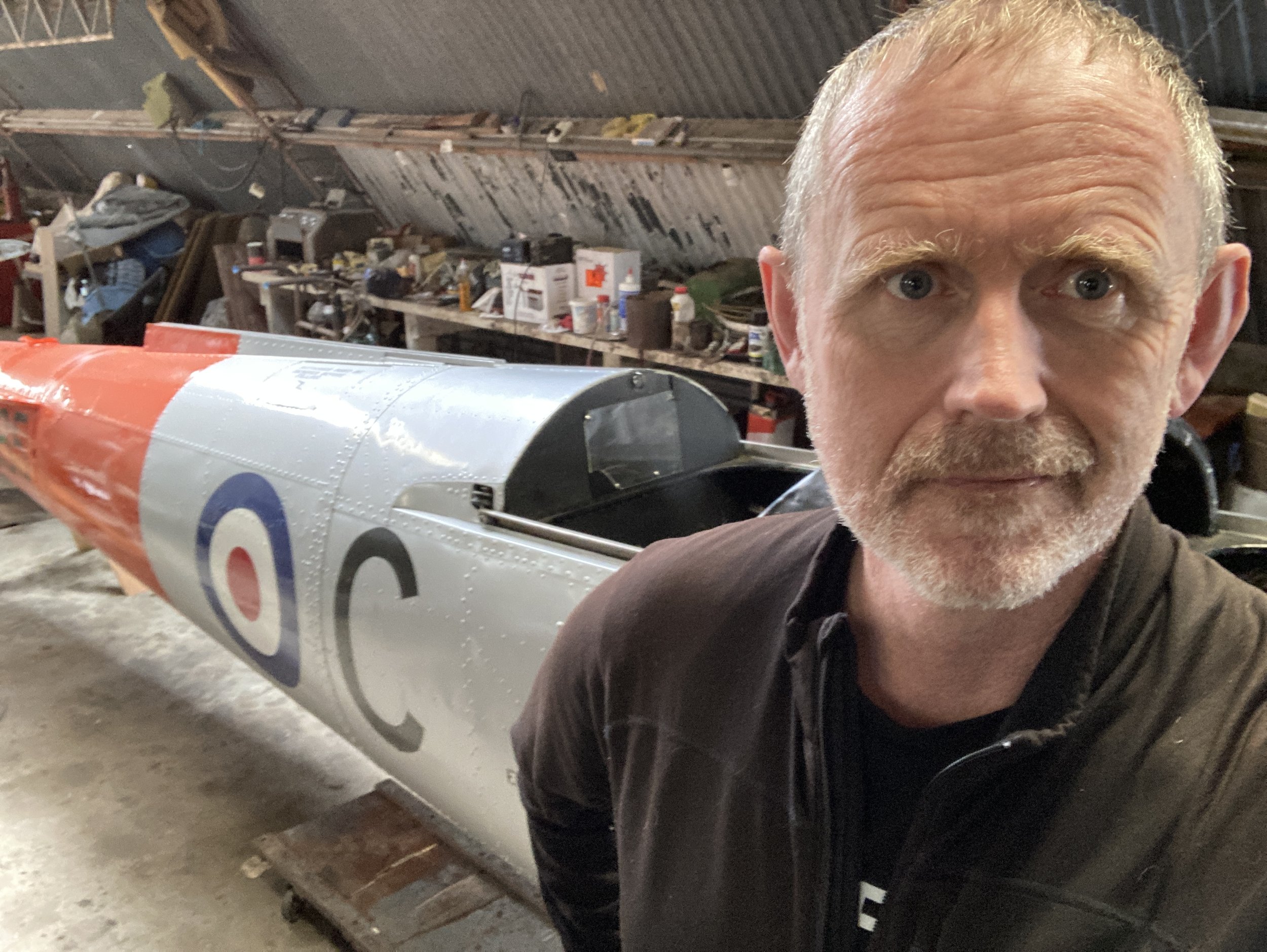
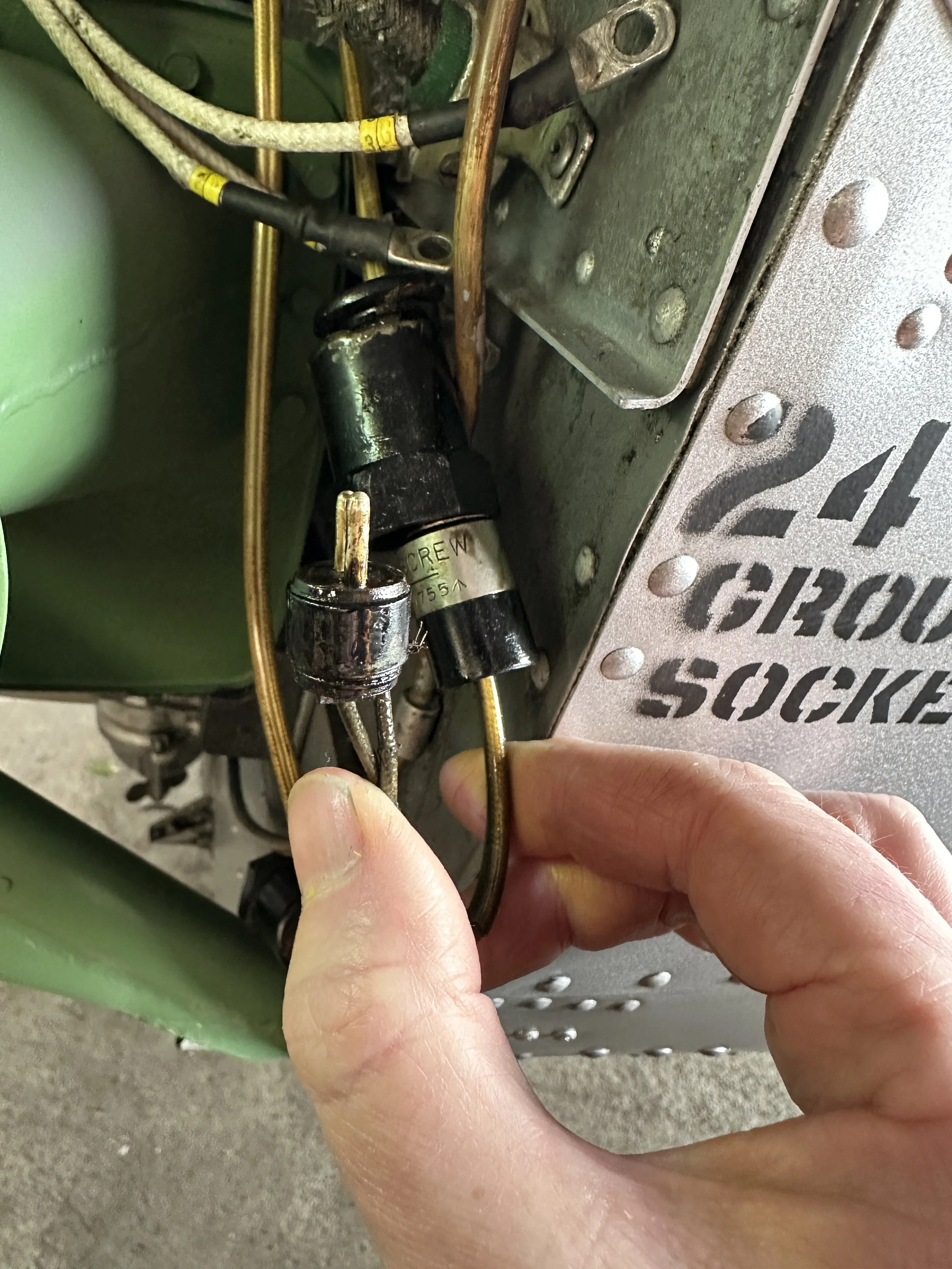
Oil temperature bulb.
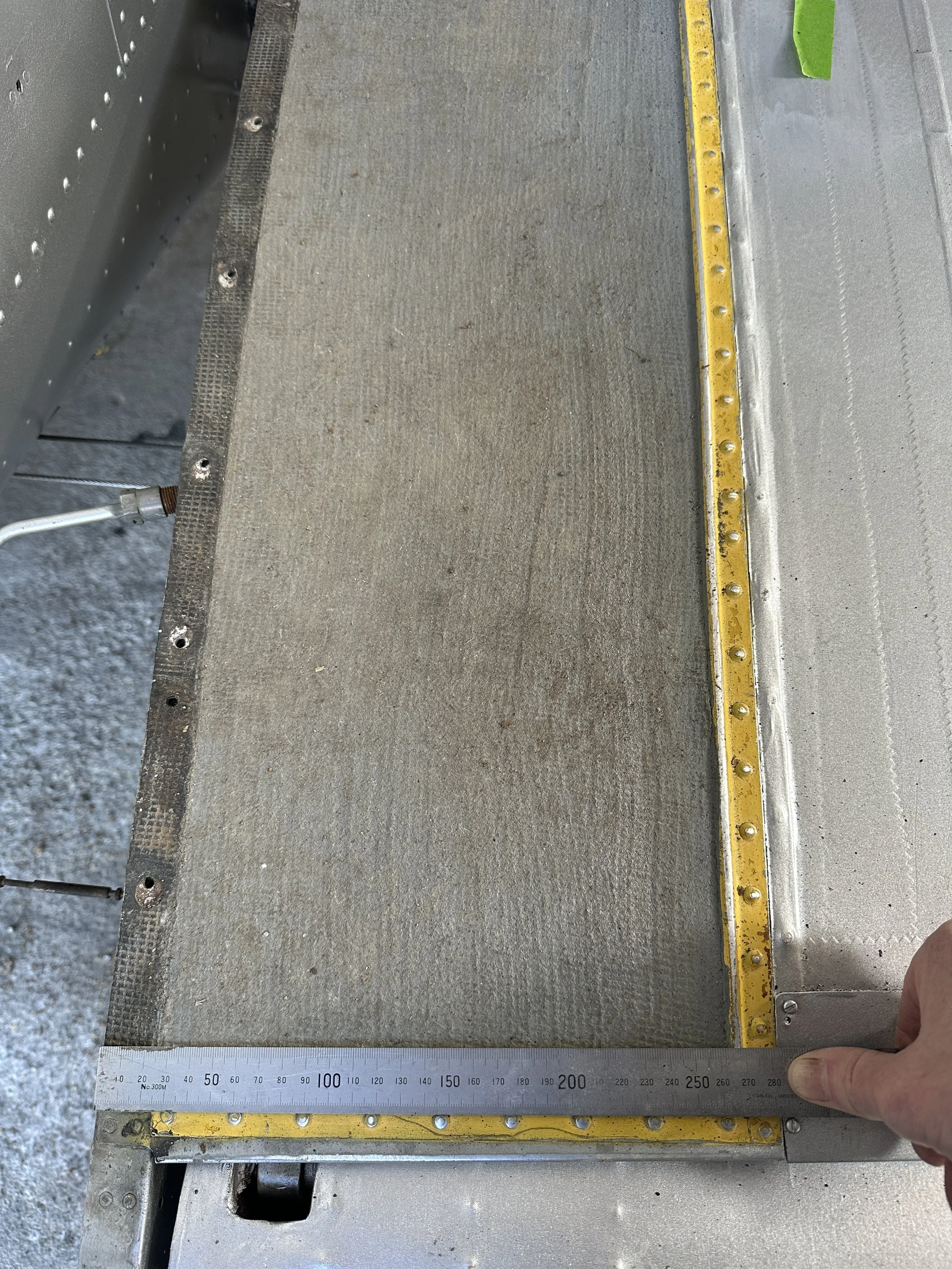
Measuring the wing walk material for replacement. We ultimately decided to repaint this section and only replace the flap walkway with modern non-slip material.

The painted fuselage waiting for... just about everything else!
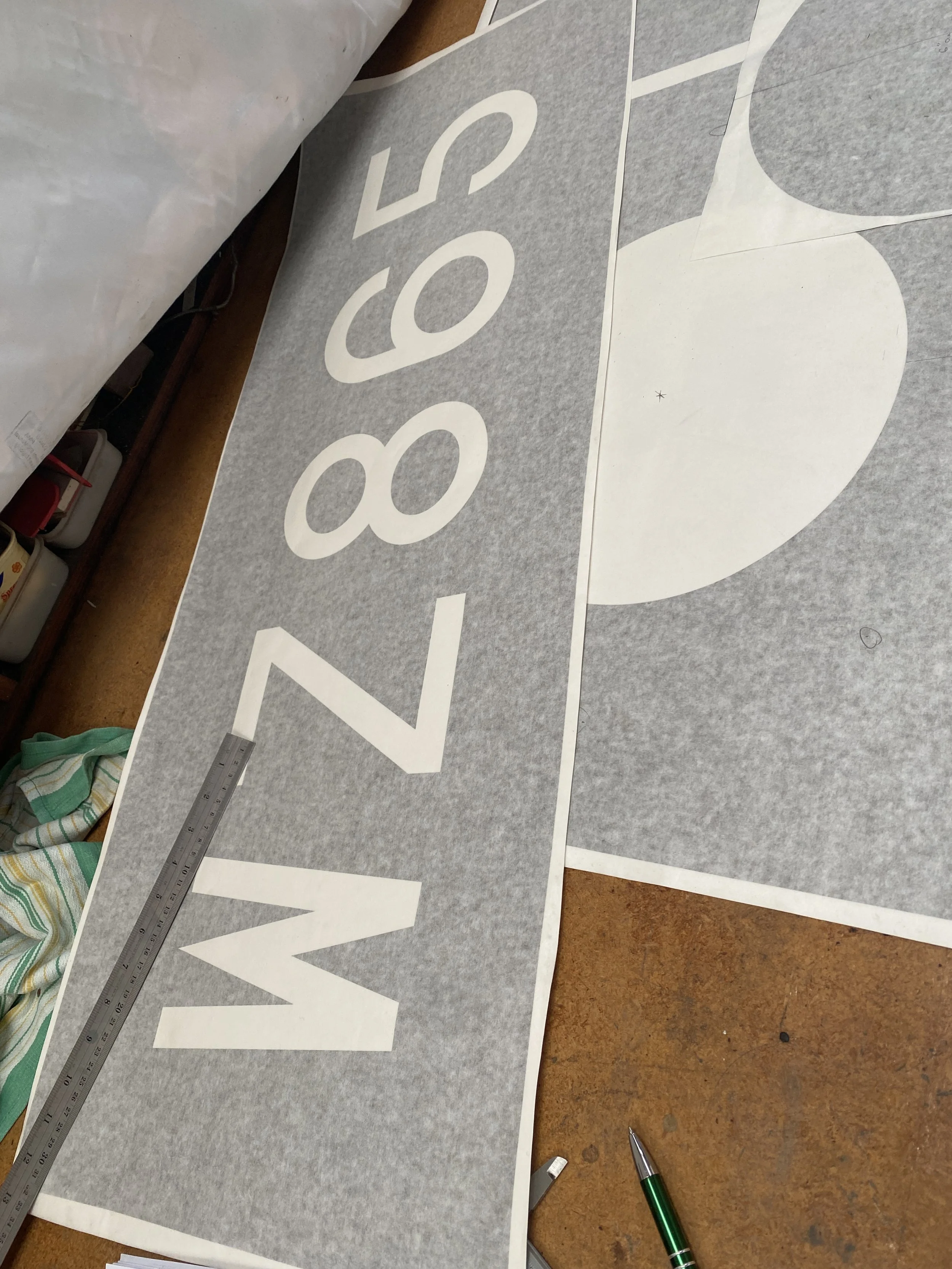
Rejected serial number stencils - the letter spacing was too wide. The wing and fuselage serial numbers are very prominent on the Chipmunk, so it was important to get this detail right.
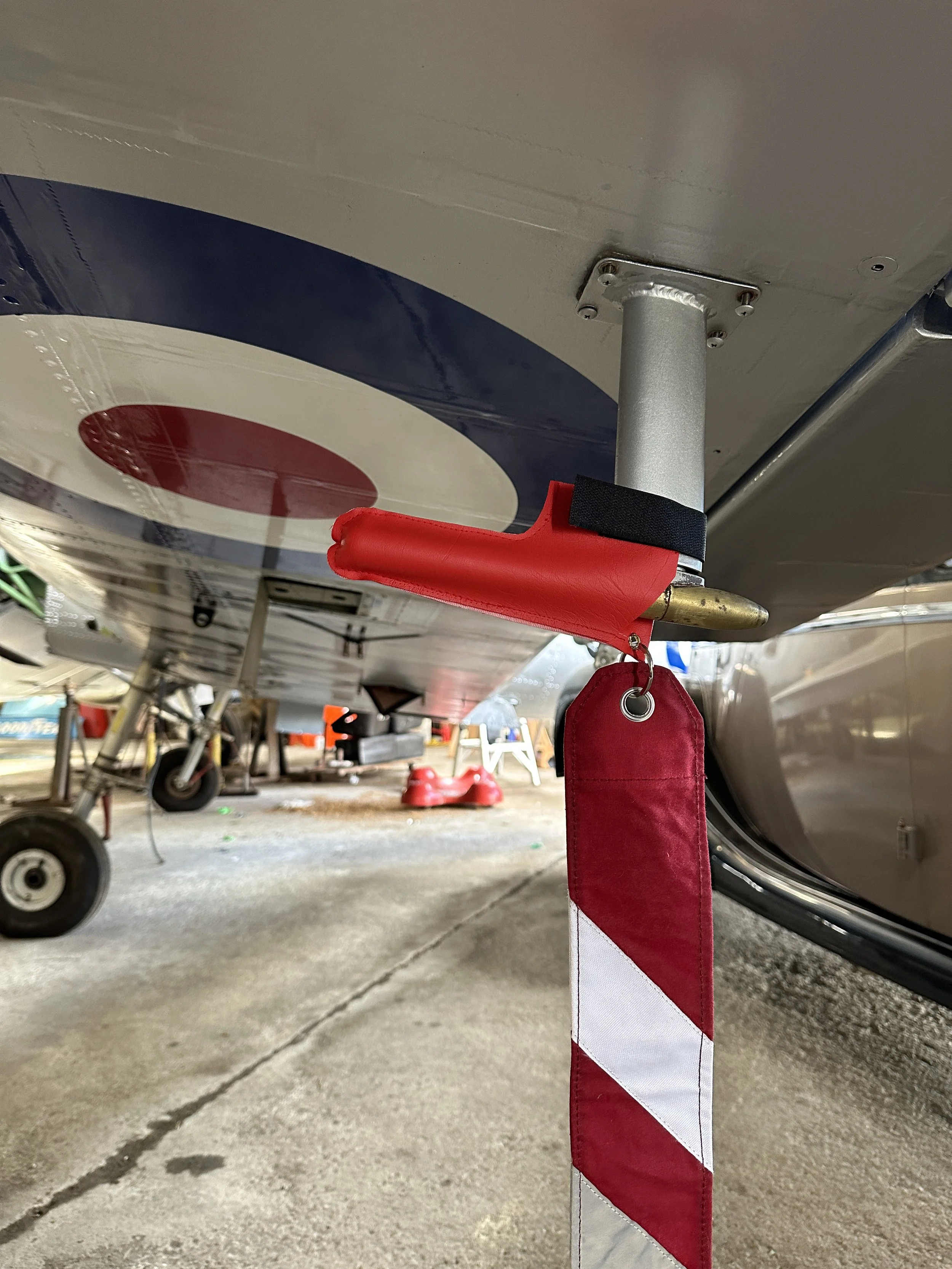



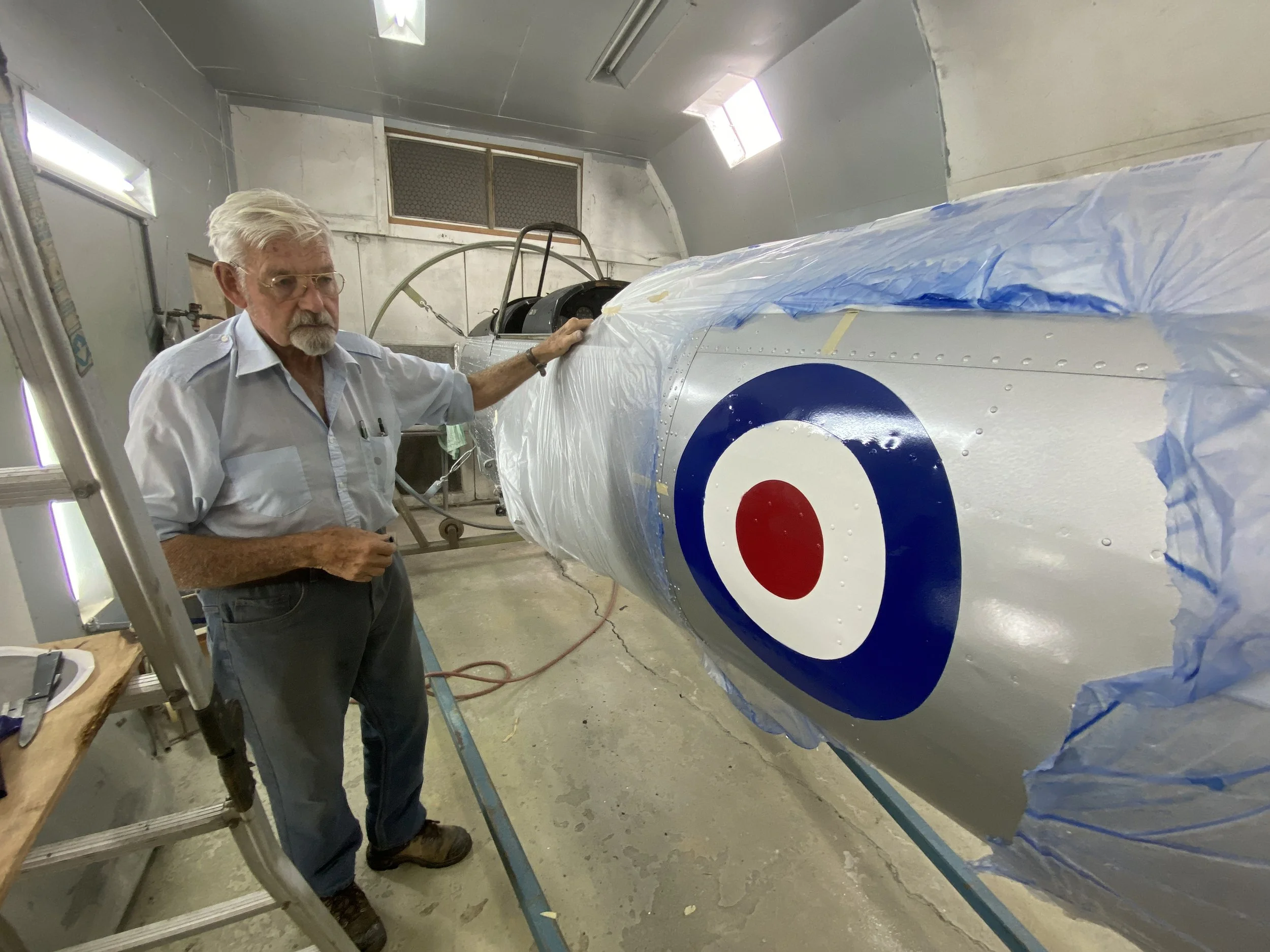
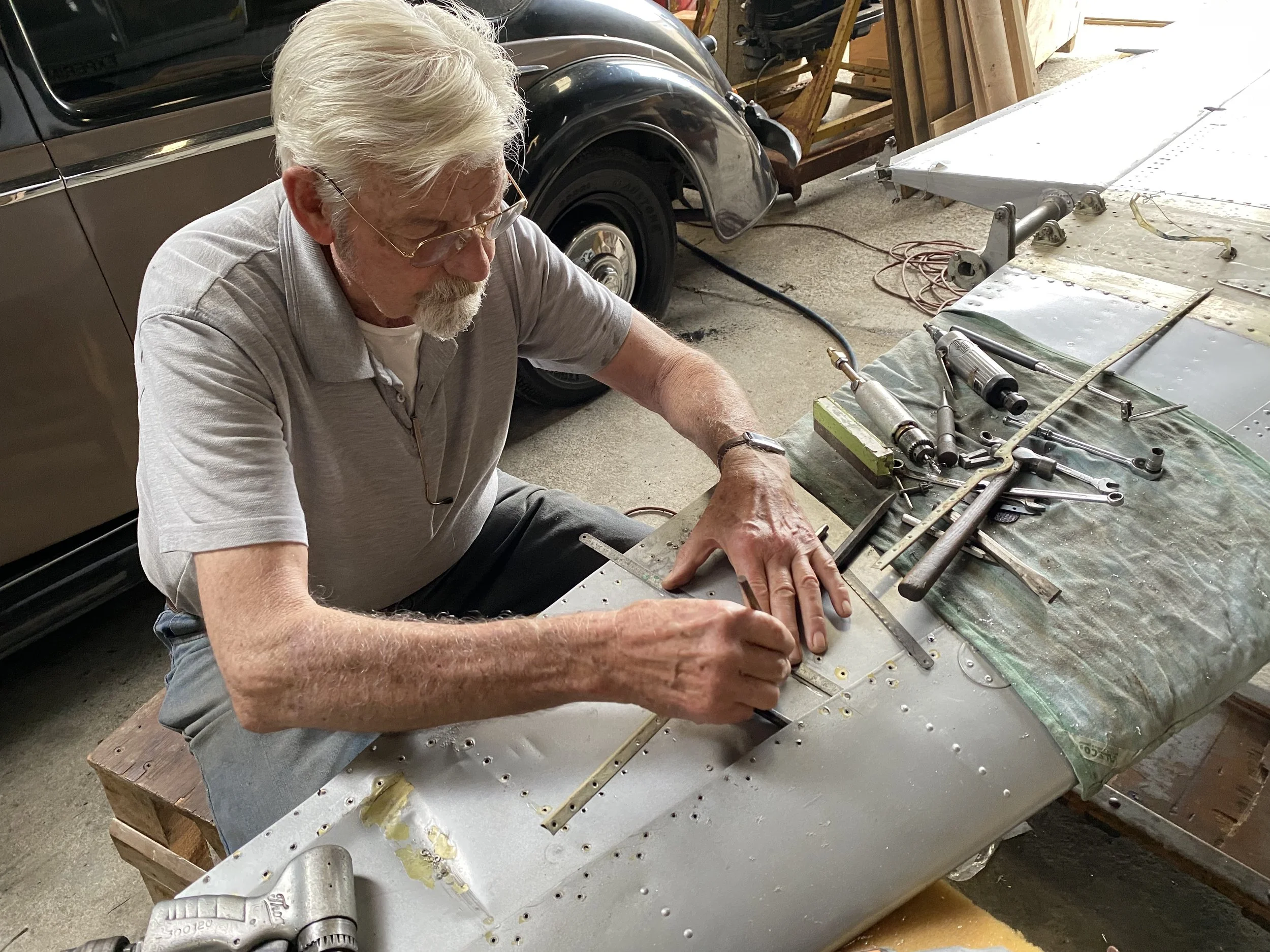

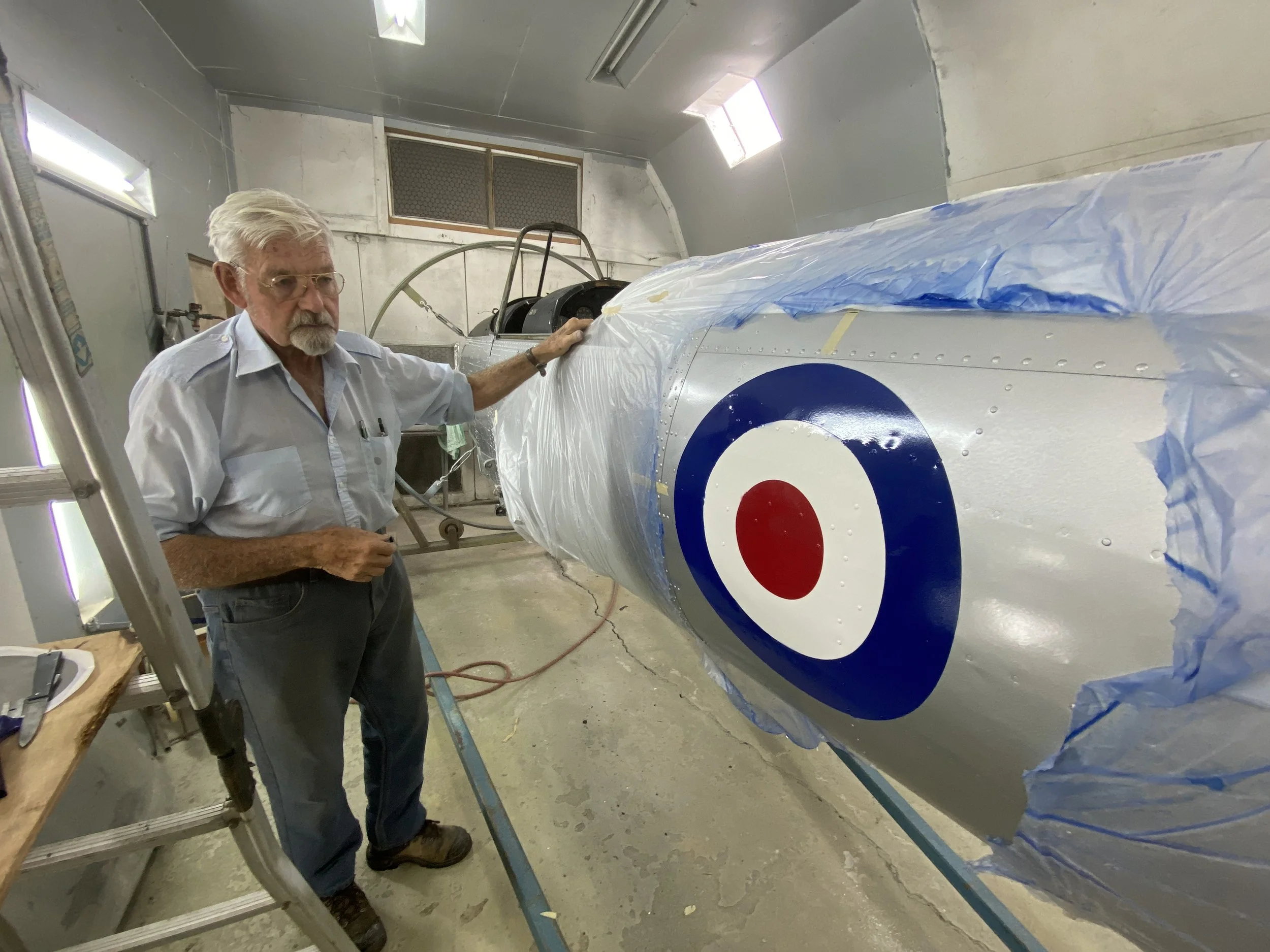
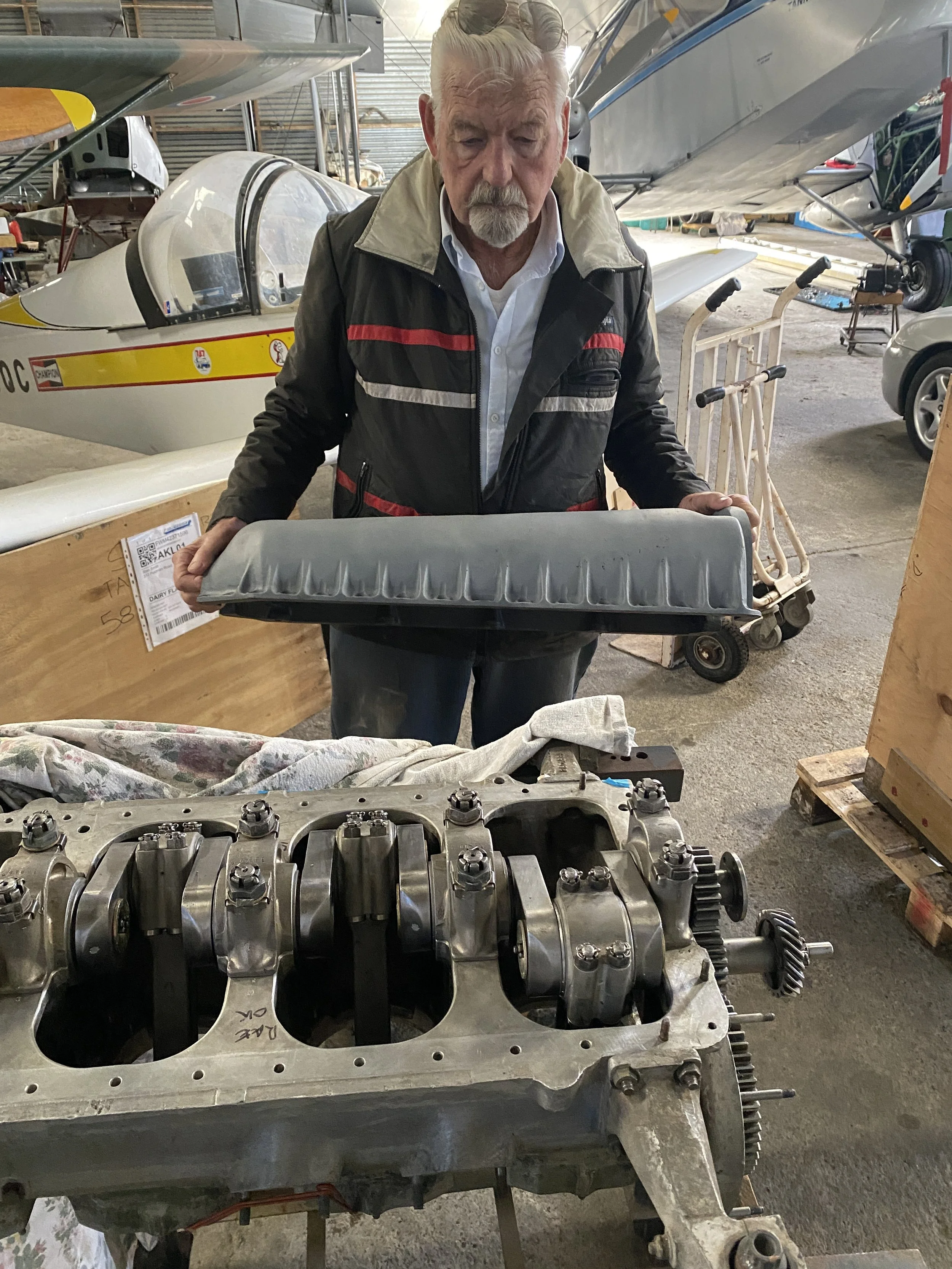

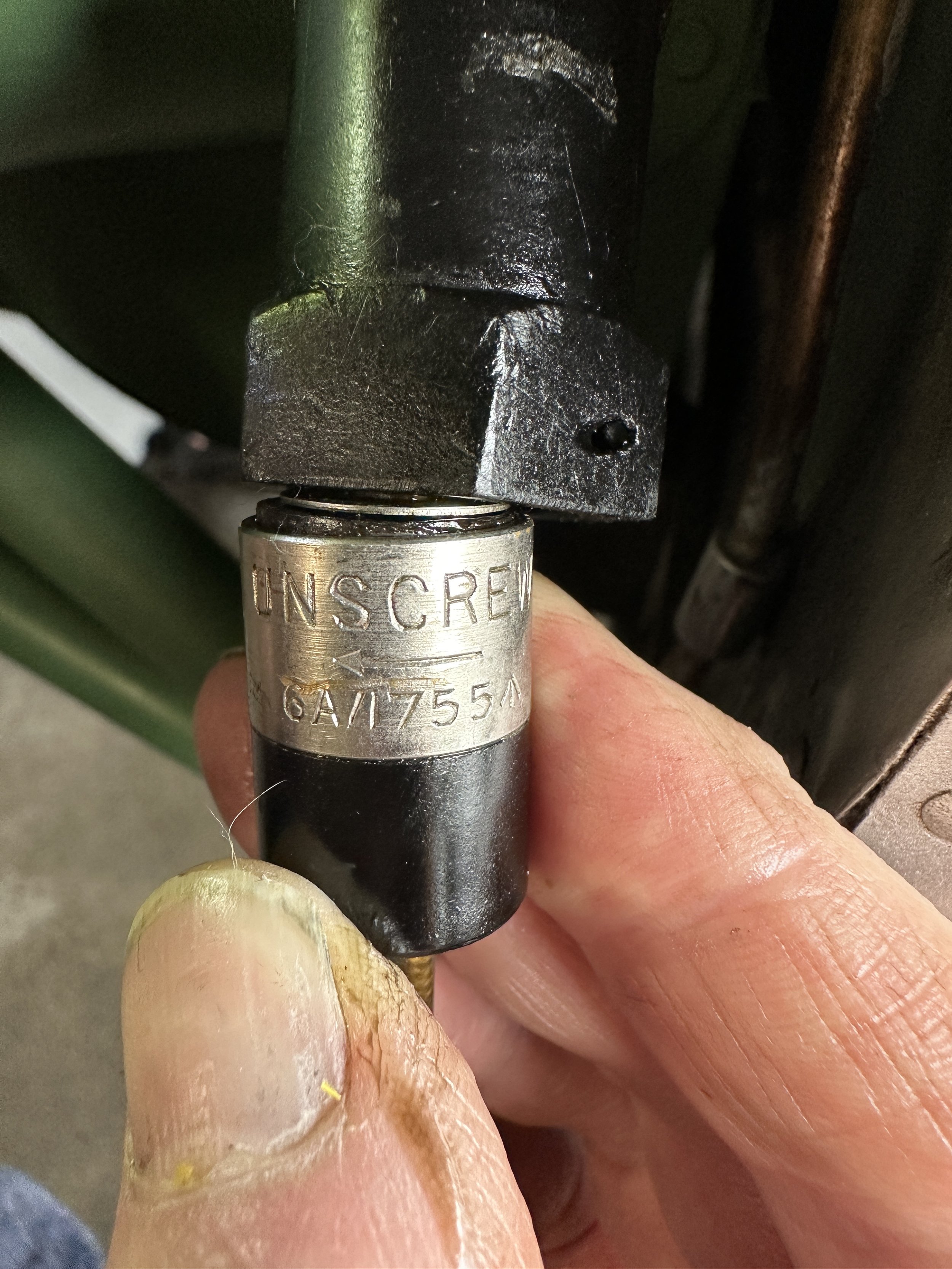
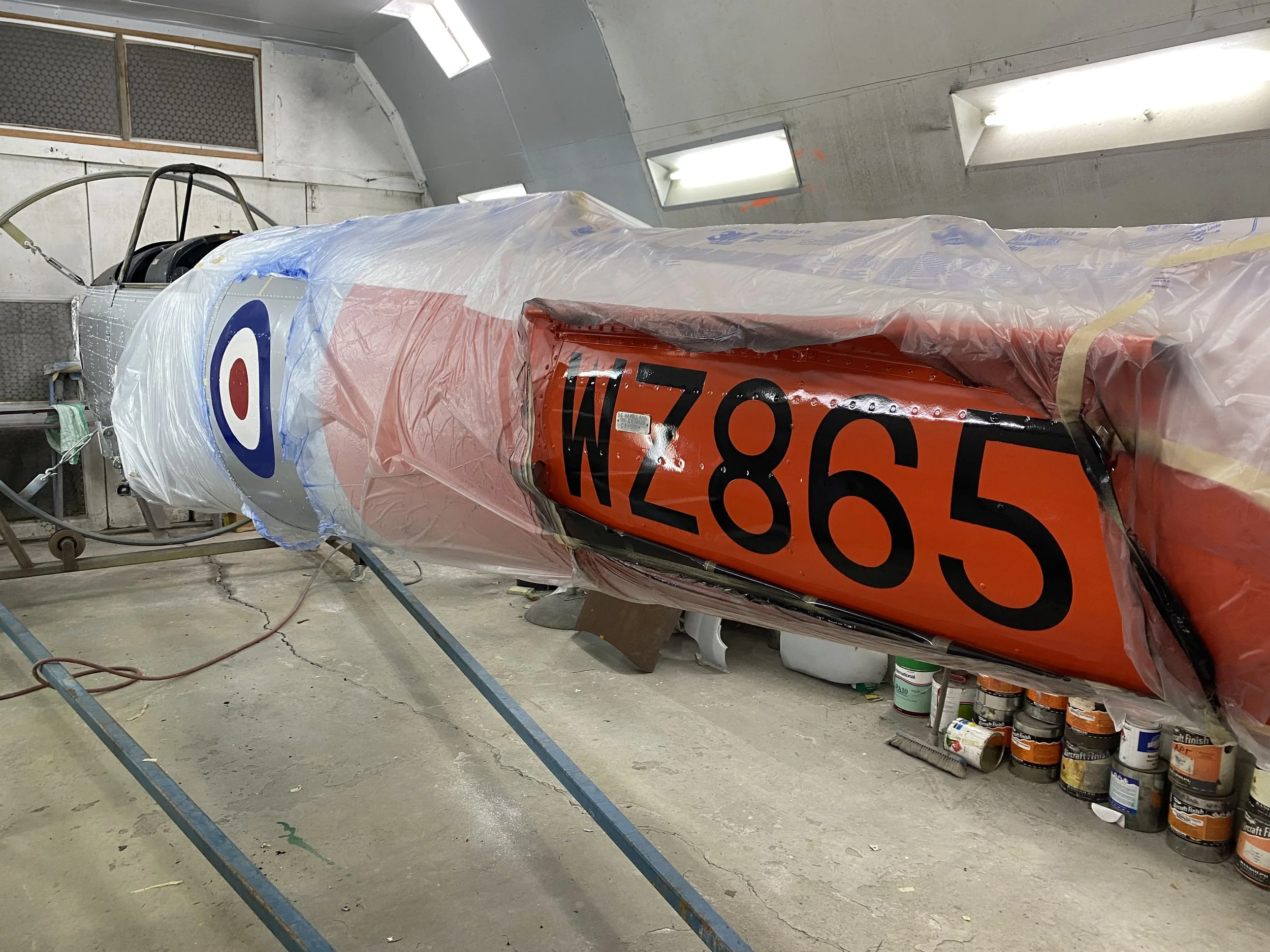
Unmasking the fuselage serials. WZ was the last RAF Chipmunk serial block.
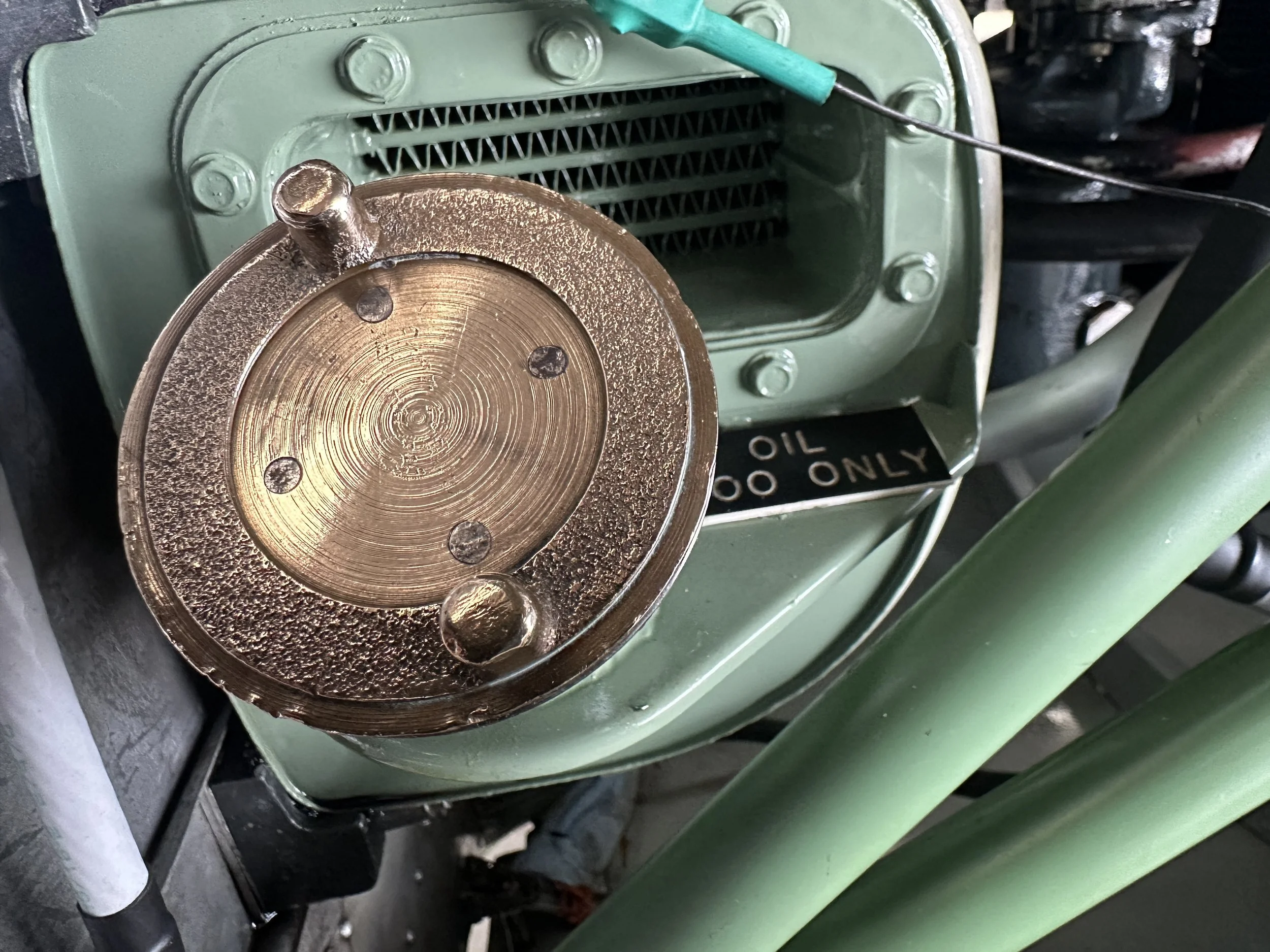
The oil filler cap includes a dipstick and the neck is wide enough to not need a funnel.
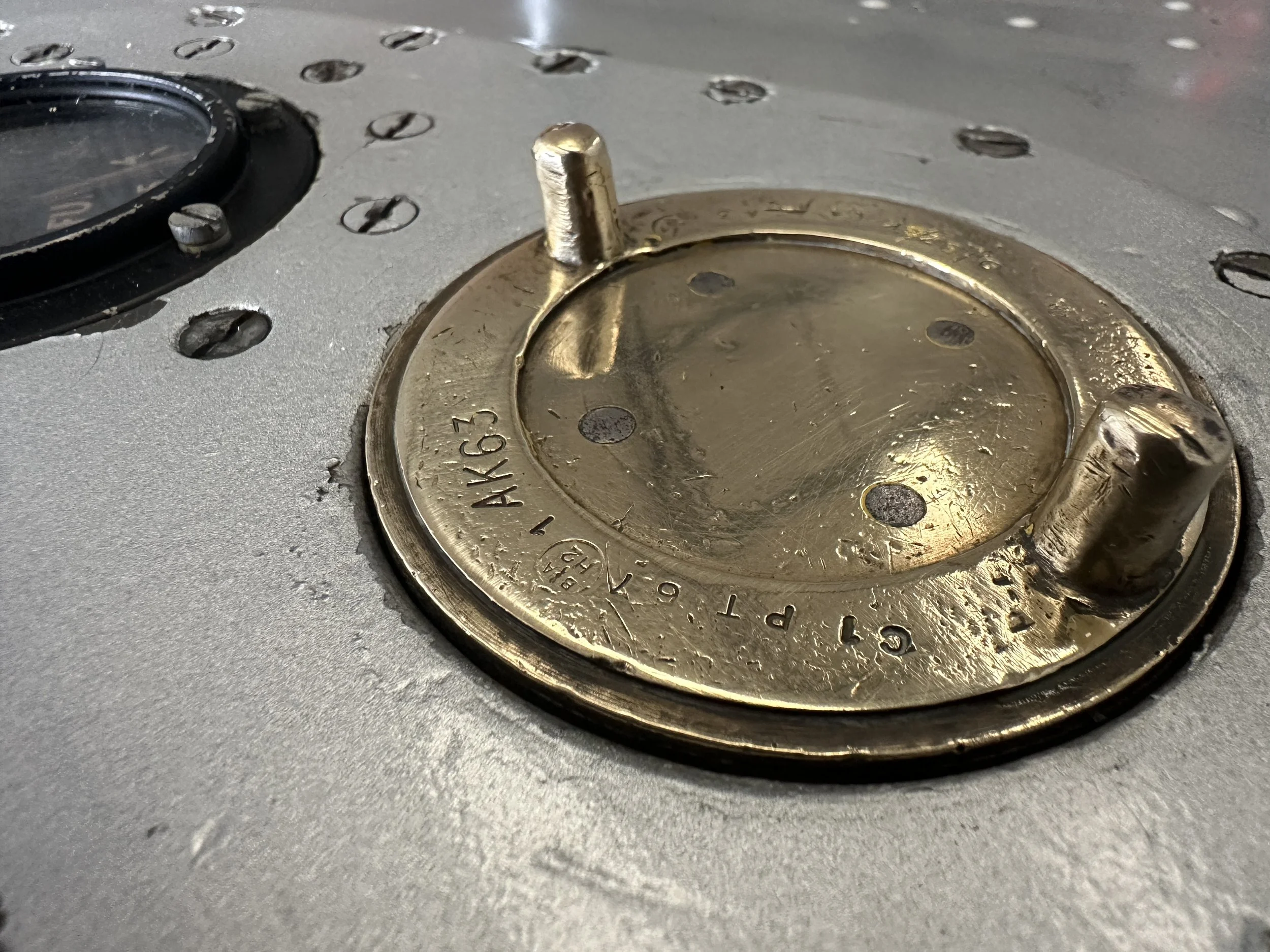
Wing fuel tank filler cap with fuel gauge in the background.
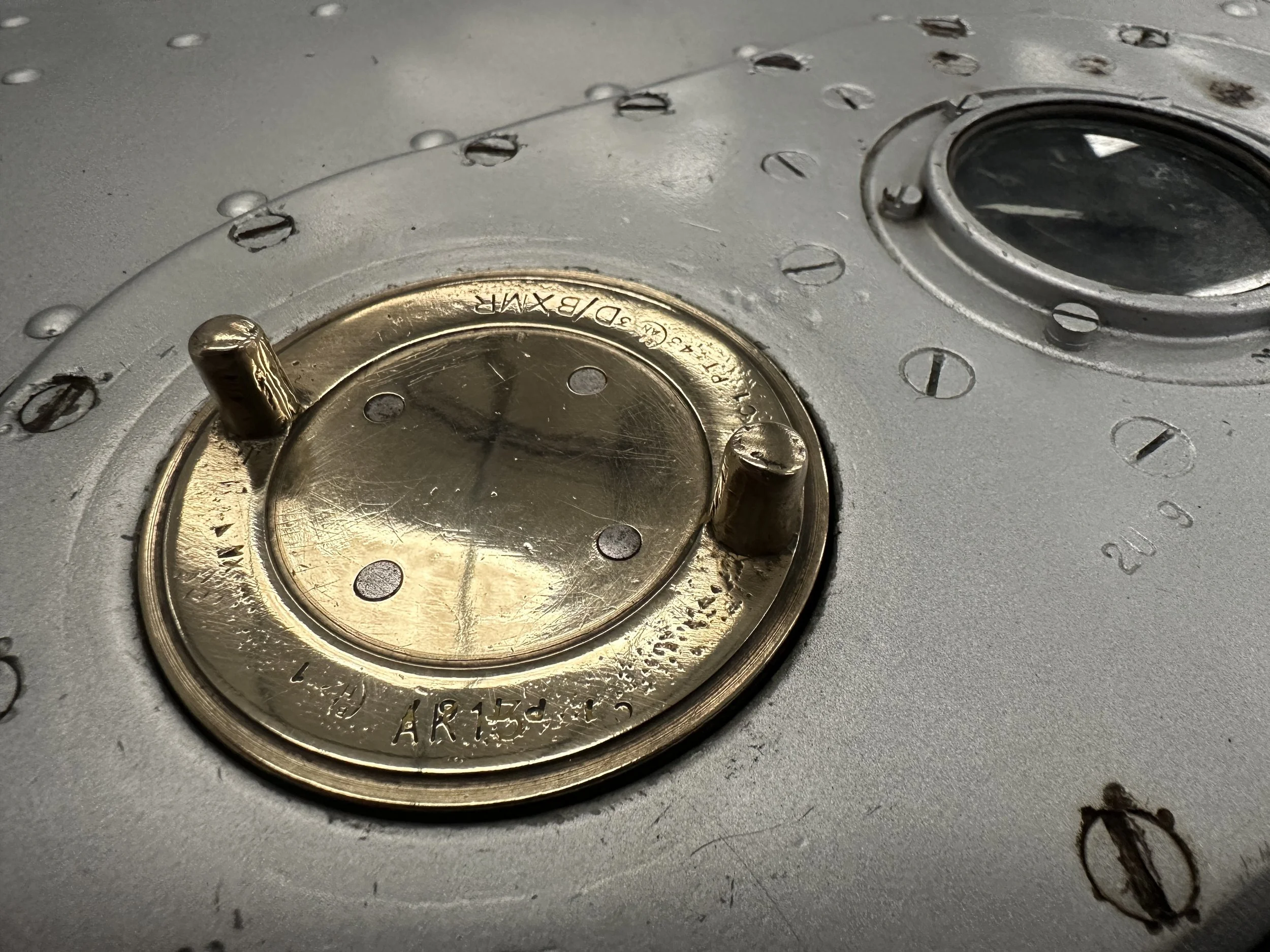
Freshly polished fuel filler cap.
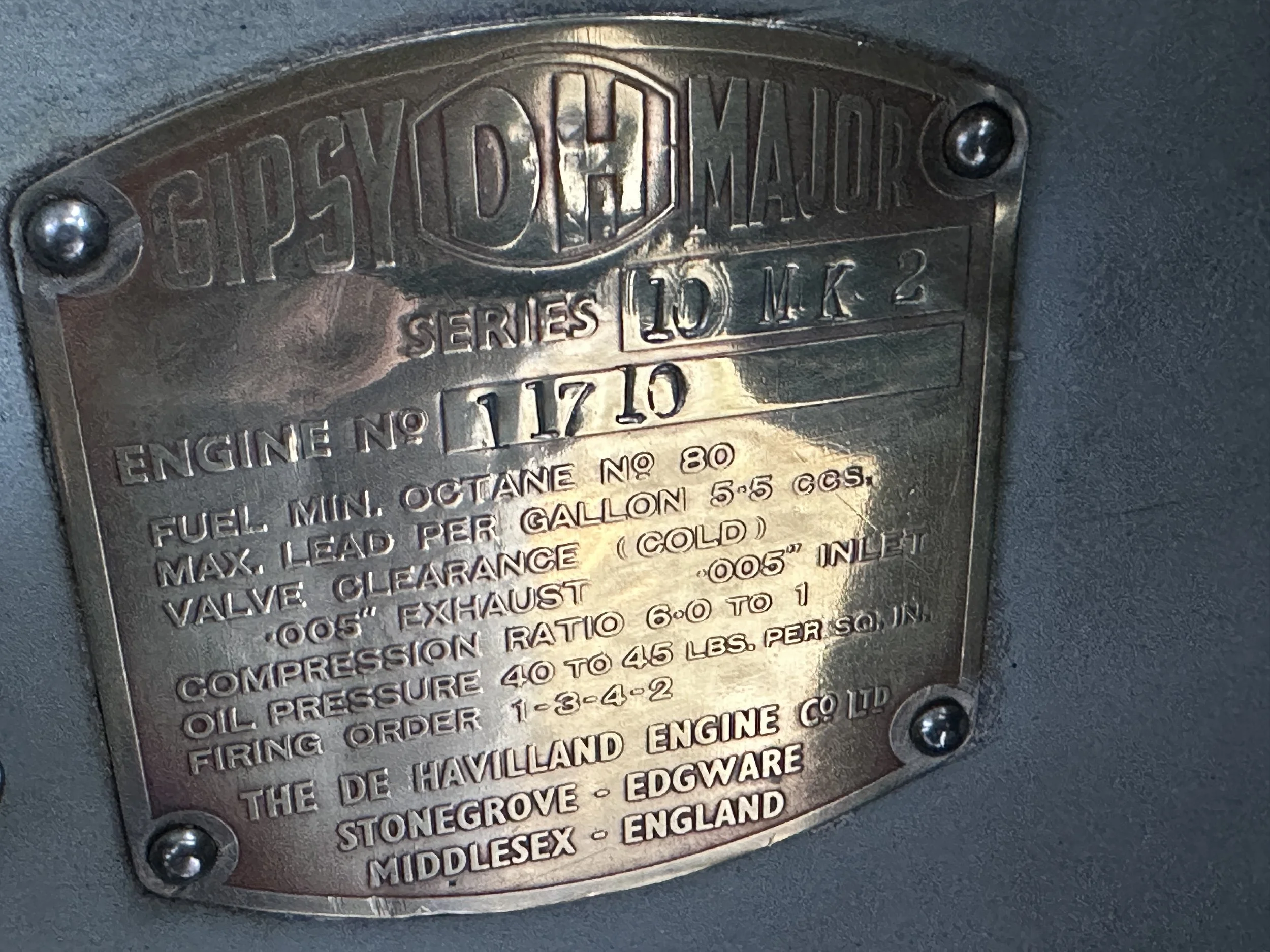
Engine maker's plate. This engine was very low time when we fitted it and was originally from a Stampe biplane.
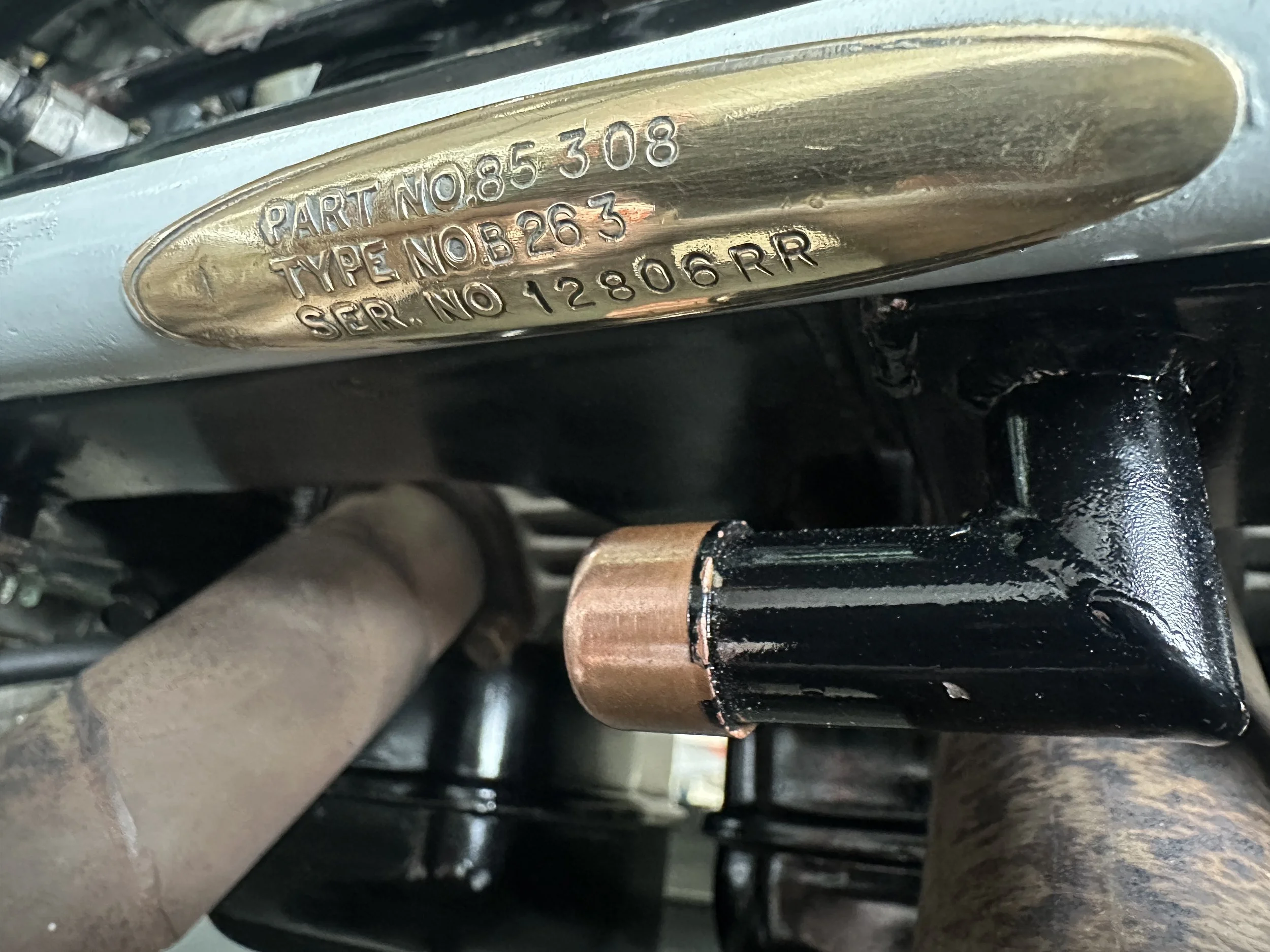
Part number plate on the RH ignition harness.
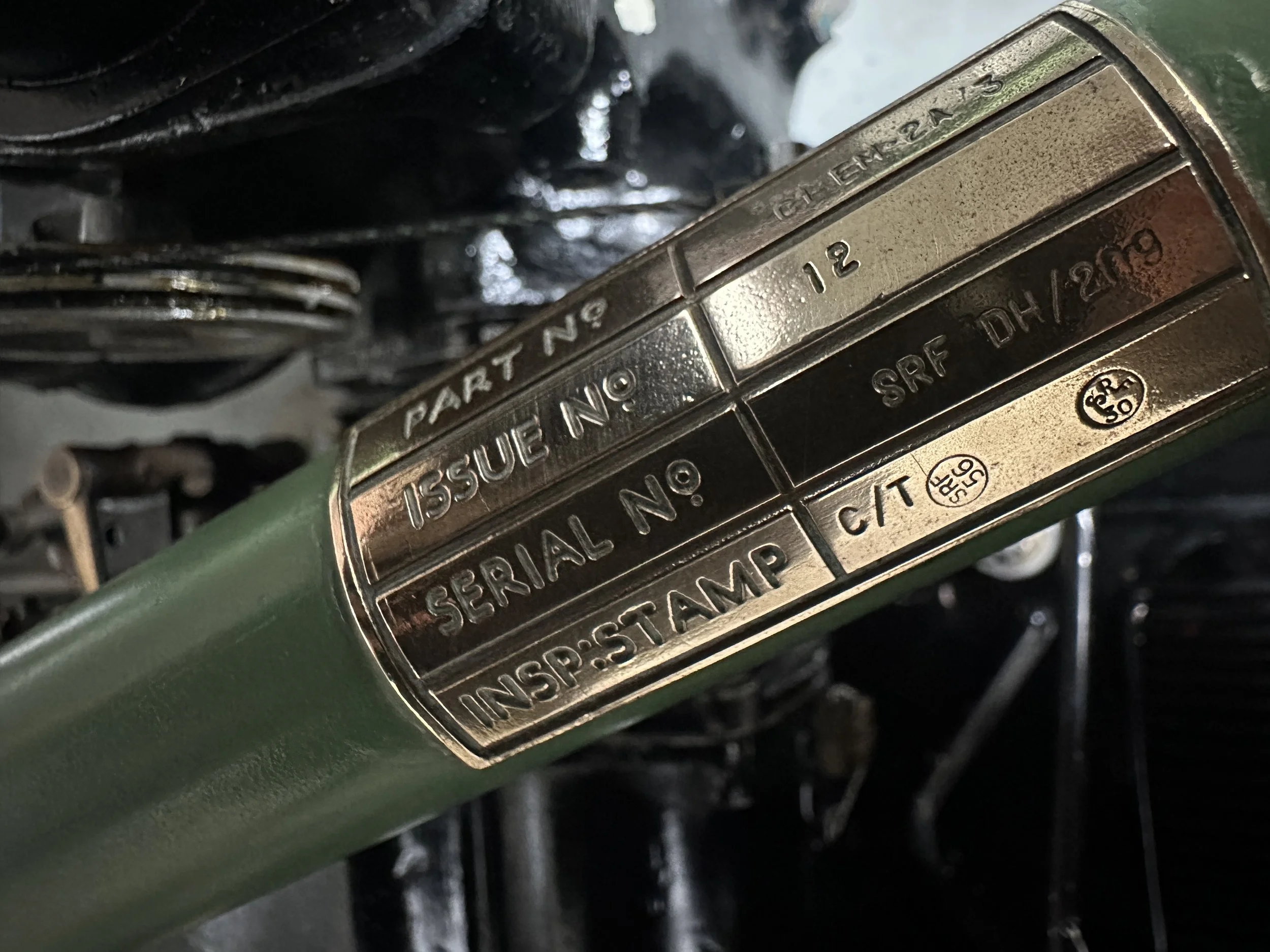
Part number plate on the RH engine mount.
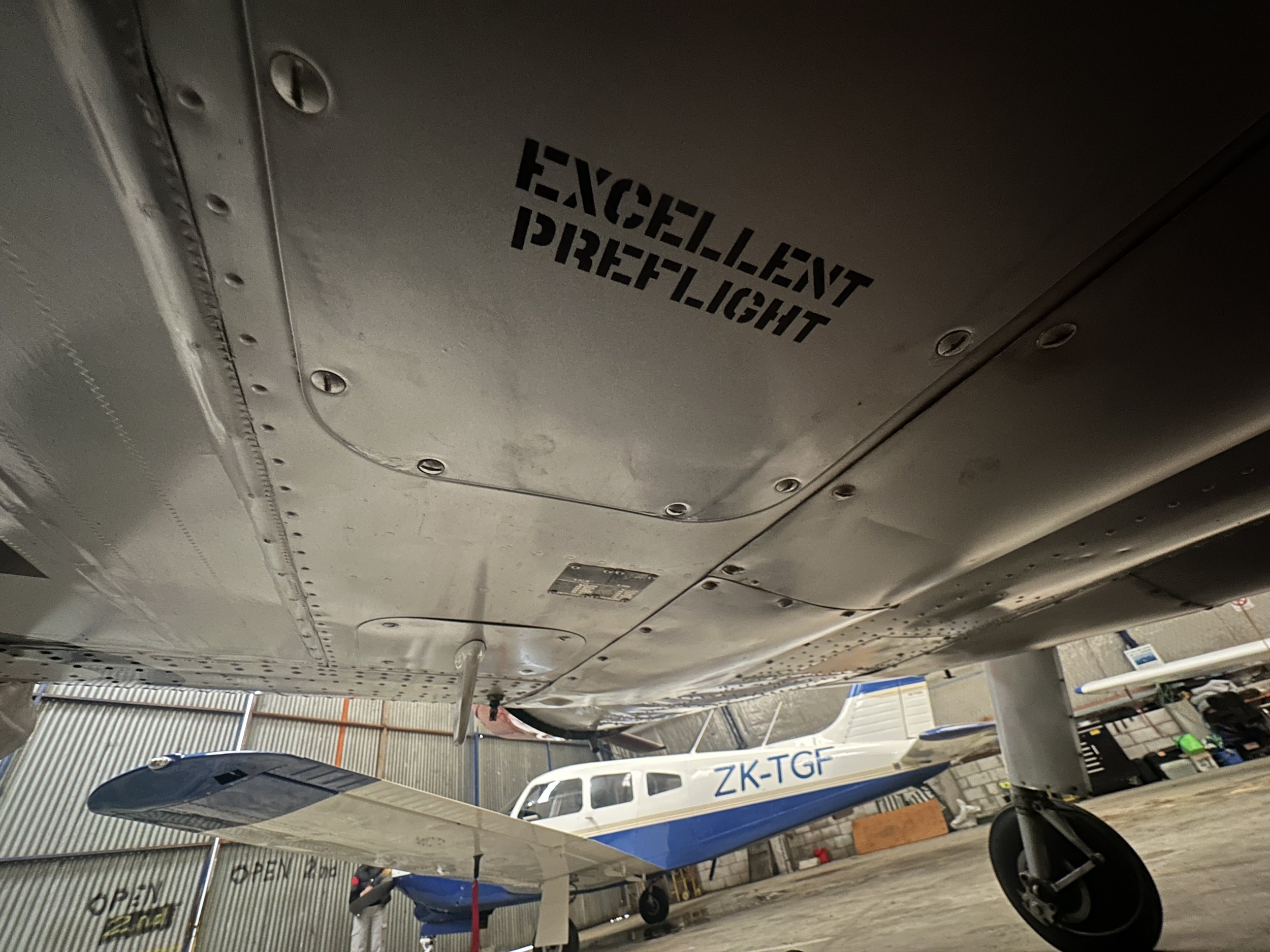
Hidden stencil on the LH flap pulley access panel. Our Piper Arrow in the background..
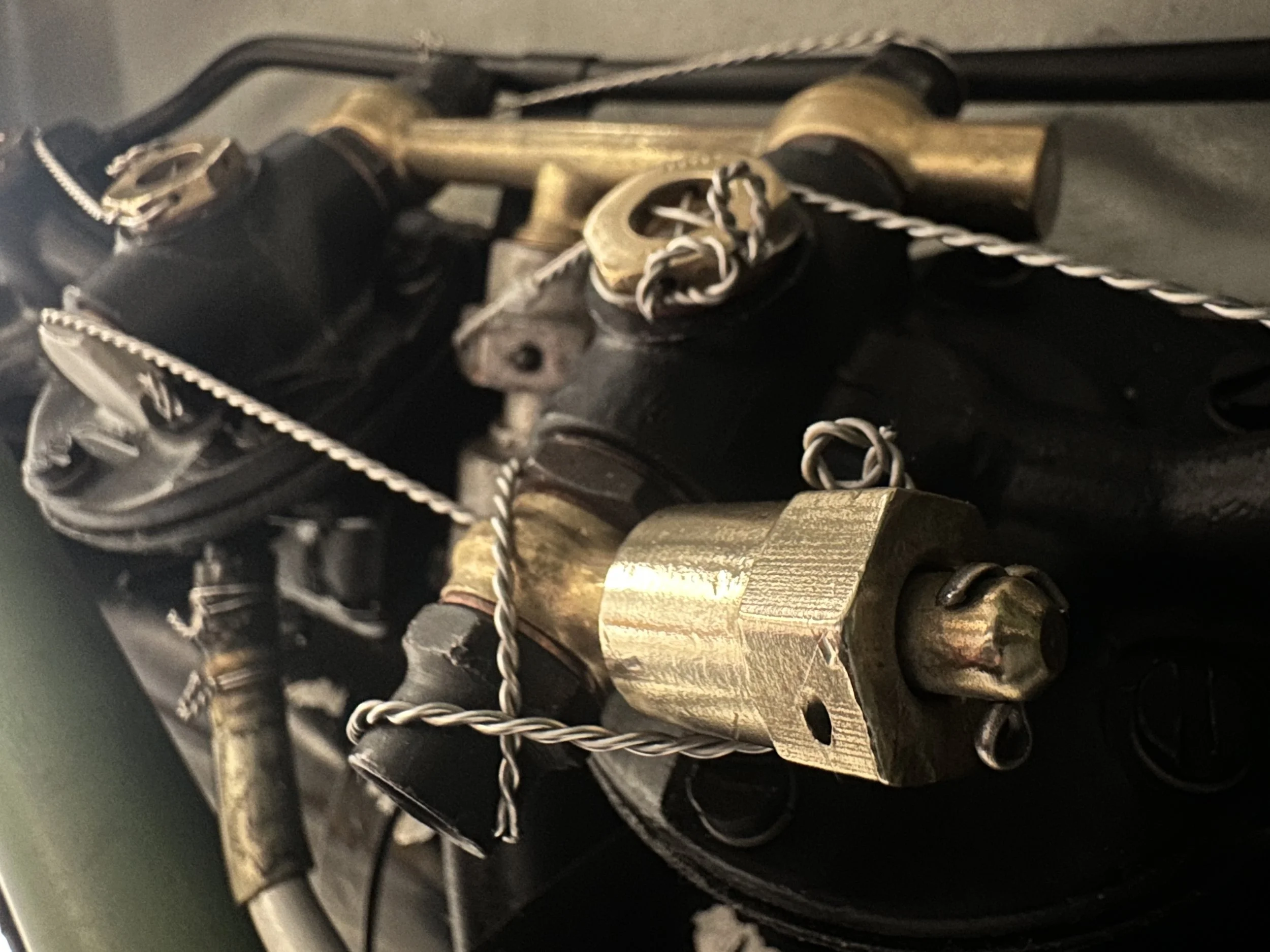
Engine driven fuel pumps. Most engine bolts are lockwired to stop them vibrating loose.
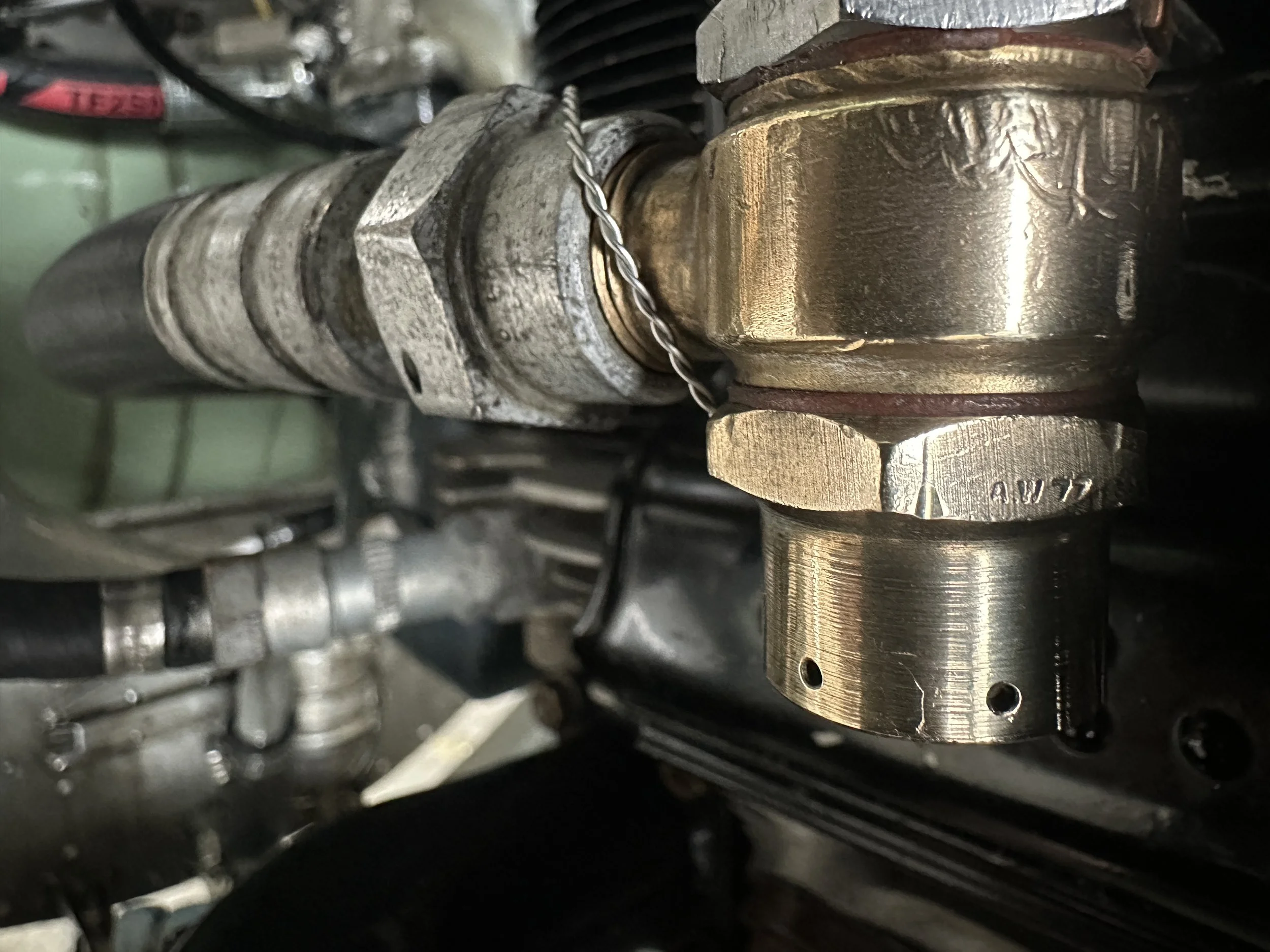
Oil pipe fitting.
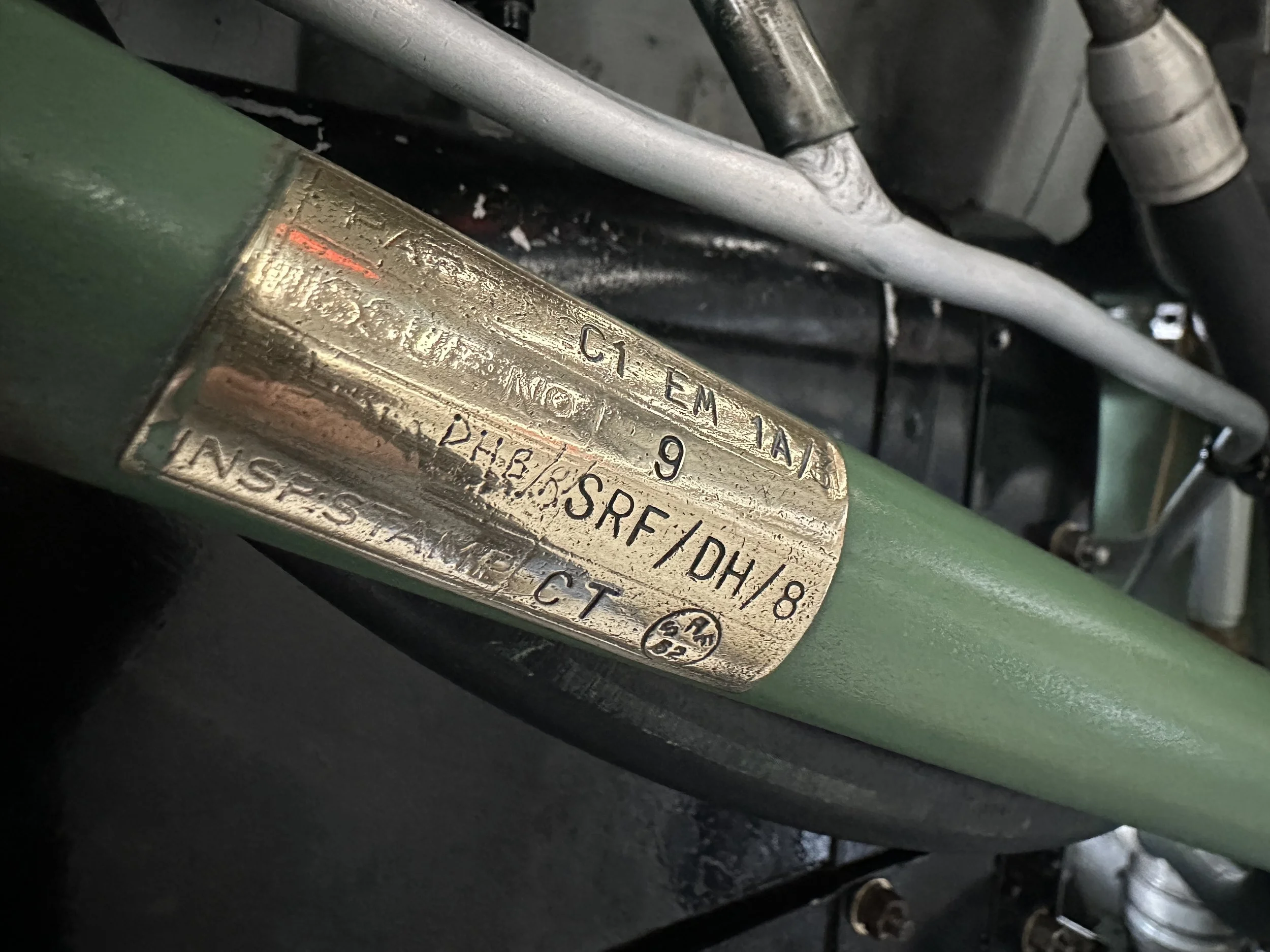
LH engine mount part number plate.
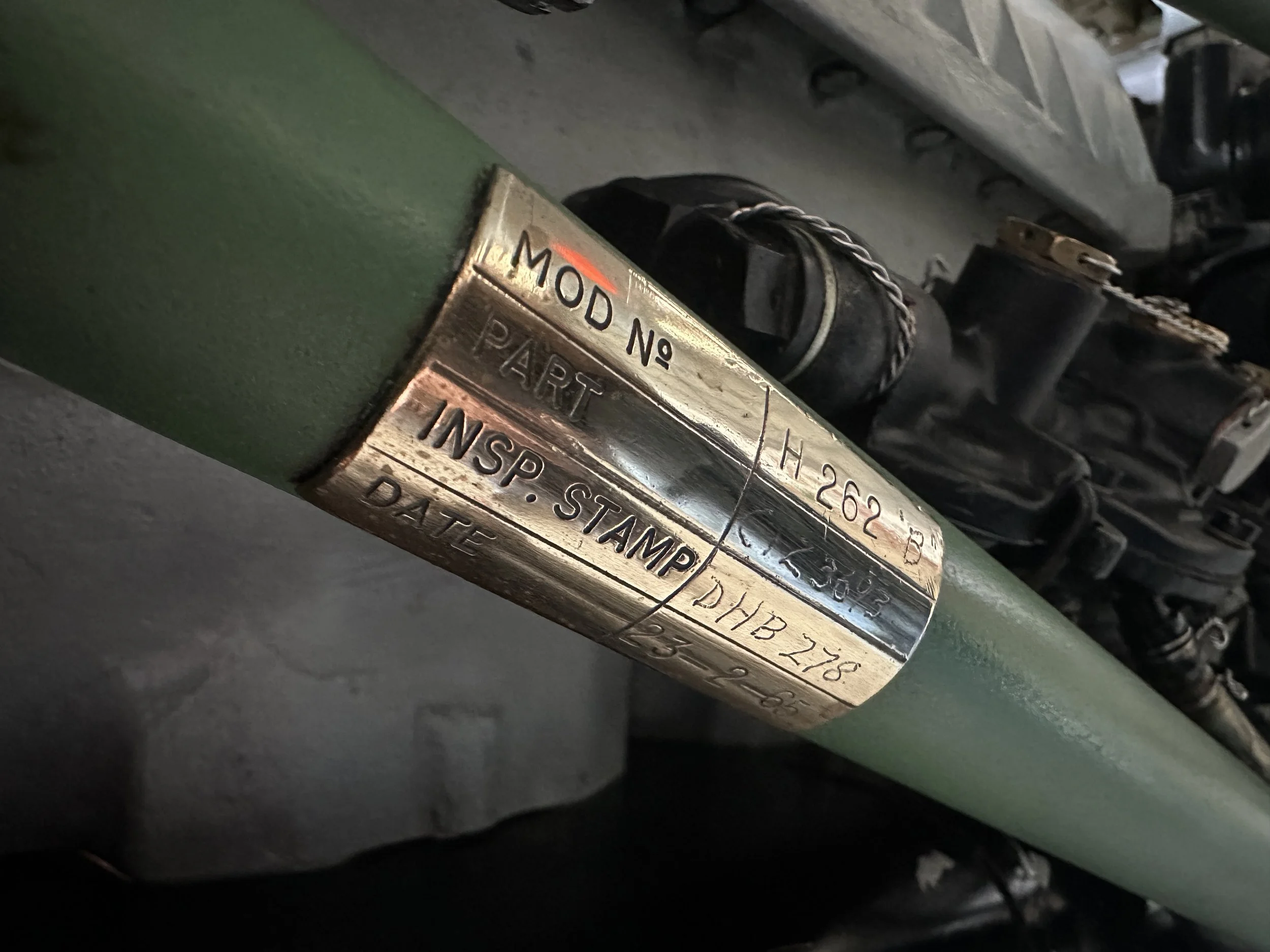
LH engine mount part number plate.
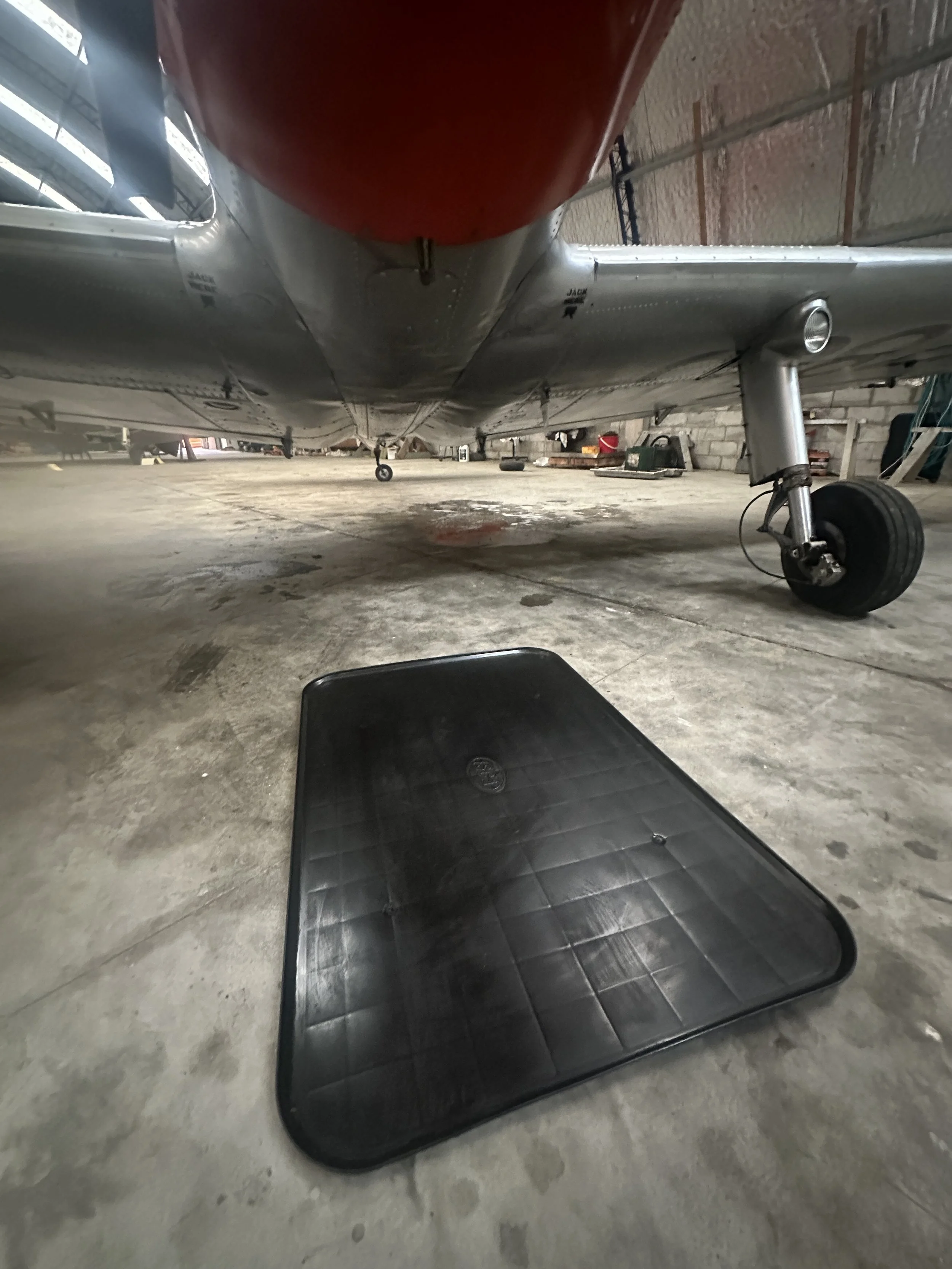
Drip tray in position should the engine decide to dribble in our absence.
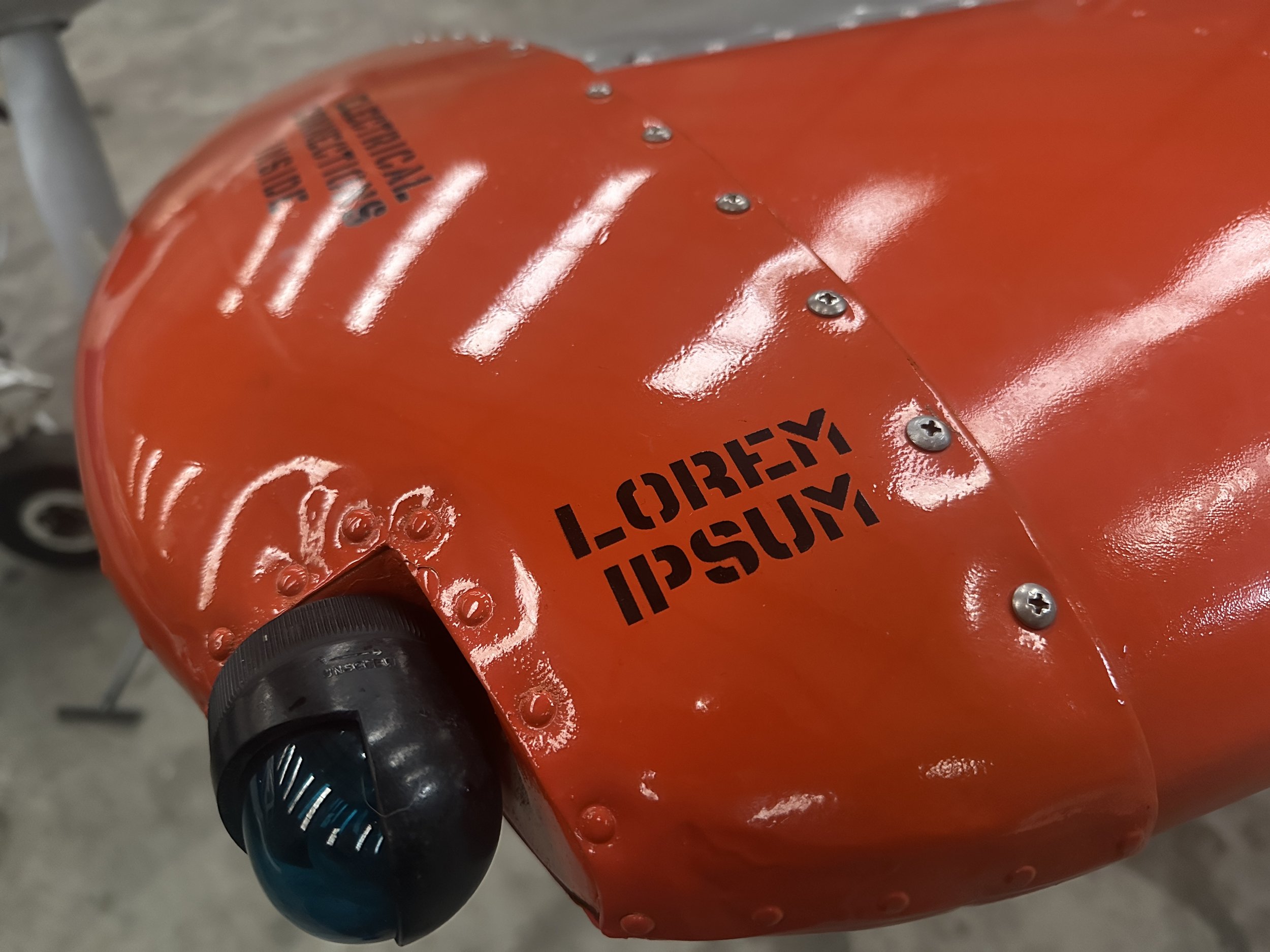
The notorious wingtip stencil. Applied as a joke but subsequently copied in an overseas restoration.
Back in action
The restored colour scheme WZ865 appears in is as it would have worn in about 1960. The Royal Air Force briefly specified that all training aircraft were to be painted silver with Dayglo orange panels for visibility. The Dayglo paint however faded very quickly in the sun. An added disadvantage was that the paint contained cyanide – not good for the airman assigned to sand it down and repaint it.
Since restoration, WZ865 has flown about 100 hours per year, appeared in several airshows and starred in a soon-to-be-released documentary about its return to flight.

THE ULTIMATE TRAINING AIRCRAFT
“IT’S OLD, IT LOOKS RIGHT, IT FEELS RIGHT AND WHEN YOU LOOK AT THE COCKPIT YOU WONDER HOW THERE’S ROOM FOR A PILOT. STRAP ON A CHIPMUNK, TURN IT UPSIDE DOWN AND YOU’LL KNOW WHY IT’S KNOWN AS ‘THE POOR MAN’S SPITFIRE’”
The De Havilland Chipmunk was designed immediately after World War 2 by the company’s Canadian subsidiary. De Havilland believed that demand for modern trainers would be high post-war, especially as the same company’s Tiger Moth – the main RAF and Empire nations’ trainer in the war – had first flown in 1931!
The resulting aircraft was a blend of pre and post-war technologies, combining to produce an aircraft that remains a pilot’s favourite almost 80 years later.
Up front, the Tiger Moth’s wooden propeller was replaced with a fixed pitch metal prop from Fairey Reed. The engine, a 145 horsepower Gipsy Major 10 Mk 2 (Mk 8 in military versions) is an evolution of the Tiger’s Mk1. The newer engine added 15 extra horsepower, as well as a generator, vacuum pump and starter. In RAF service, Chipmunks like WZ865 were fitted with a cartridge starter which used the gases from a shotgun shell to turn the engine. All civilian Chipmunks now have electric starters fitted but, like a Tiger Moth, can be hand-swung if necessary.
The Chipmunk’s cockpit is enclosed with a one-piece sliding hood, giving excellent all-round visibility. The instructor sits behind the student (opposite to the Tiger Moth) and all instruments along with almost all controls are duplicated. The easy availability of war-surplus instruments in 1946 means that an original cockpit like WZ865’s features basically the same instruments you’d find in a Spitfire, Hurricane or Lancaster – very much adding to the atmosphere.
Airframe construction is rugged and simple. Like all military trainers, the Chipmunk is fully aerobatic, so is rated to +6 and -3g. That shows in the solid wing construction with the aluminium skinned areas feeling far more solid than a modern-day Cessna or Piper trainer. While most of the aircraft is metal-skinned, the rear part of the wings, as well as all control surfaces, are fabric covered. This comprises a dacron (originally linen) fabric literally stitched onto the aluminium ribs, before receiving multiple coats of “dope” to tighten, strengthen and protect the fabric. The fabric areas are then painted just like the rest of the aircraft.
A key difference to modern training aircraft – and part of what makes it such a pleasure to fly – is the Chipmunk’s tail-dragger undercarriage. Most modern aircraft have two main wheels and a steerable nosewheel. Until the 1940s a tailwheel was more common. The tailwheel configuration makes landing, taxiing and taking all more challenging, but most tailwheel flyers agree that it makes you a better pilot.
In the air, the Chipmunk is a delight. Normal operations only require fingertip control on the stick, and aerobatics are smooth and intuitive. While it’s certainly not the most powerful aircraft, it’s certainly capable of putting a smile on any pilot’s or passenger’s face.
Chipmunk WZ865 in action

Chipmunk WZ865 near Ardmore, March 2025. Gavin Conroy photograph.

Tucking in close to Liz Needham's Harvard to give photographer Gavin Conroy a close up look.
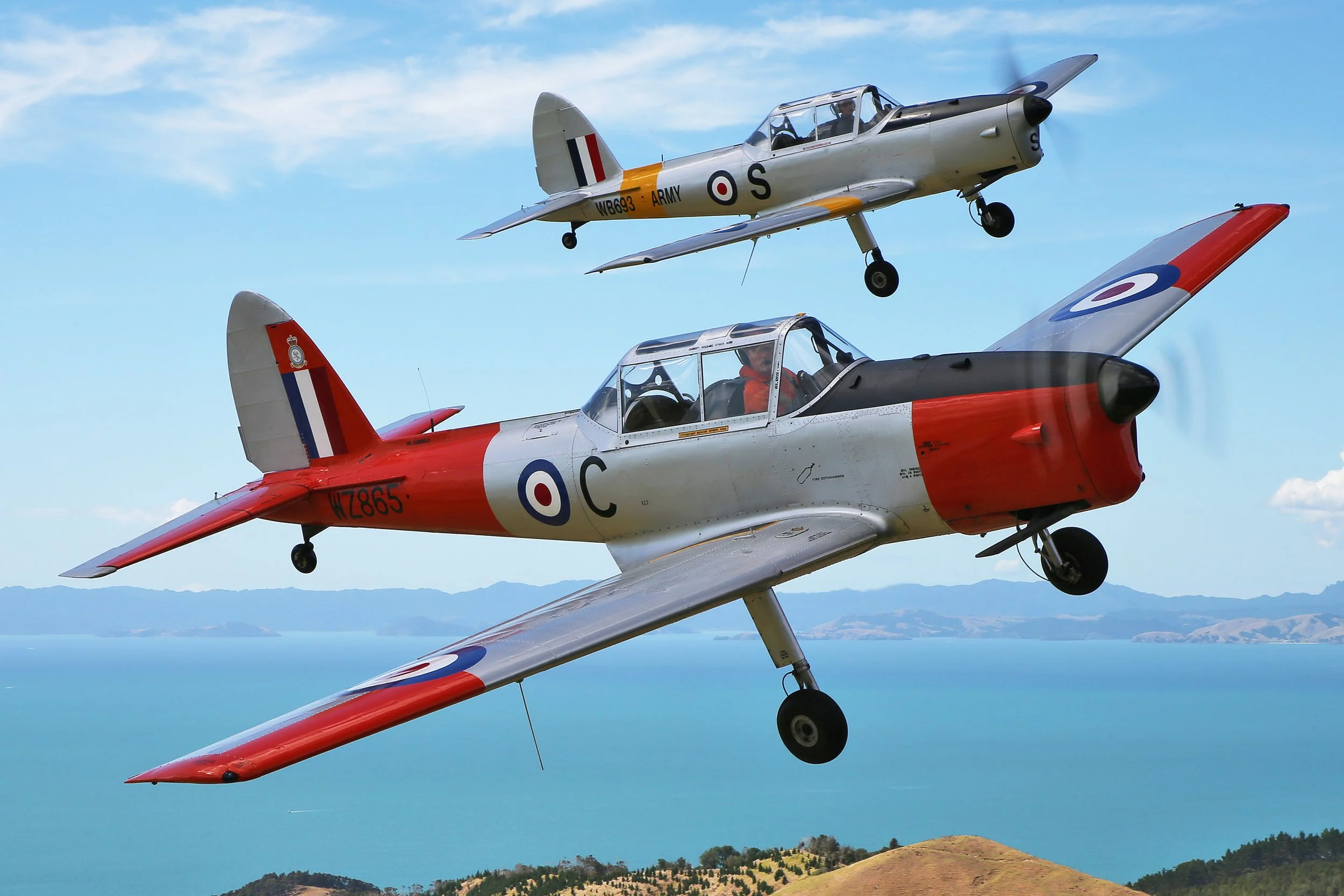
Chipmunk Blue: Chipmunk 65 leading Mike Wood's ZK-RFS ahead of the 2025 Ardmore Airshow. RFS wears the early silver and yellow RAF/Army colour scheme.

Chipmunk WZ865 near Ardmore, March 2025. Gavin Conroy photograph.

Chipmunk WZ865 at Kawakawa Bay, March 2025. Gavin Conroy photograph.

Chipmunk WZ865 near Ardmore, March 2025. Gavin Conroy photograph.

Departing from runway 03 at North Shore on one of our first test flights.
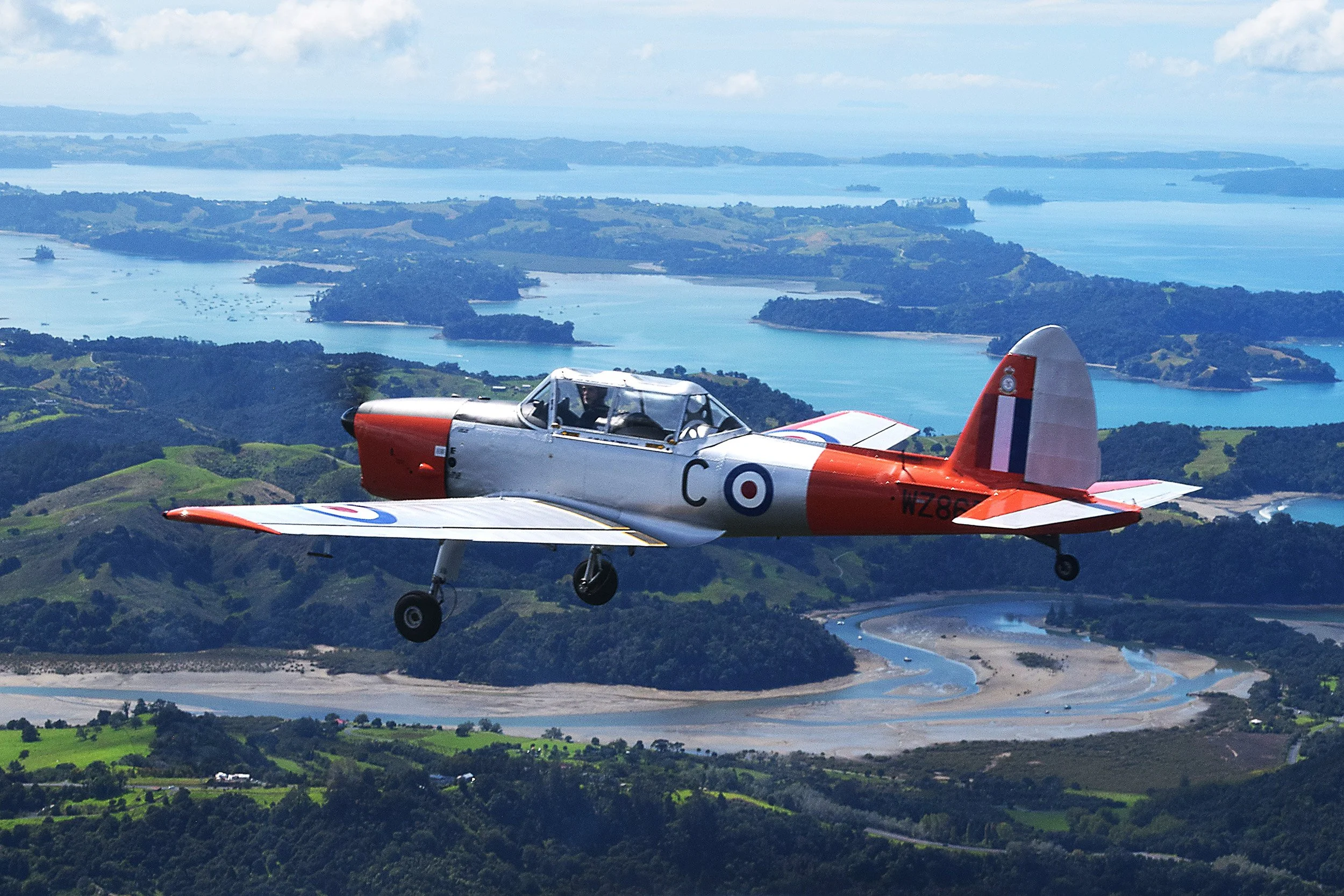

Chipmunk 65 near Waiwera on an early test flight. Photo by Michael Bach.

Early test flying involved quite a lot of circling within gliding range of North Shore airfield. Long flights were also an opportunity to confirm fuel burn rate.

Airborne near North Shore on an early test flight. Michael Bach photograph.

Ardmore airshow, March 2025.

Test flight selfie.
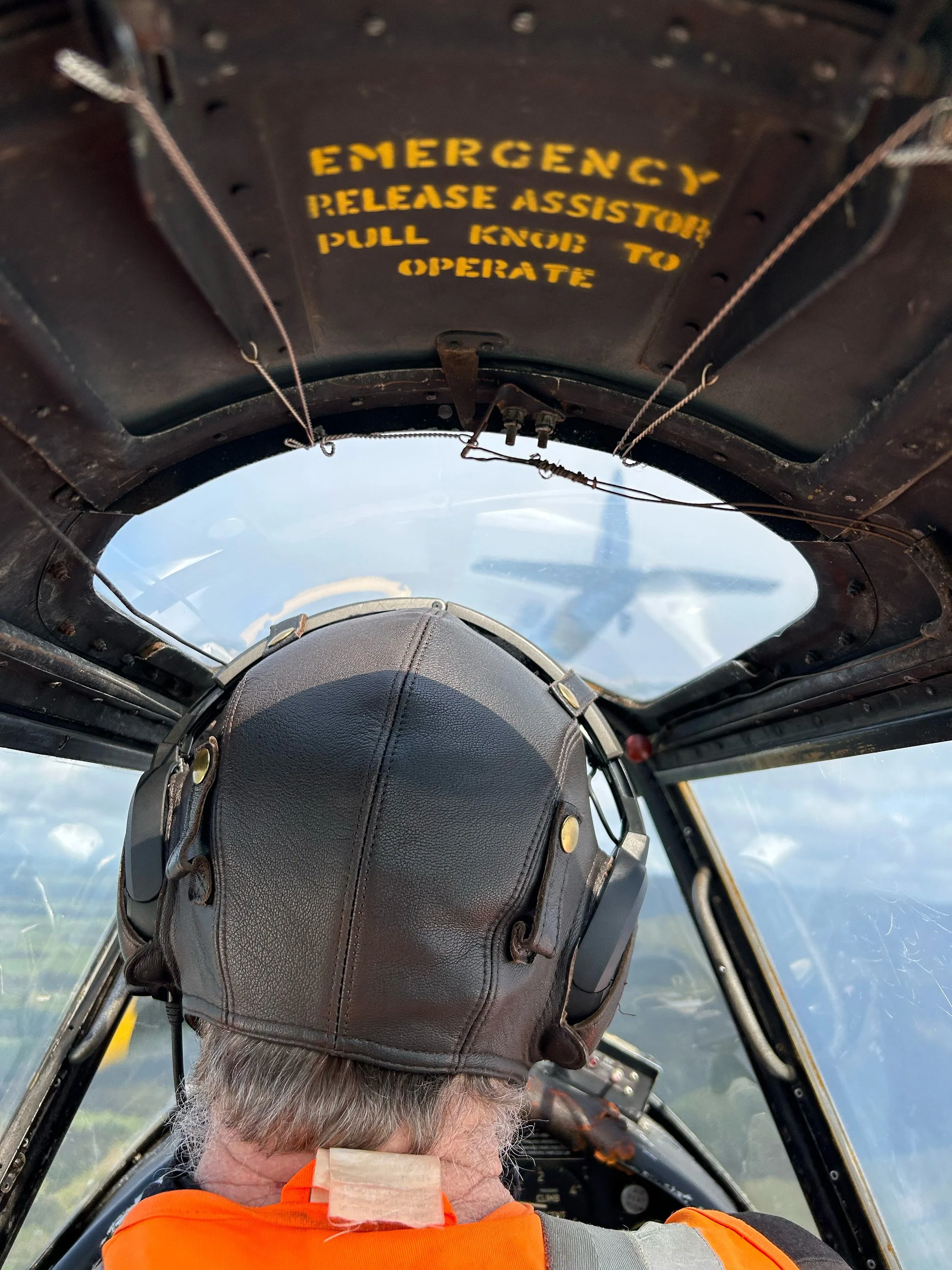
Back-seater's view of trail formation with another Chipmunk.

Early test flight, photographed by Michael Bach.

Formation sortie for the Chipmunk's 78th birthday, 2024.

The light leather helmet is handy for keeping my headset on during aerobatic manoeuvres, especially if negative g is involved.
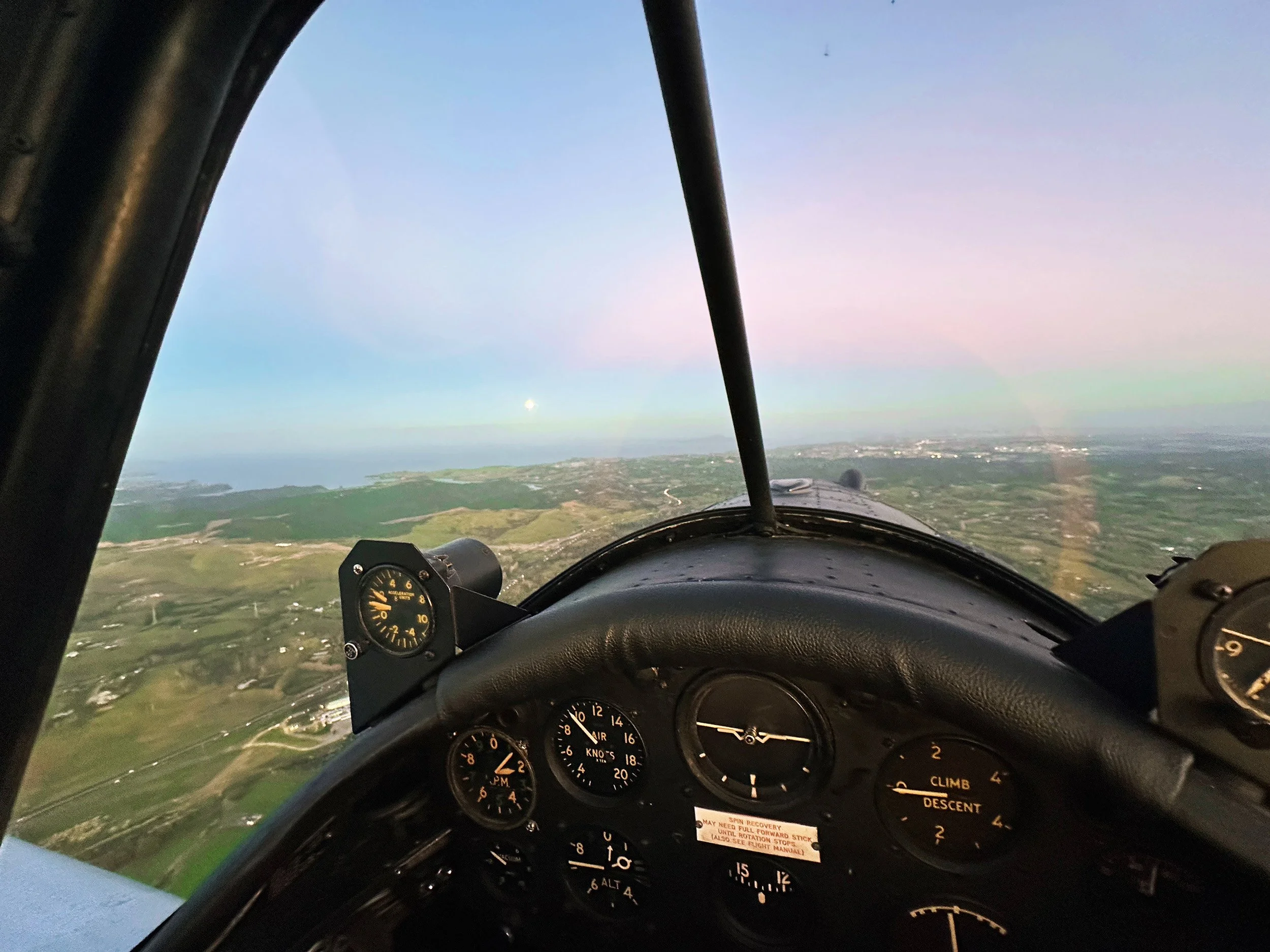
Pilot's view from an early test flight. G meter is on the left and clock is on the right. The clock is handy for tracking fuel consumption as the gauges aren't easy to read in flight.

A moody shot of Chipmunk 65 on one of our early test fights. Taken from North Shore Aero Club by the CFI Daryl Gillet.
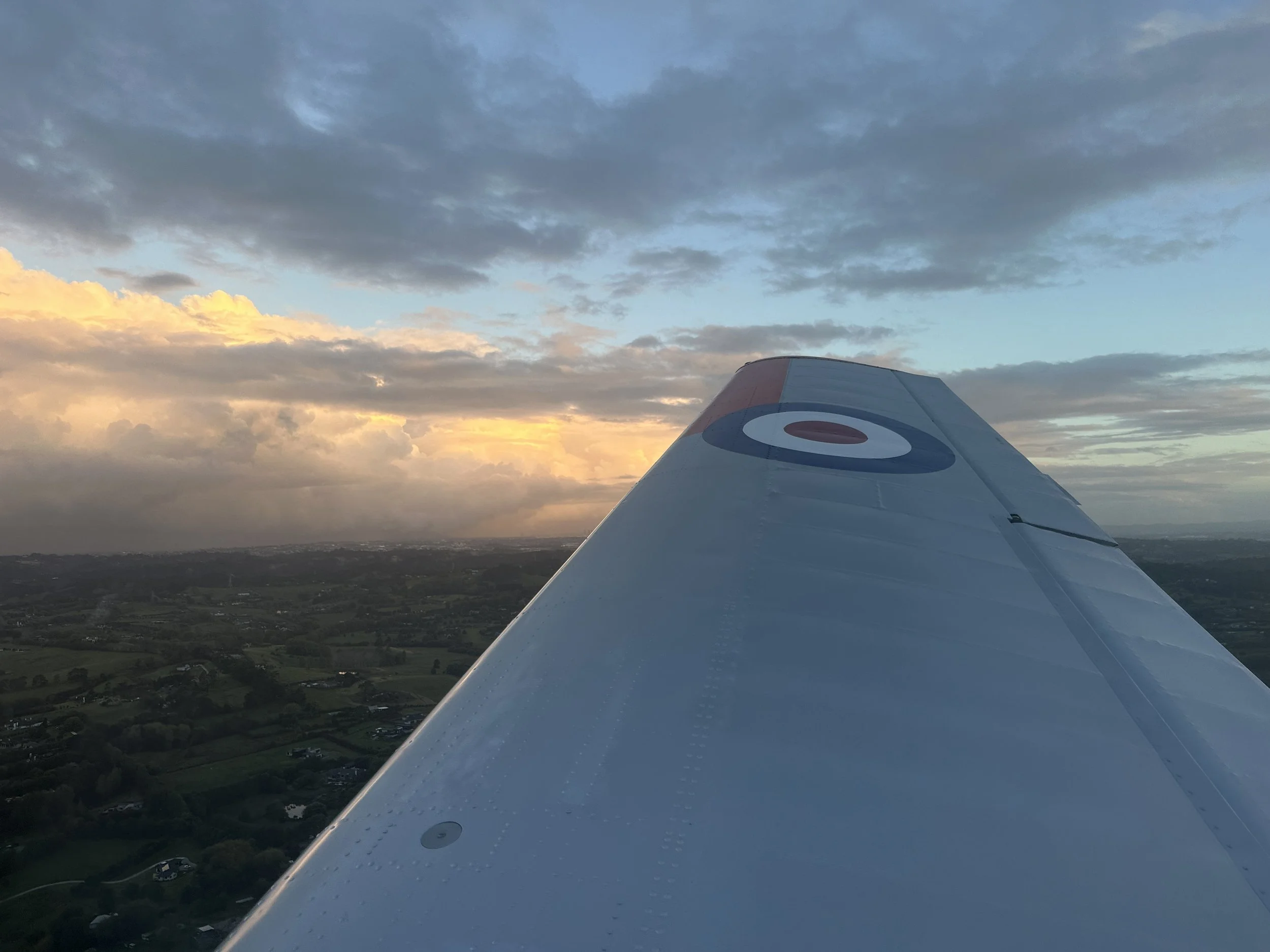
My view on the same test flight featured in the previous photo.



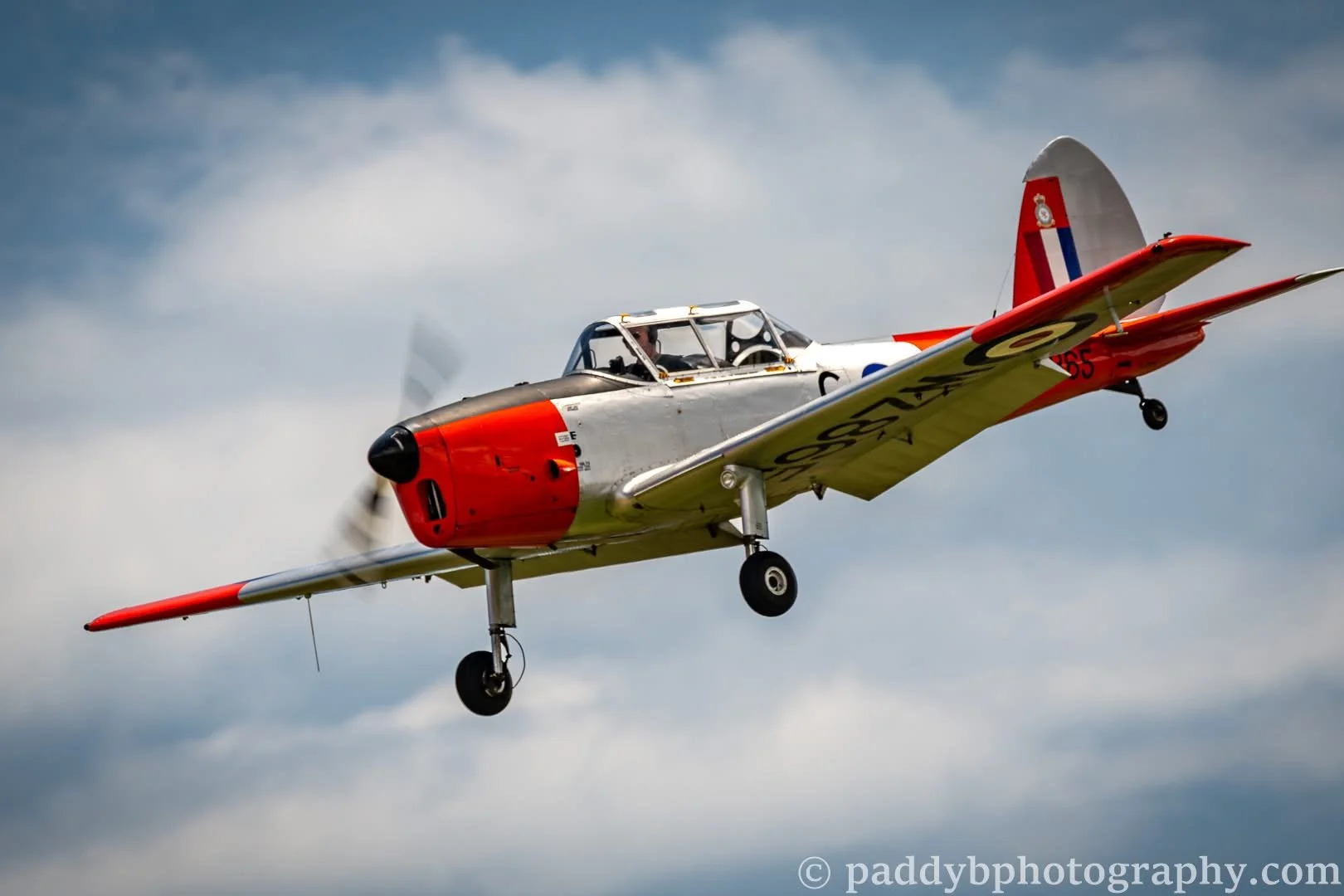
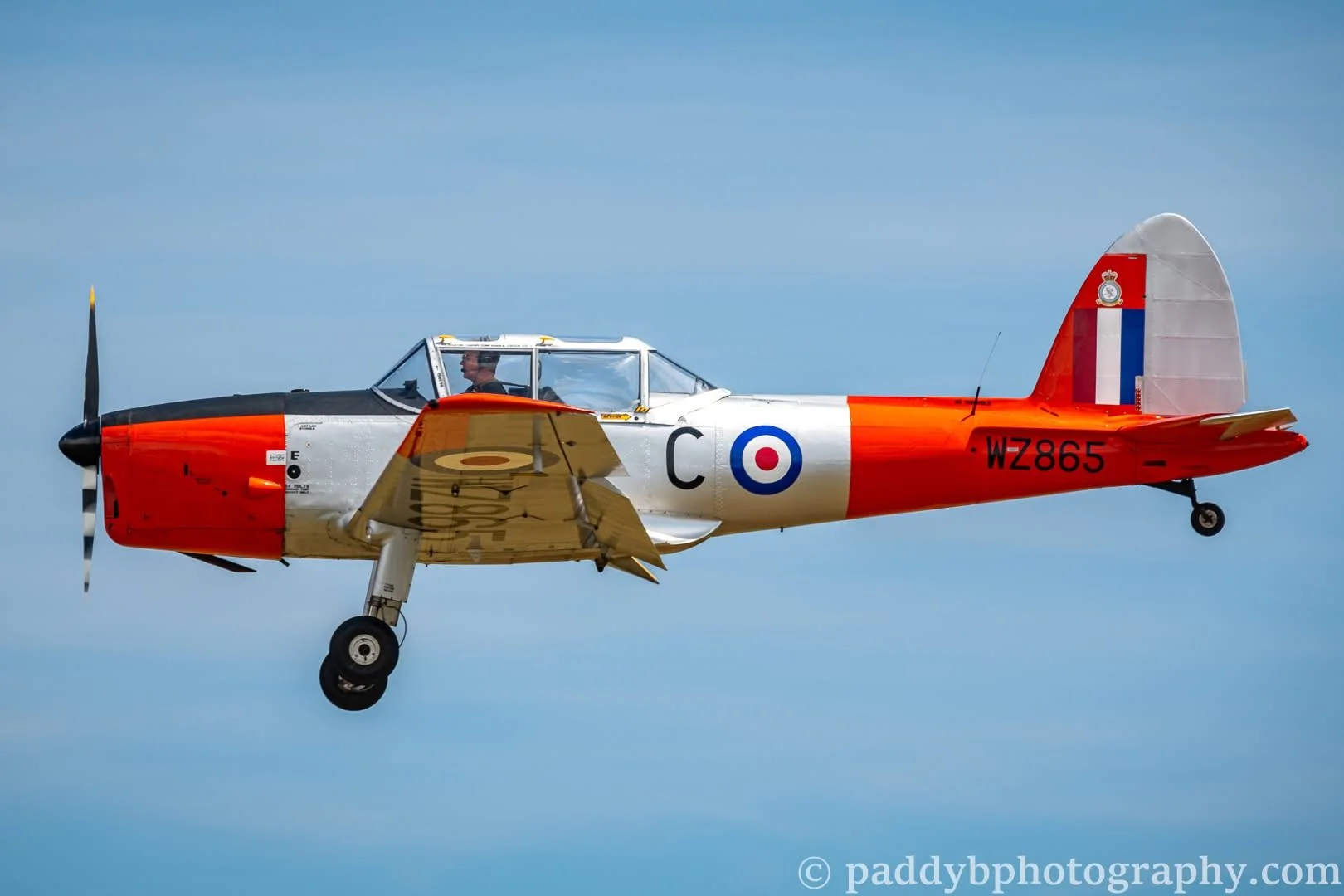
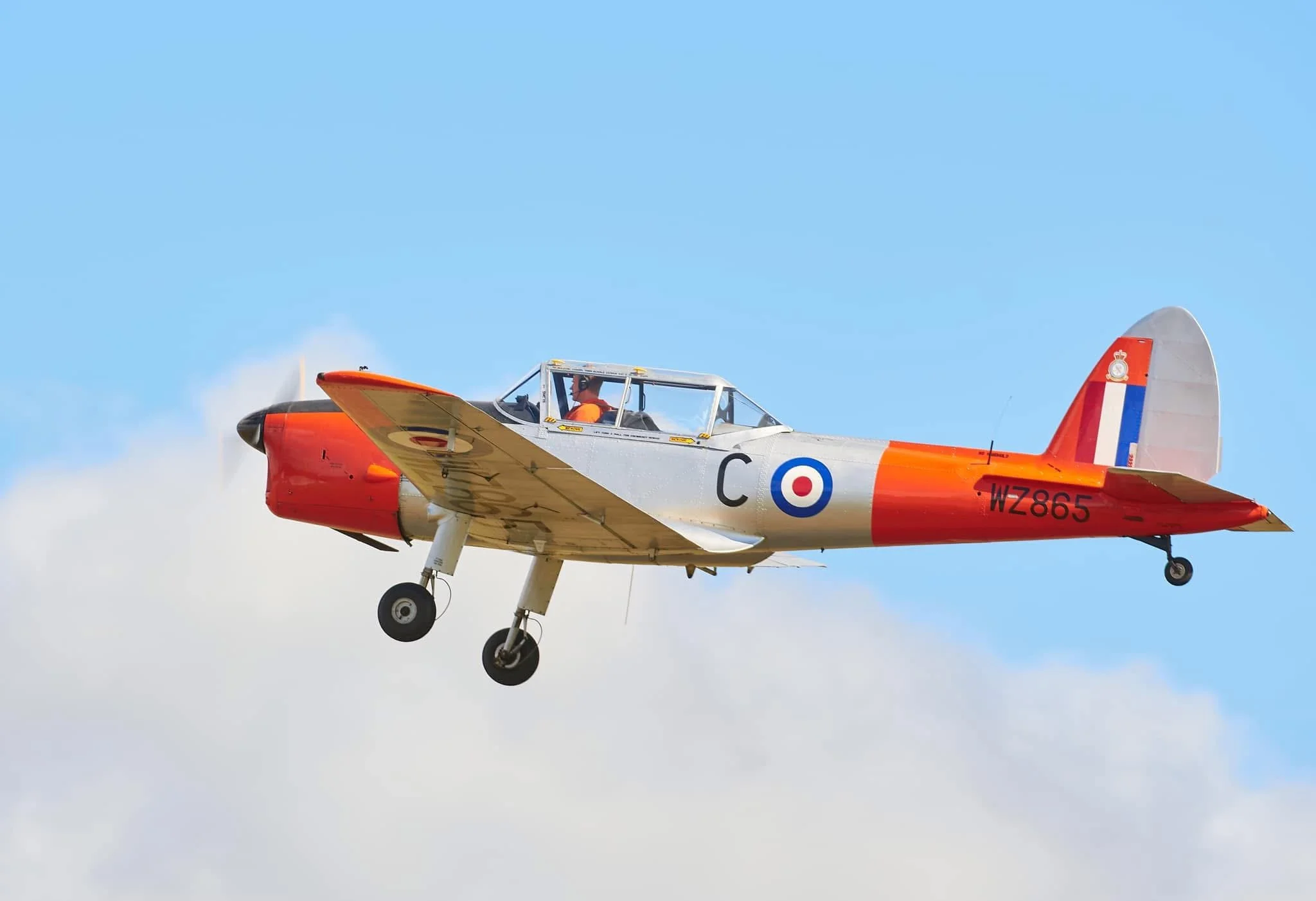
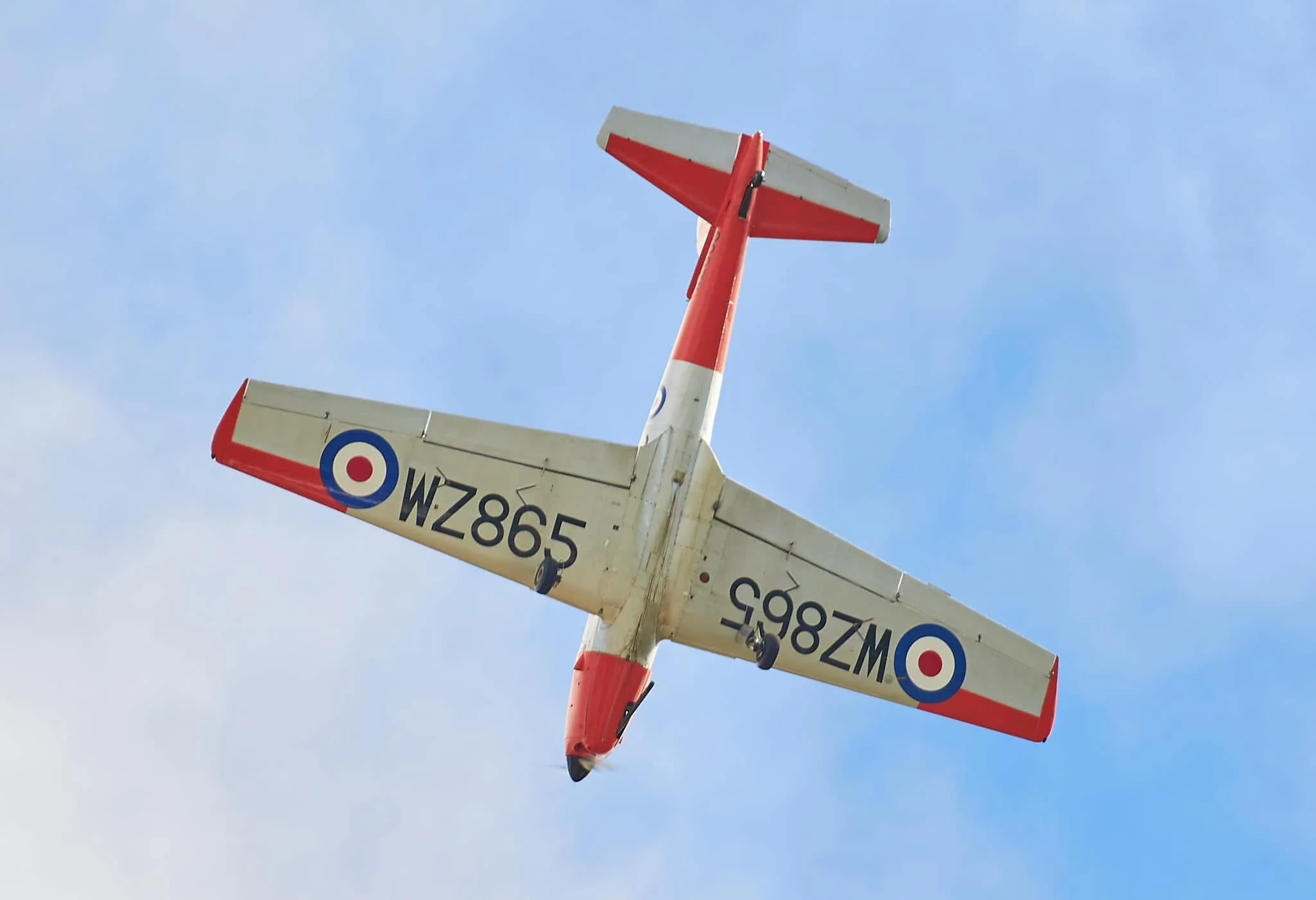
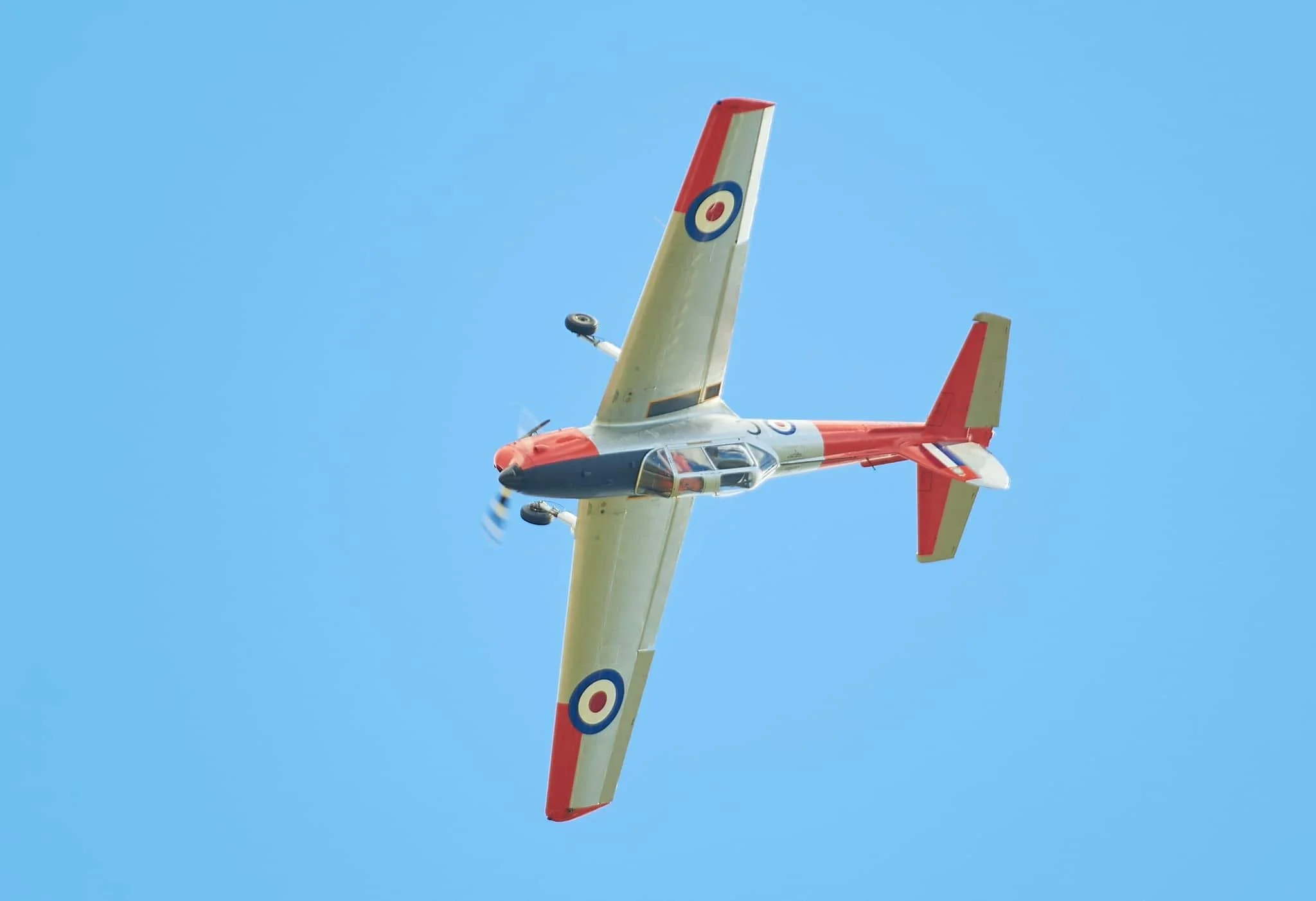
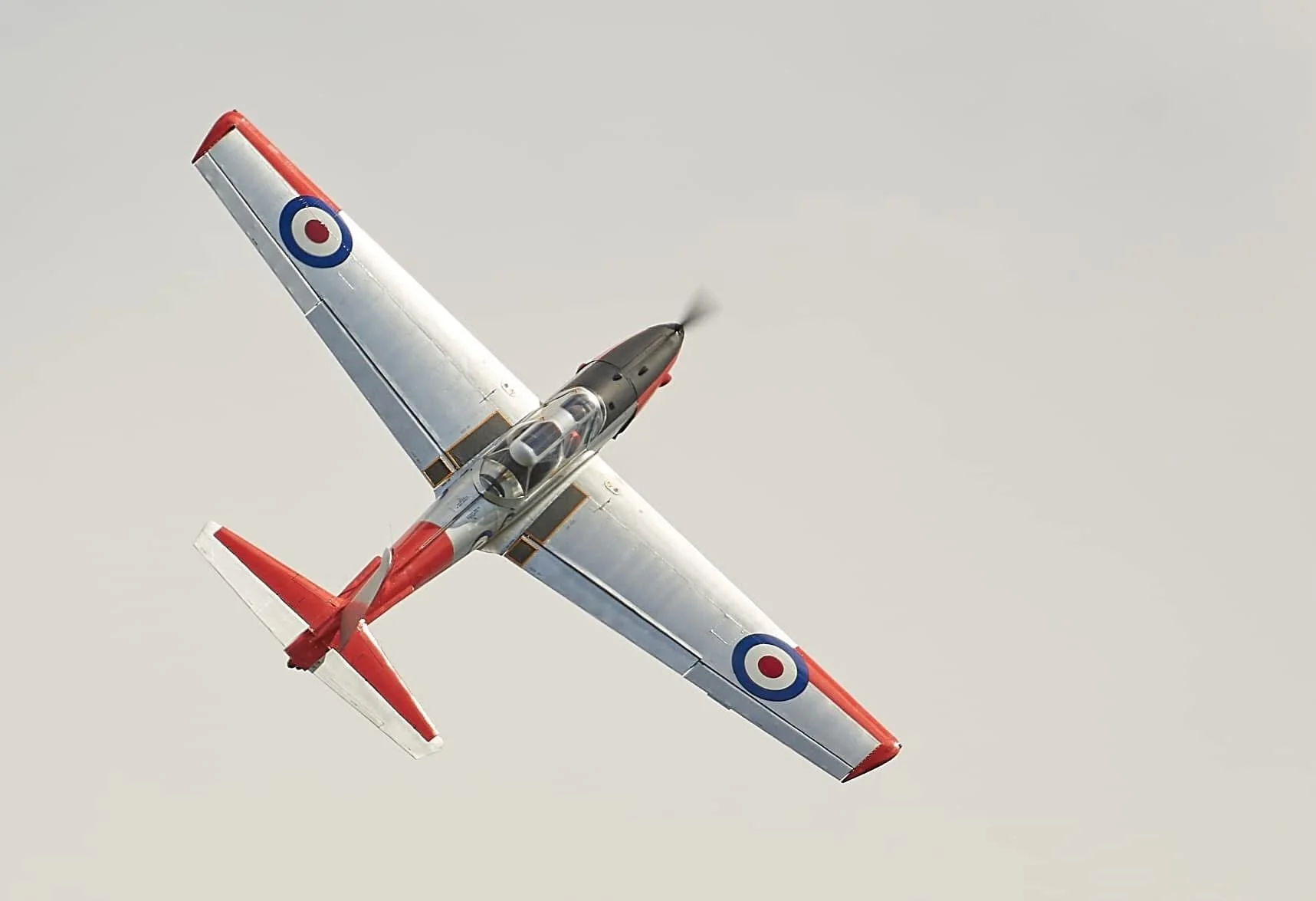
Ardmore airshow mid-way through a stall turn to the right. The Chipmunk's propeller rotation makes this the easier direction to fly.



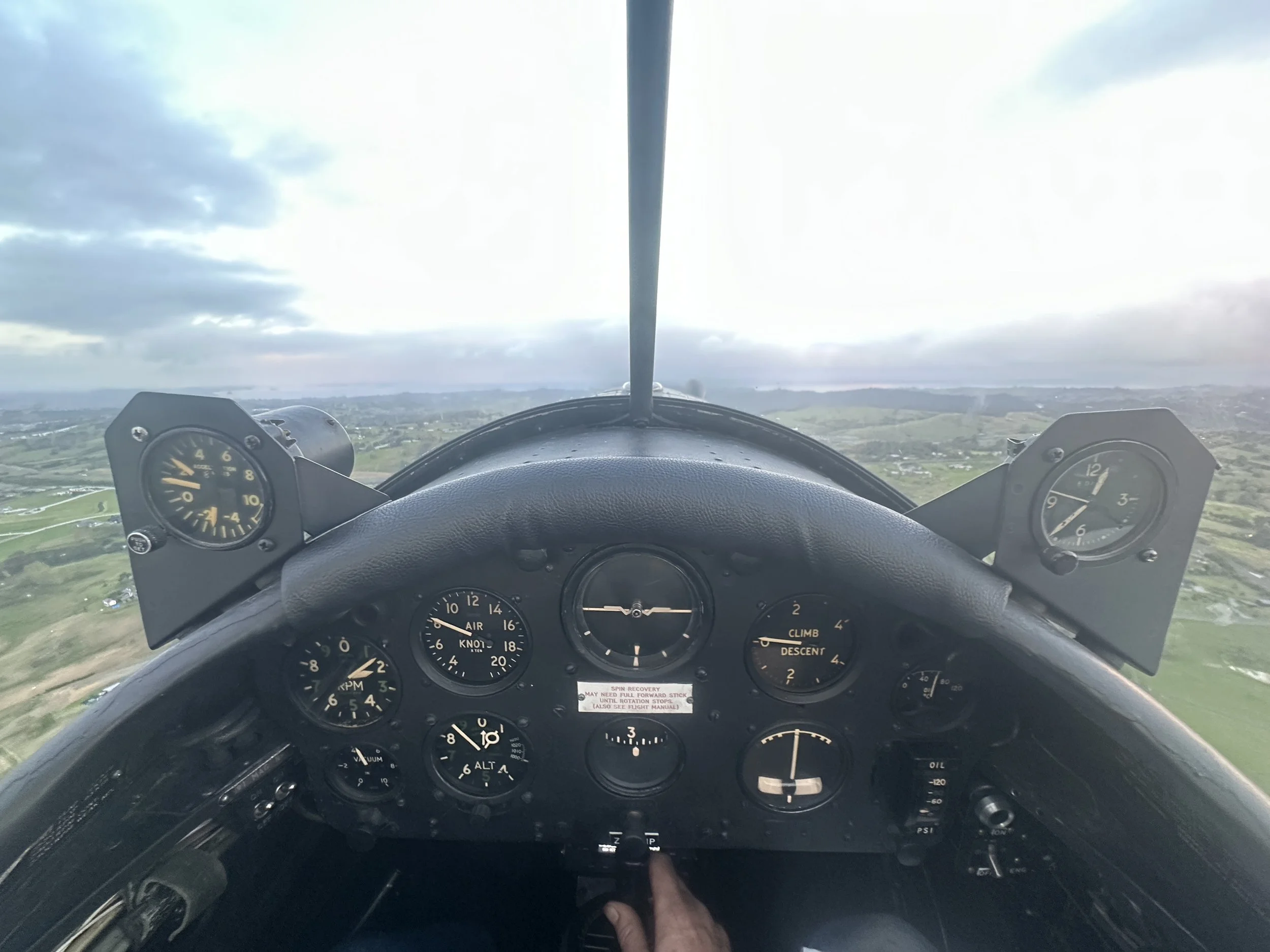
The Chipmunk's WW2-era instruments help create a fighter-like experience in both cockpits.
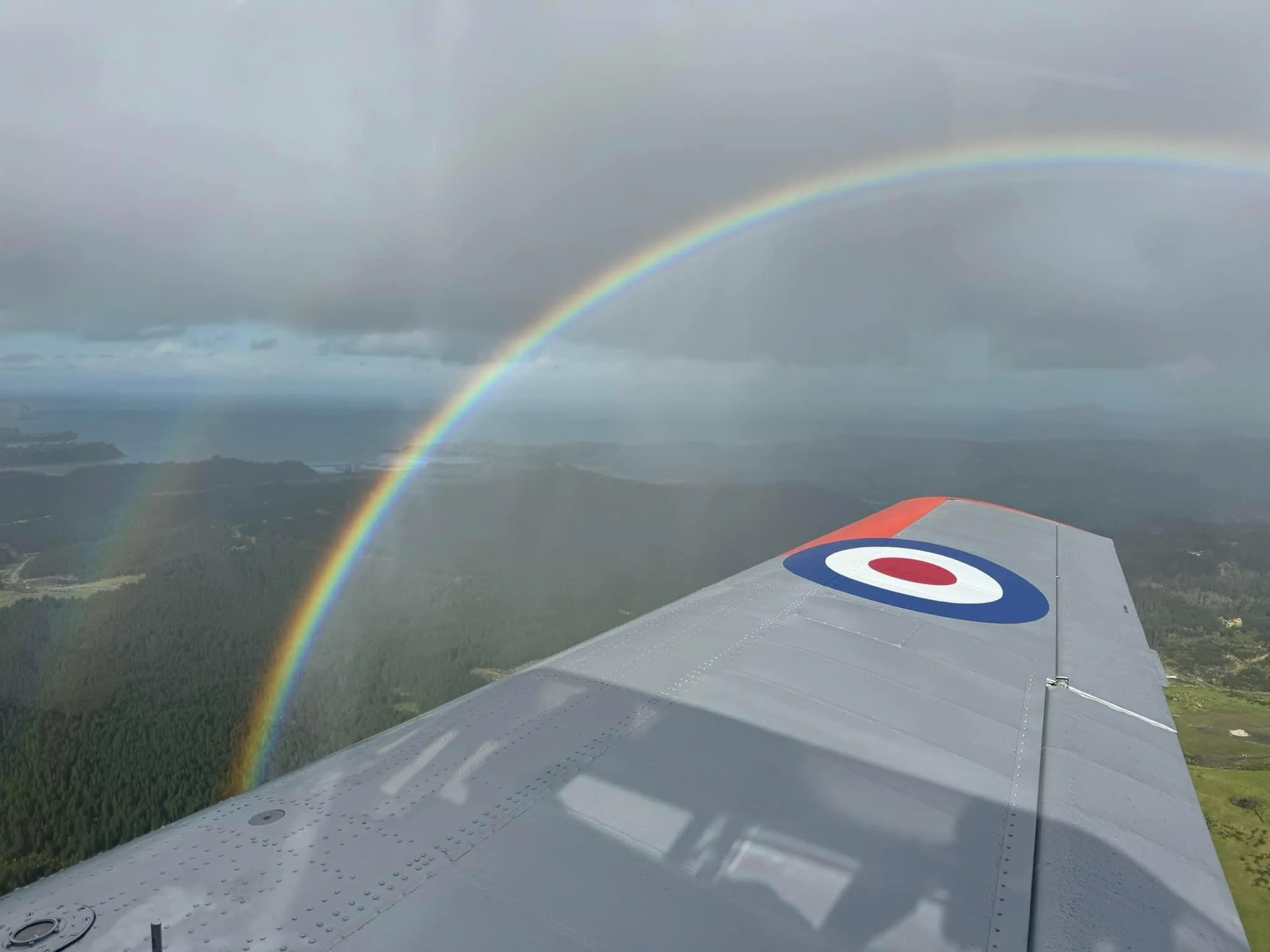
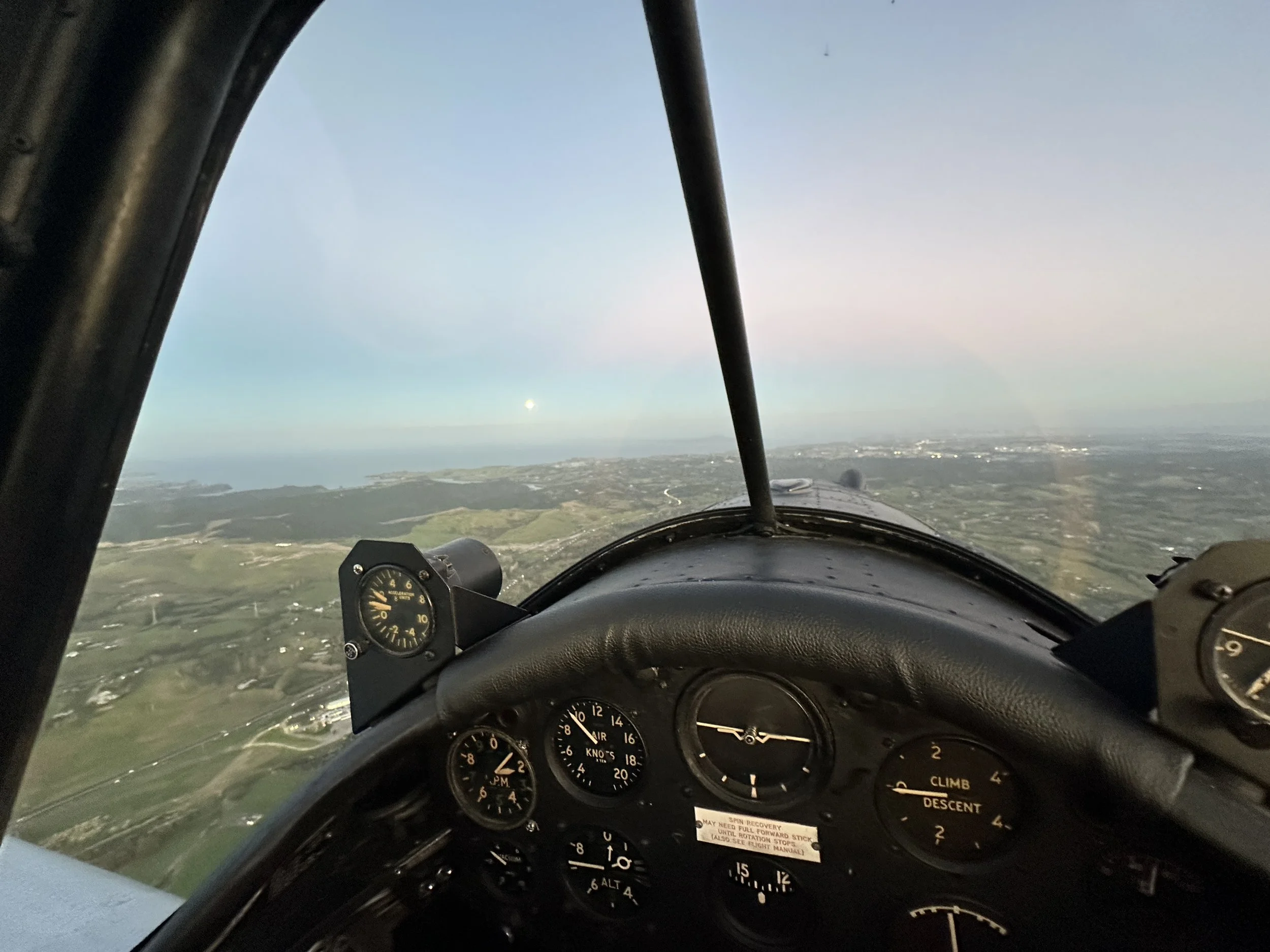

Landing at Kaipara Flats airfield. Kaipara Flats is about a 10 minute flight north from North Shore Airfield and is handy for training or just a cup of coffee at the aero club.
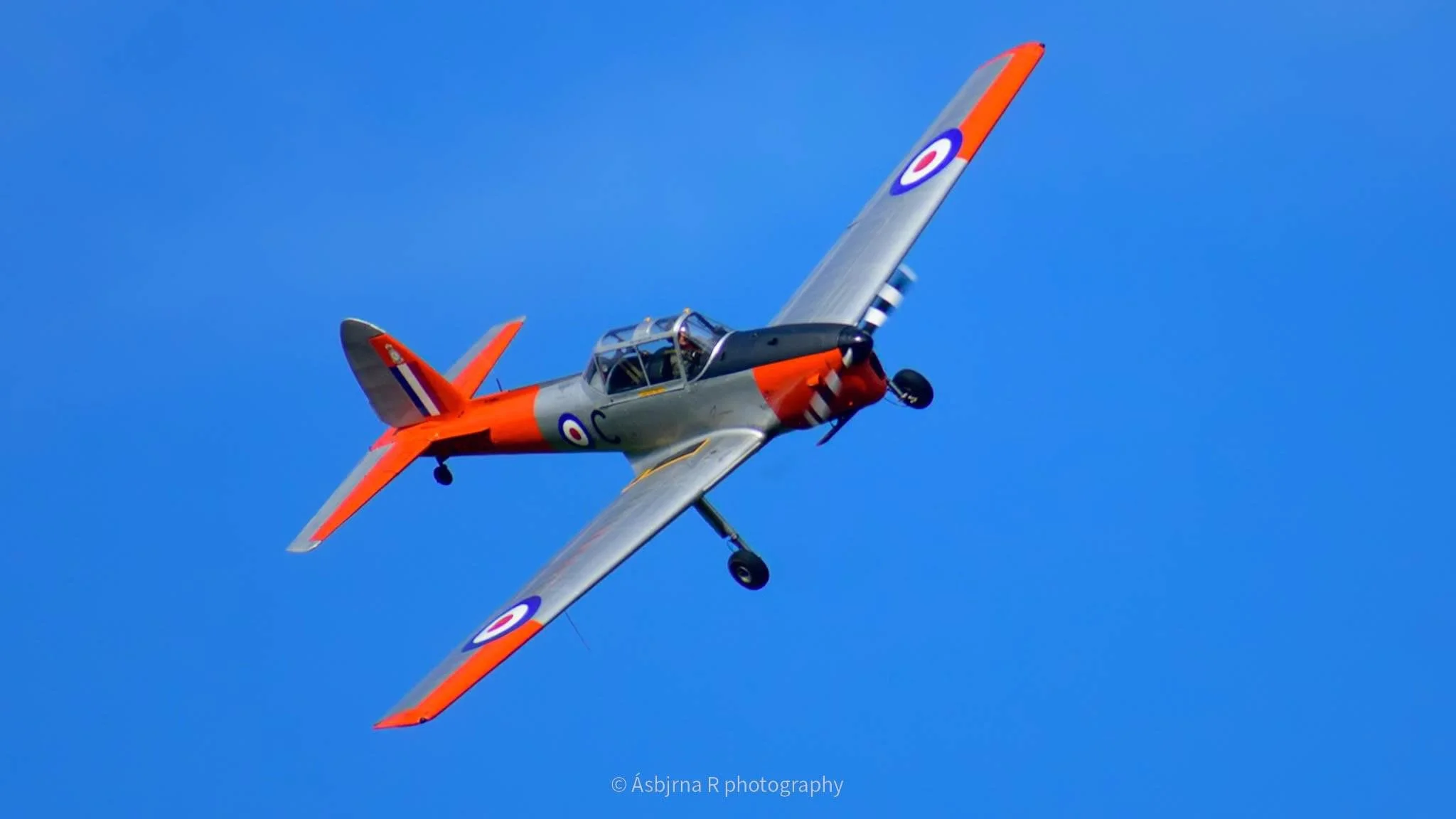
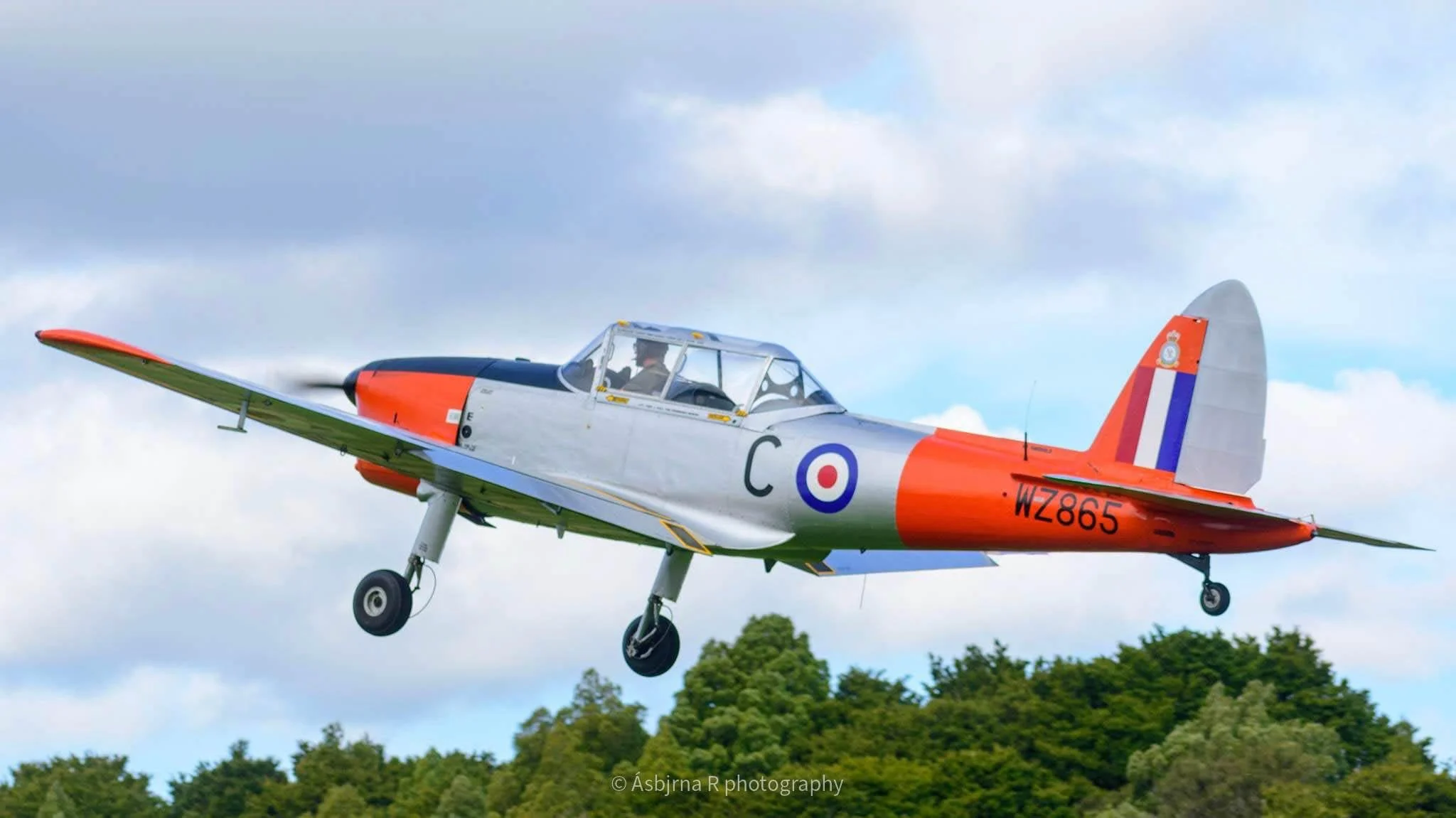
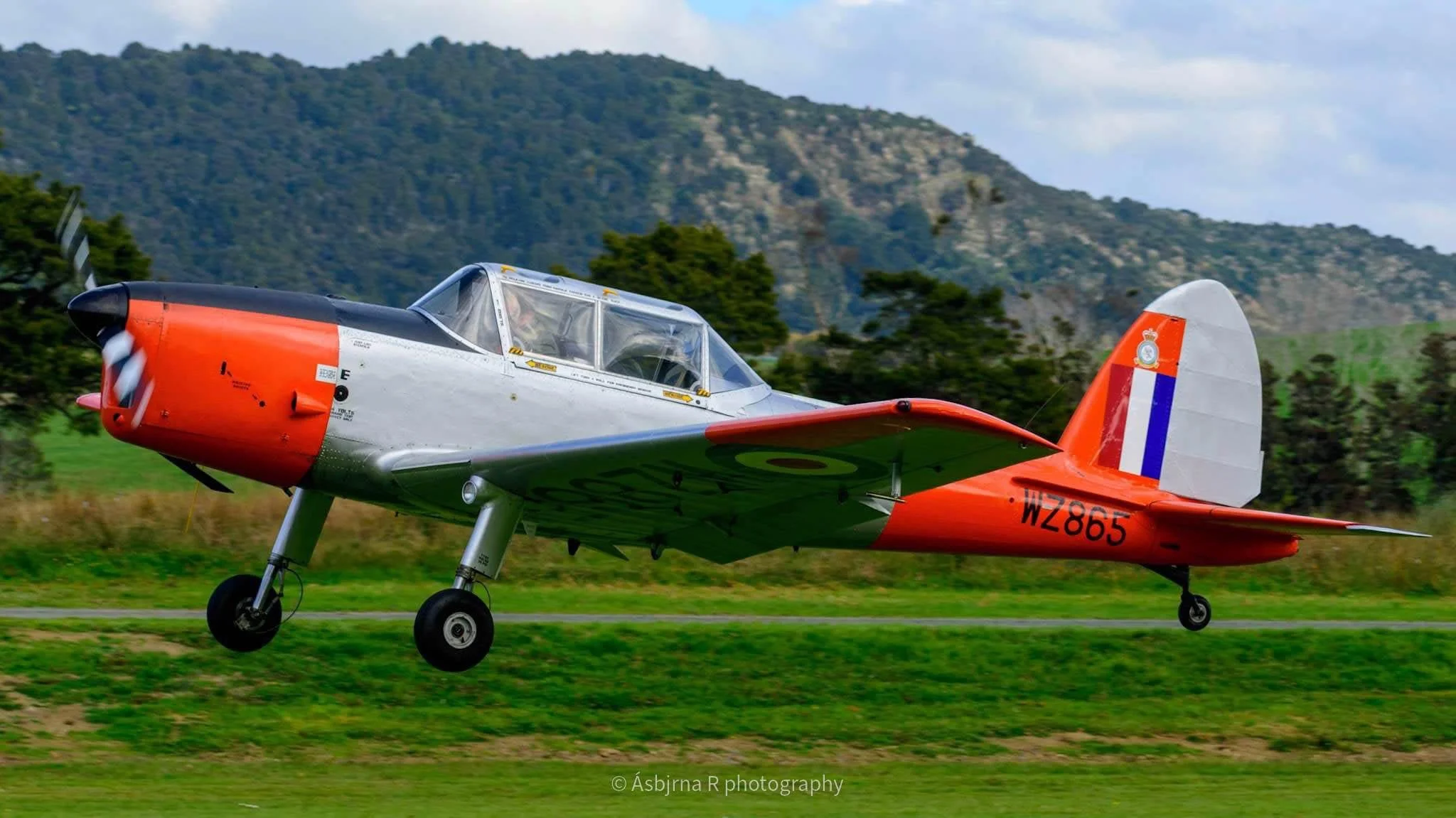
Landing at Kaipara Flats.
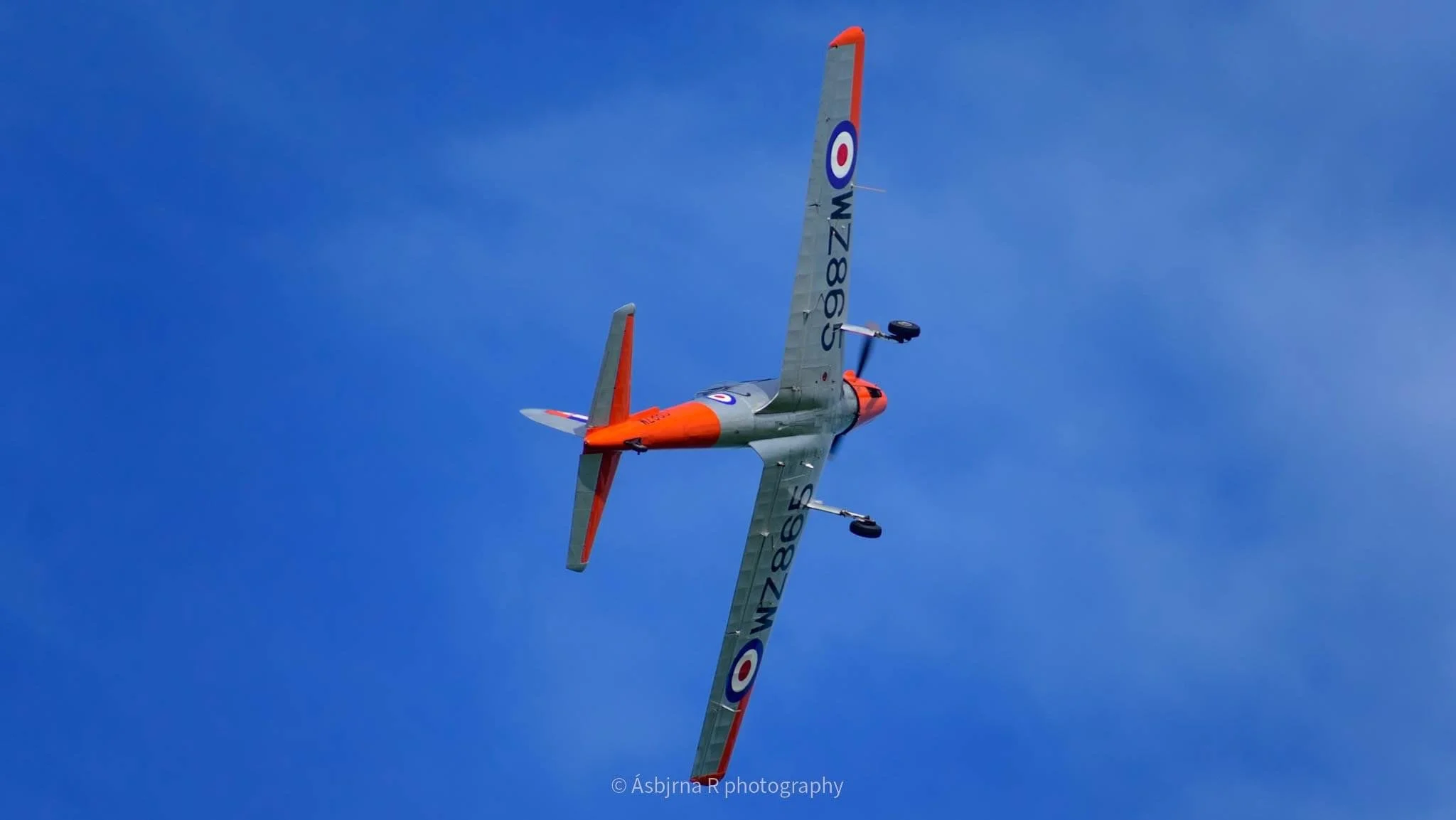
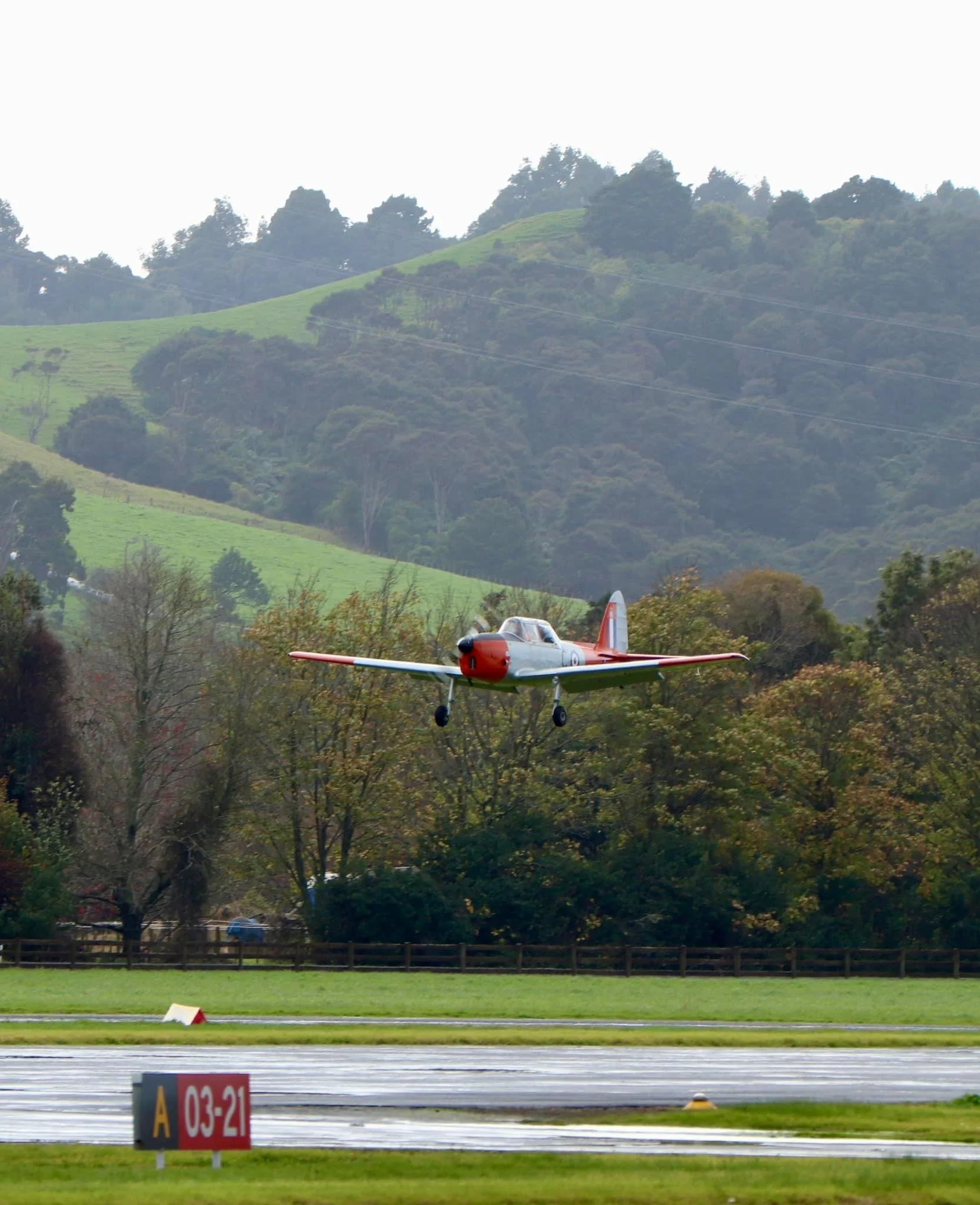
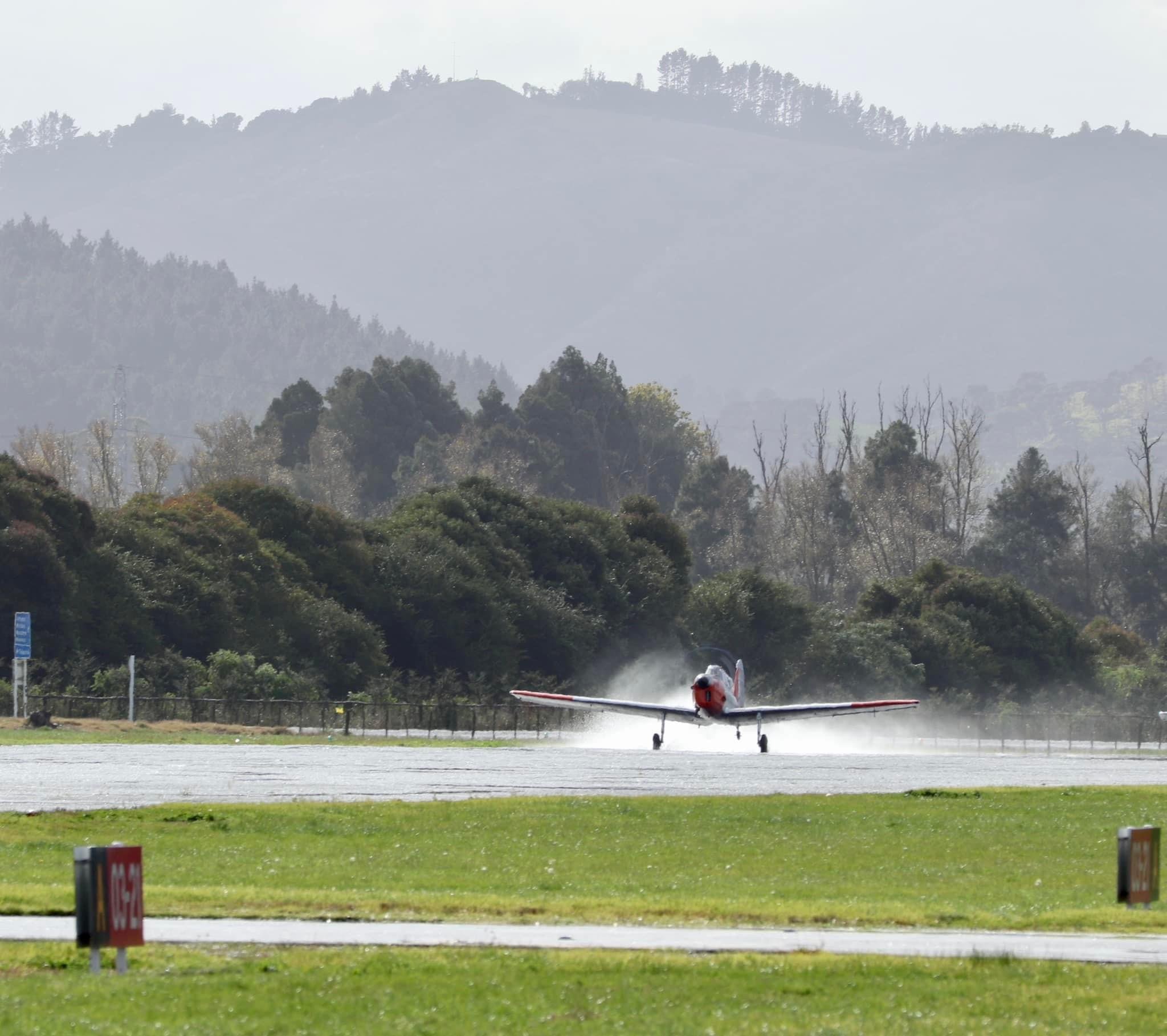
Departing from a wet runway 21 at Ardmore.
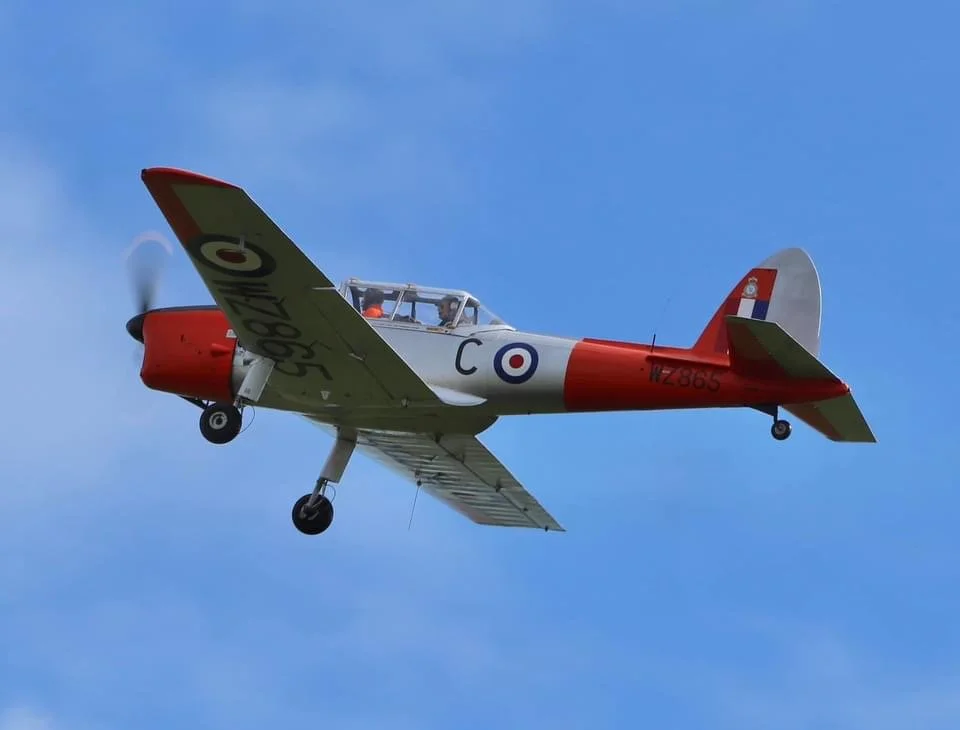
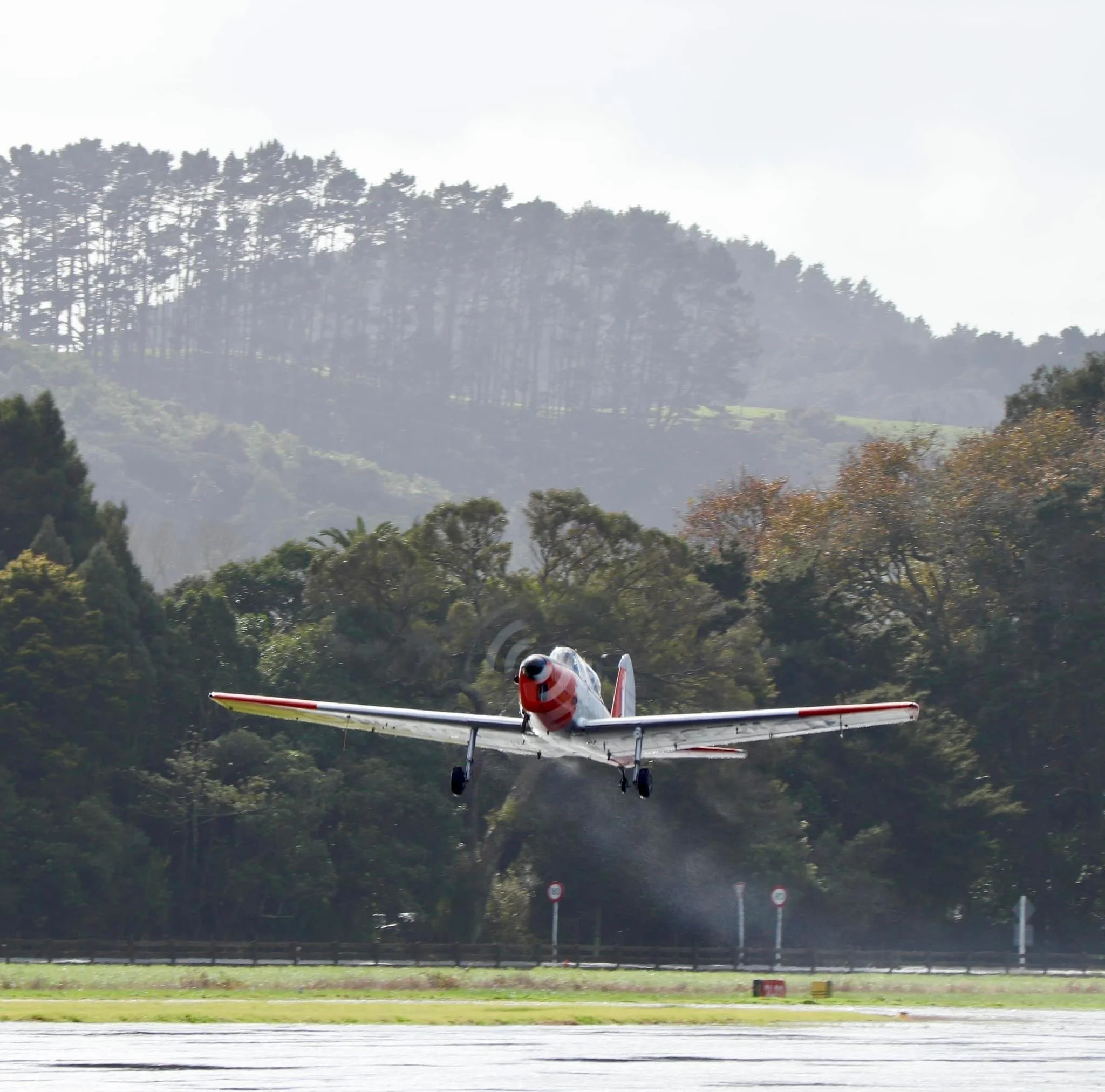
Trailing spray after departing runway 21 at Ardmore.
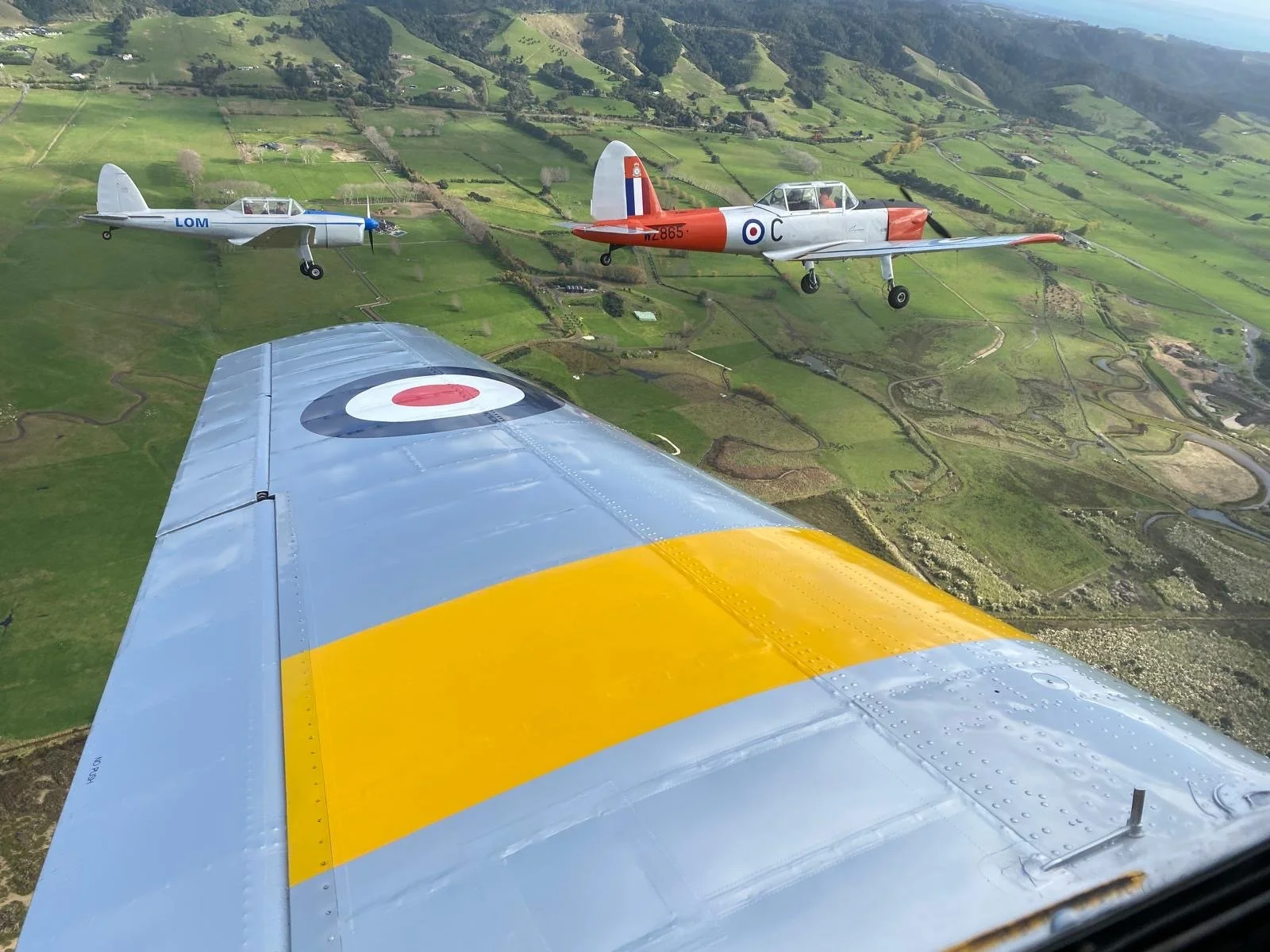

Chipmunk 65 and Chipmunk ZK-LOM seen from Chipmunk ZK-RFS during the 78th birthday formation flight.
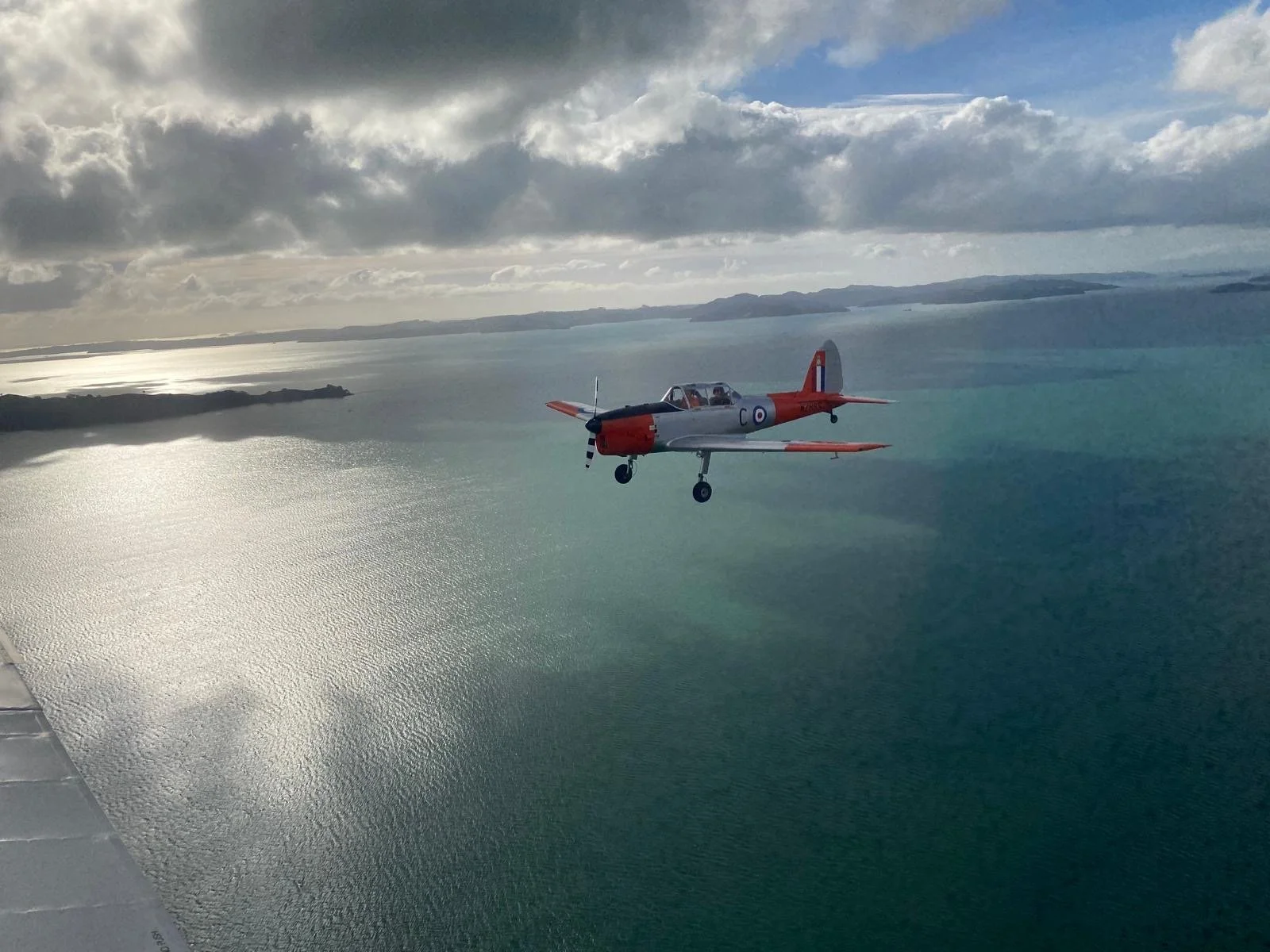


Formation training near the Wairoa River Mouth.

Turning that frown upside down off Orewa Beach.

Pulling into the vertical for a loop off Orewa Beach – one of our favourite spots for aerobatics.

What goes up must come down!
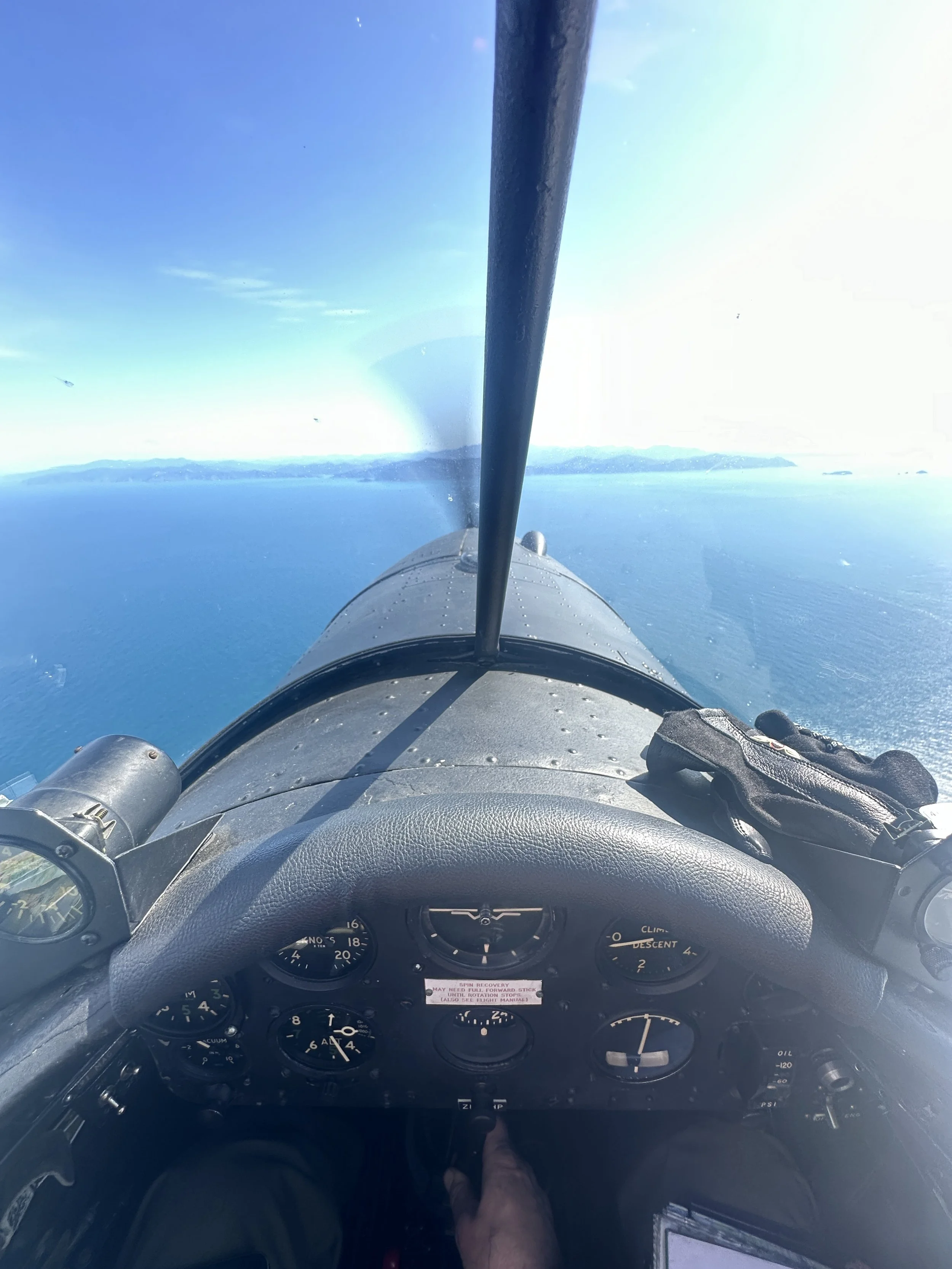
Crossing Cook Strait in September 2024.

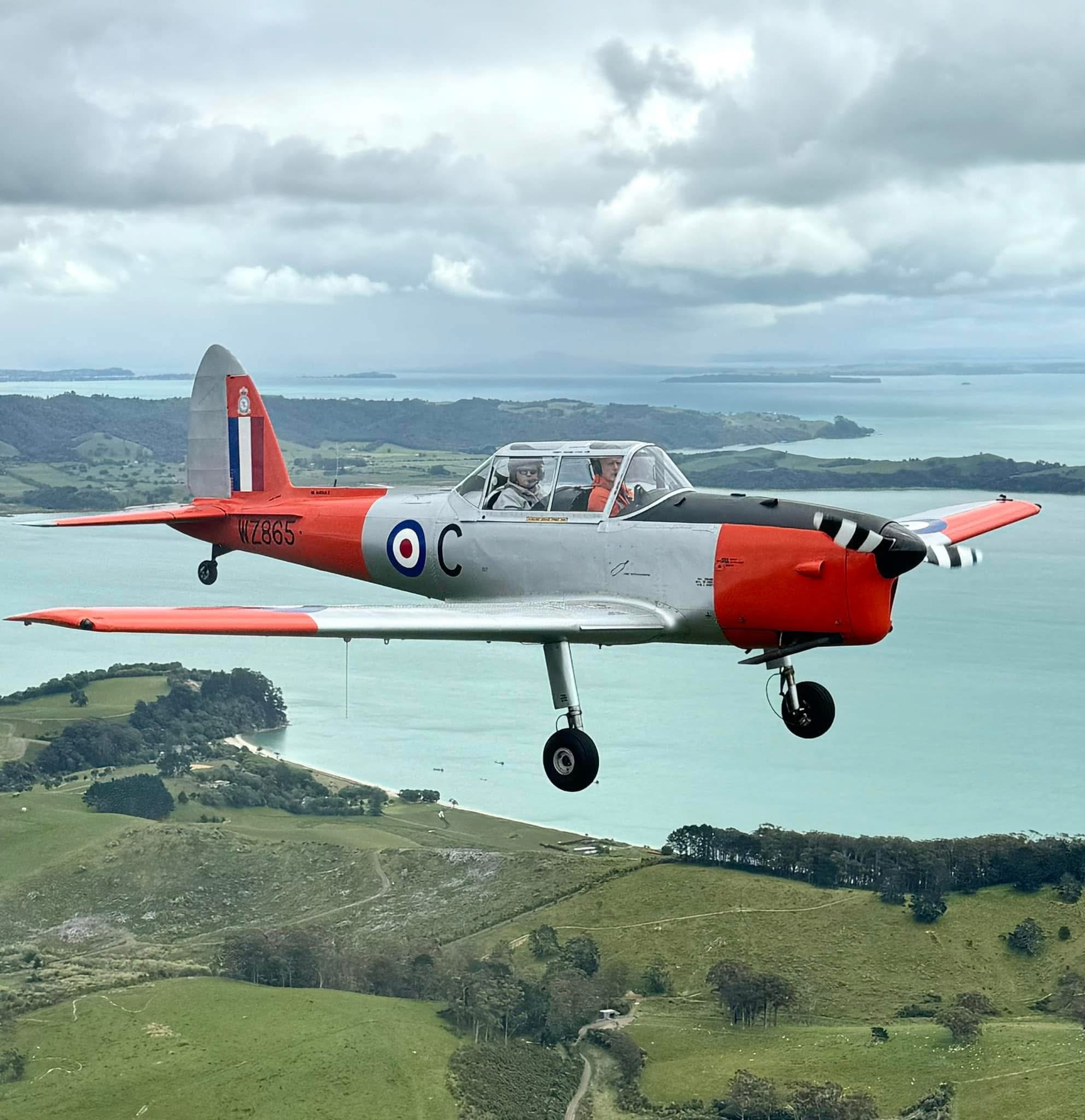
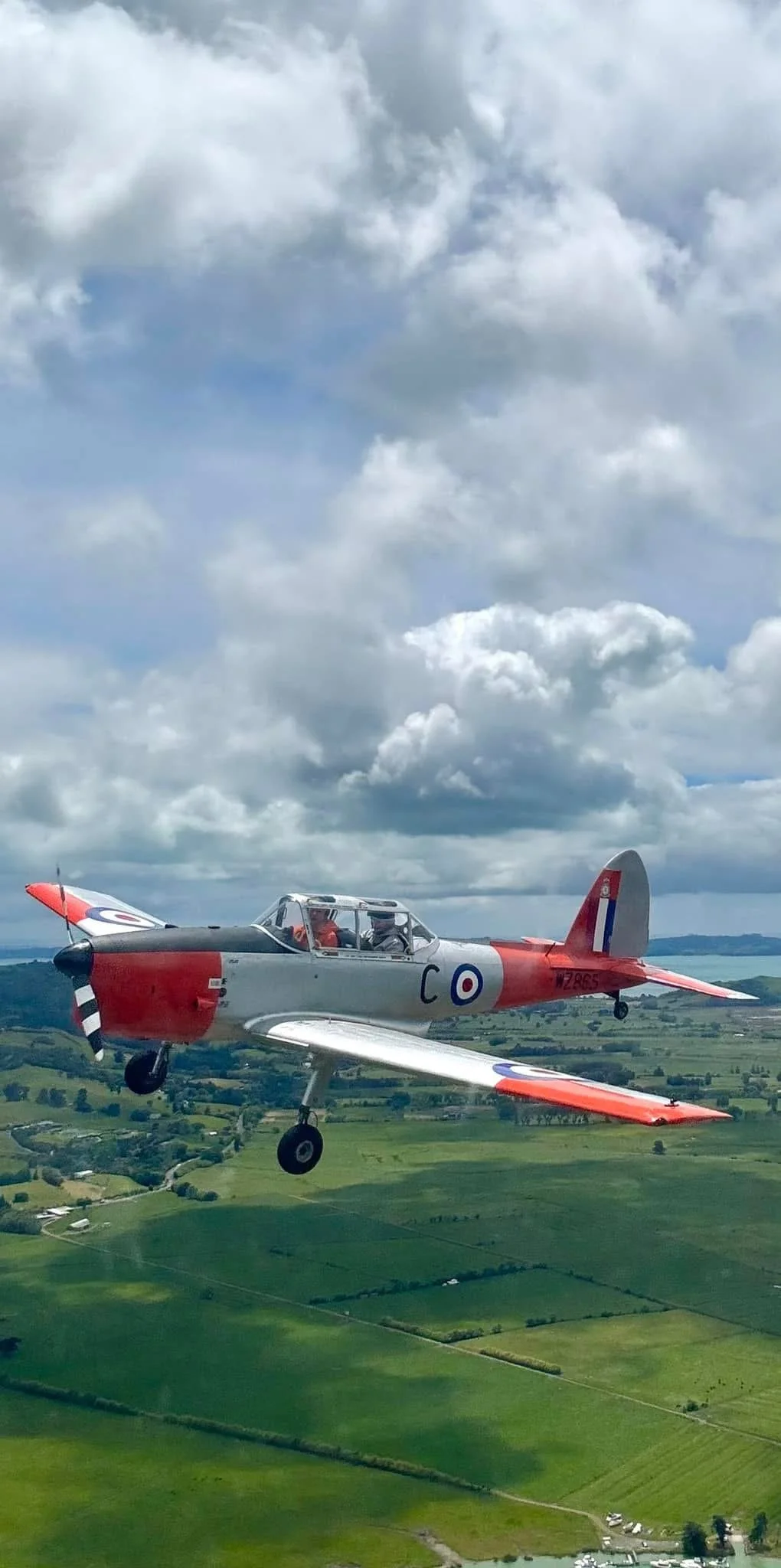

At home in our North Shore hangar. Piper Arrow ZK-TGF is under the cover in the background.

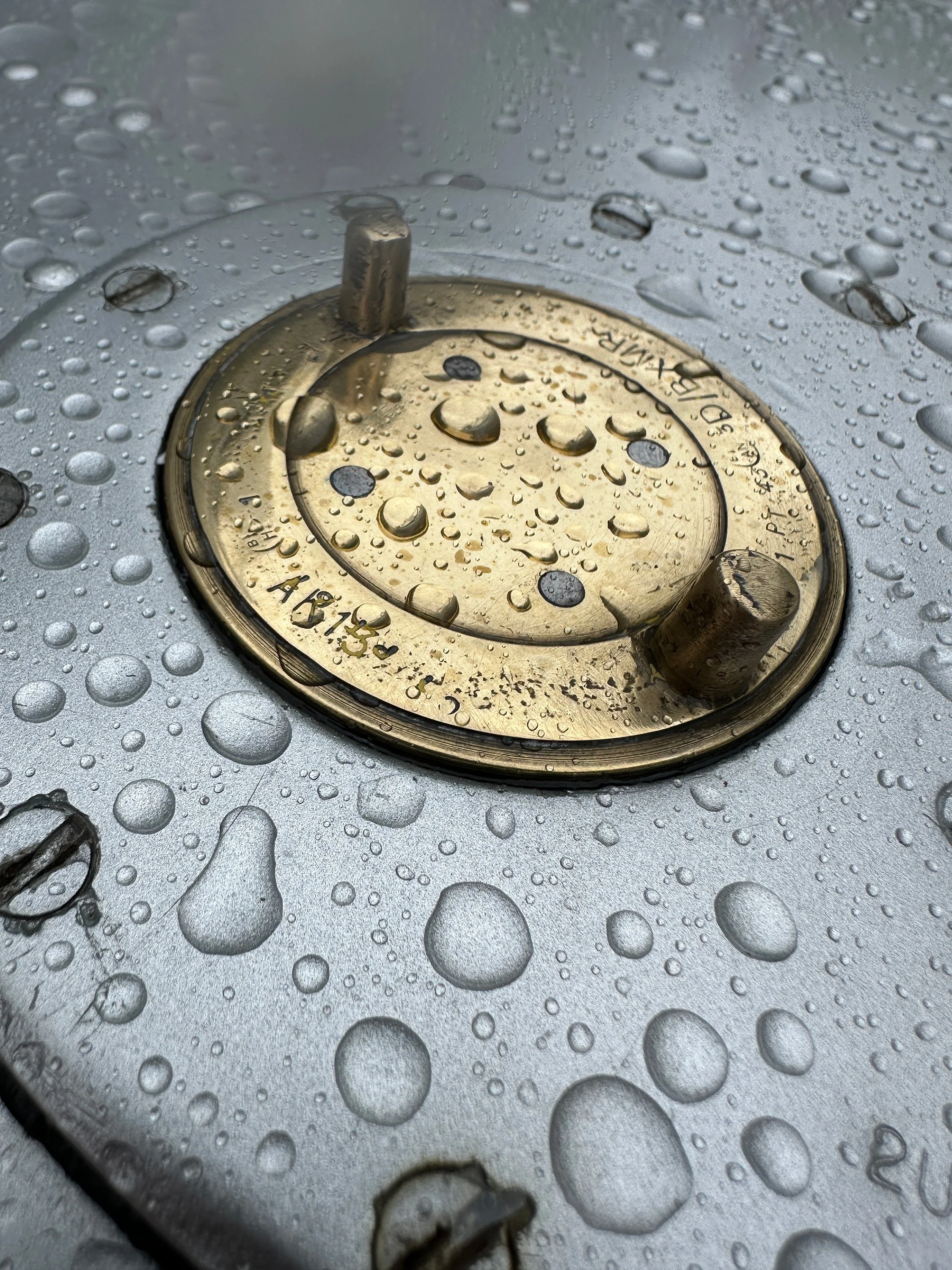
The Chipmunk has plenty of brass to polish if you know where to look. Here's one of the filler caps for the 9.5 imperial gallon wing tanks.


Both cockpits feature jettisonable side panels for emergency exit.

Covering the pitot tube when not in use keeps dust and insects out. The pitot is one of a few parts that the Chipmunk shares with the Spitfire and other WW2 types.

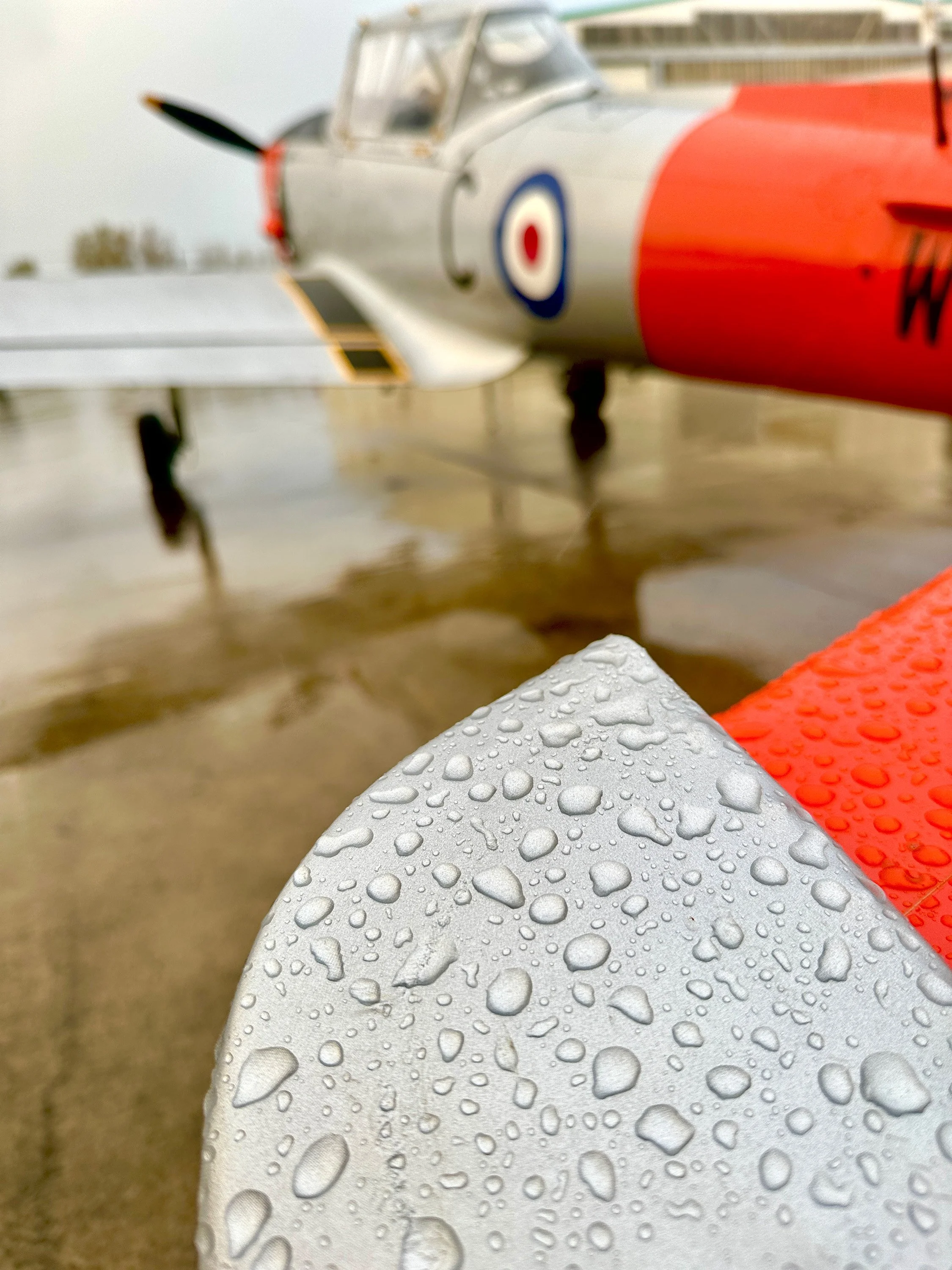
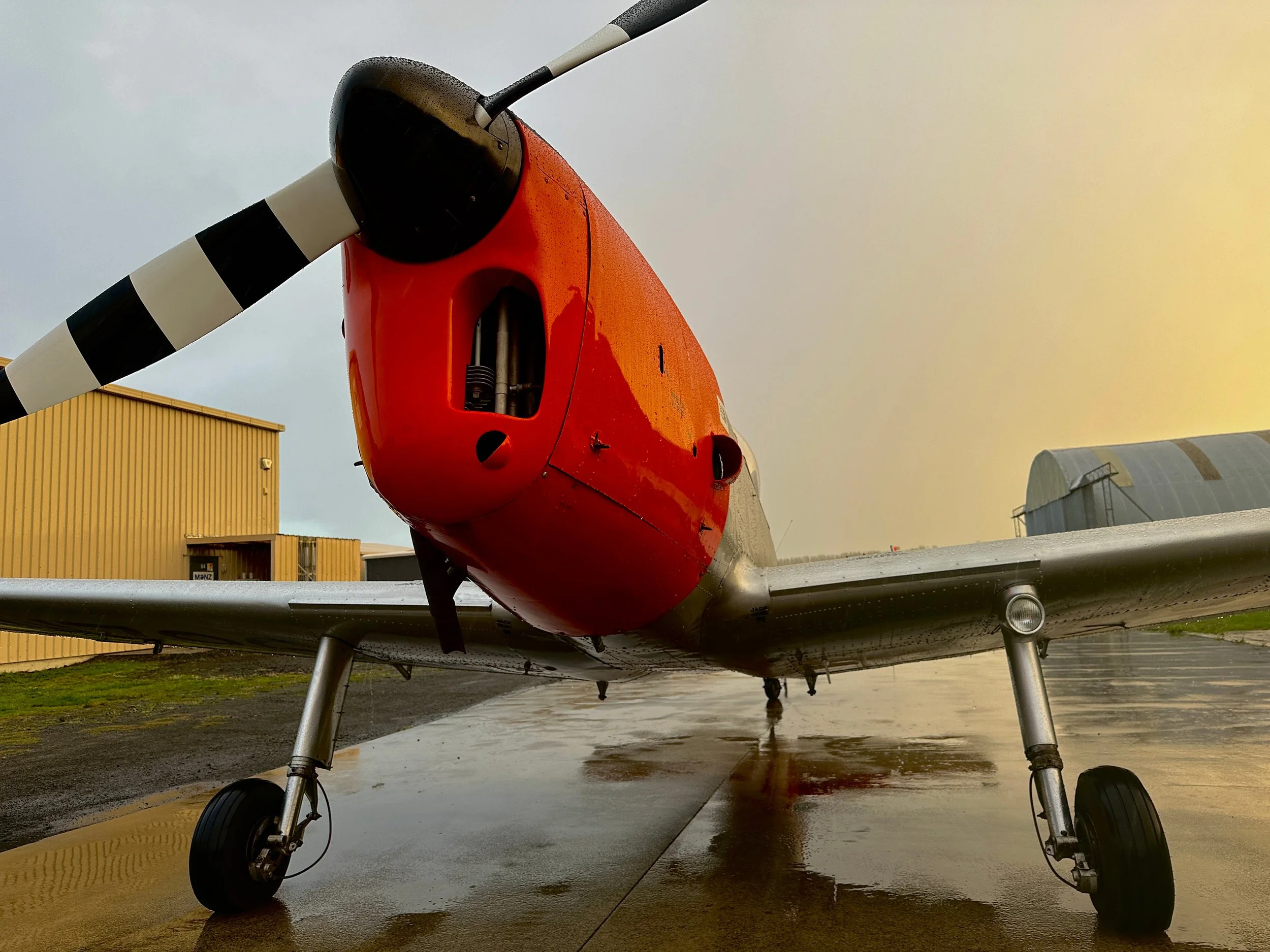


On the Ardmore flightline next to some noisy radial-powered thing.
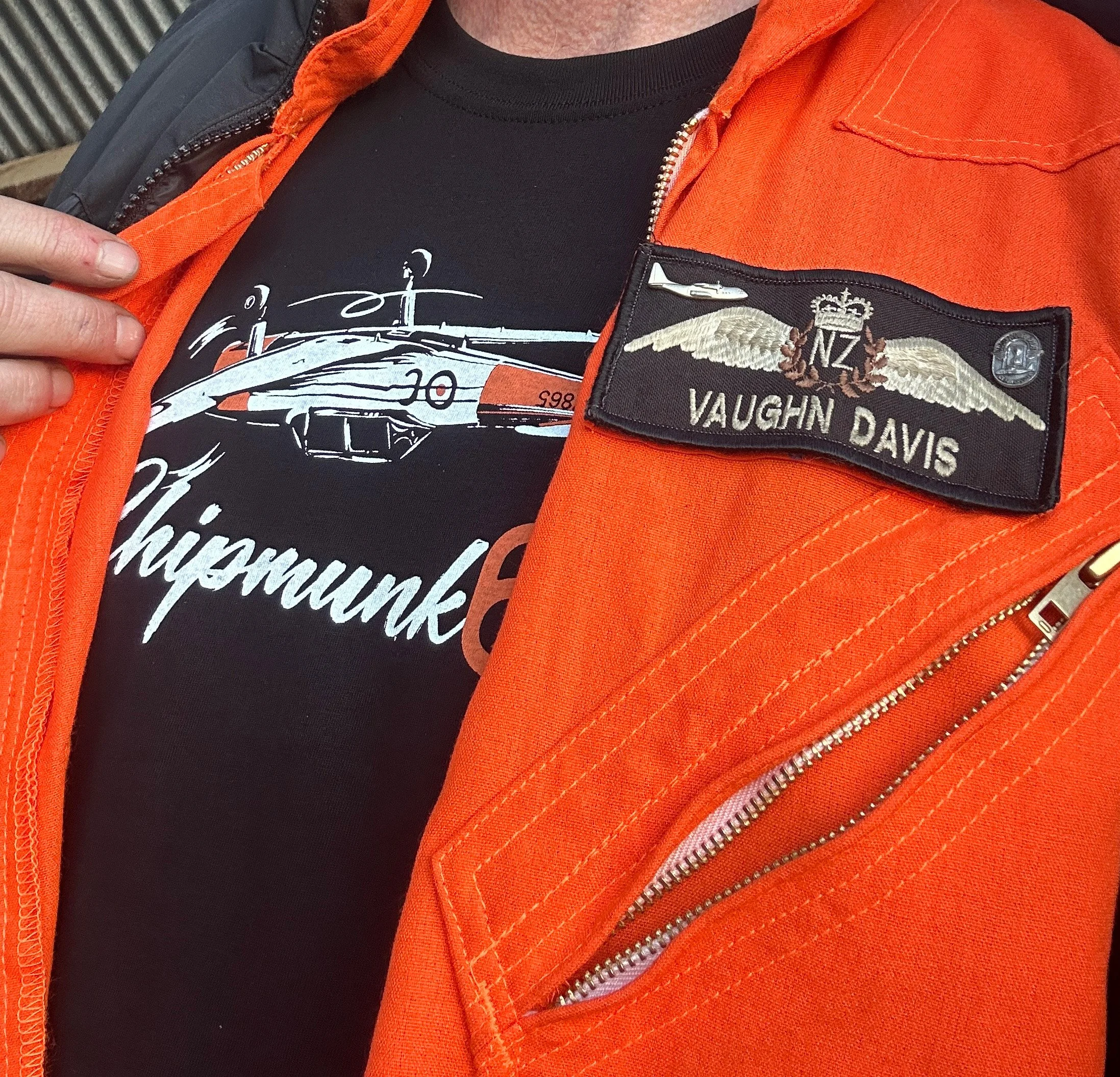
Chipmunk 65 t shirt. See the full fan merchandise range at the link below.
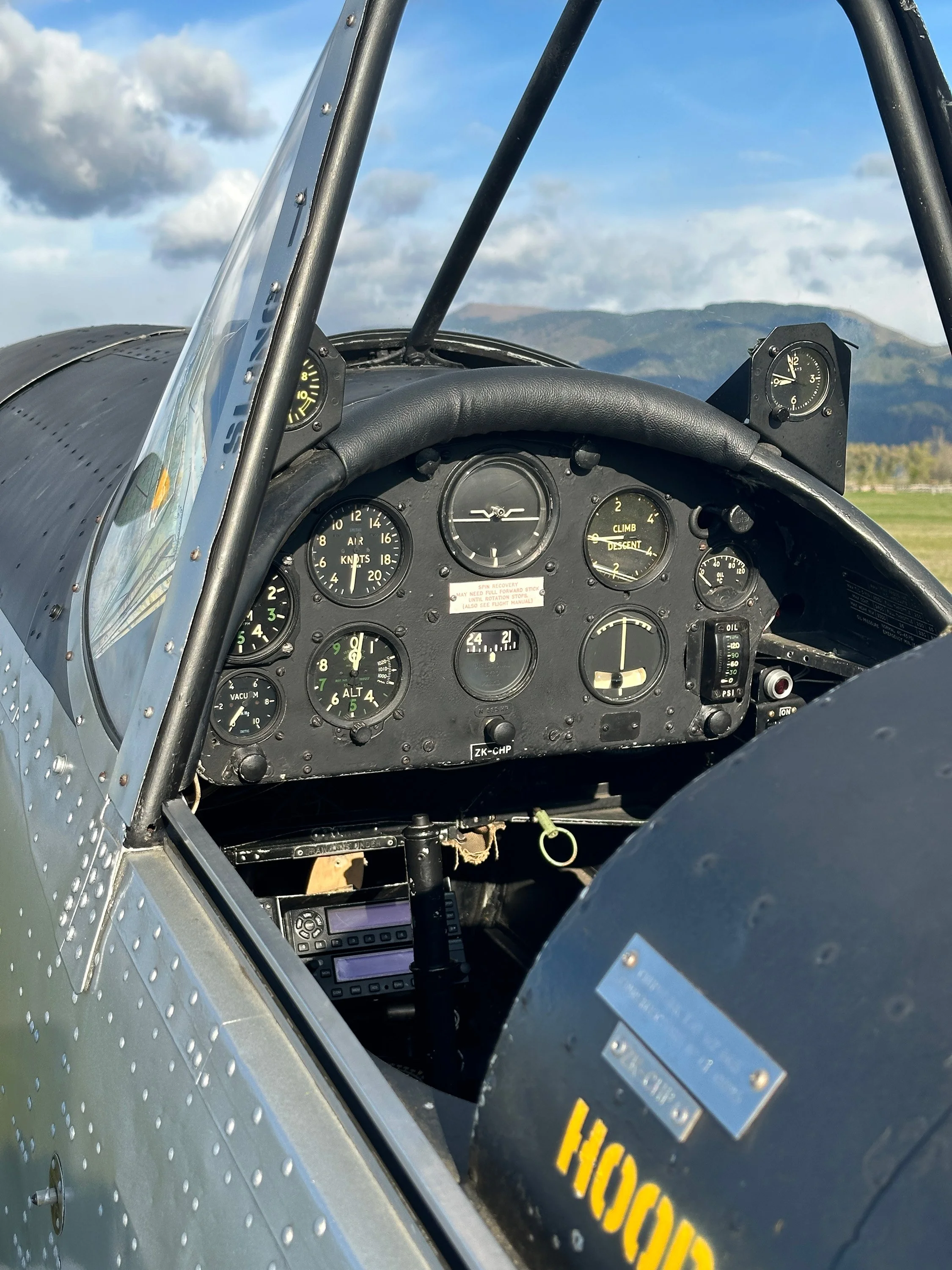

The rear silver part of the wing is fabric covered, with the leading edge being aluminium skinned.


The rudder and elevator are locked with external control locks. Locking the rudder is essential for moving the aircraft on the ground due to the rudder-brake interconnect.
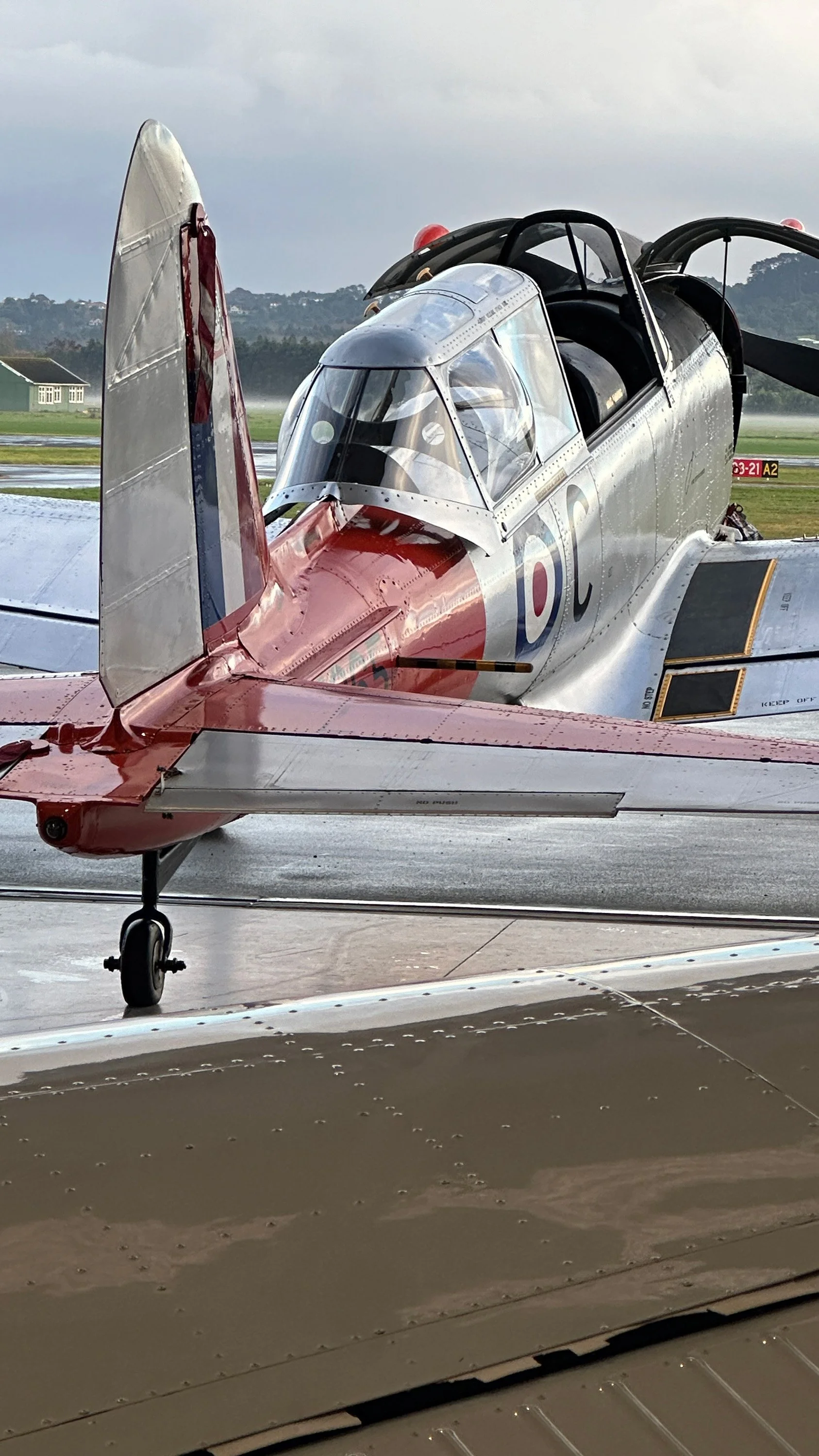

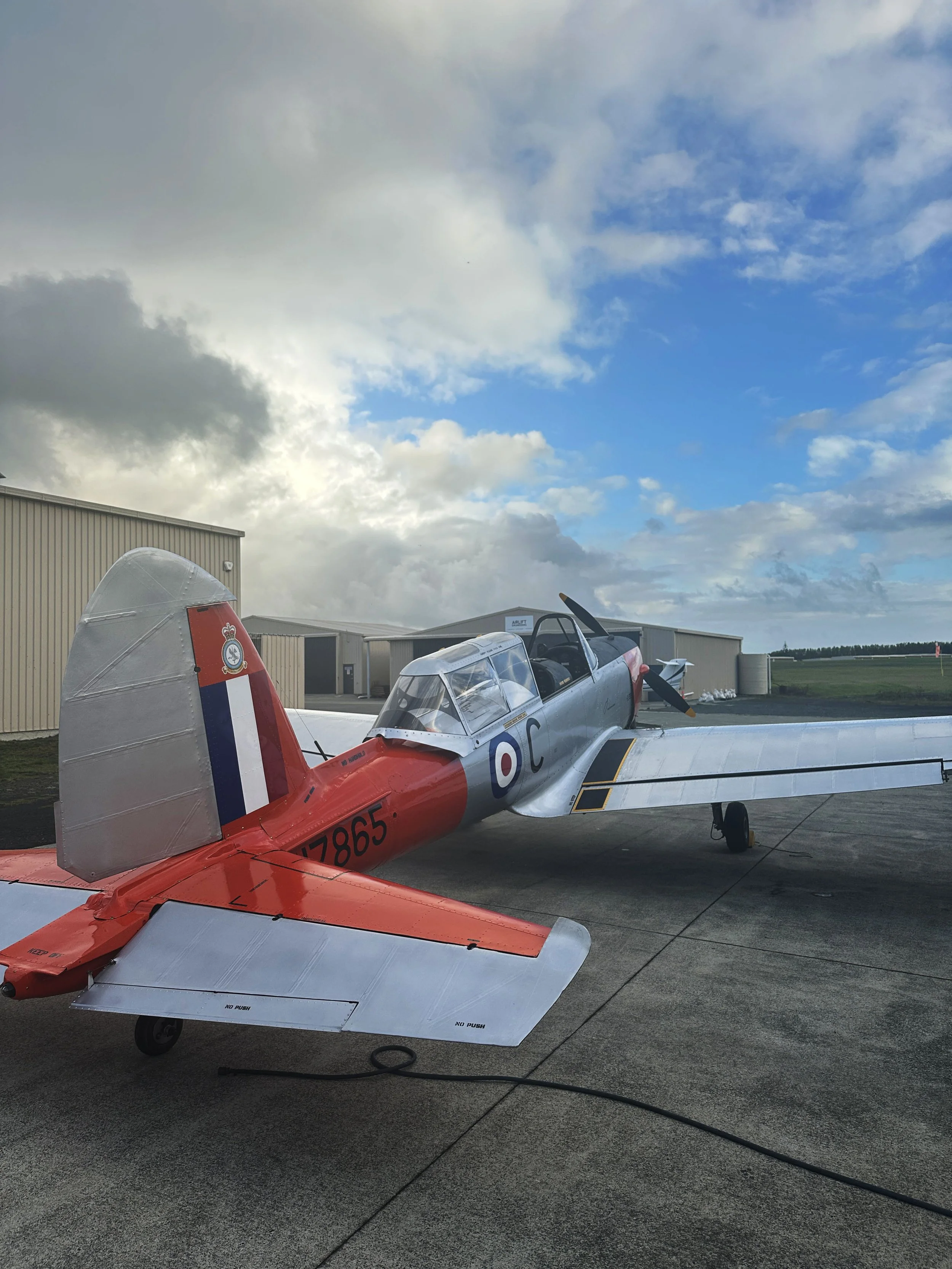
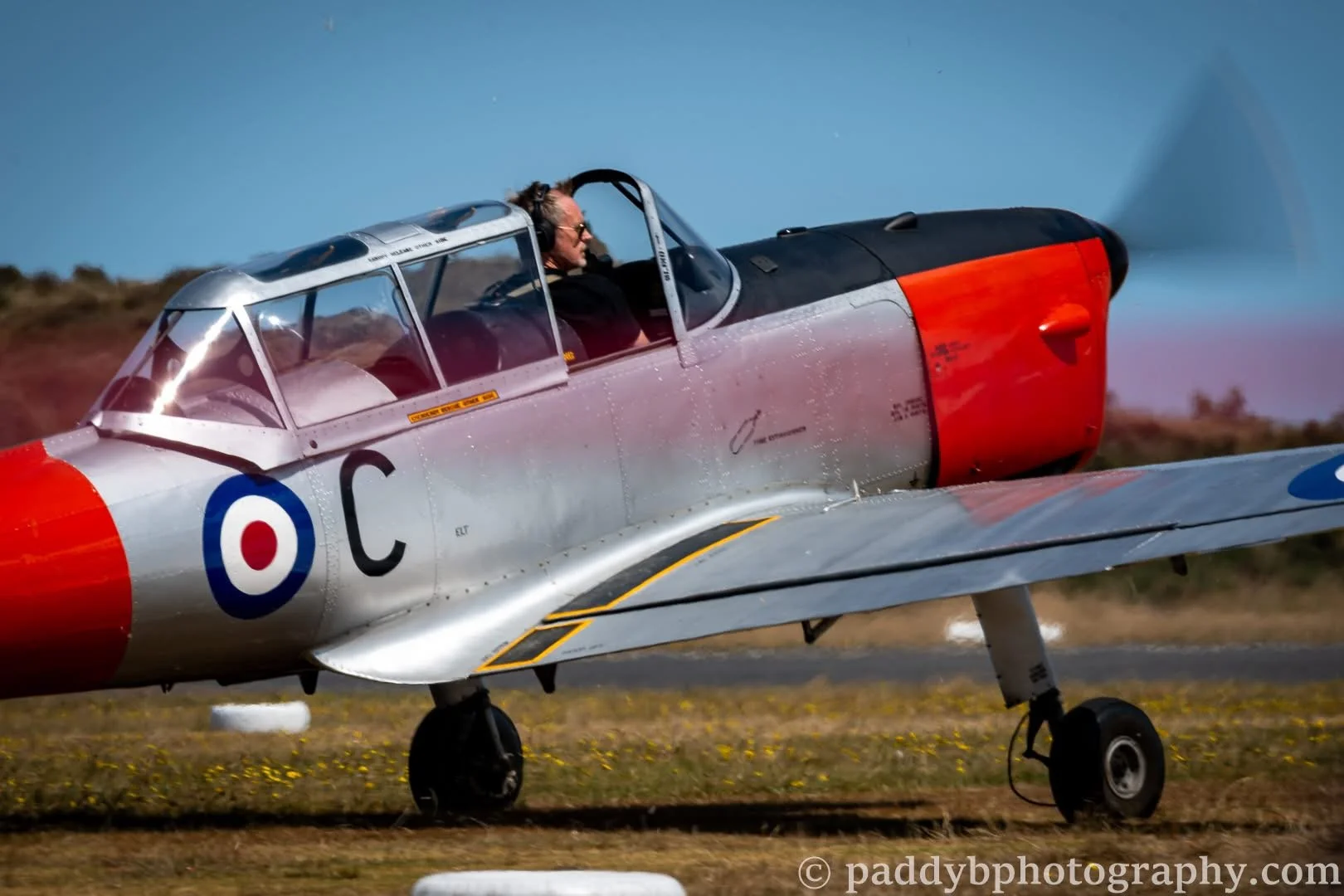
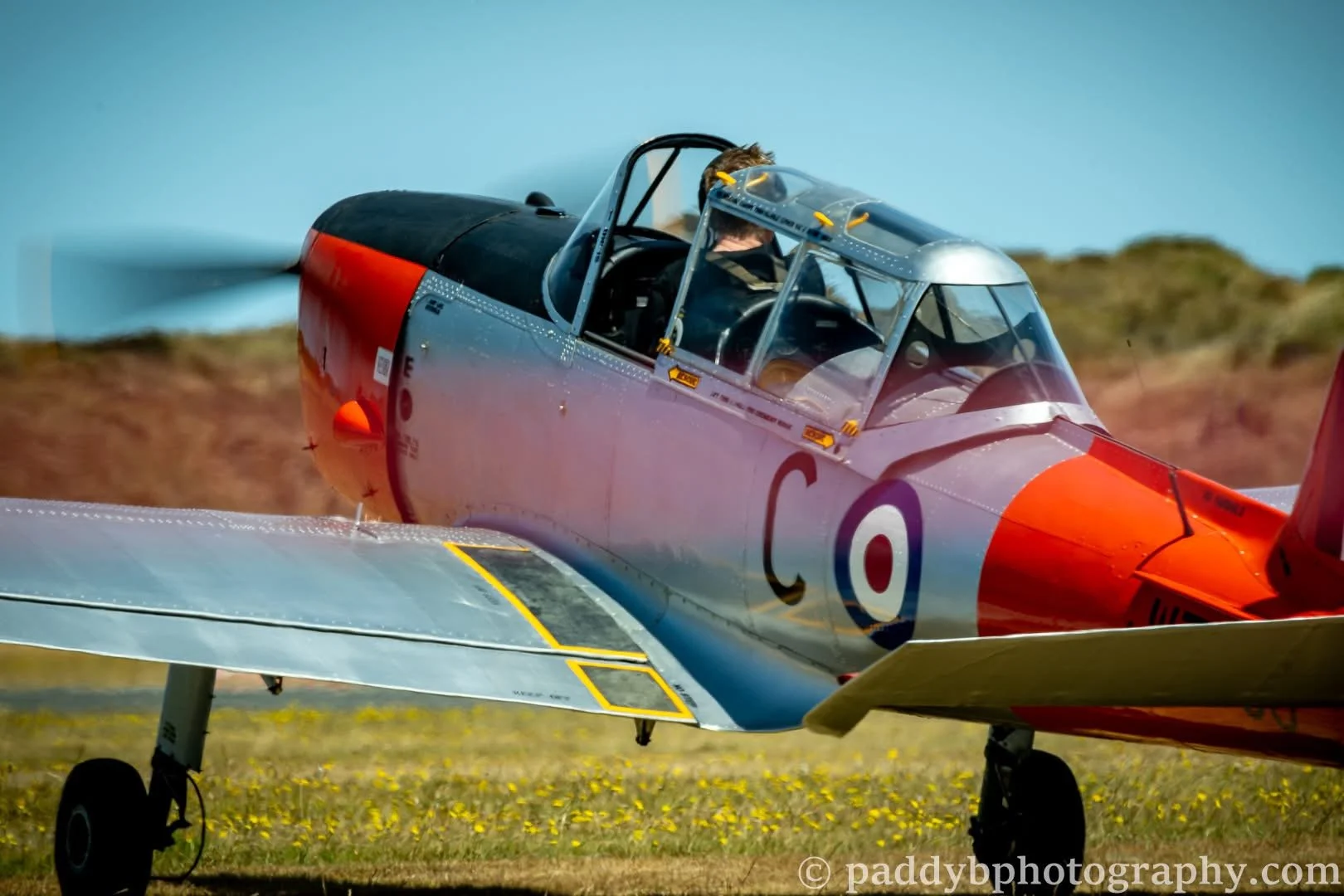
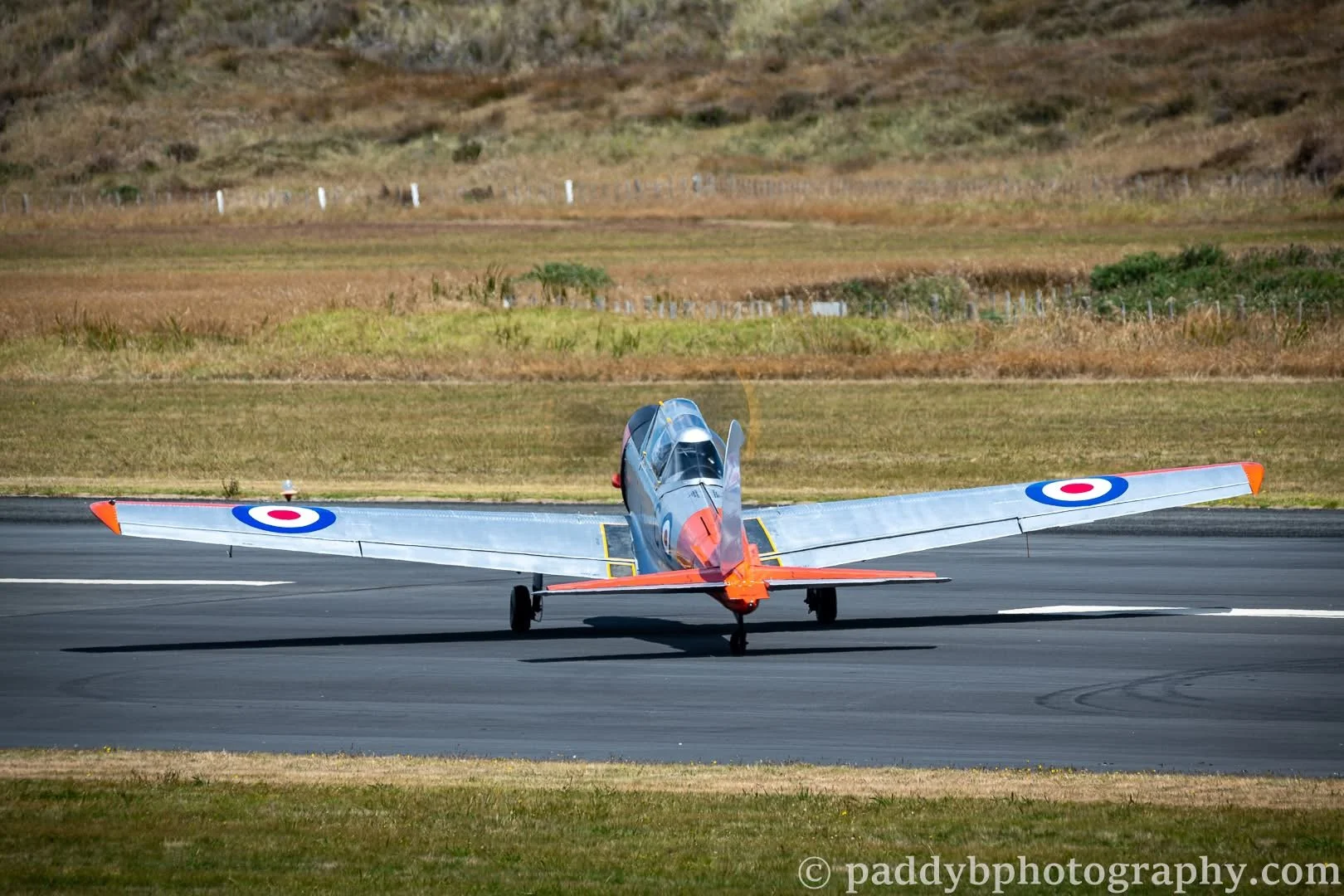
Taxiing out at the 2025 Whanganui air show.
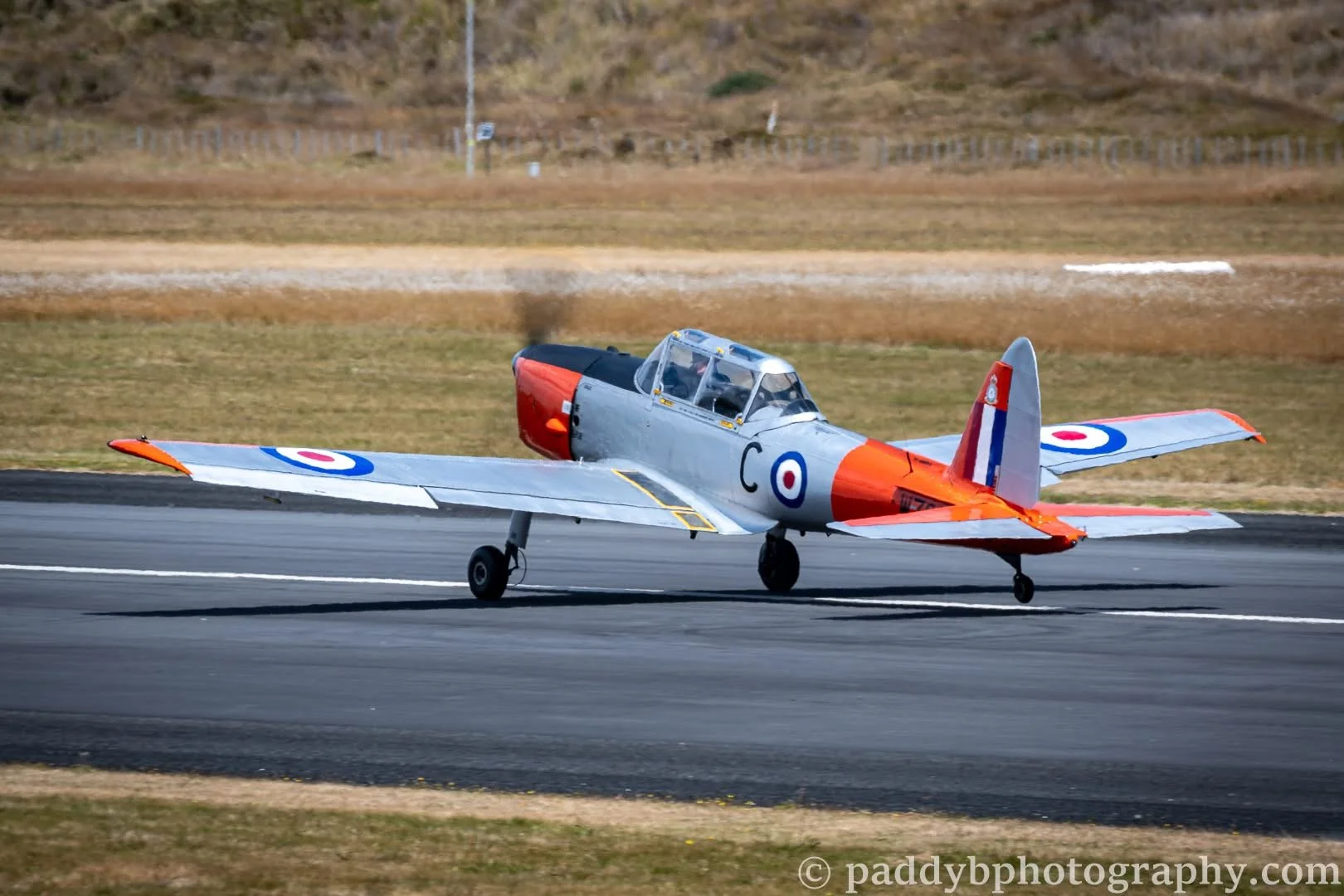
Ready to depart at Whanganui, January 2025.

DHC-1 WZ865 sharing some Ardmore ramp space with the NZ Warbirds DHC-2 Beaver.
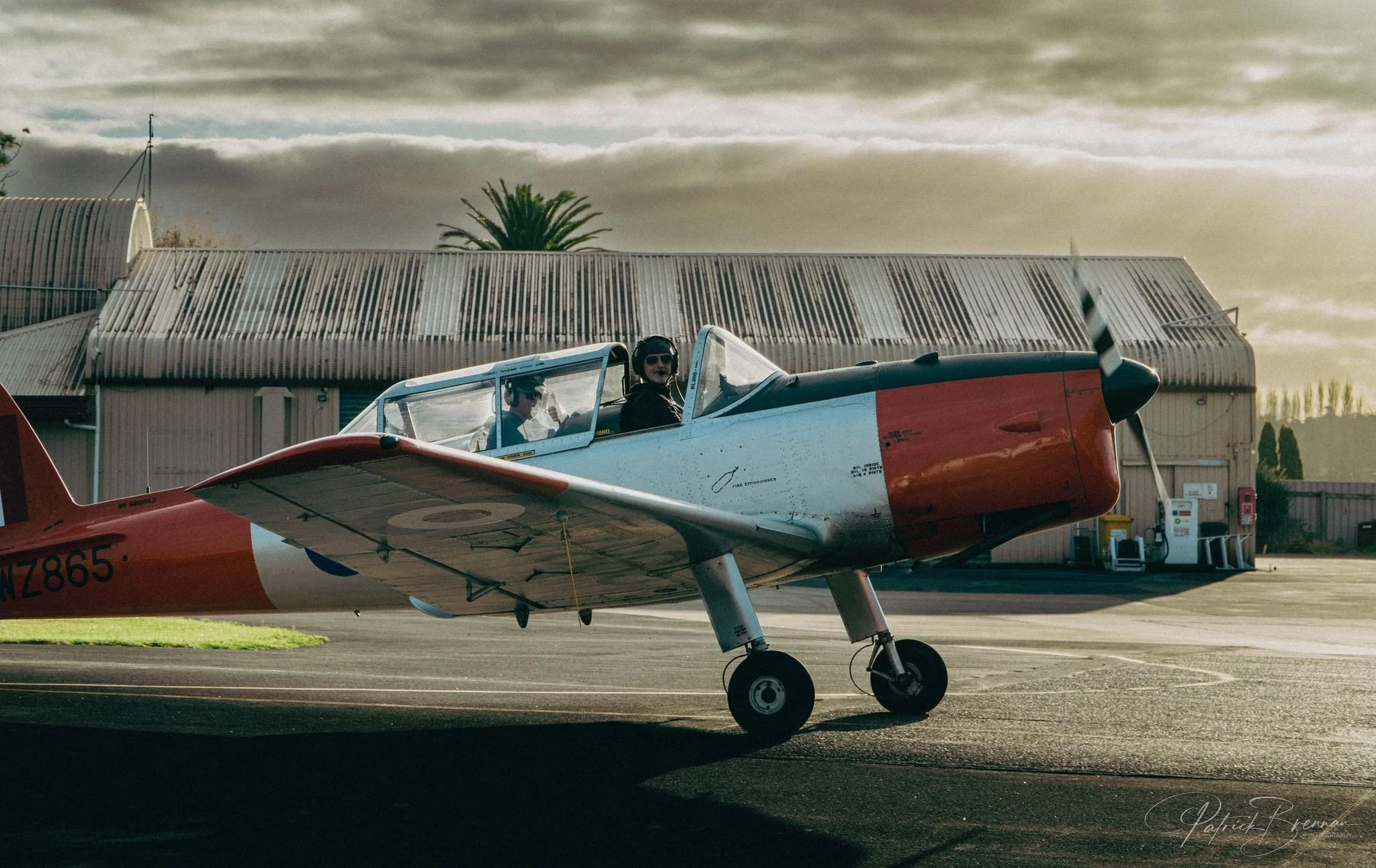
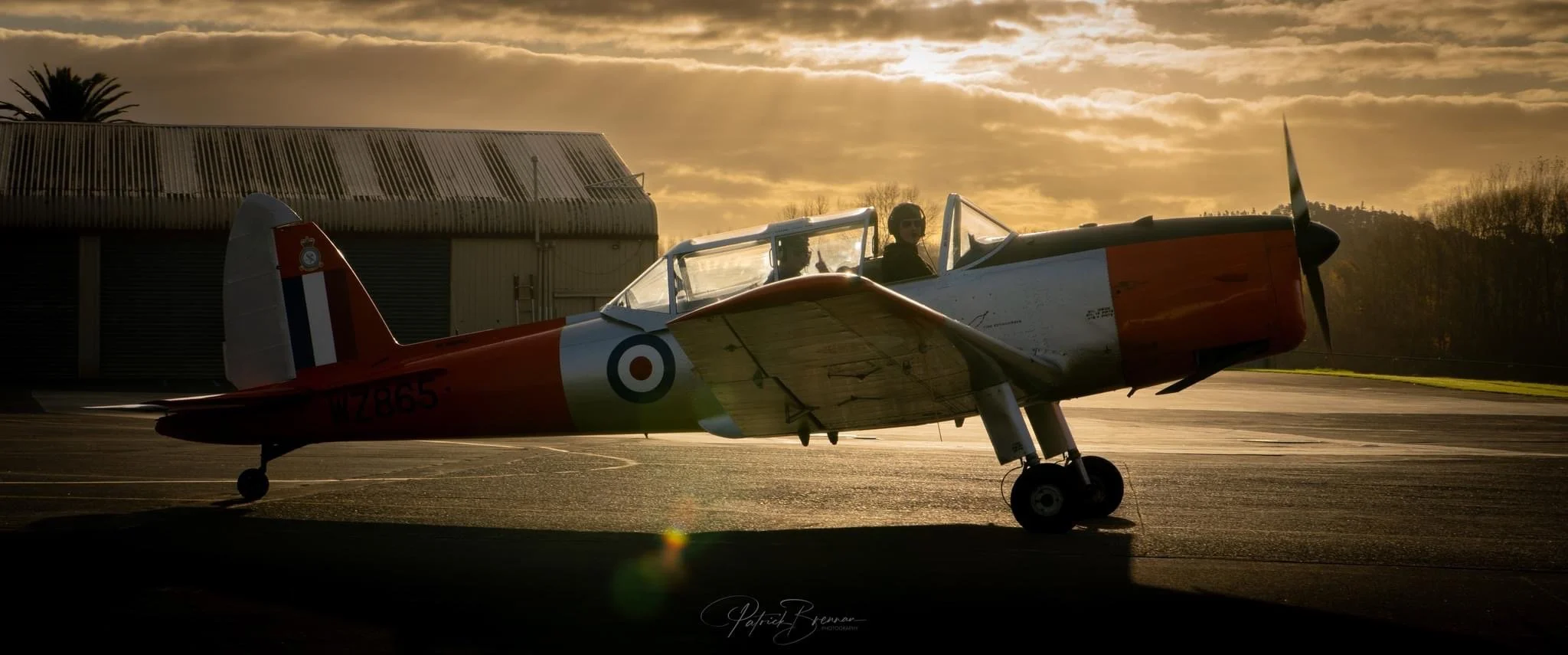
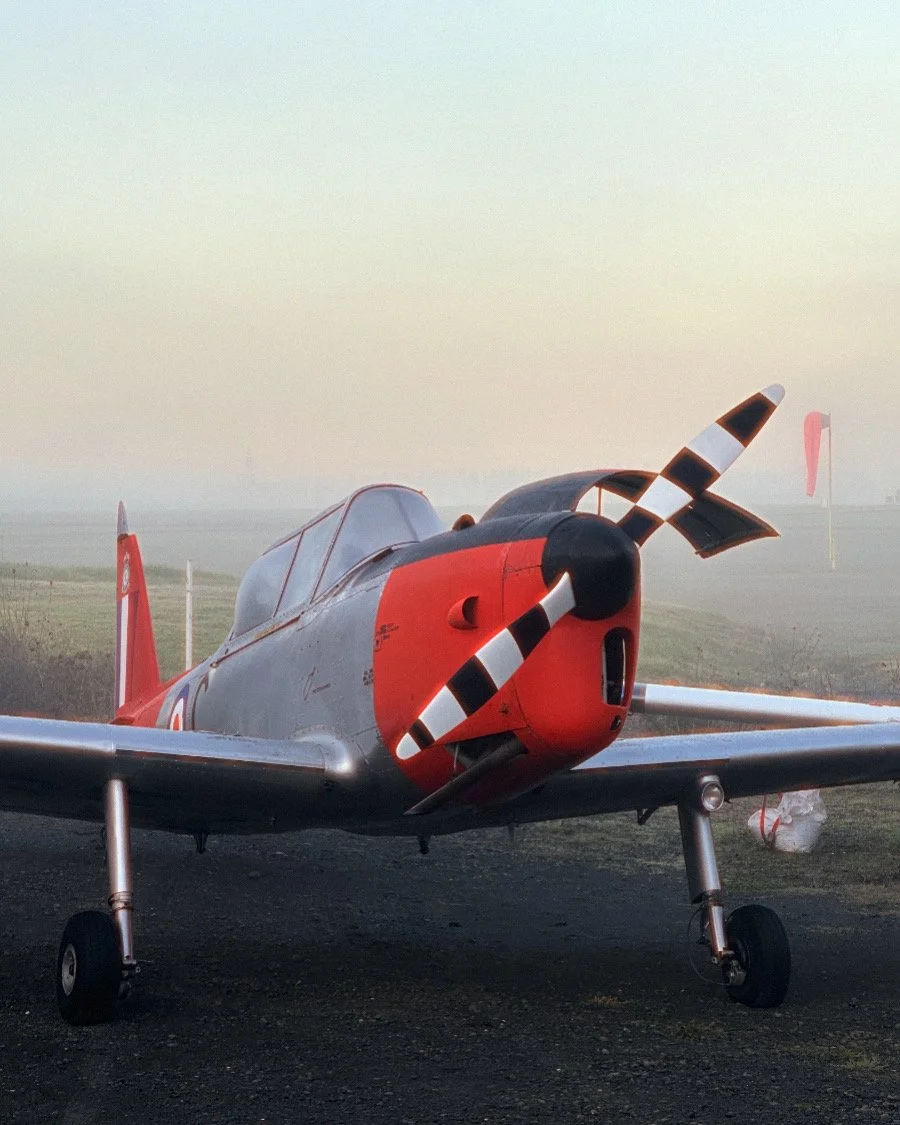

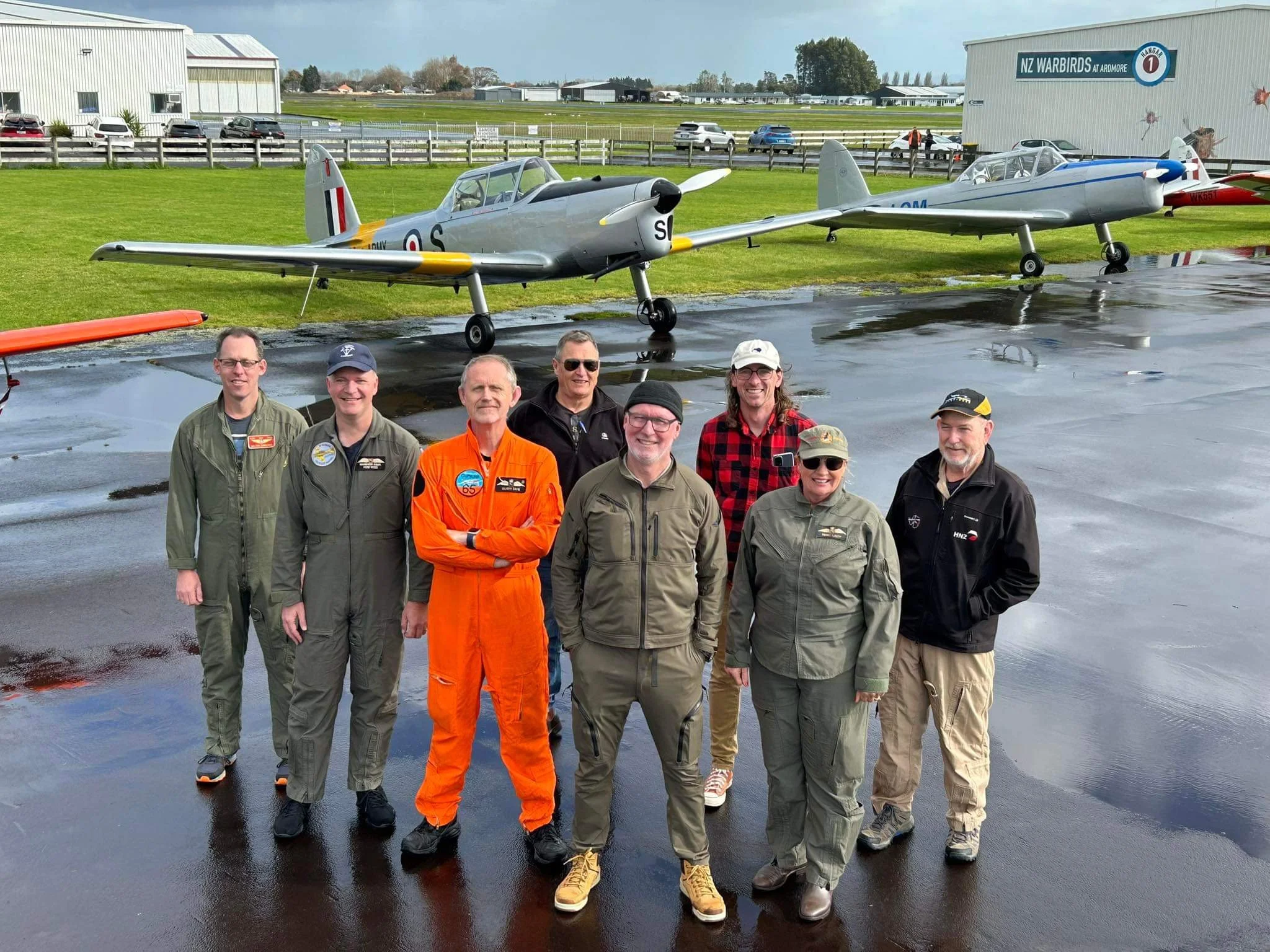
Celebrating the Chipmunk's 78th birthday with some formation flying at Ardmore. Can you spot Vaughn?
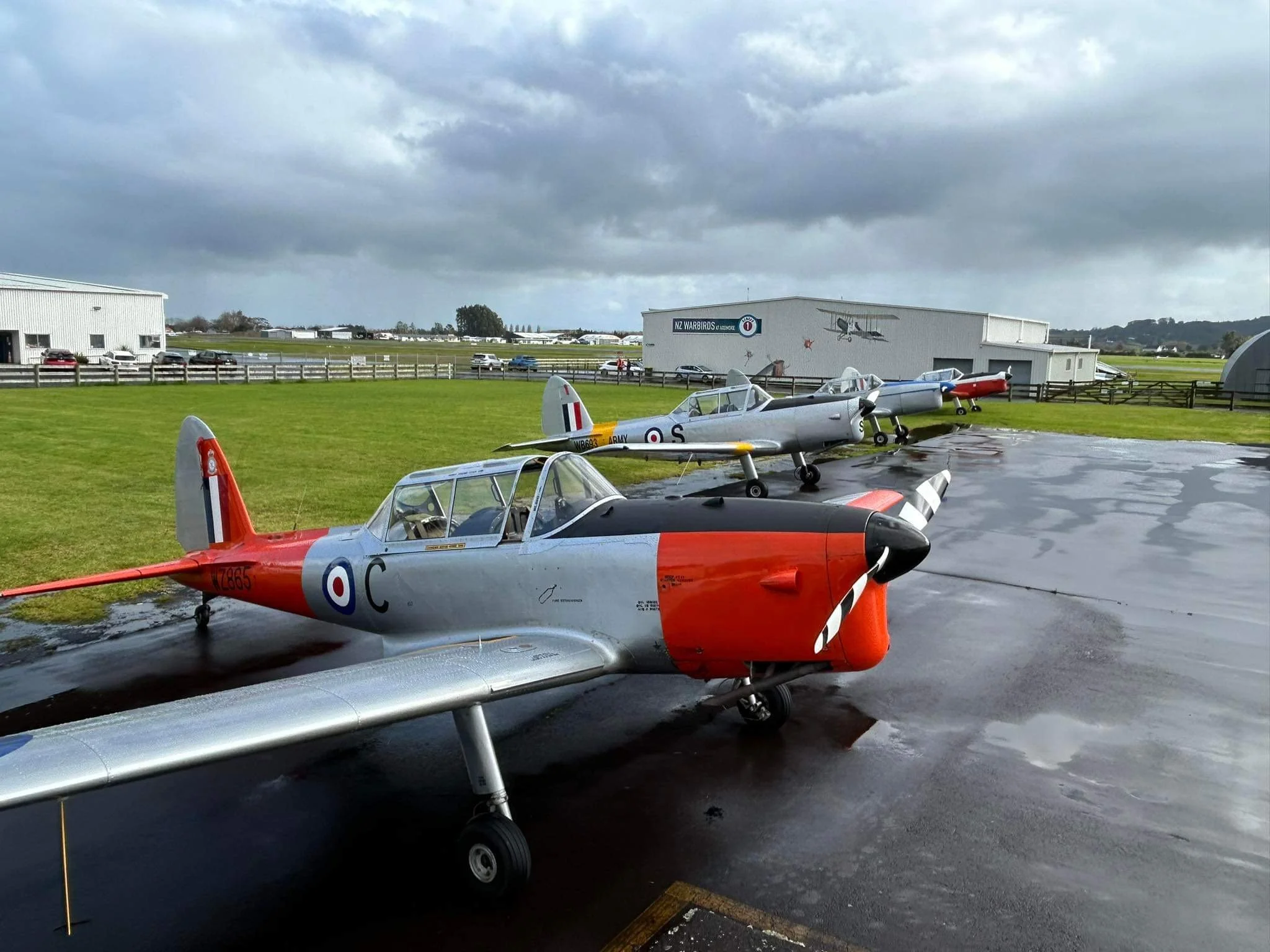
Chipmunk birthday lineup, Ardmore 2024.


Not all of the stencils on Chipmunk 65 are strictly original.

Up early to shoot a sequence for our upcoming documentary.
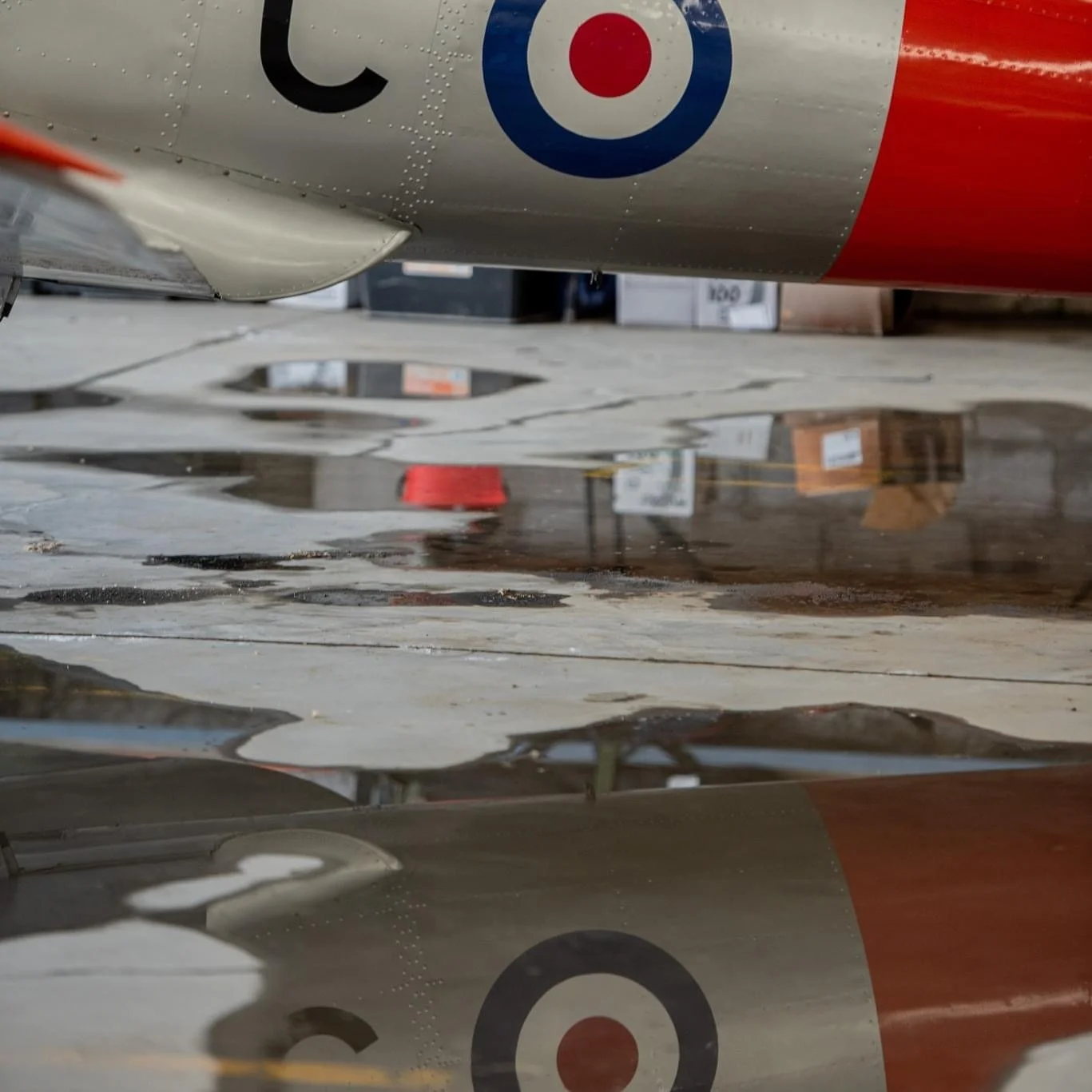
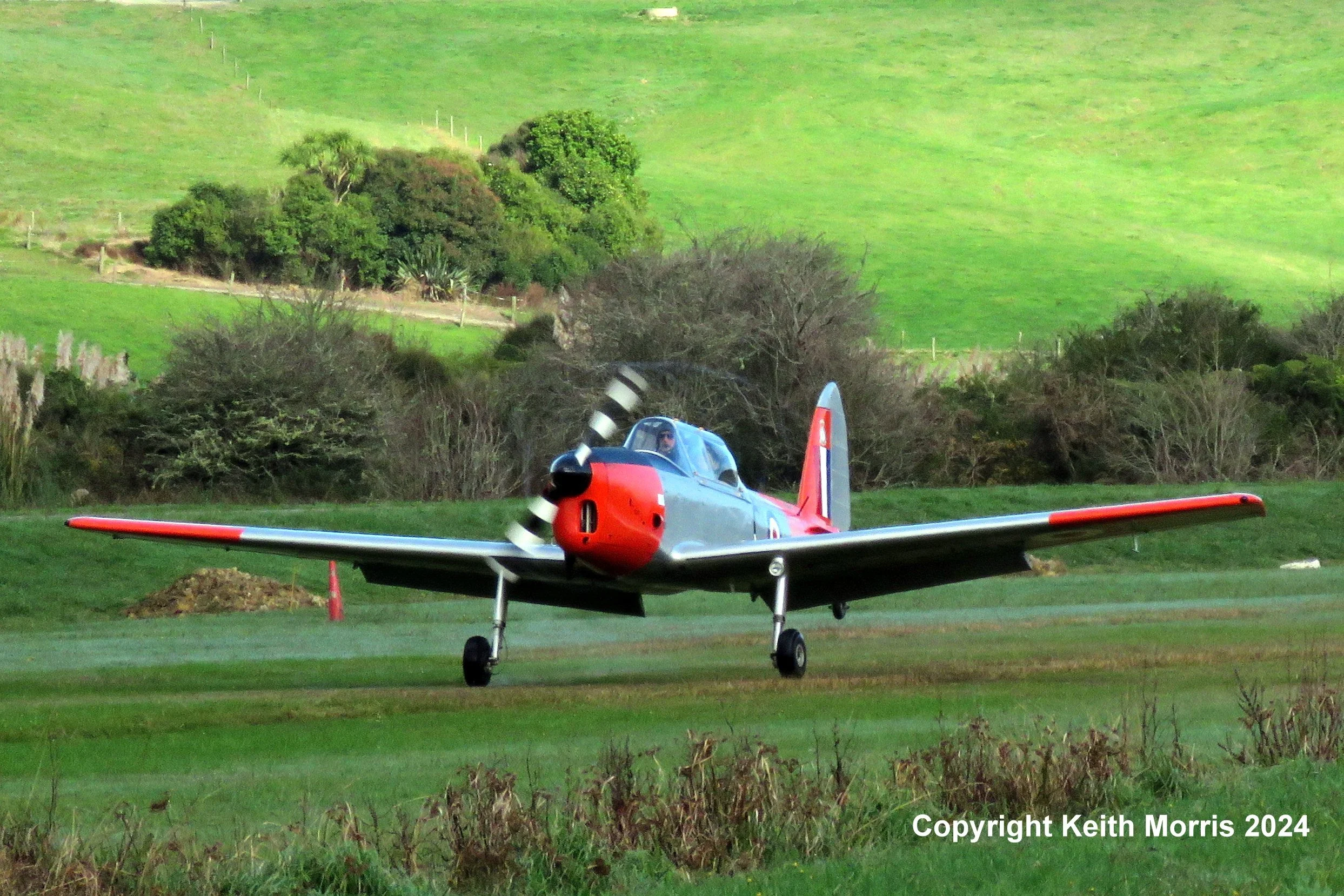
Landing at Kaipara Flats.

All the markings on WZ865 are stencilled using spraypaint and traditionally cut oilboard stencils - there's no vinyl lettering. Roundels and large markings are all masked and painted too.
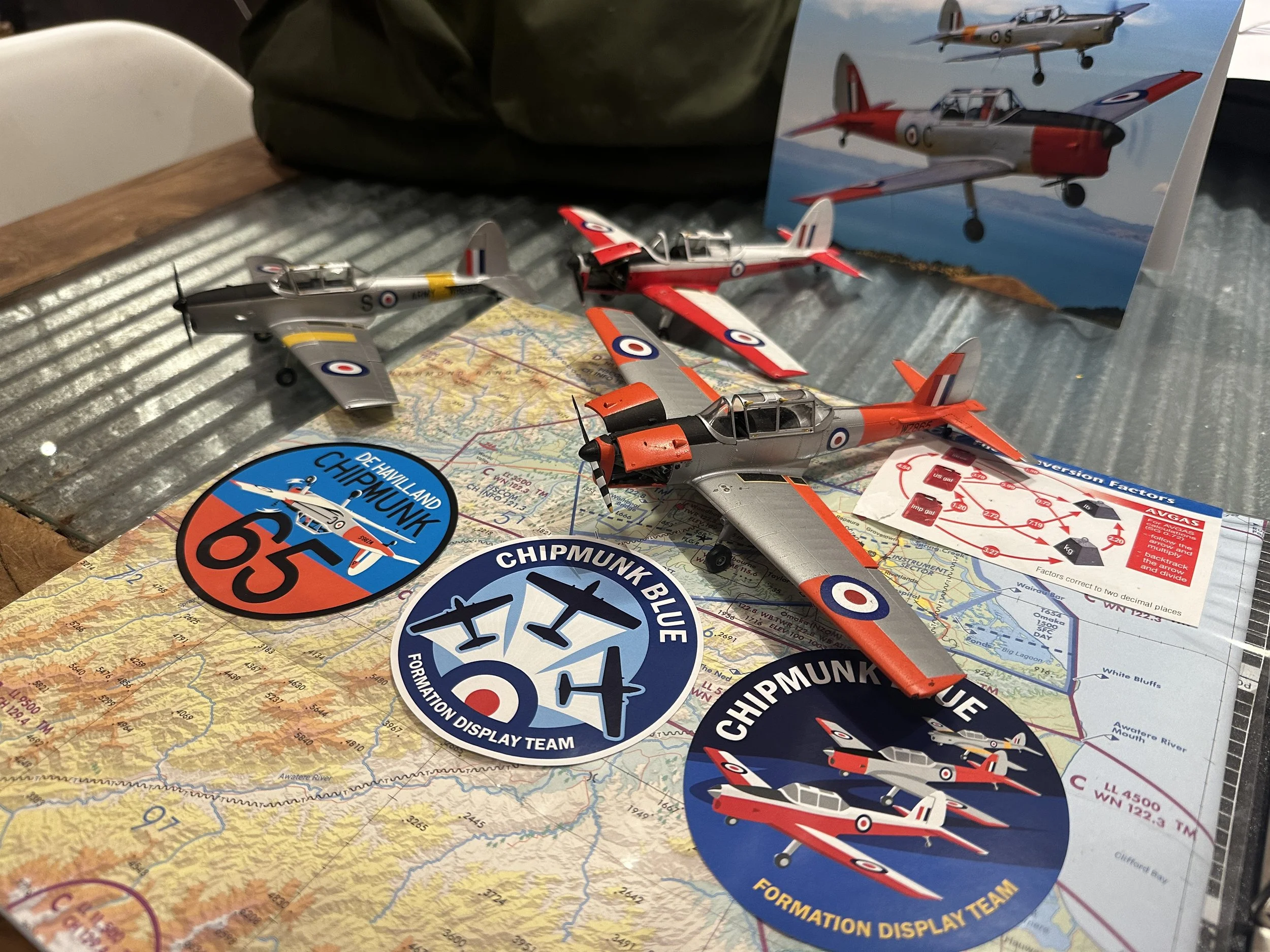
Chipmunk Blue models and stickers. We worked up a 3-ship display for the 2025 Ardmore airshow but lost one aircraft due to unserviceability.
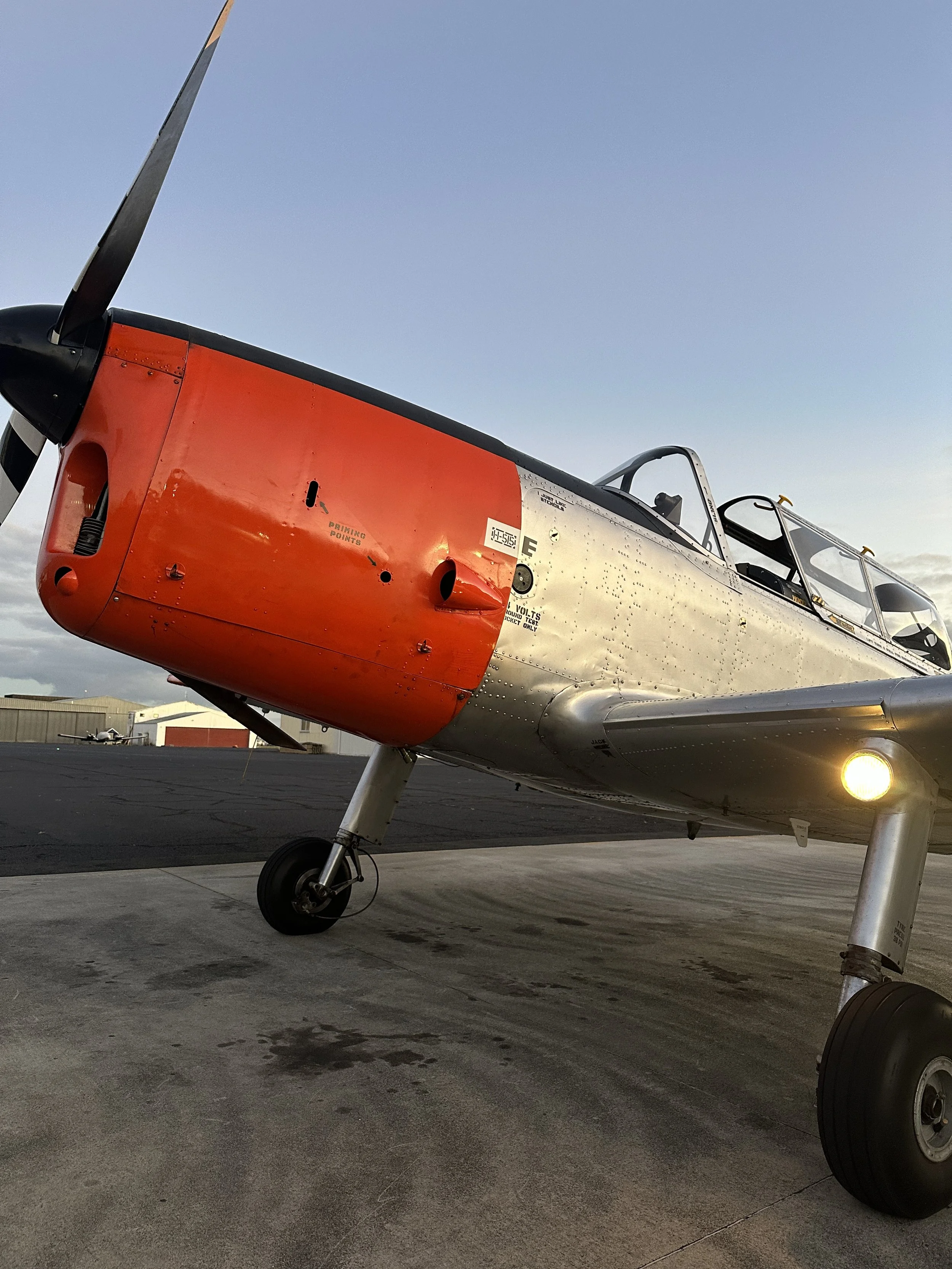
Up early for a refuel before a full day's flying at Ardmore. Scott made sure every light on the aircraft worked properly, including this taxi light and the very useful downward facing Morse signalling lamp.

Early arrival at Ardmore after a short hop from North Shore. Morning is THE best time to fly.
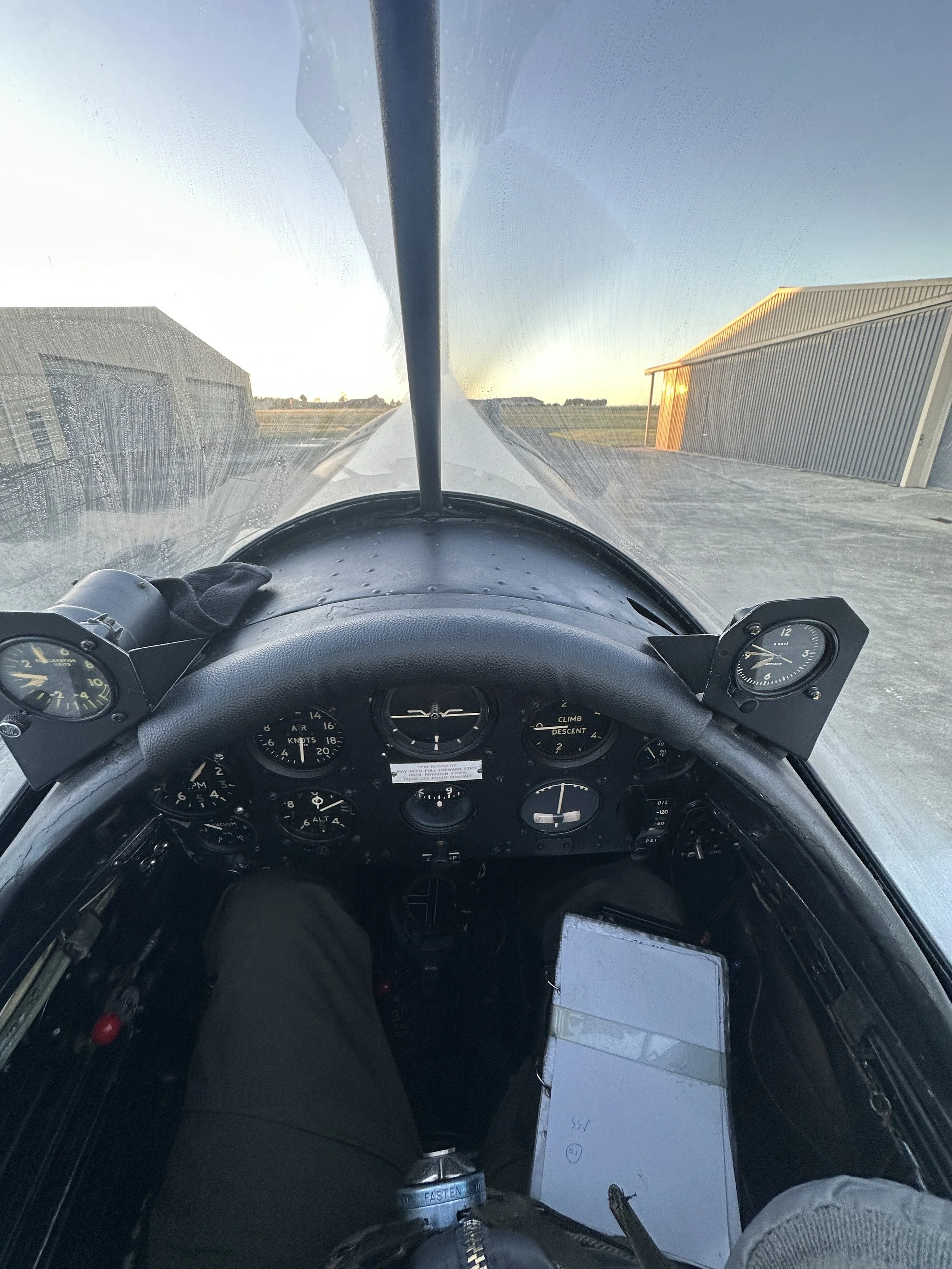
Warming up on a frosty North Shore morning.
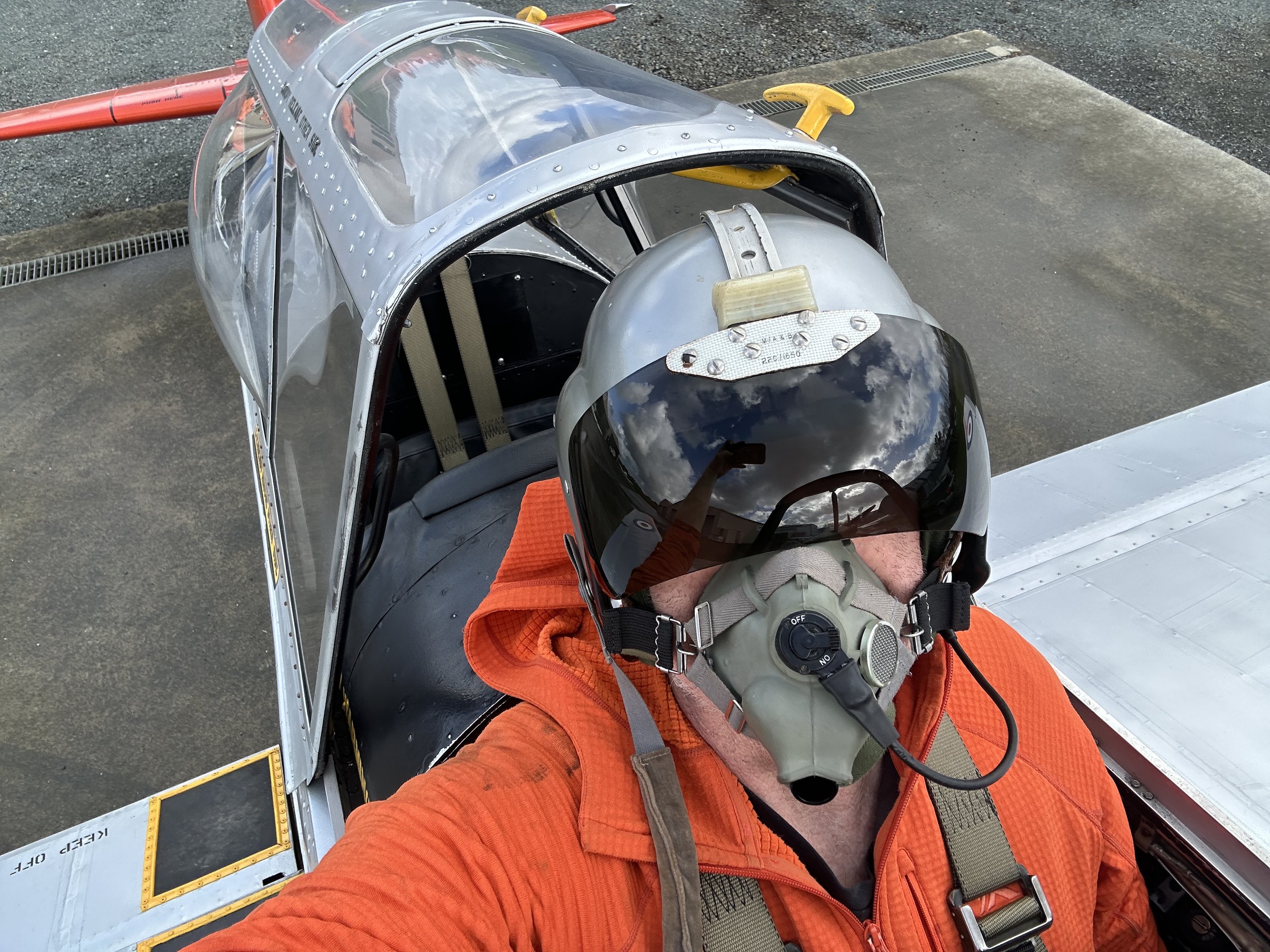
1960s Chipmunk pilot wear. 2 part helmet (inner and outer) with oxygen mask solely there for its microphone.

Chipmunk lineup at Warbirds Ardmore. There are usually 4 on the field.
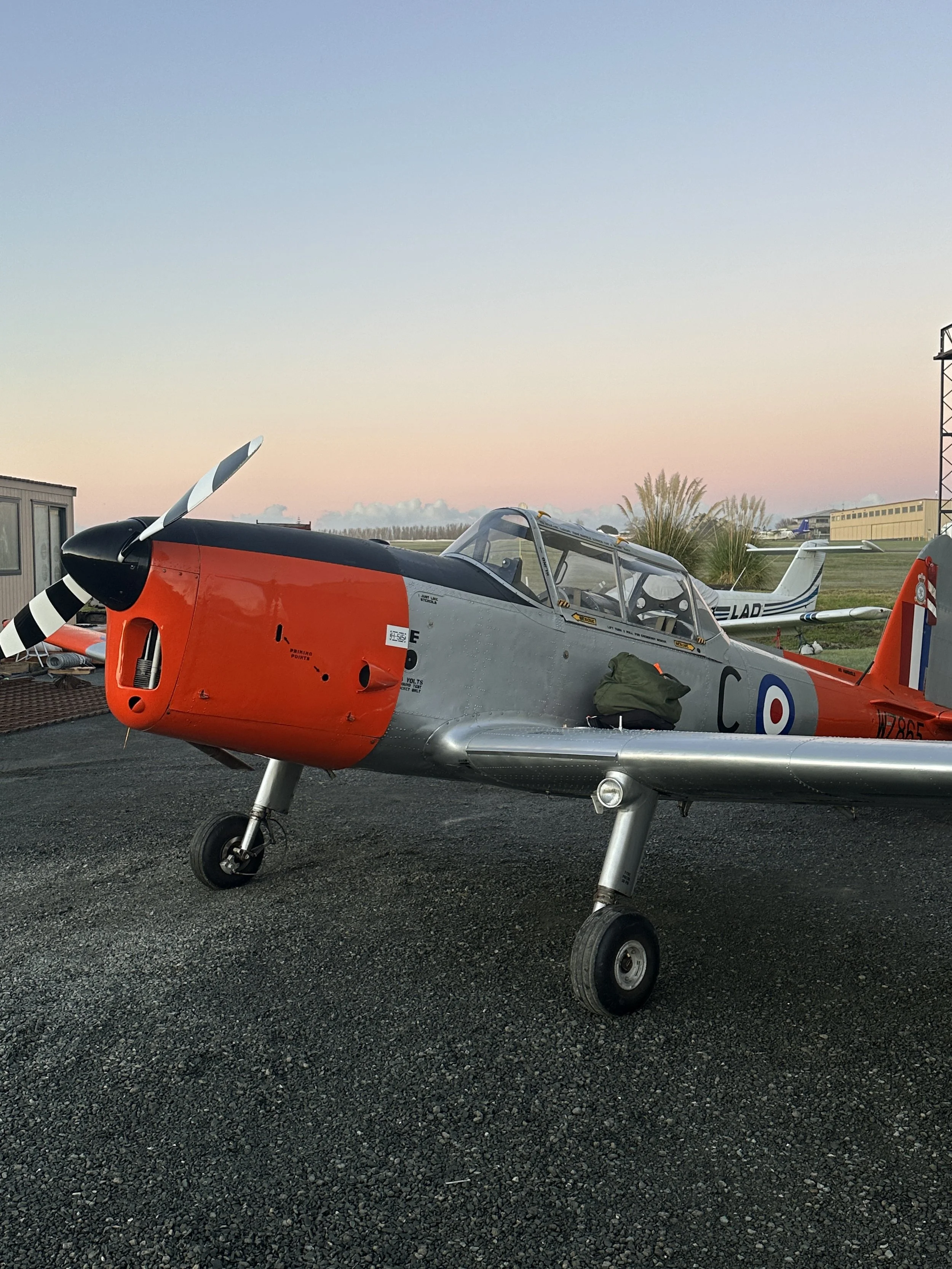
Ready to start on a winter's morning at North Shore.

When we were in Whanganui in January 2025 we were privileged to fly ex RAF Victor and Nimrod pilot Bill Macleod and reconnect him to WZ865, which he'd last flown in 1971.

Air Commodore Iain McCoubrey reunited with WZ865 at North Shore, 24 January 2025
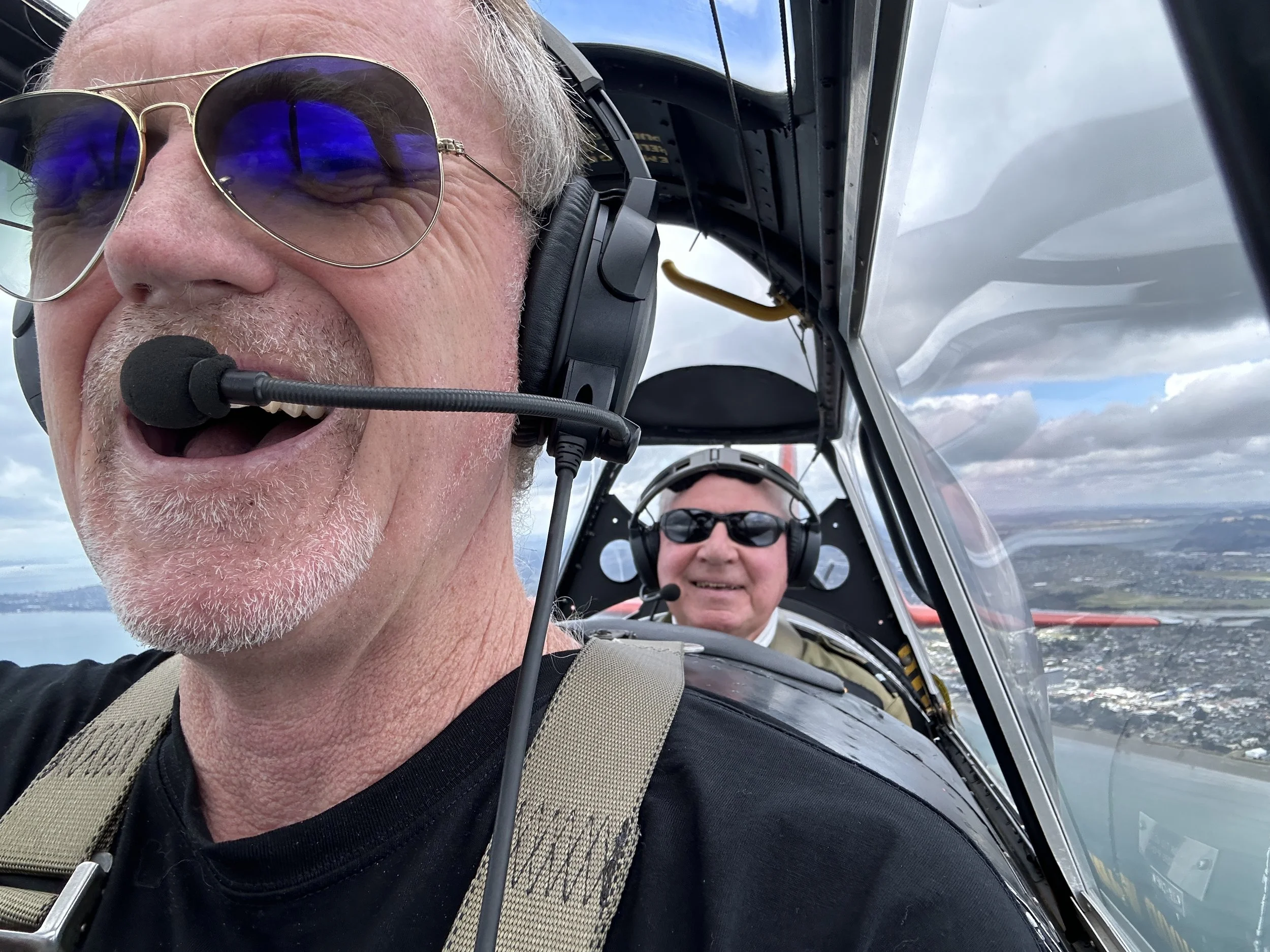
Iain wearing that Chipmunk grin

Iain in the 1960s as a university student - aircraft unknown but possibly WZ865

Recreating that 1960s pose in 2025
